Inside Jeju
The complete guide to Jeju travel

Jeju City Guide: All You Need to Know
Everything you need to know to have the best time in the island’s biggest city.
Written by Duncan Elder
Published on September 11, 2023

Jeju City is the heart of Jeju. Situated on the northernmost part of the island, the island’s first city is home to its airport, port and the vast majority of the population.
It’s very likely that you’ll spend at least some time in the City during your Jeju trip. This Jeju City guide will help you make the most of that time by highlighting the main areas of the city and showcasing plenty of the things to do in each area of Jeju City.
About Jeju City
Jeju City has 2 main areas, Shin (new) Jeju and Gu (old) Jeju. There are also several smaller areas within these two main areas, plus a few satellite towns a short drive away.
The city is by far the most popular part of the island, with 492,397 of the island’s 676,489 population living on the northern part of the island, many of whom are located in the city.
Both Jeju International Airport and Jeju Port are located on the edge of the city by the coast, meaning almost all travelers visiting the island with pass through.
Jeju City has 4 distinct seasons. The summer months between June and August are very hot with temperatures typically hitting the high 20s and low 30s for the whole season.
Winter is warmer than many places on the Korean mainland, including Seoul, with average temperatures in January, the coldest month, sitting between 6.1 and 3.7 degrees celsius. Although, the wind in some parts of the city can make it feel colder.
Coastal Gu Jeju
This is the area of Gu Jeju on the coast. It’s one of the most popular areas for tourists and has a good mix of hotels, food and drink, shopping and even some historical monuments.
The best thing is that all the areas mentioned below are within approximately a 1km square radius so are relatively easy to walk between.
Tapdong is the area on the coast itself. It’s home to a walking path along the coast that ends in a large open space with basketball nets and plenty of space to walk around. This area has one of the largest concentrations of hotels in the city, including Ocean Suites, The Palace Hotel, and the Hotel Regent Marine.
The area is home to plenty of restaurants including several lamb skewer restaurants, a large selection of hoe restaurants (a sliced raw fish set menu that I highly recommend), that you’ll find on the easternmost end of the walking path, D&D restaurant for a selection of Korean food, Michin Buok that sells Japanese cuisine, Assalam which serves Yemeni Cuisine, and plenty more.
Nightlife is sorted via Magpie Brewery Taphouse, which sells beers brewed locally on Jeju, cocktail bar the Chemist, and a large outdoor Pocha, a type of Korean drinking establishment that sells beer, soju, and anju, which is the word for food that you eat while drinking and typically includes anything fried or dried, as well as plenty of soups and more.
Other highlights of the area include a shop for Korean high-end soap brand Aesop, a large Olive Young shop where you can buy all your K-cosmetics, and the Arario Museum which showcases both Korean and international modern art.
Address: Jeju-do, Jeju-si, Geonib-dong 1444
Chilseong-ro Shopping Street
Travel a little further inland from Tapdong and you’ll hit Chilseong-ro shopping center. This is one of the island’s main shopping destin ations and includes Korean high-street brands like Spao, 8 Seconds and Beanpole, as well as global brands like Nike, Adidas, and Lacoste.
There’s also an underground mall which is home to a ton of smaller Korean (and some international) clothing brands that is well worth exploring. A few streets east of the shopping center is Jeju Black Pork Street, which has a large selection of restaurants selling (you guessed it) Jeju black pork barbecue.
Address: Jeju-do, Jeju-si, Ildo1dong 1296-5
Dongmun Market
Dongmun Market lies just southeast of Chilseong-ro shopping center. It’s the island’s largest permanent traditional market and sells a ton of stuff, from souvenirs to fresh produce and beyond. It’s also home to Dongmun Night Market, a set of food stalls selling a variety of street food type dishes from traditional Korean favorites to more experimental creations.
Address: Jeju-do, Jeju-si, Dongmun-ro 16
Jeju Sanjicheon
Jeju Sanjicheon is a river situated just south of the entrance to Dongmun Market and east of Chilseong-ro shopping center. It’s a nice place to walk and is home to several open grassy spaces you can look around.
You’ll find several interesting spots on the road lining the Sanjicheon.
- Brava Gelato sells homemade gelato made with ingredients from Jeju and beyond and includes interesting flavors such as Chamwhe (a kind of small Korean lemon), rice (actually my favorite), and salted basil.
- Arario Motel Gallery I and II are art galleries built in renovated motels.
- Sanjicheon Gallery is built into an old sauna and focuses on Jeju art
There’s also a seasonal light show that in 2023 runs until November and see the area lit up from 8 p.m. until 8.30 p.m. every day other than Monday.
Address: Jeju-do, Jeju-si, Ildo1dong 1146-22
Jeju Mokgwana
Jeju Mokgwana is around 600 meters west of Sanjicheon along the main road. This is the old government office from the Tamna period until the Joseon dynasty and its history goes until pre-1434 which is when the original buildings were burnt down.
The current version was restored in 2002 and it contains many of the features of traditional Korean buildings such as overhanging roofs and large sparse outdoor spaces. Take a walk around for an interesting look at Jeju’s history.
Address: Jeju-do, Jeju-si, Gwandeok-ro 25
Sarabong Peak
Jeju is home to over 360 oreum, volcanic hills notable for their relatively low yet steep height when compared to the surrounding area. These hills are super fun to climb and due to being relatively low, are perfect for time-short travelers as you can do them in a few hours (or under).
Sarabong Peak is an oreum located on the coast in Jeju City. The walk to the summit, which is 146.5 meters above sea level, is covered in forest and when you get to the top you get views out over the sea. The path also connects to Byeoldobong Peak, a neighboring oreum which is 135.6 meters above sea level. Both paths are well-defined and while steep in places are relatively approachable.
You can spend anything from under an hour walking up and down Sarabong to a few hours exploring the paths across the two hills. The walk from Tapodong, mentioned above, is around 2.6km along Jeju Olle Trail 18, one of the coastal walking paths that circumnavigate the island, or just under 15 minutes in a taxi.
Address: Jeju-do, Jeju-si, Geonibdong 387-1
Jeju City Hall
Jeju City Hall is around two kilometers south of coastal Jeju City. It’s the area built around the current government offices and is home to Gu Jeju’s main nightlife.
It has a student vibe with plenty of places to get food and drinks in the evenings. You’ll also find plenty of norebangs, which are Korean singing rooms that you can rent out and sing in while drinking.
Address: Jeju-do, Jeju-si, Gwangyang-9-gil 10
Sinsan Park
Sinsan Park is around 1.5km from City Hall. It has several short walking paths and it’s well lit so can be a fun place to relax in the day or evening. It’s also notable for being one of the best places to see Jeju’s Cherry Blossom if you’re lucky enough to visit the island during this season.
Address: Jeju-do, Jeju-si, Ildo-2-dong 830
Jeju Bus Terminal
Jeju Bus Terminal is situated around 1.7 km from Jeju City Hall on the way towards Shin Jeju. From here you can get buses to any place in the city and beyond.
Address: Jeju-do, Jeju-si, Seogwang-ro 174
Shin Jeju is the part of Jeju City with the most city-like feel. Here you’ll find plenty of shops, restaurants, tall buildings and more. Unlike Tapdong and Chilseong-ro which is all super walkable, some of the below sights are a little more spread out and you may need a bus or taxi to get from one to the other.
Nuwemaru Shopping Street
This is an area in the center of Shin Jeju with plenty of shops, bars and restaurants. The street itself is pedestrianized making it easy to go for a walk and you’ll plenty plenty of restaurants and drinking establishments in this area.
Most of the shops are on a main road parallel to the pedestrianized street. This area is a short walk from some of Jeju’s biggest hotels including Lotte City Hotel and Maison Glad which has a seasonal outdoor pool. You’ll also find both the Lotte and the Shilla Duty-Free Stores nearby, which you can shop at if you have an international ticket.
Address: Jeju-do, Jeju-si, Yeon-dong 273
Jeju Dream Tower
At 218.7 meters high, Jeju Dream Tower is by far Jeju’s biggest building. The majority of the floors are taken up by the Grand Hyatt Hotel Jeju, but there is plenty in the building to entertain even people who aren’t staying in the hotel itself.
The 38th floor is home to eateries the Steak House, which sells steak and seafood, cafe Lounge 38, and Korean drinking bar Pocha. All three locations offer great service, tasty food and drink, and some of the best views of the city and surrounding island.
Lower down on Level 2 and 3 is a shopping area that focuses on both high-street fashion and Korean designers. Keep an eye out for the Deli bakery for some tasty pastries and chocolate. You’ll also find Italian, Chinese, Japanese and Korean food on the lower floors.
Address: Jeju-do, Jeju-si, Noyeon-ro 12
Halla Arboretum
Halla Arboretum is a park that goes through forest and up an oreum on the edge of Shin Jeju. It’s a beautiful place to walk if you’re staying in the city and you can get some beautiful views from the top of the hill. The area is also home to a night market which sells a mixture of souvenirs and delicious food from within the forest setting.
Other highlights of this area include Nexon Computer Museum, which showcases computers from throughout history and includes plenty of interactive games and exhibits you can try, and Jeju Museum of Art, Jeju’s largest art museum that often has international exhibits to complement the domestic and Jeju art. It’s around 3 km north but easy to get to if you have a car or taxi.
Address: Jeju-do, Jeju-si, Sumokwongil 72
Yongdam is a coastal area between Gu Jeju and Shin Jeju that stretches past the airport. It’s notable for being the home of Dragon Head Rock , a rock formation that’s said to be in the form of a (you guessed it) dragon.
The road starts at the Hancheol River which has a walkable suspension bridge and beautiful views of the coastal cliff. It then stretches along the coast and it’s a nice walking route that highlights the black, volcanic rock part of Jeju’s coast.
If you make it all the way to the end of the road, which is around 5.5km, you’l end up at Dodubong Oreum. There are also plenty of restaurants and cafes lining the road including plenty selling hoe raw fish set meals.
Dragonhead Rock Address: Jeju-do, Jeju-si, Yongduam-gil 15
Continue your trip
34 fun things to do in jeju island.
Discover Jeju with our list of the best things to do, see, and experience.
The complete guide to Jeju Island
Everything you need to know about Jeju, including where to stay and what to do.
Jeju's best beaches to relax in the sun
There are beaches all around Jeju. Here are some of the best.
Where to next?
Search our article library for more Jeju trip inspiration.
Duncan Elder
The complete guide to Jeju travel.
Jeju island guide
© 2024 Inside Jeju
- 1.1 Orientation
- 2.1 By plane
- 2.3 By boat
- 3.2 On foot
- 4.1 Folk villages
- 4.2 Other attractions
- 4.3 Natural landscapes
- 4.4 Landmarks
- 8.2 Mid-range
- 8.3 Splurge
- 10.1 Budget
- 10.2 Mid-range
- 10.4 Camping
- 12 Stay safe
Jeju City (제주시), also known as Jeju-Si , is the largest and capital city of Jeju Special Self-Governing Province, South Korea , taking up the northern district of the island.
Understand [ edit ]
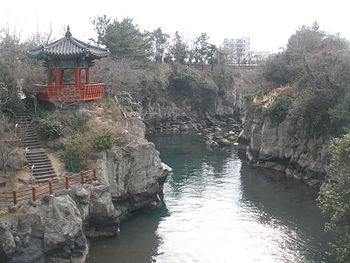
Predominantly the administrative and population capital of Jeju Island, Jeju City is also likely the first and final stop for tourists, playing host to Jeju International Airport as well as the major domestic ferry terminal.
The city is fairly large yet compact, located on the north side of the island and sandwiched between Mt Halla and the coast.
Orientation [ edit ]

The city consists of the old downtown ( Jungangno 중앙로) to the east and the surrounding areas of Tapdong (답동, a port district north of Jungangno , also romanised as Topdong ) and Yongdam (romanised differently on almost every sign: if it helps, there's nowhere else on Jeju with a similar name, the rock seems to be spelled Yongduam—영두암—and the surrounding suburb Yongdam—용담 -- on Naver). The inter city bus terminal lies just south of Jungangno.
Tucked slightly inland to the southwest lies Shin-Jeju: Jeju's new high rise commercial quarter and where the modern Korean highrise apartments reside. A humongous traffic intersection in Shin-Jeju acts as a western hub, feeding cars and buses across the entire west side of the island across one of three major highways: one coastal, one interior and the alpine 1100 metre road.
Finally, on the coast both north of Shin-Jeju and west of Jungangno lies Jeju International Airport.
Get in [ edit ]
By plane [ edit ], by bus [ edit ].
Inter-city buses and the Airport Limousine (inter-city bus #600) travel frequently between Seogwipo on the south side of Jeju for ₩3000 or as low as ₩1000 from nearby rural townships. Intercity buses will terminate at the Bus Terminal, but all arriving via the west side of the island will pass by the stop outside Halla Medical Center.
By boat [ edit ]
Daily ferries go between Jeju and the mainland. See the main Jeju page.
Get around [ edit ]

Jeju City has an inner-city ( shin-nae ) bus system that is equally as efficient as it is poorly marked for tourists. Bus shelters have lists of stops in Korean only, but the stop names are mostly fairly non-descript and require you to have local knowledge or a map to make any sense out of them. Bus maps are not available from tourism centers, but English station lists can be obtained, the relevant information from which is reproduced below:
- Jeju International Airport - 36, 37, 100, 200, 300, 500
- Jeju Ferry Terminal - 92
- Inter-city Bus Terminal - 26, 31, 63, 100, 200, 300, 502
- Halla Arboretum - 63, 300
- National Jeju Museum - 100
- Culture and Art Center - 300
- Tapdong - 92
- Yongdam Junction - 36, 37, 63, 300, 500
- Fifth-day Folk Market - 36, 37, 63
- Jungangno - 36, 37, 92, 100, 500
- Dongmun Market - 100, 300
- Shin-jeju Junction - 26, 31, 36, 37, 92, 100, 200, 300, 500, 502
- Halla Hospital (Medical Center) - 26, 31, 37, 92, 200, 300, 500, 502
If this system was not frustrating enough as it is, you may have to transfer to go most places and the announcements tend to be quieter than on the mainland. Listen out for this when having to transfer between buses. Buses cost around ₩1,000.
On foot [ edit ]
Nothing in downtown Jeju is more than approximately 2 km from anywhere else so whilst not convenient, walking is quite feasible, and sometimes even faster. This includes the areas of Yongdam, Tapdong, Jungangno and the inter-city bus terminal.
See [ edit ]

- 33.5163 126.5121 1 Yongduam Rock and Yongyeon Pond ( 용두암 ), Yongdam ( Take the #36, #37, #63, #300 or #500 to Yongdam Junction and walk, or just wander over from downtown or Tapdong. ). A large piece of volcanic rock said to be the solidified remains of Yimugi, a water dragon. Whilst the legends behind just how he got himself turned to stone in that position vary, it hasn't diminshed his influence, as the surrounding suburb is called Yongdam by extension: literally "Dragon's Head Rock". Just about 100m to the east one can find the lesser known, but probably prettier Yongyeon Pond, a picturesque canyon straddling a pleasantly turquoise pond with a pavilion perched overhead. Again, a dragon features heavily in the legendary history of this site, but simply that it visited. A festival is held here in May. If all this talk of dragons is making you want to sit on a horse for some reason, then there is an old guy out the front who aggressively and inexplicably offers this service for a fee. Both sites are lit up spectacularly at night. Free .
- [dead link] Jeju Old Government Offices ( Jeju mokkwana (제주목관아) ) ( In downtown, follow the signs to the wooden gate ), ☏ +82 64-728-8665 . A comparably nice set of Joseon-era historical buildings in central downtown Jeju City. What's unusual is the existence of a nicely landscaped square pond in the complex, and its tumultuous history of getting built in lieu of a well, destroyed due to an irrational hatred of noisy frogs and ultimately rebuilt. ₩1500 . ( updated May 2019 )
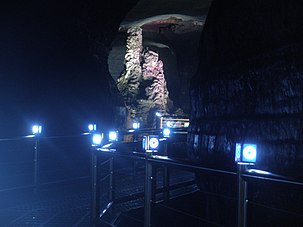
- 33.497477 126.452379 2 Iho Tewoo Beach ( 이호테우 해변 ). is close to Jeju Airport, and it is enough distance to ride a bicycle. There are white and red pony lighthouses, the slope of the beach is gentle, and there is a pine forest nearby, so it is a good place to enjoy the scenery and take a walk. ( updated Nov 2022 )
- 33.452043 126.407141 3 Hangpaduri Hangmong (Anti-Mongolian) Historical Site ( 제주 항파두리 항몽 유적 ), 50, Hangpaduri-ro, Aewol-eup , ☏ +82-2-1330 . A special defence unit of the Goryeo kingdom rebelled against the invading Mongolian army in 1270, and eventually retreated to Jeju Island for a last stand. They held off the Mongolian forces here for 2 years before they were all killed at a fortress built here. Free . ( updated Nov 2022 )
- Loveland ( 제주 러브랜드 ), 680-26, Yeon-dong ( on the road between Jeju City and Seogwipo, ₩1,500 by intercity bus, about ₩10,000 by taxi. ). Jeju's most eccentric and internationally infamous attraction and almost a reason in itself to visit Jeju, this bizarre sculpture park was created by graduates of Seoul's Hongik University. Few of the (over 140) exhibits are generally shocking, and it makes for some interesting holiday snaps that you won't want to show your parents. Although you will likely see some Korean families in the park, this is one where you should definitely leave the children at home or in the attached playground. Has a sex shop attached, naturally. Elsewhere on Jeju you will find phallic representations are an ancient symbol of the island. Amusingly, the Chinese government prevented the opening of an imitation loveland in Chongqing. ₩15,000 . ( updated Sep 2023 )
- Gold Cave ( 화암동굴 ), 2487 Hyeopjae-ri, Hallim-eup (Hyeopjae biyangdo-gil, Hallim-eup) , ☏ +82 64-796-0001-4 . The gold cave is a rare lava tube that remains its original shape. It's blocked off from the public. ( updated Nov 2022 )
- Hallim Park ( 한림공원 ). Take a stroll through a 27,000 m² botanical garden including 2 caves. The park is divided into 16 gardens, including a tropical garden, garden of Washington palms, a garden of foliage plants, and a bonsai gardens with bonsai trees that are over 150 years old. Also has a Folk Village. ( updated Nov 2022 )
- Bijarim Forest ( 비자림 ), 3164-1, Pyeingdae-ri, Gujwa-eup , ☏ +82 64 783-3857 . If the purpose of your travel is to recharge your tired body, Bijarim will more than serve your needs. It is the first forest bathing park in Jeju Island, and the largest of one species of tree in the world. In the center of the forest stands a Japanese Torreya tree that is more than 800 years old, and known to be the oldest tree on Jeju. One can feel the energy of time this ancestral tree, which reaches 25 meters in height and has a perimeter of 6 meters. there are two walking paths in Bijarim : one takes two or three hours and a short trail takes about 30 minutes. if time allows, it is recommended that you slowly walk the longer course and enjoy the scenery. ( updated Nov 2022 )
- Bangae Oreum ( 방애오름 ), Sahn 45, Gyrae-ri, Jocheon-eup, (Bijarim-ro, Jocheon-eup) , ☏ +82 64 710-6072 . Bangae Oreum, there are four peaks in the west and southeast while it is flat in the south. There is grassland in the crater of the oreum. ( updated Nov 2022 )
- Haenyeo Museum ( 제주 해녀 박물관 ), 3204-1 Hado-ri Gujwa-eup . Museum dedicated to the Haenyeo ( female divers ). ₩1,100 . ( updated Nov 2022 )
- Manjanggul Lava-tube ( 만장굴 ) ( Jeju North Coast ), ☏ +82 64 710-7908 . A 7 km deep cave, of which only a 1 km part can be accessed by the public. The tube is up to 23 m high and has been created by lava streams running through. Bring a jacket, since it is fairly cold and water drops from the ceiling. The lava-tubes can be reached by taking the coastal bus from Jeju, then walking the 2.5 km from the bus station. It's possible to hitchhike as most cars on the road from the bus station will also be heading to the lava tubes. One of Jeju's three UNESCO World Natural Heritage rated attractions. ₩2,000 . ( updated Nov 2022 )
- Gimnyeong Snake Cave ( 김녕사굴 ), Sahn 7, Gimnyeong-ri, Gujwa-Eup (Gimnteong-gil, Gujwa-eup) . The Gimnyeong Snake cave is a 700-meter-long S-shaped lava tube. It is also called snake cave for its internal shape. The entrance of the cave bulges like a head of a snake and it becomes thin as you go deeper into the cave. ( updated Nov 2022 )
Folk villages [ edit ]
- 33.50671 126.53138 6 Folklore and Natural History Museum ( 제주 민속자연사박물관 ). The museum is divided into four exhibition halls: natural history, folklore, special resources, and an audio-visual room. It contains natural history of the island as well as relics, animals and plants that are found around the island. The stuffed animals are popular among children.
Other attractions [ edit ]
- Lava tubes and other volcanic sights . Jeju Volcanic Island and Lava Tubes is a UNESCO World Heritage site in the "nature" category. Mount Halla (Hallasan) dominating the island is a dormant volcano and there are underground caves with lava tubes to explore on Geomeunoreum. Seongsan Ilchulbong is a tuff cone crater in Seogwipo. All three are very popular attractions and accessible.
Natural landscapes [ edit ]

Landmarks [ edit ]
- 33.4512 126.4878 8 Mysterious Road ( 신비의 도로 ). Called the Mysterious Road or the Goblin Road, this is a strange place where if you park your car on a downhill road, the car that has to go down does not go down, but rather steps back toward the uphill. In fact, the side where the uphill road is visible is a downhill road with a slope of about 3 degrees, so it seems to be going up by a simple optical illusion. Due to this phenomenon, Dokkaebi Road has become a tourist attraction due to word of mouth, and various safety facilities are being added (as of Oct 2022) to prevent accidents caused by it, and a tourist park is expected to be created soon.
Do [ edit ]

- Glass Castle ( Yuri wi seong (유리의성) ), 3135-1 Jeoji-ri, Hangyeong-myeon ( inner western portion of the island; take an inter-city bus to Hallim and a taxi from there ). One of Jeju's two theme parks specialising in glass sculptures. Also offers an optional hands-on studio experience where visitors can craft their own works. ₩9,000 plus studio fees .
- Kimyoung Maze , San16 Gimyong-ri Ggujwa-up ( about 500 m down the road from the Manjanggul lava-tube cave ). A Jeju-shaped hedge maze which is interestingly complex and fun to walk through. The hedges are evergreen so it runs all year round. The maze claims fewer than 5% of visitors complete it in under 5 minutes, and the layout tends not to favor blind-luck too heavily so try timing yourself. ₩3,300 discounts off-peak .
- Jeongwol Daeboreum Fire Festival , Saebyeol Oreum area on Route 95, Bongseong-ri, Aewol-eup, Bukjeju-gun ( take a 50-minute bus ride from Jeju City Bus Terminal ). The Jeongwol Daeboreum Fire Festival originates from the traditional harvesting of the grasses found in the local domestic farm animal pastures, which were annually set in fire each winter by the villagers as a way to exterminate harmful insects. It has been held annually since 1997. It is held during the holiday of Daeboreum (which is the 15th day of the first lunar month of the year, typically February). It gets extremely busy directly after the festival finishes (19:00-20:00), so it's sometimes worth staying around for a beer or a meal for an hour or two until the worst of the traffic has gone.
- Halla Arboretum ( Halla sumokwon (한라수목원) ) ( Take the #63 or #300 up to the carpark, or walk up the hill from Shin-jeju. Alternately, there is a rear entrance up the hill south of KC TV in the carpark of the Korean Military HQ. ). Take a stroll through some botanical gardens. This is actually one of the nicest arboretums in all of South Korea, as it is both well-established and located up on the lower flanks of Mt Halla at the back of Jeju city. The gardens wind themselves over the foothills, giving tantalising views of the coast and Mt Halla through the trees. The ~2km walk from the arboretum to the rear entrance at the military complex is also pleasant and follows the southern limits of Jeju City through a rather atmospheric pine forest. Free .
Work [ edit ]
Buy [ edit ].
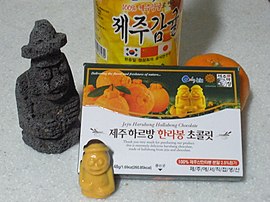
Previously, cash was mainly used, and card use is now useful. However, there may still be many places that use cash, so it's good to take it.
Dongmun Traditional Market , some utterly humongous traditional markets exist in Jungangno. As expected, they sell a lot of fish. Furthermore, modern, Western-style shopping can be found in the underground mall out on the main road.
Department stores such as Lotte and E-Mart exist in Shin-Jeju.
- One Jeju specialty is brown colored clothing. These have been dyed via juice from the persimmon fruit, which is the traditional way of dying clothing.
- The iconic stone statues, usually in pairs, are called grandfather statues and are for protection. Many places sell small stone replicas of them made of Jeju basalt (volcanic stone). If aircraft weight restrictions are a concern, check the back of the statue for vugs (cavities) as it's entirely possible to find the odd one as light as a feather.
- Citrus fruit (hallabong and mandarines). The specialty citrus of Jeju is the hallabong (dekopon in Japanese) something akin to an over sized tangerine which has a very distinctive plump bulge on its top. Its fame comes from its sweet taste and peelability. Do not be at all surprised if, when arriving back on the mainland, your bag pops into the baggage claim tucked between many crates of hallabong. Mandarin oranges are also a major Jeju product.
- Jeju hallabong chocolate. These come in varieties. The first is a plain flat chocolate with a layer of hallabong flavor sandwiched in the middle. The second however is shaped like a little grandfather statue and is primarily the "flavor" component of the first with a tiny slither of chocolate on the back. The latter tend to be a little less flavorsome (ironically) but are cute enough to make nice gifts. If hallabongs aren't your thing, fear not, for they also come in orange, kiwi, green tea and purple cactus fruit (somewhat a mixed berry flavor) varieties. There are crunch chocolates too, less unique but very tasty.
- Jeju kamgyul (citrus) wine. Similar to Japanese sake but with a fresh citrus finish. At only ₩5,000 for an entire 750-mL bottle though, honestly, you can't complain even if it isn't quite your thing.
- Green tea. Although perhaps not as famed as Boseong , the entire Western end tip of the island is littered with tea plantations.
- Ganse dolls. A souvenir of the Olle hiking coastal trails, they are cute little (15 cm) plush ponies on mobile phone straps handmade out of used clothing (and thus individually unique) by the women of Jeju. Profits go to developing and maintaining the island's hiking trails and they're available from tourist information centers and many budget accommodation. ₩15,000.
- Shop at Jeju Folk Arts Complex . This place is practically a big gift shop of beautiful traditional art. Prices of items at the Jeju Folk Arts Complex are cheaper than those you find elsewhere.
Souvenir shops, craft stores and fruit stands exist almost everywhere on the island, but if you are looking for more mundane daily goods, your best bet is to head into Jeju City or Seogwipoi which have the usual array of Korean conveniences including some Lotte s and an unusually high proportion of E-marts (both of which also contain large souvenir shops).
Eat [ edit ]
Being a seaside town, there are many great seafood restaurants available, so just take your pick.
The people of Jeju have evolved various lifestyles, depending on whether they live in fishing villages, farm villages, or mountain villages so specialties vary within the region. Life in the farm villages was centered on farming, as it did around fishing or diving fishery in fishing villages, and did around dry-field farming or mushroom/mountain-green gathering in the mountain areas. As for agriculture, the production of rice is little. Instead, beans, barley, millets, buckwheat, and dry-field (upland) rice are the major items.
The most well known fruit is the hallabong. It has been grown here as early as the era of the Three Kingdoms, and were offered as presents to kings along with abalone as special products of Jeju. Grilled pork from black-haired pigs is also a local specialty.
Foods from Jeju mainly made with saltwater fish, vegetables, and seaweed, and are usually seasoned with soybean paste. Salt water fish is used to make soups and gruels, and pork and chicken are used to make pyeonyuk (sliced boiled meat). The number of dishes set on a table is small and few seasonings are used. And usually, small numbers of ingredients are required to make dishes native to Jeju. The key to making Jeju-style foods is to keep the ingredient's natural flavor. The taste of the food is generally a bit salty, probably because foods are easily spoiled due to the warm temperature. In Jeju, there is no need to prepare Kimchi for the winter as in mainland Korea. It is quite warm during the winter and Chinese cabbages are left in the field. When they do prepare Kimchi for the winter, they tend to make few kinds and small amounts.
Restaurants are scattered across the entire island, usually near highway intersections, but the majority naturally lie around the coast and particularly in the urban centers of Jeju City and Jungmun/Seogwipo .
For non-Korean dining, the best option is Gecko's near Seogwipo (see details in the drinking section). In Jeju city there are some options. There is a Mexican restaurant near City Hall/Sinsan Park named El Paso that apparently serves up mediocre but passable Mexican fare. In Shin-jeju there is also an Indian restaurant named Rajmahal that serves up quality spicy Indian dishes. There is also another place with Pakistani/Indian cuisine called Baghdad Cafe around the City Hall/Sinsan Park area.
The representative food you have to eat in Jeju-Si:

- Silver hairtail (은갈치) is very famous in Jeju Island. Jeju silver hairtail is caught by fishing, so the silver color of hairtail is not damaged. The freshness is very good and the price is on the high side.
- Umu pudding (우무 푸딩) is a pudding made by boiling agar for a long time, not gelatin. Agar, which is used as a raw material for agar, is rich in dietary fiber and low in calories, so it is also good as a well-being health food. The texture is somewhat watery, and it is not as dense as regular pudding, so you can drink it.
- Jeju Hallabong (한라봉) has been cultivated in Jeju Island in earnest since the 1990s, and it has established itself as a representative specialty of Jeju Island, and in 2015, "Jeju Hallabong" was registered in the geographical labeling system. It is so sweet and refreshing that it is called a honeyed orange. The texture of the pulp is a little hard like an orange, but it is more watery than a tangerine, so it is very cool if you eat it cold.
- Jeju black pork (흑돼지) is as a result of a survey of Jeju tourists' preference for traditional Jeju food, the food culture using black pork is representative of Jeju.
Some other dishes worth trying:
- Bangeo Hoe (방어회) is a raw fish dish of yellowtail fish. Every November, the Bangeo Festival is held.
- Seongge guk (성게국) is mustard soup which is served in the ancestral ceremony or to welcome guests.
- Jaradom Mulhoe (자라돔 물회) is Jeju-style cold fish soup. Traditionally, it has been a summer specialty in Jeju.
- Yesodam ( 예소담 ), 544 Sinbuk-ro, Jocheon-eup ( 1 minute walk from Hamdeok Beach bus stop ), ☏ +82 064-784-0888 . 9:30-20:00 (Closed on Tuesdays) . It sells famous meat noodles in Jeju Island. It has a strong soup and is recommended by Jeju residents. 9,000₩ . ( updated Nov 2023 )
Budget [ edit ]
Mid-range [ edit ].
Opposite Hotel Impress there is a row of seafood restaurants. The one closest to the sea has very friendly staff and serves a great meal.
- Modu-modu ( 모두모두 ), Jeju-si ( Just up the hill and on the right from KCTV, if you reach the military HQ you've gone too far. ), ☏ +82 64-744-5555 . A rather large and upmarket Korean restaurant. The restaurant is built in the oddball "mushroom" style with outdoor dining in summer. The food (and the interior design alike) is a modern fusion of Chinese and Korea styles. Mostly serves large expensive group dining platters and course meals, but has an extensive lunch special range for under ₩10,000. Featured in a 2010 SBS K-drama.
- 33.4915 126.4978 1 Olae noodles ( 올래국수 ), 24, Yeondong Guiarang gill , ☏ +82 64-742-7355 . Daily 08:30-13:00 . ( updated Nov 2022 )
- 33.5168 126.5171 2 Sister's Noodles ( 자매국수 ), 6, Tapdong-ro 11-gill , ☏ +82 64-727-1112 . Daily 09:00-18:00 . ( updated Nov 2022 )
Splurge [ edit ]
Drink [ edit ].

Try Hallasan Soju the local brand of Korean rice wine, soju. Expect to pay ₩3,000 a bottle in a restaurant or ₩1,000 in a shop. Very strong.
Except for Gecko's in the South, there aren't any other genuine Western pubs on the island, but there are some good options. In Jeju City, all the real partying establishments are in Shin-Jeju, about a ₩5,000 taxi ride from Jeju city proper. Some of the establishments in this area rumored to be worthwhile are La Vie, Boris Brewery, Modern Time, Blue Agave, and GP.
There is also Led Zeppelin, a vinyl bar which as the name suggests is focused on album-oriented rock, and has a massive selection of records, CDs, tapes, and DVDs. Song requests are the main pastime and the sound-system rules. Off the main drag in Shin-jeju next to the Indian restaurant.
Bar [ edit ]
- 33.498718 126.529851 1 La Via ( 라비에 ), 17th floor of Sinseong-ro 13-gil , ☏ +82 507-1341-1138 . 18:00-03:00 . ( updated Nov 2022 )
- 33.488738 126.490397 2 Led Zeppelin ( 레드 제플린 ), 37 Shingwang-ro , ☏ +82 1025602291 . 19:00-00:00 . ( updated Nov 2022 )
- 33.497966 126.445704 3 Naedo Music Market ( 내도음악상가 ), 2nd floor, 106 Teu Haean-ro , ☏ +82 507-1338-9262 . 17:00 ~ 24:00 . ( updated Nov 2022 )
Cafe [ edit ]
- 33.512645 126.528852 4 Abebe Bbakery ( 아베베 베이커리 ), Next to Gate 12 of Dongmun Market, Dongmun-ro 6-gil , ☏ +82 507-1414-0750 . 10:00 ~ 21:00 . ( updated Nov 2022 )
Sleep [ edit ]
Jjimjilbangs are fairly common across Jeju city. With all of them, expect to pay under ₩10,000 for sauna access, a locker in which to put your stuff, cotton pyjamas or a robe and a patch of heated floor to pass out on. Most are listed below:
- Dong-cheon , Jungangno ( down a little alley on the south side of the road, near the stream at the east end of the underground shopping mall ). Jjimjilbang downtown.
- JeJu Joyland , Aewol-eup, Aewol-ri, 82 ( take the bus 37at Jeju airport and get off at last station Hagwi then transfer to bus going Aewol (5 min from Aewonro bus station) ), ☏ +82 10-3131-5270 . Check-in: 14:00 , check-out: 12:00 . A log cabin pension, family/group rooms available, kitchen, washing facilities, WiFi.
- Tap Changito , Tapdong ( from Jungangno, walk down to the harbour and turn left; it's behind the E-Mart near a Dunkin' Donuts ). Despite having ocean views, this jjimjilbang on the north side of town mysteriously lacks any windows on the inside. Three main spas, with the largest in the men's being myseteriously garlic scented. Sleeping mats are eschewed in favour of a great big foam thingy across the entire floor. Headrest cubes still in short supply, so use towel bundles. More open plan than most so can get noisy. Also has a cinema and comic book library. ₩8000 .
- Ilchul Bulgama , Gu-jeju ( opposite the Culture and Arts Center near Samseonghyeol ).
- Yeha Guesthouse ( cheap & clean ), 561-17, Samdo 1-dong , ☏ +82 64 713-5505 . Beautiful guesthouse (hostel) near the Jeju Bus Terminal. English, Chinese, Japanese and Korean are spoken. Domitory, double, Double+1 single and Double+2 single rooms are available. Shared room ₩19,000 .
- Jeju Burim Jimjilbang , Sin-jeju ( between Jeju Grand Hotel and Marchen House Apartments in Shin-Jeju ). Jjimjilbang on the west side of town.
- Yongduam Sea Water and Sauna Club , Yongdam ( on the coast road near the Leisure and Sports Park ). Another jjimjilbang on the north side of town. Convient to pop into after visiting Yongduam Rock to see the illumination at night.
- 33.41998 126.514435 1 Hani Guesthouse , Hallim-eup, Geumneung-ri, 1258 ( take a bus from the Jeju-si local bus terminal gate No.11, get off at Guemnueung-ri (금능리) bus stop (1 stop after Hallimpark) ), ☏ +82 64-796-5000 . Check-in: 14:00 , check-out: 12:00 . Aimed at younger travellers. A hotel like atmosphere with all the usual amenities like a communual kitchen/lounge area, washing facilities, PCs, WiFi. Dorm: from ₩18,000, private standard/deluxe room available .
If you are not looking for luxury, minbak (guesthouses) abound on Jeju, and due to its reputation as a honeymoon getaway, there is a wide variety of other accommodation. Outside of the peak tourist seasons (such as Korean national holidays and July–August summer holiday season), and as long as all you're looking for is a clean affordable room, don't be afraid to come to Jeju and find accommodation as you travel. In Jeju City , Seogwipo and the smaller towns there is an abundance of rooms in small guesthouses with character.
There are several motels next to the bus terminal in Jeju City at around ₩30,000 a night. They are fairly obvious to find as all three are in a row with lit signs and the ubiquitous motel logo of South Korea and are called You-cheong, Oh-cheon, and Nam-san.
For larger hotels, the majority are in the urban centers of Jeju City and Seogwipo with the most luxurious 5-star options on the entire island within Seogwipo's Jungmun Tourist Resort Complex. Refer to the individual city pages for listings.
For budget travellers, jjimjillbangs are pretty ubiquitous in Jeju City but outside of the capital city's limits, the only other jjimjillbang options exist under the World Cup Stadium in Seogwipo.
- Hotel Impress . Great seaview with large comfy beds, a PC, TV and a couch. Bar upstairs. Large windows give it plenty of sunshine. ₩50,000 for seaview rooms, ₩40,000 for others . ( updated Nov 2022 )
- CF's Motel . A nice, if slightly tacky motel near the seafront. Some rooms have round or heart-shaped beds (ask at the front desk). Some rooms have a small bath. ₩40,000 per room. ₩5,000 extra for rooms with a PC . ( updated Nov 2022 )
Hotel [ edit ]
There are a total of 13 five-star hotels in Jeju-Si.
Examples include Grand Hyatt Jeju , Maison Glad Jeju , Ramada Plaza Jeju , Haevichi Hotel & Resort Jeju , Marriott Hall Jeju Shinhwa World Hotel & Resort , Howard Johnson Jeju Hotel , Sweet Hotel Jeju , Jeju Sun Hotel & Casino(postponement of reopening), Lotte Hotel Jeju , Jeju Shilla Hotel , Grand Chosun Jeju , CS Hotel & Resort , and Lotte Jeju Resort Art Villas .
Camping [ edit ]
You can enjoy camping and glamping in Jeju-Si.
- 33.44974 126.440875 4 Eco Hill jeju ( 에코힐제주 ), 22 Gwangnyeong Pyeonghwa 8-gil, Aewol-eup , ☏ +82 64-743-0060 . Check-in: 15:00 , check-out: 11:00 . ( updated Nov 2022 )
- 33.511082 126.502101 5 Jeju Jayeonin Glamping ( 제주 자연인 펜션 글램핑 ), 110B East Annex, Aranseo-gil , ☏ +82 64-723-7502 . Check-in: 17:00 , check-out: 11:00 . ( updated Nov 2022 )
- 0 126.646694 6 Jeju Best Hill Glamping & Pension ( 제주 베스트힐 글램핑 & 펜션 ), 2109-36 Namjo-ro, Jocheon-eup , ☏ +82 70-4400-3300 . Check-in: 15:00 , check-out: 11:00 . ( updated Nov 2022 )
Connect [ edit ]
Stay safe [ edit ], cope [ edit ], go next [ edit ].
Seogwipo , a more upmarket and tourist oriented city on the south side of the island and home to the Jungmun Tourist Complex .
Alternately, use Jeju City as a base to explore the island's interior and attractions:
- Hallasan Mountain, Seongsan Ilchulbong and Manjanggul Lava Tube, the three UNESCO rated natural sights of Jeju .
- Loveland, the infamous theme park in central Jeju .
The nearest city on the mainland is Mokpo , a serene medium-size port city.
- Japan – flights to Fukuoka (the nearest), Osaka , Tokyo , and Nagoya .
- China – flights to Shanghai (the nearest), Beijing , Hong Kong , Tianjin , Hangzhou , Shenyang , Dalian , Yangzhou , Kunming , Nanjing , Harbin , Ningbo , Xi'an , Changsha , and Changchun .
There are also flights to Bangkok , Kuala Lumpur , Taipei , and Hanoi .
- Has custom banner
- Has map markers
- Airport listing
- Has mapframe
- Maps with non-default size
- See listing with no coordinates
- Articles with dead external links
- Do listing with no coordinates
- Eat listing with no coordinates
- Sleep listing with no coordinates
- Usable cities
- Usable articles
- City articles
- Has Geo parameter
- All destination articles
- Pages with maps
Navigation menu
- Skip to primary navigation
- Skip to main content
- Skip to primary sidebar
- Skip to footer
TravelAwaits
Our mission is to serve the 50+ traveler who's ready to cross a few items off their bucket list.
How To Visit South Korea’s Stunning Jeju Island

- Destinations
- South Korea
Jeju Island lies to the south of mainland South Korea. It sits between several seas — the Yellow Sea, the East China Sea, and the Sea of Japan (also known as the East Sea). Getting there is very easy if you’re in South Korea.
If you’ve read my other article on amazing things to do on Jeju Island , this article will cover more of the practical details of planning a trip there.

How To Get There From Mainland South Korea
You can travel there by plane or ferry. Jeju is a 1-hour flight from both Seoul and Busan. There are several airlines that fly there, including Korean Air. High winds in Jeju often ground or cancel flights. Make sure you have flexibility in your itinerary in case your flight is impacted. When I went, my flight back to Busan was canceled due to the winds. If your flight gets canceled, be persistent in going to your airline’s help desk to get booked onto another flight if you want to leave the same day.
You can also get a ferry to Jeju from certain ports, such as Incheon and Busan. However, it’s a long ride and much more expensive than flying.

Where To Stay
Though Jeju is a fairly small island, it has much to offer. Figuring out where to stay can be overwhelming. If you can stay at least a week, I’d recommend splitting your time between Jeju City in the north and Seogwipo in the south. It takes a little over an hour to drive between the two.
Jeju City is where the airport is located and hotels are about a 10-minute drive away. If you plan to take any day tours, most of them depart from the airport or are pick-up only at Jeju City hotels; another reason to stay in this area. You could also rent a car at the airport which is a great way to see more places.
In Jeju City, I stayed at the Gallery Hotel BnB . It’s a no-frills, budget hotel. I found the room quiet and perfectly located, about a 2-minute walk from the main street in Jeju City. If you prefer more luxurious accommodation, I recommend searching for other hotels nearby.

Staying in Seogwipo is a great way to see a very different part of the island than Jeju City. It’s easy to walk to most of the places if you don’t have a car and it was one of my favorite cities in all of South Korea. Most buses stop in Seogwipo, offering you another easy way to get around without a car. Seogwipo is next to the coast, so you can enjoy some of the beautiful water views while there.
I enjoyed the Hotel Rest Seogwipo . The budget price left me incredulous at the room. It was huge and came with its own washing machine! This is a great place to stay without a car as it’s a few minutes’ walk to downtown. If you have a car, however, you might prefer to stay at the Seogwipo KAL Hotel.

How To Get Around
There are plenty of buses, however, you’ll be at the mercy of their schedules. It can be difficult to decipher which stop gets you where you want to go and which bus you need. Full-day tours will take you to many of the major sites. Renting a car is the easiest way to see most of the island.
Pro Tip: If you plan to rent a car, make sure to get an international driver’s license in your home country before arrival. Without it, you won’t be permitted to rent a car.
Where To Eat
Visit Neulbom Heukdwaeji in Jeju City for black-pork barbecue. Be sure to go someplace where the pork is not overly greasy. It was great here, however, the staff tries to cook for you and hurry you. Be persistent, insist on cooking it yourself, and take your time.
Dae Hyang in Jeju City has some of the best Korean barbecue meat you’ll find. It’s hard to find red meat as opposed to pork barbecue on Jeju. If that’s what you’re craving, come here, and don’t leave out the Soju!
The Seogwipo Olle Market is a must. There are so many different options, including a food court just outside the main market. My favorite meal was the seafood pancake I found. It was hearty, delicious, and where I had my first taste of Makgeolli — a delightful South Korean alcohol.
Seogwipo also has a restaurant street near Cheonjiyeon Falls called Chilsimni Food Street, reputed as having some of the best restaurants in the area.
I lucked into what I thought was the best place in Seogwipo, Oneunjeong Gimbap — a gimbap restaurant. It looks like a complete dive, so I was dubious until, after placing my order, there was a line out the door. It was so good I tried to go back another night, only to find a 45-minute wait to get my food.

How Long To Stay
I would say forever, but if you don’t have that luxury, at least a week, ideally 2 or 3 weeks. There’s so much to see and being able to stay in different parts of the island in order to see more is well worth it.

Heather is a full-time travel coach who is passionate about helping professionals seeking more freedom and flexibility to ditch their desk and discover their destiny through full-time travel. She provides her clients with the path to the mindset, money, and mastery to make a full-time travel lifestyle possible. Since quitting, she's become an international best-selling author and is about to do her first TEDx talk! Learn more about Heather's travel adventures on her website, Heather Begins.
Explore Jeju

Plan Your Trip to Jeju: Best of Jeju Tourism
Essential jeju.
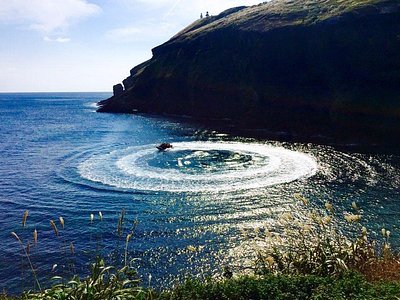
Trending in the forums

Jeju Is Great For

Eat & drink

Photography Tours

- Spabellis Pension
- Manong Pension
- Lotte City Hotels Jeju
- Best Western Jeju Hotel
- Maison Glad Jeju
- Gozip Dol Wooluck - Hamdok
- Myeongjin Jeonbok
- Gozipfish - topdong
- Manjanggul Cave
- Dongmun Market
- Hamdeok Beach
- Black Pork Street
- Jeju Island Private Taxi Tour : UNESCO Day Tour
- Jeju Island Private Taxi Tour : 2 Full days
- Jeju Island English Flexible Private Tour from 1 to 13, 10 tours
- Private Day Tour in South and West in Jeju Island
- UNESCO Small Group Day Tour of Jeju Island - South Course
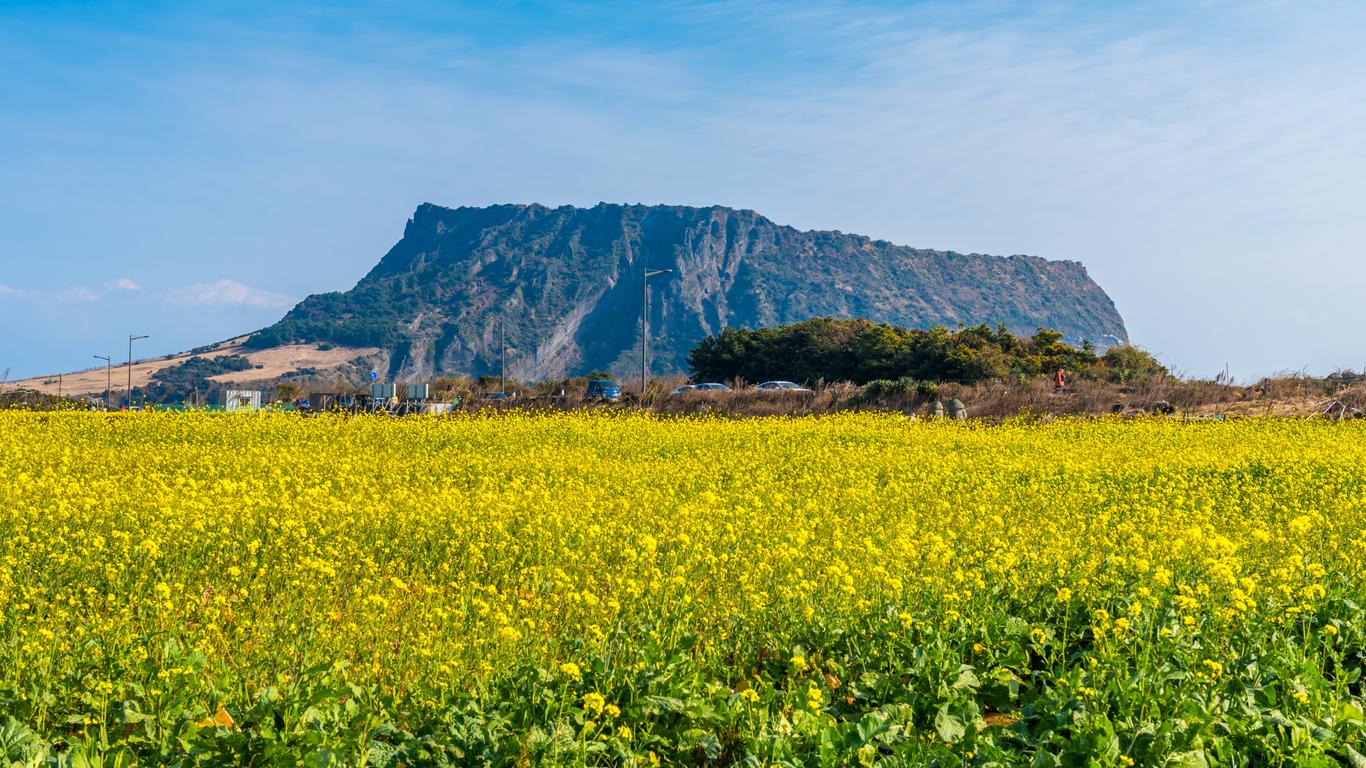
Jeju City travel guide
Jeju city tourism | jeju city guide, you're going to love jeju city.
Jeju Island is fast becoming the go-to island destination in South Korea thanks to its breathtaking beaches, scenic cliffs, local delicacies, and welcoming local population. With an area that is three times bigger than Seoul, the country's capital, Jeju Island provides a wide landscape of possibilities for your next vacation adventure.
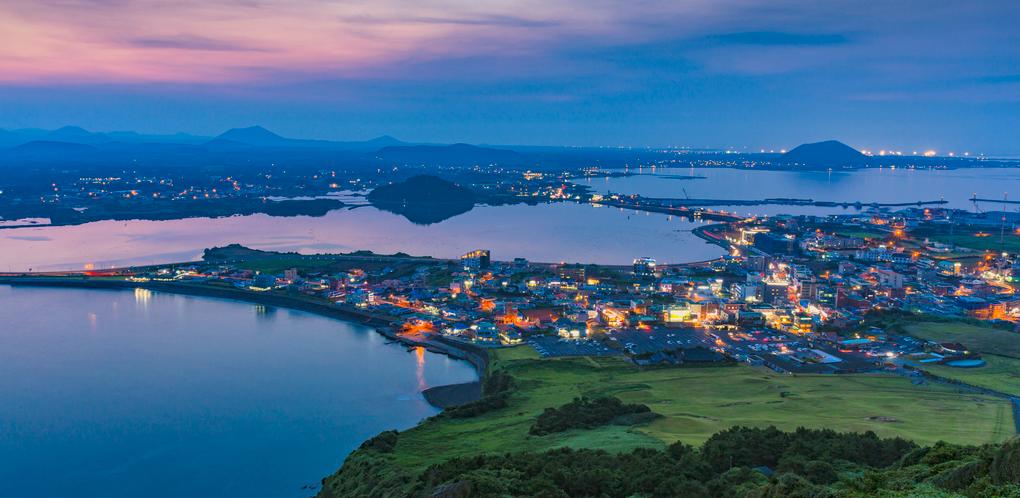
Top 5 Reasons to Visit Jeju City
1. the beaches.
Nicknamed the "Hawaii of Korea", Jeju is popular thanks to its tranquil lush vegetation, crystal clear waters, and stunning white sand beaches. Iho Tewoo Beach is just a short hop from downtown, but the most beautiful beaches can be found near Hallim Park on the north coast of the island. For those looking to extend their beach day, Gwakji Gwamul Beach offers great BBQ facilities and campsites.
2. The Hiking Trails
The Jeju Olle-gil walking trails stretch around the entire island, offering hikes that range from 3-8 hours. Geomun Oreum is another popular UNESCO-designated trail, which takes visitors to nine different dragon peaks that overlook the island's lush landscape. Seongsan Ilchulbong, or sunset peak, is another hike that has gained UNESCO recognition for its cultural, geographical, and historical importance.
3. The Food
Jeju Island residents have taken advantage of their surrounding ocean resources to create some of the most unique and delicious delicacies in all of Korea. Abalone is the most expensive seafood on the island and is caught fresh by local female free drivers called haenyeo. Must-try Jeju dishes include Okdom Gui (grilled sea bream), Haemul Dukbaegi (seafood hotpot), and Jeon-bok-juk (rice porridge with abalone).
4. Museums that Break the Mold
There are many off-the-wall museums on Jeju Island, including the Teddy Bear Museum, Haenyeo Museum, and Trick Eye Museum, an interactive spot with paintings created using a special 3D technique.
5. K-Drama Film Locations
Jeju Island is a popular destination for many K-Drama series that use the quirky cafes and stunning natural scenery to tell some of Asia's most beloved stories. Maps of the film location spots can be found at Jeju International Airport and feature the most well-known sites, including Hamdeok Beach (Lie to Me), Hyatt Regency Hotel (Boys Over Flowers), and Sanmotoonge Café (Coffee Prince).
What to do in Jeju City
1. hike in hallasan national park.
The most popular natural attraction by far is the shield volcano Hallasan, which can be seen from any point on Jeju Island. Hallasan also happens to be the highest mountain in Korea, offering five well-trodden trails up to the summit. The name Hallasan comes from the word "Han", which represents the universe, and "la", which means to pull. These words combined give the sense that Hallasan mountain is high enough to pull the universe, solidifying it as a sacred place in local Korean culture.
2. Take in Jeongbang Falls
Located near Seogwipo city, this popular tourist spot is the only waterfall in Asia that falls directly into the ocean. Along the way, it's common to see a group of haenyeo scouring the coastline for seaweed, shellfish, sea cucumber, and abalone. Fun fact: according to ancient lore, a holy dragon is said to have lived under the falls, and its spiritual water can cure diseases and bring rain during drought.
3. Visit Yakcheonsa Temple
This famous Buddhist temple near Mount Hallasan is known as the "medicine stream" temple and was rebuilt in the 1990s. Here, mineral spring water flows from the ground year round, which, according to Buddhist tradition, washes away the suffering and tears of sentient beings. Several guardian dragons stand post outside the main stairway.
4. Splash Around at Hyeop-jae Beach
Swim in the tranquil turquoise waters off of Jeju Island's north coast at Hyeop-jae Beach. Just 1.2 miles from Hallim city, the beach boasts a forested area next to idyllic white sand shores. The beach is just across the street from Hallim Park, which features 16 gardens, 2 lava caves, and a traditional folk village.
5. Peruse Jeju Folk Village Museum
Jeju Folk Village Museum gives visitors a deeper understanding of the rich cultural history and assets of South Korea. Built in an area of 1,614,586 square feet, the village features several lively exhibits demonstrating the daily life and customs of ancient Jeju residents. The museum costs KRW11,000 with an additional KRW2,000 for the accompanying audio guide in English.

Activities & attractions in Jeju City
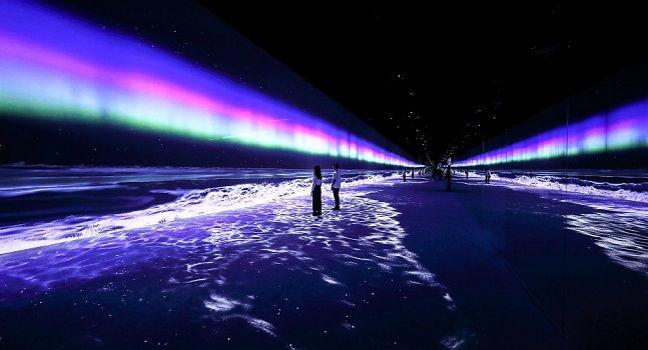
Where to Eat in Jeju City
For a taste of famously authentic black pork, head over to Jeju Hukdon Saesang Suragan before the crowds start piling in after 7 p.m. A meal for two costs around KRW39,000 and can be ordered from English-language menus for convenience. Myeongjin Jeonbok in downtown Jeju features a simple menu with just four options but a robust local crowd following. Make sure to try the fresh-caught abalone from the adjacent waters for around KRW50,000 for two people.
When to visit Jeju City
The best time to visit Jeju is in the spring between April and June, when the country's cherry blossom trees are in fully bloom and the weather is moderate. This time also has the added bonus of being outside of the main summer tourist season, allowing uninterrupted natural views and shorter lines at most main attractions.
How to Get to Jeju City
Jeju International Airport hosts 27 airlines that fly into Jeju mainly from South Korea's other main transportation hubs in Seoul and Busan. The bus service will run you into town for KRW1,200 or you can take a taxi for around KRW9,000; it's a 30-minute trip.
Jeju Island has five routes from mainland South Korea that will make the trip in roughly 4 hours, however there is also the option for overnight cabins. Costs for a one-way ferry range between KRW30,000 and KRW75,000.
Airports near Jeju City
Airlines serving jeju city, where to stay in jeju city.
Ojori B&B in the eastern rural area of Seongsan features lush green mountain views with complimentary breakfast. Blue Spring Hotel offers more central beach-side accommodation in a luxury high-rise hotel in Hallim. Some of the best areas to stay in in Jeju include Jeju City, which is close to Mount Hallasan, and Jungmun Tourist Resort Complex, home to the Teddy Bear Museum and loads of other attractions.
Where to stay in popular areas of Jeju City
Most booked hotels in jeju city, how to get around jeju city, public transportation.
Purchase reloadable T-Money transportation cards for KRW4,000 at almost any convenience store when travelling around Jeju Island. A standard one-way fare will cost KRW1,000-5,000, depending on the distance.
Taxi fares start at KRW2,800 and are based on the distance traveled, which on a small island can be very affordable. Hiring a private taxi for a day will cost around KRW100,000.
Hire cars can be picked up at Jeju International Airport or at several convenient locations around the city center from brands including Hertz, Ok Rent a Car, AJ Rent-a-Car, and Sixt. Standard sedan hire cars start at KRW32,000 a day.
Best car rental deals in Jeju City
5 Adults, 2 Bags
The Cost of Living in Jeju City
Yeon-Dong Shopping District is a great area filled with boutique shops selling mid- to high-priced quality goods. The area also features a number of cafes, karaoke bars, and art galleries to round out your day of shopping. Lee Joong Seop Art Street in Seogwipo is a popular backdrop for many Korean drama films, featuring local eclectic art and several quirky cafes. For a more authentic shopping experience, visit the Art Street for the flea and craft market on Saturday for some inspiration for start your next project. Souvenirs can cost upwards of KRW20,000.
Supermarkets and Food Stores
Two of the most widespread supermarkets for one-stop shopping on Jeju Island are Lotte Mart and Shilla Duty Free Shop. Here you can find food, beauty, home decor, and other products to meet your needs while travelling. A gallon of milk will set you back about KRW7,000.

3 Day Jeju Itinerary For First Time Visitors
By: Author Amanda OBrien
Posted on Last updated: 05/03/2024
Jeju, South Korea’s largest and most beautiful volcanic island is nestled on the South Coast. This South Korea island boasts stunning beaches, lush countryside, an abundance of museums, coastal walking trails, and delectable cuisine.
If you’re looking to plan a trip to South Korea, you should certainly add Jeju Island to your list, together with your Seoul itinerary . There are so many things to do in Jeju Island. This Jeju Itinerary 3 days covers an ideal amount of time to spend on this beautiful Korean island.
Things to Book Before You Leave Home Few things are more frustrating on vacation than missing out on that amazing hotel or tour because it is sold out. Here are our top things to book before your vacation. 🏯 Book these popular Jeju Tours before you leave home to avoid disappointment. 1. Jeju Island West Coast Tours 2. Jeju Island East Coast Tours 🛏️ Where to Stay on Jeju: 1. Bayhill Pool and Villa – spacious and stylish for the perfect secluded getaway 2. Hidden Cliff Hotel and Nature – natural setting and infinity pool

- Jeju Itinerary: Getting To The Island
Table of Contents
How to Get Around Jeju Island
3 day jeju island itinerary: day 1: east jeju, seongsan ilchulbong, seopjikoji coast walk, manjanggul cave, hamdeok beach, jeju island itinerary: day 2: east to west of jeju, chocolate museum, jusangjeolli cliffs, teddy bear museum, cheonjiyeon waterfall, jeongbang falls, jungmun saekdal beach, seogwipo submarine, jeju island itinerary: day 3: south jeju, mount hallasan, mysterious road, where to stay in jeju, chason hotel the smile, hidden cliff hotel and nature, bayhill pool and villa, where to eat in jeju island, sunny garden, ankeori pakeori, soul kitchen, best time to visit jeju island, jeju island itinerary – for an incredible getaway, do you need a visa.
Jeju International Airport is located in the island’s largest city, Jeju City, and there are cheap flights to the island from the major metropolitan areas in South Korea .
⇒ Flights Seoul to Jeju
If you’re travelling from Seoul or Busan , it’s possible to take a ferry to Jeju island. Although, flights are a better option because a two-way ferry ticket can cost you around $100 USD and it will take you between 3-12 hours to get there. Flying to Jeju Island is a much cheaper and faster option.

When it comes to how to travel around Jeju Island, renting a car and driving yourself is the best option. Having your own vehicle allows you to travel and stopover at your heart’s content.
If you decide to rent a car, I highly recommend booking through RentalCars.com , which has the best prices. You can also take well-connected public transportation, such as the Jeju City bus .
Korea has strict rules about Internet maps, and you may have trouble getting onto Google Maps. Rest assured, rented cars come with a GPS, where you can key in the coordinates and find your way around the island.

There are some spectacular places on Jeju Island with awesome landscapes, volcanoes, lava tubes and cascading waterfalls . The volcanic island is now a UNESCO world heritage site and a must-see on your Korea itinerary .
I highly recommend getting the most out of your Jeju trip by renting a car. Otherwise, book a private transfer between Jeju airport and your accommodation to enjoy a thoroughly relaxing vacation without the fuss of finding your place.
One of the island’s most loved local and tourist attractions is watching the sunrise on a smaller volcano at Seongsan Ilchulbong, also known as ‘ sunrise peak ’. This Jeju tourist attraction welcomes dozens of early-morning hikers who race up the stairway to catch the daybreak at the crater.

If you plan on seeing the sunrise from Seongsan Ilchulbong, be sure to check what time the sun will rise. Ensure you give yourself plenty of time to get to the entrance and walk to the top.
Alternatively, book a private transfer to Seongsan IIchulbong and enjoy a hassle-free journey.
There is a small entrance fee of $1.79 USD per person to enter the park, and you’ll walk for about 20-minutes to the peak.

After sunrise, climb down the mountain and get breakfast at one of the stalls near the entrance. On your way down, make a stop at the viewing platform and catch a glimpse of the traditional women drivers, the Jeju haenyeo .
If you’re looking for a delightful Jeju island tour to see the island’s highlights, I suggest you book this small-group tour to Sunrise Peak and other famous places.
➡️ Book Your Jeju Island Tour
⇒ One of the loveliest places to go in Asia is Bali. Check out my posts on the best 10 Days Itinerary Bali , Where to Stay in Bali , where to stay in Ubud and the best boutique hotels in Ubud , Bali Retreats for Singles , Bali Boutique Hotels , where to stay in Canggu and the best boutique hotels Seminyak has on offer.
If you’re looking for the perfect place to take vacation pictures, it would be Seopikoji. It’s famous for the yellow canola flowers sweeping over hills and boasts beautiful coastal views. Canola blooms from March to April, but Seopjikoji JeJu Island a lovely scenic walk at any time of the year.

This pretty area has been featured in many Korean tv dramas – and is therefore, quite popular. There are a lighthouse, a gingerbread house and some great views of Seongsan Ilchulbong Peak from the end of the lighthouse.
Manjanggul Cave is one of the largest lava tubes in the world, and within the cave, you’ll come across stalagmites, lava shelves, tubes, stalactites, and many forms of flowstones. These caves are one of the top Jeju Island things to do.

The star attraction of Manjanggul Caves Jeju Island is the world’s tallest lava column standing 7.8 meters high inside the cave. When you’re visiting the cave, I recommend taking a jacket and closed footwear as it can get a bit chilly and there are wet and uneven surfaces.
➡️ Book a Manjanggul Cave transfer service
Hamdeok Beach is world-famous for its gem-clear water and white sands, making it a popular destination during the warm sunny days. The combination of a picturesque arching bridge over the white sand and black basalt stones makes for a stunning backdrop to this Jeju beach.

Don’t miss discovering the beautiful Dragon Head Coast, and Mt. Songak by exploring Sabang and the western parts of the island .
Located in the south of Jeju is the second-largest Chocolate Museum in the world. This Jeju museum is beautifully decorated with volcanic rock that makes it look like an ancient fortress.

There are various exhibitions displaying several chocolate treats at the Chocolate Museum Jeju Island – it’s something you won’t want to miss.
The Jusangjeolli Cliffs are a geologic wonder, comprised of hundreds of hexagonal rock columns formed from molten lava when Mount Hallasan erupted.

Spend some time on a teddy safari at the Teddy Bear Museum. It’s dedicated entirely to teddy bears, with hundreds of teddies from around the world displayed throughout the museum.
The Teddy Bear Museum Jeju also houses the most expensive teddy bear in the world, worth $2.1 million. It’s a luxurious Louis Vuitton teddy with matching luggage – beary luxurious!
Cheonjiyeon Waterfall is easily one of the most beautiful places on the island. It’s a 22-meter high waterfall that cascades into the pond below. Cheonjiyeon waterfall is surrounded by lush plant life, including the rare Solimnan reeds.

It is very easy to access Cheonjiyeon waterfall – it is almost in Seogwipo. The easiest option is to walk. Once heading in the right direction you will see the grandfather rocks – follow these to the waterfall.

When you’re there, don’t forget to check out the Seonimgyo bridge that stands out of the forest.
Jeongbang Falls drops 23 meters into the ocean, it’s the only waterfall in Asia that falls directly into the sea. This Jeju waterfall provides the perfect opportunity to take photos on your Jeju trip.

One of the top beaches on the island is Jungmun Saekdal beach . Cliffs surround it and provides plenty of beach activities such as windsurfing, waterskiing, and parasailing. I suggest taking some time to enjoy this beach in Jeju before your final stop for the day.

If you’re looking for a unique island experience, take a ride on the Seogwipo Submarine . It descends 12 meters below the sea. En route, you will pass a shipwreck and see schools of colourful fish.
➡️ Book Your Tour of the West Coast of Jeju Island
Depending on your interests or your group’s interests, you might want to add a full-day en route back to Jeju City. If you can, squeeze in both the theme parks and opt for the shorter Mt. Hallasan hike.
Mount Hallasan is the highest peak in South Korea. It’s situated in the Halla-san National Park, and if you plan to hike it, you should be well prepared. I do suggest bringing some food and water with you, though there are stores in the park.

The best time to hike Mount Hallasan Jeju is in the early morning. There are several mountain trails to choose from. If you’re not looking to spend the entire day at Mount Hallasan, consider taking the easy 1.3km Eoseungsaengak trail. You will be spoiled with stunning sweeping views of lush landscapes of this Mount Hallasan trail.
To get the most out of your experience, I recommend booking a small group nature hike to see Jusangjeolli Cliff, Cheonjiyeon Falls, and Mt. Hallasan together. That way, you won’t miss out on any Jeju attractions.
➡️ Book Your Transfer to the Mount Hallasan Hiking Trail

The most economic way to travel South Korea by train is the Korea Rail Pass . This pass is only available to foreign travellers. The KR pass covers 600 stations and 80 different high speed routes with unlimited rides. It is available in 3 or 5 consecutive days or flexible 2 and 4 days.
The Mysterious Road in Jeju is a downslope road that actually looks like an uphill. It’s a magnetic hill, and if you put an object on the street, the optical illusion makes it look like the object is rolling uphill.
The baffling ability of objects climbing up the hill on the Mysterious Road Jeju instead of down it is a must-see.
Love Land is a sex-themed outdoor sculpture park and is one of the quirkiest things to do on Jeju island. Love Land Jeju showcases sensual and erotic sculptures in various sex positions dotted throughout the park.

The reason for having a sex park is that Jeju Island is a popular honeymoon destination for Koreans. Due to the generally conservative bent of Korean society, it is likely that many newly marrieds are quite inexperienced sexually. Therefore, these sex parks were created on the island to educate and entertain.
This is one of the more unique places to visit in Jeju and can be fun to explore with a group of friends or your partner.
Note: Visitors must be over the age of 18 years to enter Love Land.

Knowing even a small amount of the local language can add a whole new level of enjoyment to any trip. Why not learn some basic Korean before you leave home?
If you have a late arrival or early departure, I recommend staying in Jeju City, located in the south of the island.
Chason Hotel The Smile is in the heart of Seogwipo – perfect for travelers looking to explore nearby waterfalls, visit the iconic sights and discover the local food. The hotel offers the usual perks of excellent WI-FI, a continental breakfast and the best coffee.

I would recommend Chason Hotel The Smile for couples traveling to Jeju Island, however, they do also offer family rooms. All the rooms at this Jeju Island hotel are very clean, neat and provide all the amenities you could wish for.
➡️ Check Prices and Availability for Chason Hotel The Smile

The Hidden Cliff Hotel and Nature sits on the top of a hill and is surrounded by thick woods teeming with life. The hotel is surrounded by hidden hiking trails for the adventurous soul, and offers a large infinity pool to cool down in at the end of a long day.

The vibrant rooms at The Hidden Cliff Hotel and Nature have wooden finishings and a private balcony to relax on. As an added bonus, Jungmun Beach is just a five-minute drive away from this hotel on Jeju Island,
⇒ Check Prices and Availability for the Hidden Cliff Hotel

Bayhill Pool and Villa offers luxurious rooms with private terraces and ocean views. Located in a slightly secluded area, it’s the Jeju hotel to stay if you are looking for a quiet getaway.

The spacious rooms at Bayhill Pool and Villa have a stylish modern interior for you to enjoy and unwind after a day exploring,
⇒ BooCheck Prices and Availability for the Bayhill Pool and Villa
⇒ Beautiful Japan is one of my favorite countries to visit. Check out my posts on One Day in Tokyo , 2 Day Itinerary Kyoto , 10 Day Japan Itinerary , What is Japan Famous For ? 31 Japanese Claims to Fame, 9 Beautiful Japan Famous Landmarks , the best things to do in Kanazawa and what to expect on the Nakasendo Trail.

South Korean cuisine is as colorful and vibrant as the culture. Whether you are visiting Jeju Island for a short vacation or a longer holiday, here is my list of top places to try.
Offering traditional Korean barbeque, the Sunny Garden is a top spot for brunch, lunch or dinner. Prepare to cook your meat on the open stove at your dining table.
If you love Korean beef, quick service and are looking for an authentic experience, Sunny Garden Jeju Island is the place for you.

Looking for good Korean food at affordable prices? Ankeori Pakeori should definitely be on your list of food spots to try. They are known to serve their kimchi very well, and their customer service is out of this world.
You can expect a table full of interesting dishes to try if visiting Ankeori Pakeori Jeju for lunch or dinner.
Mi nt serves super tasty contemporary cuisine in the arty district of Seogwipo. Boasting an outstanding view, it will be tricky to choose which is better – the food or the vista. I would recommend going to Mint on Jeju Island on a clear evening to watch the sunset – it is breathtaking.

Soul Kitchen offers the ultimate comfort food menu if you want a break from traditional Korean cuisine. While the restaurant offers a true steakhouse ambiance, it also has a wonderful vegan and vegetarian menu
Childonga is the ultimate dinner venue if you’re looking to try the famous black pork in Jeju. While the interior of the restaurant is similar to most other venues, the food is unparalleled.
Although the staff at Childonga don’t speak much (if any) English, the food is definitely worth the effort of struggling through the language barrier.
My favourite place for coffee and photos in Jeju was Cafe Mayb . This super cute cafe does a nice breakfast and also serves wine and beers come the evening. There is also a nice florist next door to Cafe Mayb.
Paris Baguette is a safe stop for coffee and baked treats. There are many Paris Baguette outlets across South Korea.

And the Grey Owl Cafe has good coffee and ham and egg muffins – it isn’t easy to get a western-style breakfast on Jeju Island.
And for a cafe with a view, unique modern design and good coffee visit Cafe Over the Window.
Don’t miss Jeju’s famous tangerine juice! It is on sale all over the island and absolutely delicious. I lost track of how many tangerine juices I had.
Jeju Island’s tangerine juice tends to be served slightly frozen so they are wonderfully refreshing. And sometimes this Jeju island juice comes in plastic bottles shaped like the grandfather rocks – my favorite.

The best time to visit Jeju is during the more moderate weather months. The warm and pleasant days often occur from March to May and September to November.
Springtime (March to May) is considered one of the best times to visit Jeju island, as temperatures are balmy. The highlight of this season is the cherry blossoms bloom, and the island turns a spectacular pink from the flowers.

Jeju in Autumn (September to November) is another fantastic time to visit. Conditions are sunny with clear skies, and the fall foliage looks incredibly picturesque.
⇒ Interested in Nepal? Check out my posts on the Nepal tea house , a full Everest Base Camp packing list , an Everest Base Camp trek itinerary and a day by day Everest base camp trek blog And for post-trek the fantastic boutique hotel Dwarika Hotel Kathmandu , the Dhulikhel Resort and the best places to visit in Kathman du .

Jeju Island is by far one of the most beautiful places to visit and should undoubtedly be on your itinerary when travelling to South Korea . With its majestic mountains, delicious foods, and beautiful beaches, this stunning island spoils you with plenty to see
It can be a real pain trying to figure out if you need a visa for a country and then all the hassle of figuring out how to apply, how long you can go without your passport, when the embassy is open etc .
iVisa has completely revolutionized this process and put it all online and make it super simple and paper and hassle-free!

I covered all of the costs involved in writing this Jeju travel blog post. However, this post includes affiliate links. That means if you click through and end up making a purchase I will receive a small commission. I wanted to make sure you were aware of this.

Amanda O’Brien is the creator and editor of The Boutique Adventurer. She has visited 80 countries and is a member of the British Guild of Travel Writers as well as the IFTWTA. She is passionate about wine had has just completed Level 3 of the WSET. Born in Australia, she lives in London.
This site uses Akismet to reduce spam. Learn how your comment data is processed .
Like this post? Why Not Share It?
Thanks for Sharing!
Jeju Island Travel Guide: Where to Stay, Top Attractions, Bus Guide
Here’s my Jeju Island Travel Guide with everything I learned from traveling Jeju Island in South Korea. I recently came back from my 2nd trip there.
It’s a really beautiful island but there are things I wish I knew before traveling to Jeju!
I tried to go to as many places as I could and traveled all around Jeju without a car .
If you’re new to South Korea, read my travel guide to South Korea.
👩🏻💻 Read next: 22 Things to Do in Jeju (+ Top 5 You MUST Visit) and The Perfect Jeju Island Itinerary for 2-5 Days .
Book Before Your Jeju Trip: 🚕 Hire a private chartered car for a Jeju Island day tour 🏢 Book discounted hotels in Jeju on Agoda 🎫 Browse through dozens of available Jeju tours 🚌 Buy a Jeju Bus Hop On & Hop Off Day Pass here 🚙 Rent a car in Jeju Island for as cheap as $28 USD a day
Table of Contents
Where to Stay in Jeju Island
This is probably the top question: where to stay in Jeju Island.
There’s four main areas to stay in Jeju Island. Most tourists will either stay in Jeju City in the north, or Seogwipo City in the south.
Where to stay in Jeju Island will depend on what activities you want to do & how long you’re staying.
If you’re staying longer than 3 nights, you can always switch hotels to experience different areas.
The two hotels I stayed at:
- ASTAR Hotel (photo above)
- Reve Business Hotel Jeju
1. Jeju City (north)
Jeju City is where the airport is. There’s a few cool tourist sites , but other than that, Jeju City looks like your typical busy city, with lots of restaurants, hotels, shops, and buildings.
People like to stay in Jeju City because:
- It’s only 10-minutes from the Jeju airport , and it’s a bit livelier, though quieter compared to Seoul or Busan.
- It’s also easier to take the bus from Jeju City to main tourist sites throughout the island. There’s more buses available here. This is where I stayed. It takes around 30-minutes to around an hour to get to the different parts of Jeju.
⛴ Try this: Explore Jeju City with a Rainbow Yacht Tour 😎
If you’re only staying a night or 2 or have an early flight out, it’s probably better to stay in Jeju City to be closer to the airport.
If you’re traveling only by bus & for only 2 nights, Jeju City is also a better option. And you’ll see why in the bus section of this post.
Hotel Recommendations for Jeju City:
Astar hotel.
One of the cleanest and most comfortable hotels I stayed in South Korea. While a 4-star hotel, it’s still quite affordable. Close to buses and walkable to the main Jeju City Bus Terminal.
Reve Business Hotel
This was the hotel I stay at during my second visit. Clean, and around the corner from a main street with lots of restaurants, as well as an airport bus stop. Plus, very afforable!
2. Seogwipo City (south)
Seogwipo City is the 2nd largest city on Jeju Island, though more chill. It’s closer to greenery and natural sites, like waterfalls and cliffs.
The hotels in Seogwipo City are also cheaper in the south than in Jeju City.
Stay in Seogwipo City if most of things you want to do are in the south, so you don’t have to keep going back and forth.
But, if there’s only a few things you want to do in the south, you can just allocate a day in the south and stay elsewhere.
Hotel Recommendations for Seogwipo City:
I haven’t stayed in Seogwipo City yet, but hotels are cheaper in the south. Here’s the top hotels in Seogwipo to browse through.
🚌 Explore southern Jeju Island with a Group Tour (includes Hallasan Mountain 🏔)
3. East Coast, or Seongsan
A main reason to stay in the East Coast, or Seongsan, is to be closer to specific tourist sites.
People like to hike Sunrise Peak or Seongsan Ilchulbong right at sunrise, and staying in the east is just more convenient.
Also for people who want to travel early to Udo Island, which is just off the east coast.
Hotel Recommendations for East Jeju:
There are lots of hotels in the east, many near the beach that are also affordable. Here’s hotels in east Jeju to browse through.
🚌 Explore East Jeju with a Group Tour (includes Sunrise Peak & Jeju Stone Park 🌅)
4. West Coast
People stay in the west coast in Jeju Island, or more north-west for all the beaches and cafe culture along the coastline. A lot of the airbnbs and home pensions are also located in the west.
I’d stay in the north-west if you want to be closer to those specific beaches. Otherwise, there’s beaches in other areas too.
Hotel Recommendations for West Jeju:
West Jeju has lots of nice villas and affordable pensions, both on Airbnb and hotel booking sites. Many near the beach too.
Here’s hotels in west Jeju to browse through.
🚌 Explore the West Coast with a Group Tour (6 locations included)
In Summary on Where to Stay in Jeju Island:
- If you want to travel all around Jeju Island, are traveling by bus, have an early flight out, or are staying for only a short time, I recommend staying in Jeju Island.
- If you want to spend more than 1 day in the south and most of things you want to do is in the south, stay in Seogwipo City.
- Stay in the west or east if you want to be in those specific areas most of the time.
- If you’re staying longer than 3 nights, try changing hotels.
Also, if you’re traveling Jeju Island by bus, look for a hotel that’s walkable or a quick bus ride to the main bus terminals to save time.
Hotels are more expensive in Jeju City, but you can find decent ones around $40 USD a night. In the south you’ll get bigger and cheaper options.
Things to Do in Jeju Island
Make sure to read my list of 22 things to do in Jeju Island and write down which sites interest you.
Here are my top 5:
- Sunrise Peak / Seongsan Ilchulbong
- Hike Hallasan Mountain
- Daepo Jusangjeolli Cliff
- Handam Coastal Walk
- Hamdeok Beach Area
Choose from these sites to create the Perfect Jeju Island Itinerary for 2-5 Days :
🏝 7 Best Beaches in Jeju to Visit (with Photos & Reviews)
🌊 5 Amazing Waterfalls in Jeju Island You Can Visit
🎫 Choose from 112 Jeju group & private tours from Viator
General Jeju Planning Tips
1. Try to bunch sites together that are walkable from each other, to make the bus ride or drive worth it.
One of the things I enjoyed most was walking between sites. You’re usually surrounded by nature, or interesting remote areas. And there’s trails and paths set up throughout Jeju Island.
2. To find more places to go to nearby, type in “nearby attractions” in Google Maps and tourist spots are marked with a camera icon.
Look at reviews and photos if the site interests you and write it down.
3. Try to plan around sunsets around 6-7pm. They’re really pretty in Jeju at the beaches or coastlines.
Popular Jeju Tours
1. Eastern Jeju Island Discovery Tour :
- Jeolmul Natural Recreation Forest
- Seongsan Ilchulbong
- Seongeup Folk Village
- Jeju Stone Park
2. Western Jeju Island Exploration Group Tour
- Hallim Park
- O’sulloc Tea Museum
- Songaksan Mountain
- Hyeopjae Beach
- Choose Cheonjeyeon Waterfalls or Teddy Bear Museum
3. Jeju Island UNESCO Day Tour : choice between south, west, and east Jeju Island.
Here’s popular activities to join in Jeju Island:
Transportation
In case you didn’t know, there is no subway on Jeju Island.
Read my full guide to traveling Jeju without a car if you plan to only use public transit in Jeju.
From the airport, you have 3 options:
- Rent a car in Jeju – You’ll need an international license or a South Korea license, for around $50-100 USD per day. You can also hire a private driver in Jeju from around $150-300 dollars per day.
- Take a taxi – if you’re staying in Jeju City, it’s only a 10-minute ride away. You can take one for around $7 to $8 dollars. A taxi ride to the south will be $30 to $40 USD and take around 45 minutes.
- Take a bus – The cheaper option would be to take the airport limousine bus #600 from the airport. It runs every 15 to 20 minutes. It first stops at popular hotels in Jeju City, then cuts down to Seogwipo City, which will take about an hour. You can pay with T-money card and the stops are announced in English.
🚌 You can also purchase a Jeju Island Hop On & Hop Off Day Pass
Getting around by Taxi
- It’s easier to hail taxis or book a taxi on the Kakao T app in main touristy areas. If you’re in a more remote area, finding taxis is not guaranteed.
- Uber Taxi only seems to work in Jeju City , though it might take a while to get one.
Jeju Bus Guide
A lot of people will discourage you from visiting Jeju Island if you can only take the bus. Jeju actually has tons of buses. They have the airport bus, intercity buses, INTRAcity buses, and express buses.
For both my visits to Jeju, I took only the bus and I was able to go all around Jeju Island. The most I walked from a bus stop was 15 to 20 minutes, and the views were nice.
It is a slower pace if you’re only used to subways, but I personally enjoyed the bus rides. I downloaded audiobooks and music to listen to, and it was really peaceful and nice.
ALSO all buses in Jeju have free and fast wifi. And minus the airport limousine bus #600, bus fares are only $1 to $2 dollars. It might sound like a lot and maybe complicated, but I also want to help you set your expectations.
For a complete public transport guide, read my traveling Jeju without a car blog post, with all the bus tips you’ll need.
Alternatives to public transport in Jeju:
- Take the Jeju Island Hop On & Hop Off Day Pass
- Rent a car in Jeju for as little as $28 USD/day
- Hire a private driver in Jeju for a day
- Join a guided Jeju tour , which generally provides transportation
Final Thoughts on Jeju Island
The first time I went to Jeju I did try fitting in as many places as I could and rushing a bit to stick to bus schedules. The second visit, I took it slower, I took my time at sites and beaches, and wandered around.
You can always come back to Jeju, and if you’re not able to, take your time to enjoy the views, rather than places to check off your list, which I tend to do.
Traveling around Jeju does take some effort, but you can always look up a Jeju group tour to make it easier and meet others.
I would totally go back to Jeju, and next time do more of the hiking trails. Let me know if you have questions and I’ll try my best.
I hope this Jeju Island Travel Guide was helpful!
Enjoy your trip to Jeju!
Jeju Travel Quick Links: 🚕 Hire a private chartered car for a Jeju Island day tour 🏢 Book discounted hotels in Jeju on Agoda 🎫 Browse through dozens of available Jeju tours 🚌 Buy a Jeju Bus Hop On & Hop Off Day Pass here 🚙 Rent a car in Jeju Island for as cheap as $28 USD a day
Related Posts
Essential Tips to Getting Around Jeju Without a Car
The Perfect Jeju Island Itinerary for 2-5 Days
22 Things to Do in Jeju (+ Top 5 You MUST Visit)
Guide to Hiking Eoseungsaengak Trail (+ How to Get There)
5 Amazing Waterfalls in Jeju Island You Can Visit (2024)
7 Best Beaches in Jeju to Visit (with Photos & Reviews)
How to see Cherry Blossoms in Jeju Island in 2024
Roseanne Ducut is a solo female traveler and Filipina from the Bay Area, California. She writes practical and culture-rich travel guides and encourages solo female travelers to take #yolo trips. A veghead for over 15 years, Roseanne also writes vegan guides to help others plan their trips.
Jeju Island Travel Guide
Book your individual trip , stress-free with local travel experts
- roughguides.com
- South Korea
- jeju-island
- Travel guide
- Local Experts
- Travel Advice
- Accommodation
The mass of islands draping off Korea’s southern coast fades into the Pacific, before coming to an enigmatic conclusion in the crater-pocked JEJU ISLAND , known locally as Jejudo (제주도). This tectonic pimple in the South Sea is the country’s number-one holiday destination, particularly for Korean honeymooners, and it’s easy to see why – the volcanic crags, innumerable beaches and colourful rural life draw comparisons with Hawaii and Bali, a fact not lost on the local tourist authorities. This very hype puts many foreign travellers off, but while the five-star hotels and tour buses can detract from Jeju’s natural appeal, the island makes for a superb visit if taken on its own terms; indeed those who travel into Jeju’s more remote areas may come away with the impression that little has changed here for decades. In many ways it’s as if regular Korea has been given a makeover – splashes of tropical green fringe fields topped off with palm trees and tangerine groves, and while Jeju’s weather may be breezier and damper than the mainland, its winter is eaten into by lengthier springs and autumns, allowing oranges, pineapples and dragon fruit to grow.
Eastern Jeju
Grandfathers of rock, hallasan national park, the waterfalls, western jeju.
Around the island, you’ll see evidence of a rich local culture quite distinct from the mainland, most notably in the form of the hareubang – these cute, grandfatherly statues of volcanic rock were made for reasons as yet unexplained, and pop up all over the island. Similarly ubiquitous are the batdam, walls of hand-stacked volcanic rock that separate the farmers’ fields: like the drystone walls found across Britain, these were built without any bonding agents, the resulting gaps letting through the strong winds that often whip the island. Jeju’s distinctive thatch-roofed houses are also abundant, and the island even has a breed of miniature horse; these are of particular interest to Koreans due to the near-total dearth of equine activity on the mainland. Also unique to Jeju are the haenyeo , female divers who plunge without breathing apparatus into often treacherous waters in search of shellfish and sea urchins. Although once a hard-as-nails embodiment of the island’s matriarchal culture, their dwindling numbers mean that this occupation is in danger of petering out.
Jeju City is the largest settlement, and whether you arrive by plane or ferry, this will be your entry point. You’ll find the greatest choice of accommodation and restaurants here, and most visitors choose to hole up in the city for the duration of their stay, as the rest of the island is within day-trip territory. Although there are a few sights in the city itself, getting out of town is essential if you’re to make the most of your trip. On the east coast is Seongsan , a sumptuously rural hideaway crowned by Ilchulbong, a green caldera that translates as “Sunrise Peak”; ferries run from here to Udo , a tiny islet that somehow manages to be yet even more bucolic. Inland are the Manjanggul lava tubes , one of the longest such systems in the world, and Sangumburi , the largest and most accessible of Jeju’s many craters. All roads eventually lead to Seogwipo on the south coast; this relaxed, waterfall-flanked city is Jeju’s second-largest settlement, and sits next to the five-star resort of Jungmun . Sights in Jeju’s west are a little harder to access, but this makes a trip all the more worthwhile – the countryside you’ll have to plough through is some of the best on the island, with the fields yellow with rapeseed in spring, and carpeted from summer to autumn with the pink-white-purple tricolour of cosmos flowers. Those with an interest in calligraphy may want to seek out the remote former home of Chusa, one of the country’s most famed exponents of the art. In the centre of the island is Hallasan , an extinct volcano and the country’s highest point at 1950m, visible from much of the island, though often obscured by Jeju’s fickle weather.
Jeju is one of the few places in Korea where renting a car or bicycle makes sense. Outside Jeju City, roads are generally empty and the scenery is almost always stunning, particularly in the inland areas, where you’ll find tiny communities, some of which will never have seen a foreigner. Bicycle trips around the perimeter of the island are becoming ever more popular, with riders usually taking four days to complete the circuit – Seongsan, Seogwipo and Daecheong make logical overnight stops.
Brief history
Jejudo burst into being around two million years ago in a series of volcanic eruptions, but prior to an annexation by the mainland Goryeo dynasty in 1105 its history is sketchy and unknown. While the mainland was being ruled by the famed Three Kingdoms of Silla, Baekje and Goguryeo, Jeju was governed by the mysterious Tamna kingdom , though with no historical record of Tamna’s founding, it is left to Jeju myth to fill in the gaps: according to legend, the three founders of the country – Go, Bu and Yang – rose from the ground at a spot now marked by Samseonghyeol shrine in Jeju City. On a hunting trip shortly after this curious birth, they found three maidens who had washed up on a nearby shore armed with grain and a few animals; the three fellows married the girls and using the material and livestock set up agricultural communities, each man kicking off his own clan. Descendants of these three families conduct twice-yearly – in spring and autumn – ceremonies to worship their ancestors.
More prosaically, the Samguk Sagi – Korea’s main historical account of the Three Kingdoms period – states that Tamna in the fifth century became a tributary state to the Baekje kingdom on the mainland’s southwest, then hurriedly switched allegiance before the rival Silla kingdom swallowed Baekje whole in 660. Silla itself was consumed in 918 by the Goryeo dynasty, which set about reining in the island province; Jeju gradually relinquished autonomy before a full takeover in 1105. The inevitable Mongol invasion came in the mid-thirteenth century, with the marauding Khaans controlling the island for almost a hundred years. The horses bred here to support Mongol attacks on Japan fostered a local tradition of horsemanship that continues to this day – Jeju is the only place in Korea with significant equine numbers – while the visitors also left an audible legacy in the Jejanese dialect.
In 1404, with Korea finally free of Mongol control, Jeju was eventually brought under control by an embryonic Joseon dynasty . Its location made it the ideal place for Seoul to exile radicals. Two of the most famed of these were King Gwanghaegun , the victim of a coup in 1623, and Chusa , an esteemed calligrapher whose exile site can be found on the west of the island. It was just after this time that the West got its first reports about Korea, from Hendrick Hamel , a crewman on a Dutch trading ship that crashed off the Jeju coast in 1653.
With Jeju continually held at arm’s length by the central government, a long-standing feeling of resentment against the mainland was a major factor in the Jeju Massacre of 1948. The Japanese occupation having recently ended with Japan’s surrender at the end of World War II, the Korean-American coalition sought now to tear out the country’s Communist roots, which were strong on Jejudo. Jejanese guerrilla forces, provoked by regular brutality, staged a simultaneous attack on the island’s police stations. A retaliation was inevitable, and the rebels and government forces continued to trade blows years after the official end of the Korean War in 1953, by which time this largely ignored conflict had resulted in up to thirty thousand deaths, the vast majority on the rebel side.
Things have since calmed down significantly. Jeju returned to its roots as a rural backwater with little bar fishing and farming to sustain its population, but its popularity with mainland tourists grew and grew after Korea’s took off as an economic power, with the island becoming known for the samda , or three bounties – rock, wind and women. Recently tourist numbers have decreased slightly, with richer and more cosmopolitan Koreans increasingly choosing to spend their holidays abroad, though Jeju still remains the country’s top holiday spot.
Tailor-made travel itineraries for South Korea, created by local experts

14 days / from 3800 USD
Culture & Island life
Experience the highlights of Korea with a private guide by your side. Fascinating Seoul with a day trip to the DMZ, followed by days in Gyeongju and Busan. Afterwards, leave the mainland and fly to Jeju Island. Enjoy the crystal blue waters and island culture.

11 days / from 2400 USD
Highlights of Korea
From the skyscrapers of Seoul to traditional villages - this itinerary packs culture, history and cuisine in one compact itinerary. Enjoy a two-night temple stay as well as in-depth guided excursions in Seoul, Gyeongju, Yeosu, and Jeonju.

7 days / from 1950 USD
Temples and Nature in Korea
Start your Korean adventure in Busan. Continue to Yeosu and Suncheon, discovering temples and landscapes on the way. In Suncheon, you will stay at a Korean Buddhist temple. Proceed to the Bamboo Forest of Jeonju before heading to Seoul.
Tailor-made trips for South Korea
The eastern half of Jeju is wonderfully unspoilt – the coast is dotted with unhurried fishing villages, while inland you can see evidence of Jeju’s turbulent creation in the form of lava tubes and volcanic craters. Buses to the region leave Jeju City with merciful swiftness, passing between the sea and lush green fields, the latter bordered by stacks of batdam . Seongsan , on the island’s eastern tip, is the most attractive of Jeju’s many small villages, crowned by the majestic caldera of Ilchulbong .
Just offshore is Udo , a bucolic island whose sedentary pace tempts many a visitor to hole up for a few days. A cluster of natural attractions can be found south of the port village of Gimnyeong, most notably Manjanggul , which are some of the world’s longest underground lava tubes. Further south again, Route 97 heads southeast from Jeju City across the island’s interior, running past Sangumburi , a large, forested volcanic crater, and two rewarding folk villages : one a working community with a patchwork of traditional thatch-roofed houses, the other an open-air museum which – though devoid of inhabitants – provides a little more instruction on traditional Jeju life.
A short way east of Jeju City, a group of natural attractions provide an enjoyable day-trip. Foremost among them is Manjanggul (만장굴), a long underground cave formed by pyroclastic flows. Underwater eruptions millions of years ago caused channels of surface lava to crust over or burrow into the soft ground, resulting in subterranean tunnels of flowing lava. Once the flow finally stopped, these so-called “ lava tubes ” remained. Stretching for at least 9km beneath the fields and forests south of the small port of Gimnyeong, Manjanggul is one of the longest such systems in the world, though only 1km or so is open to the public. This dingy and damp “tube” contains a number of hardened, lava features including balls, bridges and an 8m-high pillar at the end of the course.
With a volcanic crater to see and two folk villages to explore, rural Route 97 – also known as the East Tourist Road – is a delightful way to cut through Jeju’s interior. All three attractions can be visited on a day-trip from Jeju City, or as part of a journey between the capital and Seogwipo on the south coast, though it pays to start reasonably early.
Heading south from Jeju City on Route 97, the first place worth stopping is Sangumburi (산굼부리), one of Jeju’s many volcanic craters ; possibly its most impressive, certainly its most accessible, though currently the only one you have to pay to visit. Hole lovers should note that this particular type is known as a Marr crater, as it was produced by an explosion in a generally flat area. One can only imagine how big an explosion it must have been – the crater, 2km in circumference and 132m deep, is larger than Hallasan’s. A short climb to the top affords sweeping views of some very unspoilt Jejanese terrain; peaks rise in all directions, with Hallasan 20km to the southwest, though not always visible. The two obvious temptations are to walk into or around the rim, but you must refrain from doing so in order to protect the crater’s wildlife – deer and badgers are among the species that live in Sangumburi. Consequently there’s not an awful lot to do here, though there’s a small art gallery on site.
Seong-eup Folk Village
A twenty-minute bus ride south of Sangumburi brings you to dusty Seong-eup Folk Village (성읍 민속 마을), a functioning community living in traditional Jeju-style housing, where you’re free to wander among the thatch-roofed houses at will; the residents, given financial assistance by the government, are long used to curious visitors nosing around their yards. Here you’ll see life carrying on as if nothing had changed in decades – farmers going about their business and children playing while crops sway in the breeze. Most visitors spend a couple of pleasant hours here, and if you’re lucky you’ll run into one of the few English-speaking villagers, who act as guides.
Jeju Folk Village and around
Route 97 buses terminate near the coast at the Jeju Folk Village (제주 민속 마을). This coastal clutch of traditional Jeju buildings may be artificial, but provides an excellent complement to the Seong-eup village to its north. Information boards explain the layout and structures of the buildings, as well as telling you what the townsfolk used to get up to before selling tea and baggy orange pants to tourists. The differences between dwellings on different parts of the island are subtle but interesting – the island’s southerners, for example, entwined ropes outside their door with red peppers if a boy had been born into their house.
You’re unlikely to be disappointed by SEONGSAN (성산), an endearing rural town with one very apparent tourist draw looming over it: Ilchulbong (일출봉), or “Sunrise Peak”, is so named as it’s the first place on the island to be lit up by the orange fires of dawn. The town can easily be visited as a day-trip from Jeju City but many visitors choose to spend a night here, beating the sun out of bed to clamber up the graceful, green slope to the rim of Ilchulbong’s crown-shaped caldera. It’s an especially popular place for Koreans to ring in the New Year – a small festival celebrates the changing of the digits. From the town it’s a twenty-minute or so walk to the summit; a steep set of steps leads up to a 182m-high viewing platform at the top, and although the island’s fickle weather and morning mists usually conspire to block the actual emergence of the sun from the sea, it’s a splendid spot nonetheless. Powerful bulbs from local squid boats dot the nearby waters; as the morning light takes over, the caldera below reveals itself as beautifully verdant, its far side plunging sheer into the sea – unfortunately, it’s not possible to hike around the rim. If you turn to face west, Seongsan is visible below, and the topography of the surrounding area – hard to judge from ground level – reveals itself.
Besides the conquest of Ilchulbong, there’s little to do in Seongsan bar strolling around the neighbouring fields and tucking into a fish supper, though the waters off the coast do offer some fantastic diving opportunities. South of town is Sinyang Beach , where the water depth and incessant wind make it a good place to windsurf; equipment is available to rent.
Visible from Ilchulbong is UDO (우도), a rural speck of land whose stacked-stone walls and rich grassy hills give it the air of a Scottish isle transported to warmer climes. Occasionally, the nomenclature of Korea’s various peaks and stony bits reaches near-Dadaist extremes; “Cow Island” is one of the best examples, its contours apparently resembling the shape of resting cattle. This sparsely populated dollop of land is a wonderful place to hole up for a few days, and one of the best places to spot two of Jeju’s big draws – the stone walls (밭담; batdam ) that line the island’s fields and narrow roads, and the haenyeo , female divers long famed for their endurance.
Other than these – and the diving grannies are almost impossible to spot these days – there are very few tourist sights on Udo. Those that do exist can be accessed on the tour buses that meet the ferries. Usually under the direction of charismatic local drivers, they first stop at a black-sand beach for half an hour or so, which allows just enough time to scamper up the hill to the lighthouse for amazing views that show just how rural Udo really is. The buses stop at a small natural history museum – whose second floor is home to some interesting haenyeo paraphernalia – and continue past Sanhosa beach before returning to the ferry terminal.
What is it with Pacific islands and statues? The moai of Easter Island are the most famous, but similar relics have been found on Fiji, Tahiti, Hawaii and Okinawa, among other places. Jeju’s own version is the dolhareubang , or “ stone grandfather ”. Commonly abbreviated to hareubang (하르방), they can be found all over Korea – nowadays usually outside fish restaurants wishing to drum up custom. Bulgy-eyed and often cheery, they differ from their Polynesian counterparts by being quite expressive. Their hands rest on their tummies as if full of food; those with left above right are said to be military, as opposed to the more scholarly right-above-left brigade.
Like the moai , the origin and purpose of the statues remain shrouded in mystery, though it seems likely that they were placed at village entrances as a means of protection. Another theory, and one supported by their extremely phallic appearance , is that they served as sources of fertility – today, miniature versions are sold to women who are having trouble getting pregnant, as well as tourists wanting a souvenir of their trip to Jeju.
Today, only a few dozen authentic hareubang remain; the most accessible can be found in Jeju City, at the entrance to the Folklore and Natural History Museum, and outside Samseonghyeol.
Arriving by ferry on a clear day, you can see the whole of Jeju tapering slowly to Mount Halla, known locally as HALLASAN (한라산), a dormant volcano at the centre of the island, and Korea’s highest point at 1950m. Blanketed with pink azalea in the spring, and snow in the winter, the centre of the island has long been a national park , with four well-trodden hikes heading to Hallasan’s crater, a grassy bowl pocked with grey volcanic rocks, and home to a couple of small lakes. As long as the weather cooperates, a climb up Hallasan is one of the main goals for adventurous visitors from the mainland. The four main routes , starting from the north and heading clockwise, are Gwanamsa, Seongpanak, Yeongsil and Eorimok.
JEJU CITY ( jeju-shi ; 제주시) is the provincial capital and home to more than half of its population. Markedly relaxed and low-rise for a Korean city, and loomed over by the extinct volcanic cone of Hallasan, it has a few sights of its own to explore, though palm trees, beaches, tectonic peaks and rocky crags are just a bus-ride away, thus making it a convenient base for the vast majority of the island’s visitors.
Jeju City was, according to local folklore, the place where the island’s progenitors sprung out of the ground (you can still see the holes at Samseonghyeol ), and while there are few concrete details of the city’s history up until Joseon times, the traditional buildings of Mokgwanaji , a governmental office located near the present centre of the city, shows that it has long been a seat of regional power. Other interesting sights include Yongduam (“Dragon Head Rock”), a basalt formation rising from the often fierce sea, and Jeju Hyanggyo , a Confucian academy. There are also a couple of vaguely interesting museums, best reserved as shelter on one of Jeju’s many rainy days. South of the centre along the Mysterious Road , where objects appear to roll uphill, is the entertainingly racy Love Land .
Jeju’s diving grannies
It may be hard to believe in a place that once was, and in many ways still is, the most Confucian country on earth, but for a time areas of Jeju had matriarchal social systems. This role reversal is said to have begun in the nineteenth century as a form of tax evasion, when male divers found a loophole in the law that exempted them from tax if their wives did the work. So were born the haenyeo (해녀), literally “ sea women ”; while their husbands cared for the kids and did the shopping, the females often became the breadwinners, diving without breathing apparatus for minutes at a time in search of shellfish and sea urchins. With women traditionally seen as inferior, this curious emancipation offended the country’s leaders, who sent delegates from Seoul in an attempt to ban the practice. It didn’t help matters that the haenyeo performed their duties clad only in loose white cotton, and it was made illegal for men to lay eyes on them as they worked.
Today, the haenyeo are one of Jeju’s most famous sights. Folk songs have been written about them, their statues dot the shores, and one can buy postcards, mugs and plates decorated with dripping sea sirens rising from the sea. This romantic vision, however, is not entirely current; the old costumes have now given way to black wetsuits, and the haenyeo have grown older: even tougher than your average ajumma , many have continued to dive into their 70s. Modern life is depleting their numbers – there are easier ways to make money now, and few families are willing to encourage their daughters into what is still a dangerous profession. The figures peaked in the 1950s at around thirty thousand, but at the last count there were just a few hundred practising divers, the majority aged over 50. Before long, the tradition may well become one of Jeju’s hard-to-believe myths.
Korea’s most exclusive resort curls along a beautiful beach west of Seogwipo, a place where expense-account tourists come from the mainland and abroad to play a few rounds of golf, shop for designer bags or relax in five-star pools in between business conventions. However, to write off JUNGMUN (중문) on account of this would be a mistake – the surrounding area has the island’s greatest and most varied concentration of sights, accessible on any budget, and can even credibly claim to possess the most distinctive temple, gallery and museum of Korea’s inexhaustible collection – all this shoehorned amid beaches, gardens and waterfalls.
Teddy Bear Museum
Although it may sound like the epitome of Jeju tack, the Teddy Bear Museum (테디베어 박물관) impresses even its most sceptical visitors. The main building is filled with floors of bears, but the diorama room is the museum highlight, with furry depictions of historical events – one for every decade of the twentieth century. Moving backwards in time, you’ll see teddies bashing down the Berlin Wall and fighting in World War II. Then following on from the battle, what appears to be a roller-skating teddy Hitler races into view, though he’s soon revealed to be a teddy Charlie Chaplin. Other delights include a teddy Elvis, a “Teddycotta” Army, and a vision of what teddies may be up to in the year 2050, as well as a shop (no prizes for guessing what’s on sale here) and garden.
Yakcheonsa temple
A few kilometres east of Jungmun, and best reached by taxi or bike, is the stunning temple of Yakcheonsa (약천사). Built in the 1990s, what it lacks in historical value it more than makes up for with its main building, a feast of intricate decoration despite its colossal size – the cavernous four-storey main hall is claimed to be the biggest in Asia, and is one of the most impressive in the country. The huge golden Buddha at the centre is best viewed from the encircling upper levels, which are themselves crowded with thousands of Buddhist figurines. Yet more (over five hundred, and all individually crafted) can be found in an exterior hall to the front of the complex; most are jovial (cheer up, no. 184) and many are individually interesting – take a look at no. 145’s disturbing party trick, if you can find him. The best time to visit is 7pm on a summer evening, when worshipping locals chant under the interior glow with their backs to the sunset. Insect and bird calls add extra resonance to the bell rings that mark the beginning of the service, while squid boats out at sea shine like fallen stars on the horizon.
The charming town of SEOGWIPO (서귀포) sits sunny-side-up on Jeju’s fair southern coast: whereas days in Jeju City and on the northern coast are curtailed when the sun drops beneath Hallasan’s lofty horizon, the south coast has no such impediment. Evidence of this extra light can be seen in the tangerine groves that start just outside the city and are famed across Korea. Though the real attraction here is the chance to kick back and unwind, there are a few things to see and do – gorgeous waterfalls flank the city, while water-based activities range from diving to submarine tours.
Most of Jeju’s rainfall is swallowed up by the porous volcanic rock that forms much of the island, but a couple of waterfalls spill into the sea either side of Seogwipo city centre. To the east is Jeongbang (정방 폭포), a 23m-high cascade claimed to be the only one in Asia to fall directly into the ocean. Unique or not, once you’ve clambered down to ground level it’s an impressive sight, especially when streams are swollen by the summer monsoon, at which time it’s impossible to get close without being drenched by spray. Look for some Chinese characters on the right-hand side of the falls – their meaning is explained by an unintentionally comical English-language cartoon in an otherwise dull exhibition hall above the falls.
The western fall, Cheonjiyeon (천지연 폭포), is shorter but wider than Jeongbang, and sits at the end of a pleasant gorge that leads from the ticket office, downhill from the city centre: take the path starting opposite Jeju Hiking Inn . Many prefer to visit at night, when there are fewer visitors and the paths up to the gorge are bathed in dim light.
Jeju’s western side, though strikingly beautiful, is somewhat wilder and less hospitable than the region east of Hallasan National Park , with its sights generally harder to reach – if you have no transport you may have to resort to the occasional spot of hitchhiking. However, this remoteness is very much part of the appeal, and those who’ve been drawn to the island by promises of empty roads, bucolic villages and unspoilt terrain should look no further – to many, this is quintessential Jeju. The sights are grouped into three main clusters; it’s possible to complete any of these within a day, even after factoring in transport to and from Jeju City (commuting from Seogwipo is also possible, but will require a little extra patience).
Jeju’s windswept southwestern corner boasts a collection of sights, three of them within walking distance of each other around the mountain of Sangbangsan and accessible on a single ticket. Sangbanggulsa is a temple hewn out of the peak itself, which looks down on Yongmeori , a jagged and highly photogenic coastline pounded mercilessly by waves; adjacent to this sits a replica of a Dutch vessel which came a cropper near these crags. In the distance lie the wind- and wave-punished islets of Gapado and Marado , the latter being Korea’s southernmost point.
Just north of Sangbangsan are a couple of arty attractions – contemporary fans may appreciate the large outdoor sculpture park , while traditionalists should head to the former exile site of Chusa , one of Korea’s foremost calligraphers. Further inland, in a remote area hard to penetrate without your own transport but well worth the effort, are a tea plantation, a bonsai park and the underground tunnels and rusty munitions of a peace museum .
Geumneung Stone Garden
Hareubang are all over Jeju – and Korea, in fact – so you may question the need to gather together a whole park full of them. However, Geumneung Stone Garden (금릉 석물원) is an absorbing sight nonetheless, since it houses Jeju’s famed stone grandfathers in substantial numbers. Many of these are in the regular hareubang shape, though most have been pushed and pulled into unconventional forms by young local artists. Big, small, wonky or squat, they make for some great photo opportunities, as do the statues with Buddhist and local themes. Abandon hope all ye who enter the Hell Path – a crying child points the way to a narrow, snaking trail of ghoulish stone misshapes that, in true hellish fashion, seems to go on without end. There’s also a collection of small hareubang presented to – and presumably given back by – some of Jeju’s most famous international guests.
A peek inside the “Hermit Kingdom”
In 1653 a Dutch trading ship bound for Nagasaki in Japan encountered a fierce typhoon south of the Korean peninsula and ran aground on the tiny island of Gapado . Just half of its crew of 64 survived the shipwreck, but despite their obvious status as victims rather than aggressors, they had entered the “Hermit Kingdom” and found themselves treated with scant respect – Joseon-era Korea was a highly isolationist land, whose policy (one rarely triggered) was to bar any foreigners who washed ashore from returning to their homeland. Forced into servitude, they made repeated attempts to escape, but it was not until 1666 that a group of eight managed to flee to Japan from Yeosu, a port city in what is now Jeonnam province. Unfortunately, they found Japan little more welcoming, but one year later a second escape took them back to the Netherlands. The accounts of survivor Hendrick Hamel became a bestseller in his homeland, and gave the West its first real portrayal of the Korean peninsula; English-language copies of Hamel’s Journal: A Description of the Kingdom of Korea 1653–1666 have been published, but are hard to track down.
Discover more places in South Korea

- Travel Guide Morocco
- Travel Guide Namibia
- Travel Guide South Africa
- Travel Guide China
- Travel Guide India
- Travel Guide Indonesia
- Travel Guide Japan
- Travel Guide Laos
- Travel Guide Malaysia
- Travel Guide Myanmar (Burma)
- Travel Guide Nepal
- Travel Guide Philippines
- Travel Guide Singapore
- Travel Guide South Korea
- Travel Guide Sri Lanka
- Travel Guide Taiwan
- Travel Guide Thailand
- Travel Guide Australia
- Travel Guide Fiji
- Travel Guide New Zealand
- Travel Guide Belize
- Costa Rica Travel Guide
- Travel Guide Cuba
- Travel Guide Guatemala
- Travel Guide Honduras
- Travel Guide Jamaica
- Travel Guide Nicaragua
- Travel Guide Panama
- Travel Guide Puerto Rico
- Travel Guide Trinidad and Tobago
- Travel Guide Albania
- Travel Guide Austria
- Travel Guide Belgium
- Travel Guide Bosnia-Herzegovina
- Travel Guide Bulgaria
- Travel Guide Cyprus
- Travel Guide Czechia (Czech Republic)
- Travel Guide Denmark
- Travel Guide England
- Travel Guide Estonia
- Travel Guide Finland
- Travel Guide France
- Travel Guide Germany
- Travel Guide Greece
- Travel Guide Hungary
- Iceland Travel Guide
The Rough Guides to South Korea and related travel guides
In-depth, easy-to-use travel guides filled with expert advice.

Find even more inspiration here

Planning your own trip? Prepare for your trip
Use Rough Guides' trusted partners for great rates
written by Rough Guides Editors
updated 26.04.2021
Ready to travel and discover South Korea?
Get support from our local experts for stress-free planning & worry-free travels.
- Where to stay
- Travel advice
- Skip to main content
- Skip to primary sidebar

Follow Me On

23 Things to Do in Jeju Island + Attractions Map (by Region)
Updated: Oct 7, 2023 by Max · This post may contain affiliate links · 4 Comments
After three years living in South Korea , and five long trips to Jeju, I've compiled a killer list of a few dozen unique things to do in Jeju Island . Jeju-do, as it's called domestically, is located off the southern coast of Korea. It's known locally as the Hawaii of South Korea.
The island is so popular that the flights from Seoul to Jeju and back are the most-flown route in the world . Yet the vast majority of visitors to Korea skip Jeju, and that's a mistake I hope you won't make.
This sunny destination is known for its stunning natural beauty, unique culture, and delicious seafood dishes. Whether you're interested in history, culture, art, or just looking for a fun day out, there's something for everyone on Jeju Island.
In this article I cover what to do in Jeju Island, from exploring its many unusual museums & sights to experiencing the local cuisine and culture.
Buy a PDF Version of This Post!
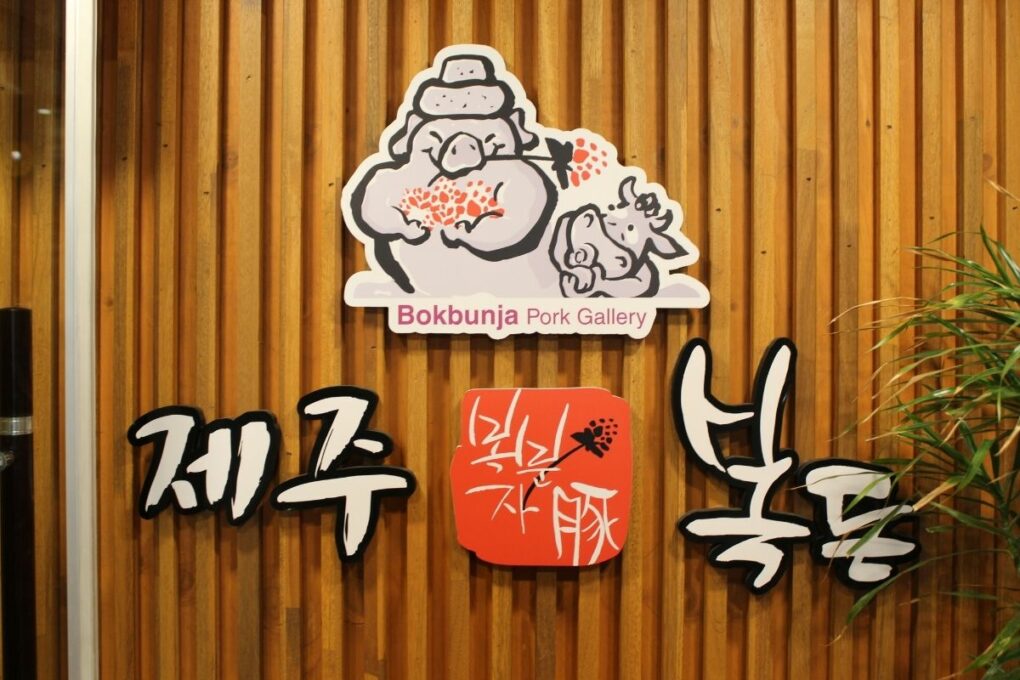
What to Know: Visiting South Korea
Travel tips for jeju island, getting around jeju (by bus or car), what to do in jeju, foods to eat in jeju, where to stay on jeju island, jeju practical info, basic korean lesson, jeju attractions map.
Those of you looking to visit South Korea are probably as confused by all the changes as I was before I visited again post-covid. But as of March 20th, 2024, masks are still required in medical settings like hospitals but are NO LONGER REQUIRED in all other indoor public places, including public transport.
Here are what document you need to visit Korea as a tourist:
- K-ETA ( Korean Electronic Travel Authorization , applied for at least 72 hours before departure) OR Visa to visit Korea (countries which previously had a visa exemption now need to apply for a K-ETA). From April 1, 2023 to December 31, 2024, passport holders from 22 countries will also temporarily NOT need a K-ETA or visa to visit Korea (includes: Australia, Austria, Belgium, Canada, Denmark, Finland, France, Germany, Hong Kong, Italy, Japan, Macao, Netherlands, New Zealand, Norway, Poland, Singapore, Spain, Sweden, Taiwan, UK, US (including Guam)). If you're a valid ABTC card holder (APEC card), you are not required to apply for a K-ETA [excluding Americans & Canadians].
- Q-Code (can also be filled out upon arrival) : visitors need to fill out information for the Korean quarantine system, known as Q-Code . Note that all travelers are now allowed in regardless of vaccination status, but you do need to have filled out your Q-Code before going through immigration.
If for some reason you need to take a covid test in a South Korea airport, the cost of a covid test in Incheon Airport is currently ₩80,000 ($60USD), with some options within Seoul as inexpensive as ₩65,000 ($50USD). There's no testing requirement to leave South Korea.
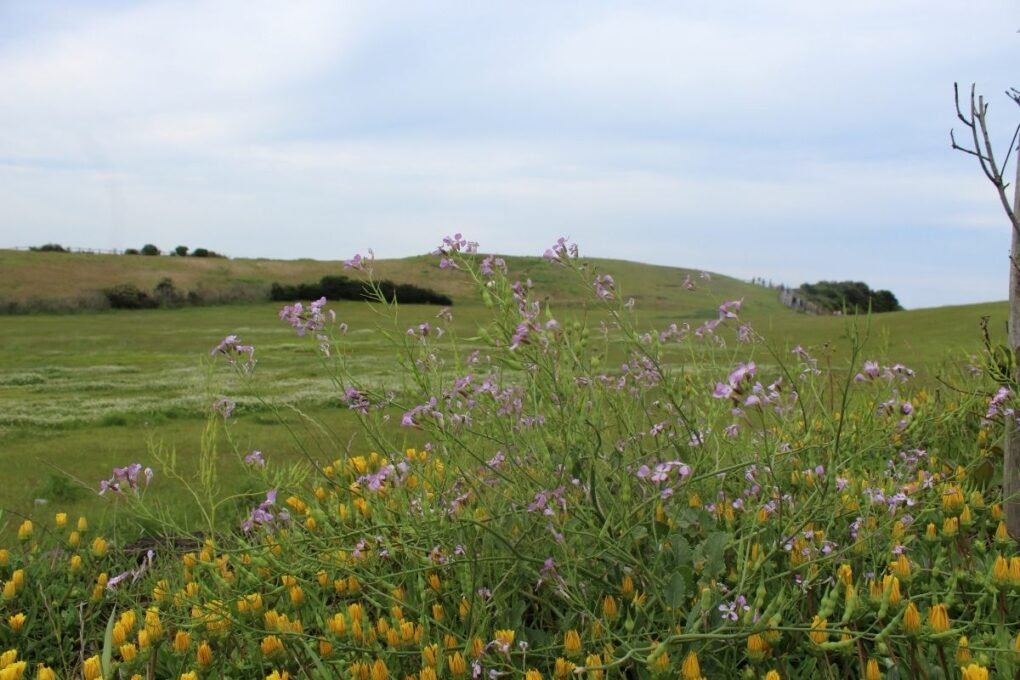
- Get a sim card at the airport . I lived in Korea for three years using only a pre-paid sim card from Olleh. That cost me ₩20000 (~$16USD) a month for 2GB of data, and another few thousand KRW a month for calling. It saved me so many times over the years to have someone be able to call a hotel or taxi for me using my own phone.
- Speaking of calling, the Korea Travel Hotline , known to expats as the "English Help Line," should be your go-to with any issue. Simply dial 1330 and press 1 for English, and you'll be connected to someone at any hour of the day, any day of the week. They can help with ticket prices, bus schedules, attraction locations, and even translating for taxi drivers, and helpers also speak Japanese and Chinese.
- Rent a car (you'll need an international driver's license). M ost attractions in Jeju are far from cities and far apart, and taxis can also be hard or impossible to come by after 10pm (coincidentally, also when most of the buses stop running). You'll want to download the Kakao Taxi app if you plan to mainly taxi taxis around the island.
- Travel the island in sections . Take a careful look at the Jeju attractions map at the end of this post, and note the opening hours & days for any of the ones you're interested in (this info is listed next to each one below). Even though the island appears small at first, it can be a very long trek between stops if you don't plan ahead .
- Just as in the rest of Korea, Google Maps isn't useful or detailed on Jeju, so do remember to download the English-language version of Naver Maps , the Korean map app, in order to more easily navigate around.
- Beaches close for winter , at least for swimming. Just like in the rest of Korea, from September to May you're not allowed to swim at beaches in Jeju, though you can certainly still walk along the them and take pictures.
- Jeju has a decent food scene, but don't come here for the nightlife , as most everything shuts down by 10pm or 11pm, even the bars.
- Speaking of early nights, try to start your day early . Lots of attractions open around 8am or 9am, and close around 5pm or 6pm; the last ferry from Udo Island comes back before 7pm .
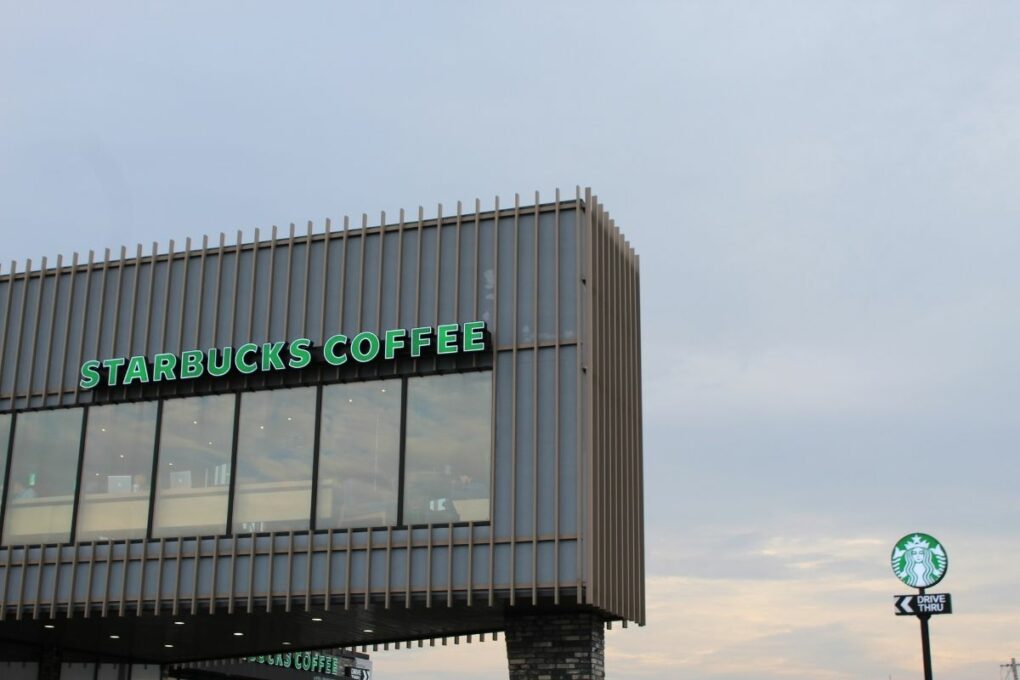
When you get to Jeju you will find yourself on the north side of the island, nearly inside Jeju City. It's certainly possible to get around Jeju Island by public bus or taxi, but not recommended (for time & money reasons) .
But for those who hate to drive as much as I do, I've also shared tips below on how to get around Jeju by bus. However the best option is to rent a car on Jeju, as it will make it easier to predictably plan when you're able to leave places.
I've gotten around Jeju by tour bus, public bus lines, and driving a rental car. There's no metro or train system on the island, though there are ferries to the mainland & Udo.
If you travel Jeju by bus, you'll want to stay along the coast so that you're never more than two buses from where you want to go. I recommend staying in Seogwipo, so that you can follow my Jeju itinerary .
Your favorite bus line on Jeju will be the 201, which takes you in a ring around the island.
The scene along the coast is particularly gorgeous from April to June, when most of the flowers begin to bloom. For your initial arrival, Jeju airport limousine bus 800 (or 800-1) will take you from the airport to Seogwipo most directly, with daily buses every 15 minutes between 6am-10pm.

Most of the bus routes stop running just before 10pm. If you arrive after that, I'd recommend staying in Jeju City for the first night; you can take the 3000's lines to a few different places, but those also stop running at 12am. Taxis will always be waiting to take you somewhere, but the lines are super long at night.
You can buy a transportation card known as a T-Money card at any 7-11, and then use it to get all around the island, even in most taxis (but always bring cash just in case). Most bus fares will be ₩1250 (~$1USD) each way, although the cost of taxis depends completely upon distance.
Be sure to download the Naver Maps app before arrival so that you can get bus route info immediately. Driving in Jeju is quite safe, and a self-drive in Jeju is also the best way to see the beauty of the island's countryside vistas, stay flexible in case of weather interruptions, and stay in cheaper hotels .
The only requirements to rent a car in Jeju is a license in your home country and an international license (which is applied & paid for separately before you arrive to South Korea). Having a car on Jeju got us to about twice as many sites across the island as compared to when I took the bus.
Plus, your Korean GPS will give you numerous speed warnings every time you're approaching speed cameras (no excuses for getting a ticket!), so don't freak out when it chirps and beeps at you loudly. For a car rental, Jeju Island is one of the easiest spots I've ever rented in.

Jeju counts itself with 3 UNESCO World Heritage Sites , as well as a fair amount of quirk and Korean tradition (naked hot tubs, anyone?). This list could legitimately go on for pages, but I've decided to stick to just the weird, the natural, and the educational, divided by region.
If doing a self-drive on Jeju, you'll want to keep some cash on hand to pay for parking (no more than a few dollars at each spot). Surprisingly, I find the points of interest in Jeju to be much more handicap accessible and walkable than those in Seoul or Busan.
Most everything is available in Korean, English and Chinese, and many more people are able to speak English than I generally find in Seoul. So don't shy away from something that sounds interesting, just because it looks rural.
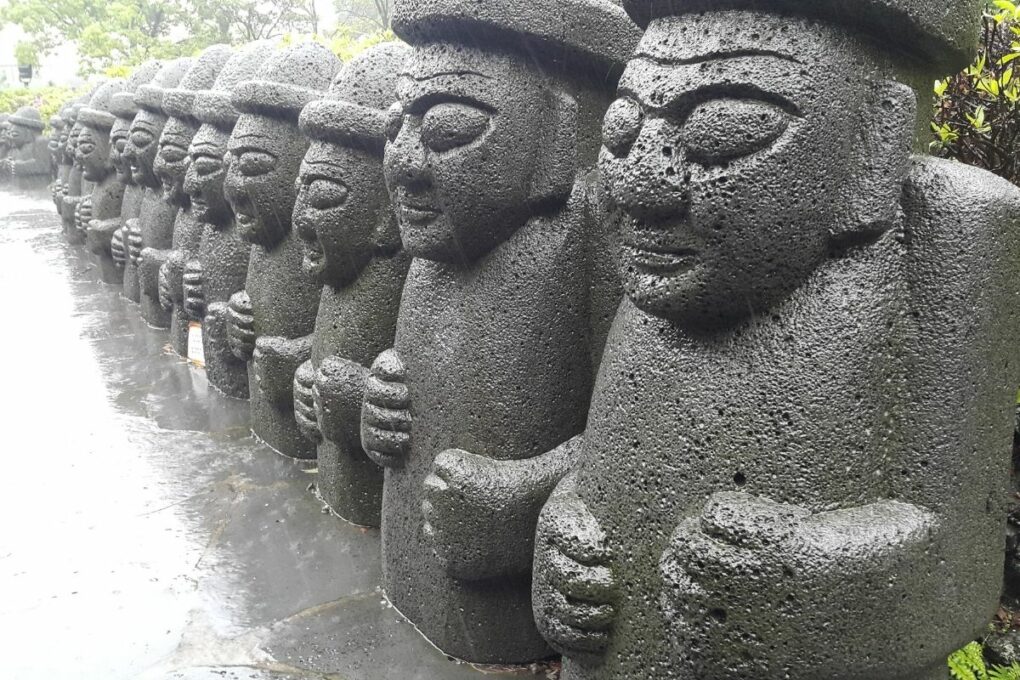
Hallasan Hiking /// free /// roughly sunrise to sunset It's tough to designate a specific starting point to hike Hallasan, considering that it's at the center of the island. But Jeju City is as good a place to stay as any when planning to Hike another of Jeju's UNESCO World Heritage sites.
Hallasan is actually an active volcano, though it spews no lava or smoke at the moment, and it's the reason why Jeju island exists at all. The views from the top are unforgettable, and you have 5 different paths you can use to reach the top, each of a different difficulty level.
Note that it is not safe to Hike Hallasan in the rain and that you should bring extra layers no matter the weather or time of year when you start.

Orange Picking Experience /// ₩3000-₩6000 /// usually 8am-6pm With peak orange season from November to February, orange picking is a winter activity on Jeju that most everyone participates in, local or tourist. The deal is basically a flat fee per person to pick and eat as many oranges as they want & bring home a kilogram.
Guests are offered a lower price for every kilogram picked beyond that, which locals definitely take advantage of. However, most Korean pick their oranges as slowly as possible in order to maximize photo opportunities, and I find it hard to blame them.
Lucky for us, just like with Hallasan, it's hard to nail this down to one area of the island, as the island's fertile soil allows orange groves to flourish basically anywhere. But keep in mind that you're more likely able to catch a taxi to a nearby orange grove from either Jeju City or Seogwipo.
Hamdeok Beach (함덕 해수욕장) /// free /// roughly sunrise to sunset This is one of the best beaches in Jeju Island, and also one of the most popular due to its central location near the island's capital city.
Locals love it for the pristine white sand and mild waters, as well as the wind protection provided by Seoubong Mountain just behind the strip. If you're looking to spend an afternoon at the beach on Jeju, this should be one of your first picks, and not just because of the volcanic rock bridge and impressive disappearing sandbar.

Jeju NANTA (홍대난타전용관) /// ₩40000-60000 /// shows at 4:30pm daily The first time I saw this show, I couldn’t even read Korean, much less understand any of it. But it was such a knee-slapping hilarious performance that I highly recommend it to any visitor. There’s almost no dialogue, and all the songs are their own mini-slapstick performance, complete with food props and your monthly allowance of juggling. Shows are at 4:30PM Monday-Sunday.
Love Land (erotic museum) /// ₩9000 entrance /// 9am-midnight daily Love Land is a very blasé name for this unusual park full of penises and other erotic sculptures. It was actually opened in 2004 by a group of art students from Seoul's Hongik University (of 'Hongdae' fame).
T he museum has since become a very successful tourist attraction, with almost all visitors snapping a selfie with one or more of the well-endowed sculptures. Please note that you must be 19 or older to enter the park (the age minimum has changed since 'Korean age' was essentially eliminated).
Manjanggul (lava cave) /// ₩3000 entrance /// 9am-6pm daily (closed 1st Wed. every month) This is definitely a cave. It's cold and badly-lit, but the long walk down into the volcanicly-formed earth most certainly appeals to people.
As one of Jeju's UNESCO World Heritage sites, the 1,000 meters of cave open to the public gets quite packed on weekends. The slippery floors can become extra hazardous, so bring grippy shoes.
The more claustrophobic folks in the bunch will enjoy the lovely greenery above ground, especially in springtime when the grass is dotted with flowers.
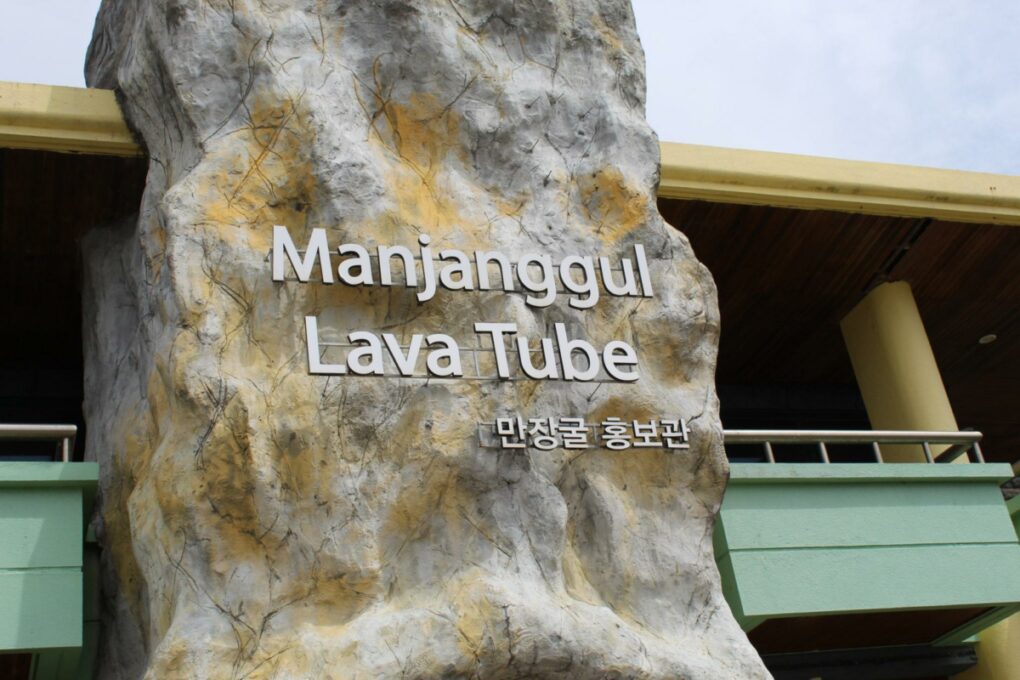
Jeongbang Waterfall /// ₩2000 entrance /// 8am-6pm Jeongbang's claim to fame is as the only waterfall in Asia to fall directly into the ocean, which is honestly a really cool sight to see. Even better, you can see it basically from the parking lot, and get up close & personal with just a 5-minute walk. There's even a tiny beach in front of it, just before the vast ocean extending way beyond.
The walk down is worth it in nice weather, but can be a bit treacherous in rain or snow. If you're lucky, you may even see a rainbow— do it for the 'gram, I dare you. There are a few shops just along the parking lot selling souvenirs, oranges, and Jeju chocolates, as well. Look for the coffee shop with free wifi if you need a break.
Cheonjiyeon Waterfall /// ₩2000 entrance /// 8am-6pm Cheonjiyeon deserves a place on this list on a nice day, but in the rain it's nothing but a waterfall. Jeongbang is a gnarly sight no matter the weather, but Cheonjiyeong is a worthy stopover only if you have the time.
T hough it honestly looks like some gnarly white water rafting could take place here. It's nice for a picture, however, and taking a rest in one of the many cafes. Not to be confused with Cheonjeyeon Waterfall, which is a three-tiered waterfall much further from Seogwipo.
Olle Trails (Oedolgae Rock) /// free /// roughly sunrise to sunset A rock may not sound like a very impressive attraction, but this stunning viewpoint is the perfect spot from which to admire the ocean & the many small islands off the coast of this side of Jeju-do. Many people come here each day just to trek the well-trod trails and stop at a lookout every once in awhile to soak it all in.
However the lazy among us (like myself) tend to stand at the lookout point and try to decide what each of the rock formations looks like. Think of hiking Olle Trail as cloud-watching, but for ancient volcanic rocks. Seriously, though, this place is gorgeous .
Jusangjeolli Lava Cliffs /// ₩2000 entrance /// roughly sunrise to sunset Often compared to the Giant's Causeway in Northern Island, the Jusangjeolli cliff faces are another act of nature bestowed upon Jeju by the volcano that formed its body.
Easily less than 5 minutes from the parking lot, the cliffs are deep grey rectangular and square formations which jut out into the ocean as if slowly formed by the stacking of blocks. They're quite the popular photo spot, and certainly worth a stop.
But I have to warn you that the line on the weekend can be long, and quite the brutal place to be waiting if it's raining.

Jeju Folk Village (Jeju Minsokchon) /// ₩11000 /// 8:30am-5pm or 6pm (spring & summer) Jeju Island is the land of the unexpected, and on my last trip I ended up in this tiny mountainous village for lunch, in an area I later learned was called Minsokchon .
The traditional Jeju Folk Village seems to have sprung out of the mountains, populated with short, flat-rooved structures which share with visitors the traditional way of life on the island.
It's a bit further down the east coast than the other Jeju attractions I'd recommend (but still accessible via bus 201!), however they have a wedding hall, horseback photo-ops, live performances, and restaurants, with overall plenty of activities for a full & fun afternoon.

Jeju Herb Garden (허브동산) /// ₩12000 (+ ₩12000 for optional foot bath) /// 9am-10pm My first time visiting the Jeju Herb Dongsan, I was amazed by how massive the grounds are. They have flowers in bloom at every time of year, and over 150 types of herbs growing across the property.
There's a café, restaurant, shopping area, multiple windmills, a mini golf course, and even a hotel you can stay in. The name in Korean is more like the Garden of Eden rather than your backyard herb garden, and the space genuinely lives up the name.
I tend to spend just a couple of hours wandering the grounds in the spring, but in the summer there are so many activities going on that you could easily pass an entire afternoon there. Plus, at 6pm every day, the grounds light up with over 5 million tiny bulbs, largely placed for optimal viewing and photography, making it a magical experience no matter the time of day.
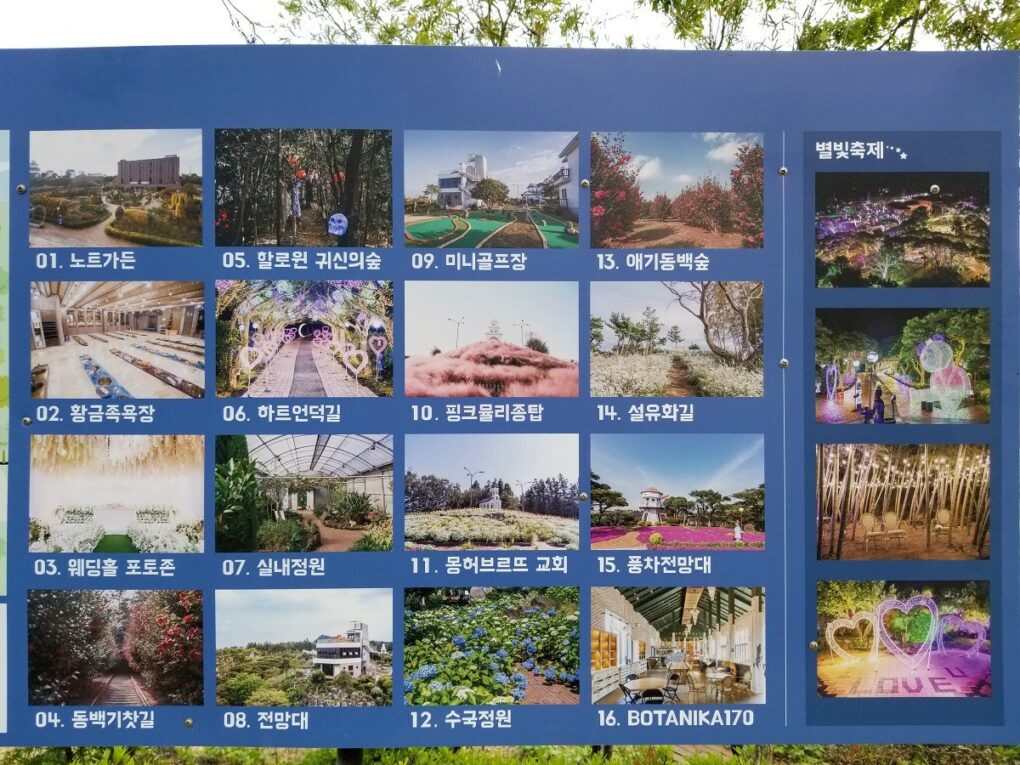
Aqua Planet Jeju /// ₩37200-₩40900 /// 10am-7pm If you're visiting Jeju with kids, this is a must-see. This massive aquarium has not only penguins and sea lions, but whale sharks.
They have daily demonstrations and educational programs about the animals (in Korean), but all of the aquatic animals found in & around Jeju are in their large main building (with English signage). The entrance is pretty steep, but I promise that the photos are worth it.
Seopjikoji (scenic view point) /// free /// roughly sunrise to sunset Just across from Seongsan is Seopjikoji, an area famous for being the filming location for several dramas and a gorgeous area, to boot.
The draws over here are a defined walking trail along the cliffs and a beach side restaurant, though the most gorgeous scenes are in the spring, when the hills are in full bloom with bright yellow canola flowers. Watch out for selfie sticks, and try not to buy too many trinkets.

Submarine Ride to & from Udo /// ₩36000-₩55000 /// departing 8:55am-4:30pm Again, this is not a cheap activity, but it is one that you'd be hard-pressed to find anywhere else. Jeju is famous not only for its women divers, but also for its scuba diving.
The marine life in and around the islands is very vivid, in a way that's difficult to experience with snorkeling.
And the best part? Children of all ages are able to experience the beauty of the ocean, without the need to swim in it. Check out the submarine company here . Note that there is a 10% discount if you book with them online.
Bike Around Udo Island /// ₩10.500 (same-day round trip ferry) /// 7:30/8am-⅚:30pm (varies by season) Despite the fact that Jeju has become famous for their black pork, Udo is actually named for a cow. The shape of a cow, actually, which is what people thought it resembled when they first decided to name things.
Like the rest of Jeju, Udo is know for its great views and it's beaches, but unlike the rest of Jeju, Udo has a special dessert: peanut ice cream.
Bear with me here. Imagine you could ride around on a scooter on Udo with a cup of their famous peanut ice cream and a beach waiting for you to spend the afternoon on it. Just don't forget your international driver's licence if you want to ride around on anything with a motor!
Seongsan Ilchulbong (sunrise peak) /// ₩2000 /// Summer 7:10am-7pm & Winter 7:30am-6pm Is this in Korea or the Highlands of Ireland? The immensity of the green and the brightly colored flowers that greet you in the spring could very well distract you from ever climbing to the top of Seongsan.
The final of Jeju's three UNESCO world heritage sites, this windy fairy tale mountain was formed long ago by a volcanic eruption, just like the rest of Jeju Island. Available in the area is the hike to the viewpoint, and horseback riding and boating for a bit extra.
If you're lucky, this is also where you'll catch site of some of Jeju's famous women divers. Note that no food is allowed once you pass the ticket booth, so you'll have to take any peanut ice cream pictures from outside the gates.
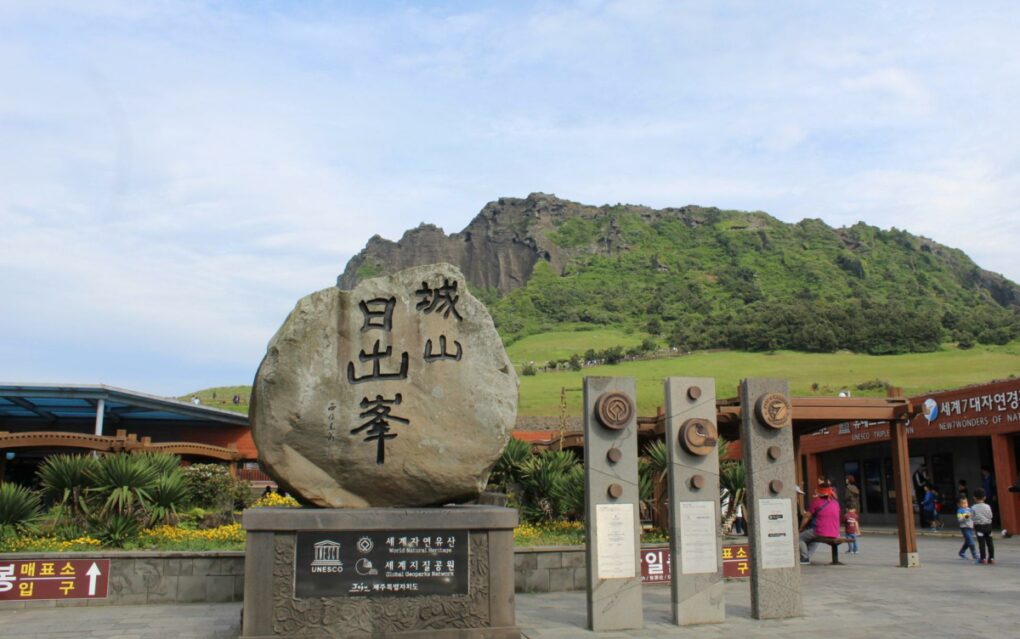
Western Jeju-do
A Very Colorful Photoshoot /// free /// roughly sunrise to sunset Depending on the time of year, from March to October you could find yourself posing with cherry blossoms, canola flowers, lavender, sunflowers, or pink muhly.
Each of these blooms can be found during their own growing season in many corners of both Jeju and Udo. It all begins with the infamous cherry blossom season on Jeju, which starts sometime in mid to late March.
The season of flowers in Jeju ends with the brilliant pink muhly (actually a grass native to the US), with the selection changing every month or so. The blossoms you can see on your trip to Jeju will depend on the time of year during which you visit.
The Chocolate Museum /// ₩6000 /// 10am-6pm Built to resemble a castle, this massive museum is actually the second-largest chocolate museum in the world, behind the one in Cologne, Germany. Its exterior is covered in a volcanic landscape inspired by the island, while the inside smells as if it were coated in chocolate.
There are exhibits on chocolate history and chocolate making, as well as a cafe and a sales area where you can buy boxes of the sweet stuff. It's a chocolate lover's paradise, but I'll also admit that I've seen better . Note that the Jeju chocolate museum closes an hour early in winter and an hour late in summer.
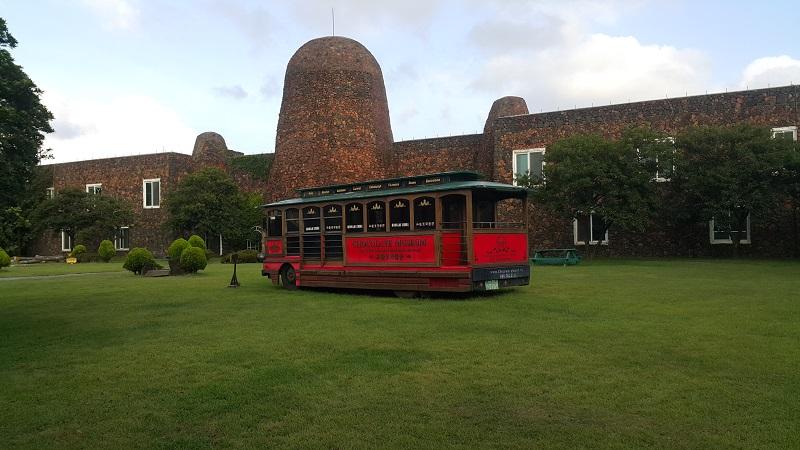
Sanbangsan Carbonate Springs /// ₩12000 base entrance /// 6am-midnight (indoor hot springs) This will be one of the strangest experiences of your life, if you've never been to a Korean sauna. Everybody here is naked. Separated by gender, but naked. It takes some getting used to. And when you do, it's glorious.
This hot springs, glorified swimming pools in many ways, are divided by both temperature and healing properties. It's a very soothing way to spend an evening, especially if you're ready to scrub down everything afterwards; trust me, you'll feel baby smooth.
Note that the jjimjilbang (sleeping area) is open 24 hours, and costs an extra ₩10000 to stay in.
Jeju Trick Eye Museum (트릭아이미술관) /// ₩7000-9000 entrance /// 9am-6pm One of my favorite things to bring visitors to, the Trick Eye Museum is one of the best winter activities in Jeju.
It’s fun in the summer as well, but with relatively fewer things to do in Jeju in winter, spending a couple of hours acting a fool with your friends is the perfect medicine. There’s a typical path which visitors take that brings them past all of the backgrounds, and marks on the floor to show you how to pose for each one.
If you download their app, there are additional special effects for many of the backgrounds. For an additional ₩3000 per person, you can also visit the Greek Mythology Museum, with shares a space with the Trick Eye Museum .

Geumneung Beach (금능해수욕장) / // free /// roughly sunrise to sunset A relaxing option a bit further from the city is Geumneung Beach, a favorite Jeju Island beach amongst locals, especially in the summertime.
It's known for its idyllic views of Biyando Island, accessible & kid-friendly sandbar, crystal clear water, and black lava rocks, perfect for walking around or visiting with kids. This more hidden gem is also surrounded by cool restaurants and cafes to relax in while you enjoy the sunset over a drink or meal.
O'Sulloc Tea Fields & Museum /// free /// 9am-6pm Being a tiny museum, I wouldn't expect much in the way of tea education, but if you came for the tea products , then this is your spot.
The small museum is attached to a massive cafe serving up a variety of teas from their farm, plus coffee and desserts . In the Innis Free store a hundred meters away is the beauty products section of the grounds, along with another massive cafe.
The best part for most people will be the tea plantation itself, however, which is situated across the street from the museum and simply laden with photo-ops. There are honestly so many things to do in Jeju, but it's all so different that it's unlikely that everything will appeal to you.
So just pick your favorites in each area, and then move on to the next one.
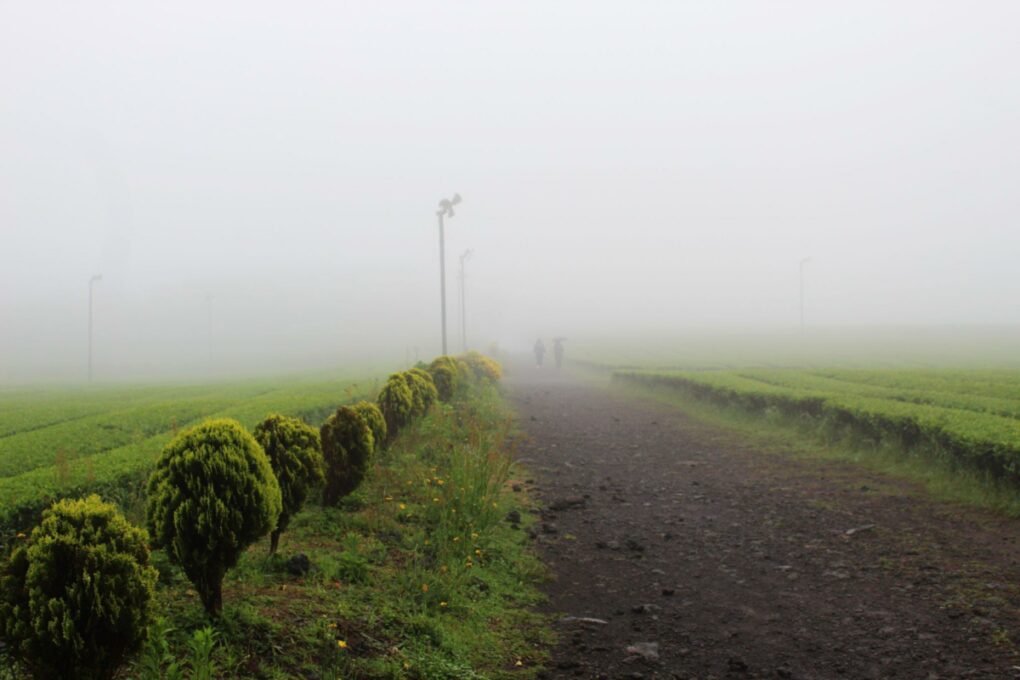
Sannakji ("live" octopus)
This i s baby octopus, killed and then immediately cut up & served with sesame seeds on top, but the freshness of the animals means that the tentacles are still moving around when it's served. This one can be hard to stomach (or swallow), but it's certainly an important dish here.
Abalone (Sea Snails)
It may sound gross to eat snails, but these are actually a type of shellfish, more like oysters than snails. They're one of the many seafoods caught by the women divers of Jeju, and are caught & served fresh every day from most restaurants in Jeju.
T he slabs of pork belly (its most common form) you'll find sold in most barbeque restaurants in Jeju are a softer and more flavorful version of the meat from the mainland. Don't forget to check out Black Pork Street in Jeju City.
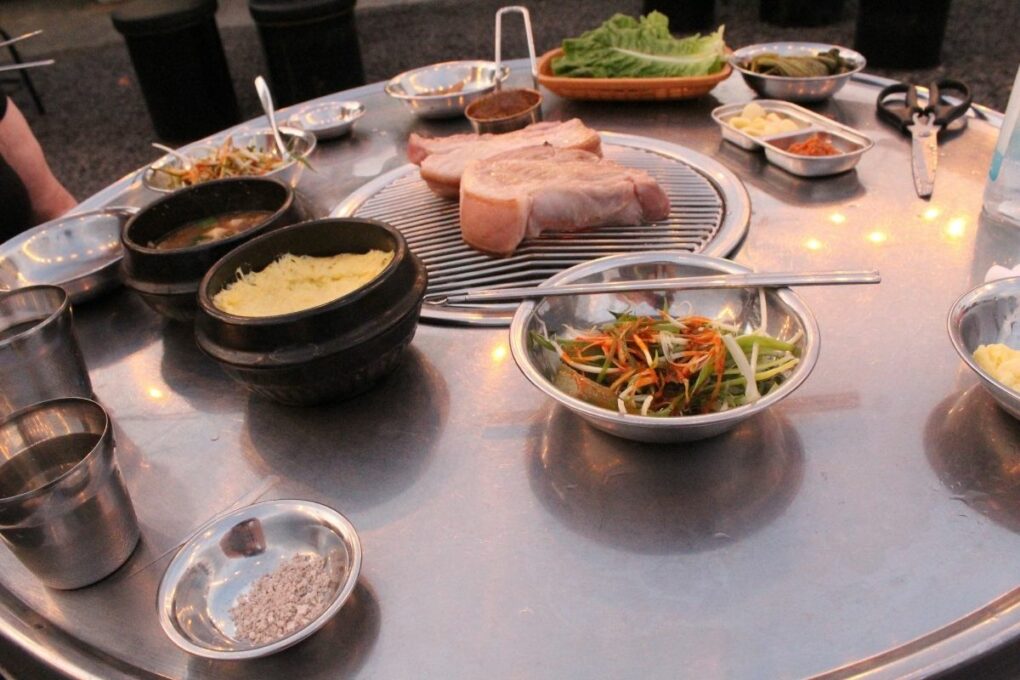
Green Tea Anything
Home to the O'Sulloc tea fields, you'll see green tea flavored things throughout Jeju Island. But nowhere is there a higher concentration of green tea items than at the O'Sulloc tea museum. The crowd favorites are the green tea lattes and green tea cakes, but I always go for the green tea churros .
Hallabong (those big oranges grown throughout the island)
Winter is the best season for hallabong (Jeju oranges), but some of the groves grow hallabong year round. You'll see these beauties for sale in boxes along the side of the road during high season, and at gift shops in most of the major tourists sites.
Peanut Ice Cream
Depending on where you get it from, the cream flavor can be more or less intense, and the ice crystals can be strong. However, peanuts are grown on Udo, the island off the coast of Jeju, making it a local food & one that Koreans are rightfully very proud of. I like it okay, but most people just buy it for the cute pictures., anyway
Jeju Chocolate
As mentioned above, Jeju is home to the world's second-largest chocolate museum. This means that Jeju chocolate has become famous throughout Korea over the years. If you're bringing back a souvenir for those who couldn't come with, a box of chocolates is a good option.
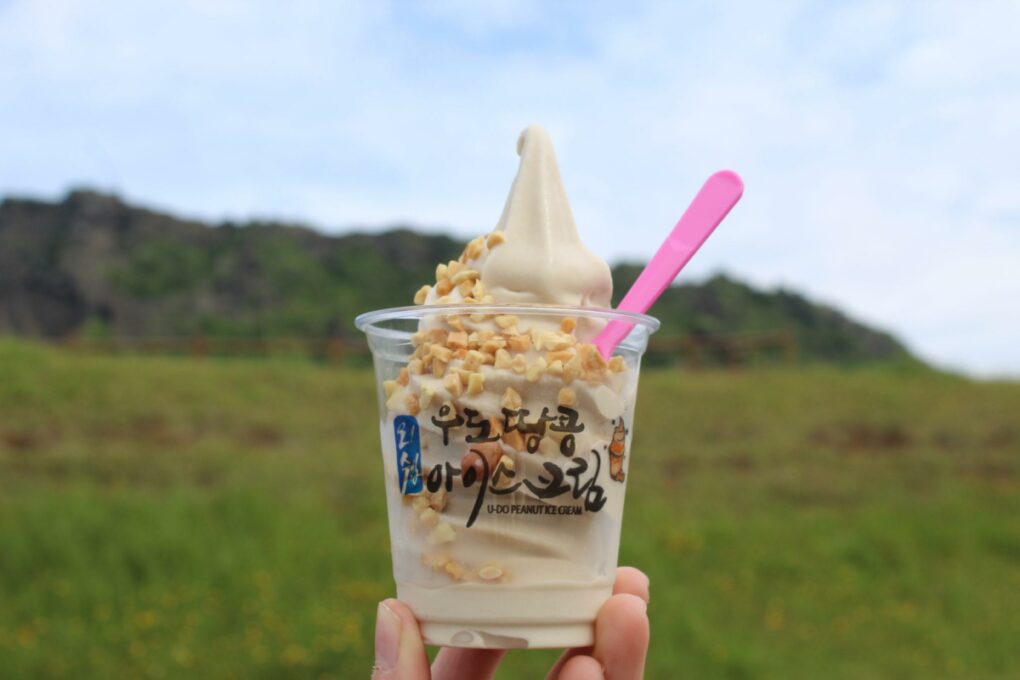
Jeju Island is by no means small, but it is navigable enough to stay in one place with a rental car and see the whole island in three or four days. So I also cover where to stay on Jeju Island , narrowing it down to the four best regions in which to base yourself. It includes a different spot for every budget and comfort level.
If you're unsure of where to stay at all, or just have a day or two, then I highly recommend you stick to the transportation hub of Jeju City. If you're spending at least 3 days on Jeju, consider splitting up your accommodation and staying on the two opposite sides of the island.
Click here to see reviews of Jeju accomodation on Agoda.
Jeju Population: ~680,000 people.
Language: Korean, though most who work in tourism will speak a little English. Some people speak some Japanese and Mandarin.
Currency: the Korean won (KRW), written as either ₩ or 원 (in Korean). 1000 won is equal to about $0.78USD or ₱42.
Voltage: 220v/60Hz, with two round holes for the plug (type F).
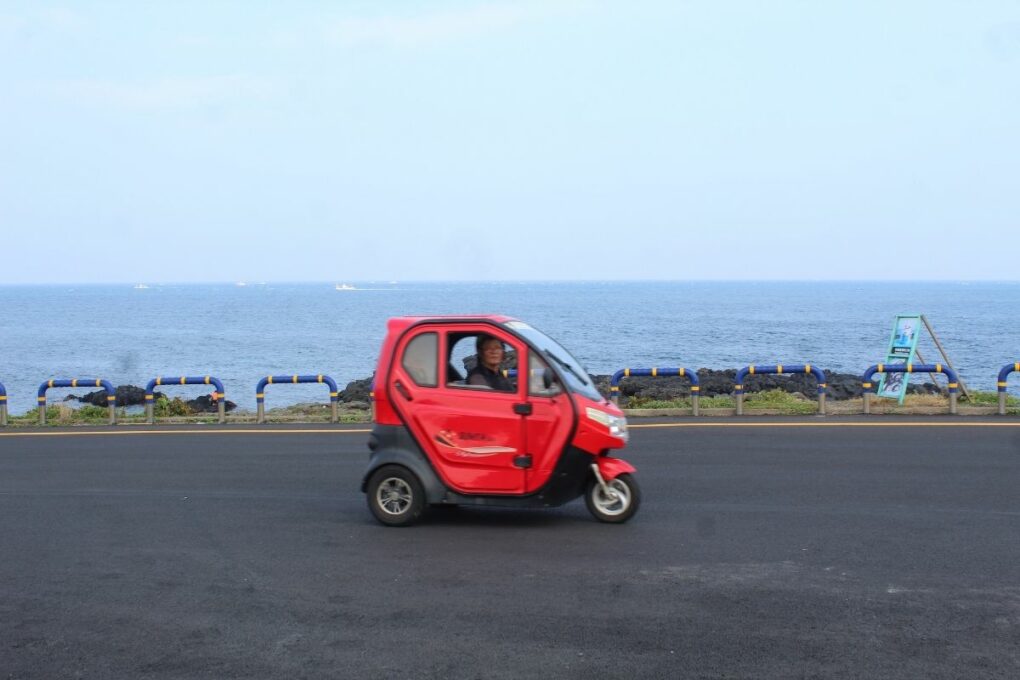
Korea Visa : While there are still 112 countries whose citizens don’t need to apply for visas before visiting Korea for 30 to 90 days, beginning from September 2021, ALL visitors from those approved countries still need to have an approved K-ETA before arriving in Korea. K-ETA stands for Korea-Electronic Travel Authorization.
You can check if yours is one of those visa-exempt, countries and how long your visa lasts for, here . But remember, even if you don’t need to apply for a visa, from now on you do still need to apply for a K-ETA , which is good for two years from the date of approval.
Best Time to Visit Jeju
There's really no bad time to visit Jeju, since the weather is so much milder compared to Seoul. But summer is definitely peak season, with prices also at their peak as both families and honeymooners packing the beaches & resorts .
The best month to visit Jeju Island is May, when the canola flowers are blooming and locals haven't yet started packing the hotels.
Since most people come to Jeju for just 3 or 4 days at a time, flights are much cheaper to arrive Sunday through Wednesday & depart Wednesday, Thursday or Saturday.

F or a native English speaker, Korean is one of the harder languages to learn. So to help you prepare for your trip, I've compiled a shortlist to help you order food and just be generally polite.
Many Koreans speak enough English to understand your order in a restaurant, but it's always polite to thank someone in Korean. I'd also highly recommend downloading a picture-capable translation app before you go, like Google Translate.
Hello! // An-nyeong-ha-se-yo ! (안녕하세요!)
Thank you. // Gam-saahm-ni-da . (감사합니다.)
I don’t speak Korean. // Han-guk-aw jal-moat-hae-yo. (한국어 잘못해요.)
Do you speak English? // Yeong-aw jal-hae-yo? (영어 잘해요?)
It's to-go/takeout. // Po-jahng ee-eh-yo . (포장 이예요.)
How much is it? // Eol-ma-yeh-yo? (얼마예요?)
One of these, please. // Ee-gaw ha-na ju-say-yo. (이거 하나 주세요.)
More South Korea Travel & Life

Reader Interactions
April 07, 2023 at 11:02 pm
First, thank you very much for the info you shared with the world. It was exceptionally useful when planning my trip to Korea and to Jeju.
A few comments that I hope you and your readers will find useful, based on my recent visit to Seoul and Jeju. This was my first visit to Korea.
1) Get an eSIM card before you go to Korea.
You can buy this online and you'll get a QR code which you can scan with your phone the day you leave for Korea. The recent phone models (iPhone 10 and later, for example) support this. I got mine via Klook, which is a very well known and reputed online travel agency. I think it was about 30 US dollars for a three week / 15GB package. Shop around, there are many options. The coverage and speeds were excellent everywhere.
2) Get the Google Translate app.
Essential for reading Korean and also for communicating (speech or written text) with the locals. BTW, they know that too, and are making use of it when needed. This technology works exceptionally well.
3) Get the Naver Map app. It works really well.
4) It helps to learn the Korean character set.
Not necessary, but I found this fun and useful, esp. for things like reading restaurant names, for example. It's easy to learn it - there just about 36 signs or so and a few logical and simple rules.
5) Finding plane tickets for flying from Seoul to Jeju is easier via Klook.
Booking.com, Orbitz.com etc. don't show all airlines.
6) A car rental is essential in my opinion.
I rented mine via Hertz. Surprise - there was no sign of Hertz (or Avis, or Enterprise or any other well-known American or European car rental agency) at Jeju airport! Finally, a helpful Korean realized that the address of the "Hertz" car rental agency was actually that of Lotte's, which is a major and reputable Korean conglomerate that also offers this service. So keep that in mind.
There are dozens of car rental agencies that serve the travelers who arrive via Jeju's main airport (CJU) and you need to get on a shuttle to get to the right rental center. Everything's very well organized and clearly signaled, but you do need to know which Korean car rental agency you'll be renting from. Again, try renting via Klook or some other Asian online travel agency.
At the car rental center I went to (Lotte's) things were again very well organized. They had special desks for foreign tourists and everything went very smooth.
Driving a car is easy. The traffic's not bad but things move slooowwly. There are lots and lots of school zones (max speed 30km/h - meaning 20mph) and speed cams. Use the Naver Map app to get a sense of how long it takes to get from point A to point B. The distances are not bad, but you'll spend 30-60 minutes between many points of interest. On the last day, for example, it took 1h10' to drive the 30km (20miles) between the beach I visited and the airport! There were no traffic jams, just lots and lots of speed limits and traffic lights.
Driving is boring on Jeju. I didn't find too many scenic drives, except for one that followed the shore line, on the Eastern side of the island. Also, on the last day, the drive to the airport also had a short section (a few km) by the ocean and the light was beautiful (just before sunset). I wish I had some time to stop by and take pictures.
7) As a said above, driving is relatively unpleasant, as in slow and uninteresting views) but once you arrive at the destination you WILL be wowed.
Jeju is not Hawaii, let's not kid ourselves, but it does have both natural and man-made attractions that will take your breath away:
Manjanggul cave - highly recommended. I had a flashlight and it was even better.
Jeongbang Waterfall and, a short walk away from it, Cheonjiyeon Waterfall. Continue to walk past and you'll get to a beautiful cafe/pizza/desert place called Honeymooon House, with an outstanding view of the ocean and the nearby islands. Continue past the cafe for another few minutes for beautiful ocean views.
Olle Trails (Oedolgae Rock) - wonderful walking path and very pretty sights.
Jusangjeolli Lava Cliffs - exceptional, esp. if you can visit around sunset and low tide time, as I did. Do get close to those rocks to take outstanding pictures.
Jeju Folk Village - very nice, I recommend it for great pictures.
Seopjikoji (scenic view point) - very picturesque
O’Sulloc Tea Fields & Museum - I didn't even visit the museum (it was under construction in March 2023, when I went), but the tea shop, the gardens and the Innisfree cosmetics store and the cafe next to it were truly exceptional. Don't miss it.
Hyeopjae Beach - exceptionally wonderful. The colors are going to amaze you.
- Korean barbecue + black pork - generally speaking I don't care too much about food, or about grilled meat but this was extraordinary. You must try.
- Hallasan hiking - it seemed boring to me - mostly walking through the woods and then a relatively short distance above the tree line - so I skipped it. Take a look at some pictures online before deciding you really want to do this
- For gift shopping, I highly recommend the pedestrian street downtown Seogwipo; search for the Innisfree Seogwipo - there are many stores with gifts. I also recommend the market next to the Innisfree store.
April 09, 2023 at 1:09 pm
These are great tips; thank you so much, Petru, for taking the time to write it all out! Momondo and Skyscanner are two other great sites for tickets to Jeju.
That's been my experience with rental cars in Jeju, too; I ended up at the same singular place both times, and next trip to Korea I'm going to take step-by-step pictures or video so that it's less intimidating. Renting a car is 100% the move, for Jeju! Definitely boring, but thankfully easy. A section on scenic drives along Jeju wouldn't be a bad idea, either.
O'Sulloc is a can't miss every time I go, if only for the seasonal specials at the cafe. Next time you've got to make it to Jeju Herb Garden, which is gorgeous, and sounds just right for you! Honestly, the green tea museum is nothing to write home about, so you saw the most important stuff. It sounds like you had a great trip, too. I've never done with with Klook or Trazy, the two bigger tour companies in Korea, but I'll have to make it a point to do so next time!
May 25, 2023 at 5:25 pm
@Max, I plan to rent a car from Avis, do I need to get an International Driving Permit in the US first? Thanks.
May 26, 2023 at 12:15 am
Yes, you do. You can get one at AAA.
Leave a Reply Cancel reply
Your email address will not be published. Required fields are marked *
This site uses Akismet to reduce spam. Learn how your comment data is processed .
- Destinations
- Travel Tips
- Community Trips
- TTIFridays (Community Events)
- SG Travel Insider (Telegram Grp)

- South Korea
4-Day Jeju Itinerary Under S$500 — Road Trip Adventure Around South Korea’s Island Paradise
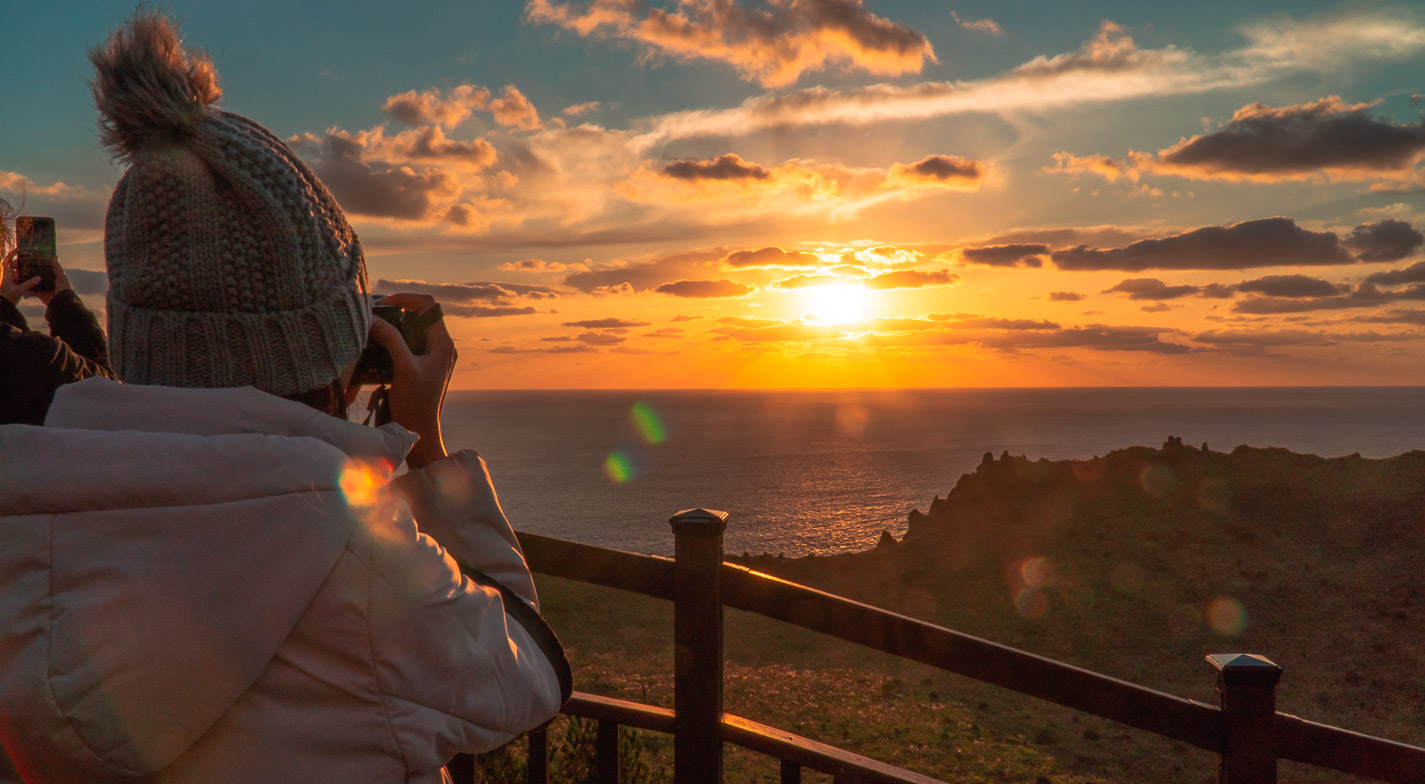
What’s a road trip without some horses, submarines, and jaw-dropping sunrise hikes? This Jeju itinerary covers the island’s best.
Ah, South Korea: Undeniably many Singaporeans’ favourite holiday destination — and for damn good reason! There’re limitless Korean BBQ and kimchi to devour, K-pop and dramas to invest your soul in, and mountains of cheap cosmetics to shop for. Just these are enough to make anyone fly to Seoul or Busan .
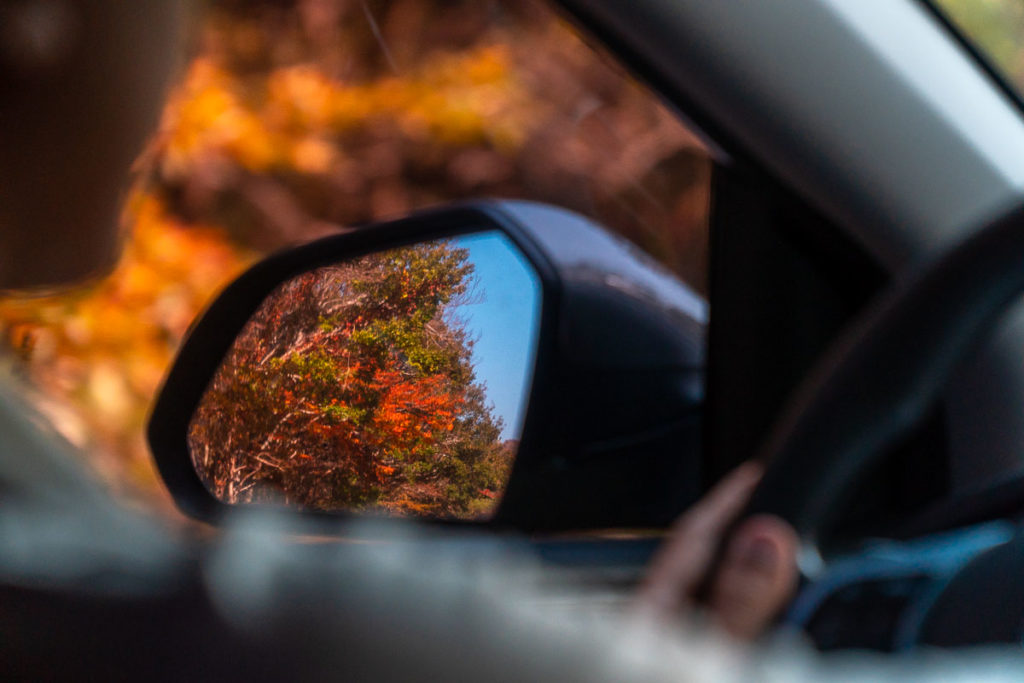
Most travellers make a beeline for the cities. However, South Korea’s breathtaking islands shouldn’t be overlooked! Besides the dreamy Nami Island , we also recommend heading to the country’s biggest: Jeju Island .
Just an hour’s flight from Seoul or Busan, the volcanic island is filled with many wonderful beaches to relax at, challenging mountains to climb, and fun attractions to visit. With so many things to do, it’s little wonder why Jeju is a perfect spot for anyone who wants a relaxing weekend getaway. It’s also little wonder why Jeju is South Korea’s honeymoon island — well, unofficial. But who’s keeping tabs? 😛
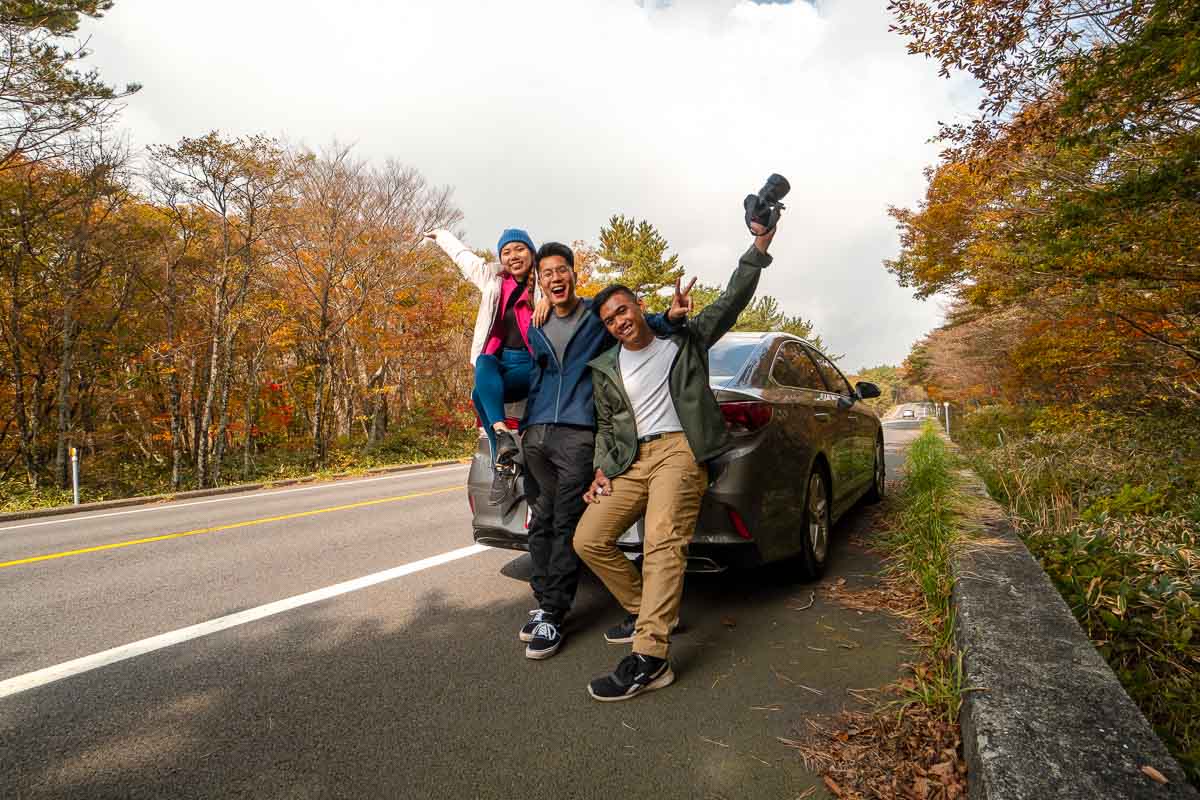
Before you dive right in, you should know that Jeju Island is twice the size of Singapore. The easiest way to get around is to rent a car, but we’ve included some alternatives below if you don’t want to get behind the wheel.
Budget Breakdown for 4-Day Jeju Itinerary
Accommodation: S$87.42 Transport: S$63.23 (incl. 4-day car rental) Activities: S$163.45 Food & Miscellaneous: S$184.90
Total: S$499/pax (cost was split amongst 4 pax) ( Click here for detailed breakdown )
Check Flights to Jeju
Flights aren’t included in this Jeju itinerary as prices vary depending on the season. That said, plenty of flights depart for Jeju daily from Seoul and Busan. Prices can even start from as low as S$23! Check current flight prices to Jeju here .
Jeju Itinerary Road Trip Route
Our Jeju itinerary mainly explores Jeju city, as well as the Eastern and Southern parts of the island. Highlights include hiking Seongsan Ilchulbong Peak at sunrise, going on an underwater submarine adventure, and exploring Jeju’s natural wonders. It’s rather busy, but better an action-packed road trip than a boring one!
Day 1: Jeju City — Eastern Jeju
Indulge at the famous black pork (heuk-dwaeji 흑돼지) street.
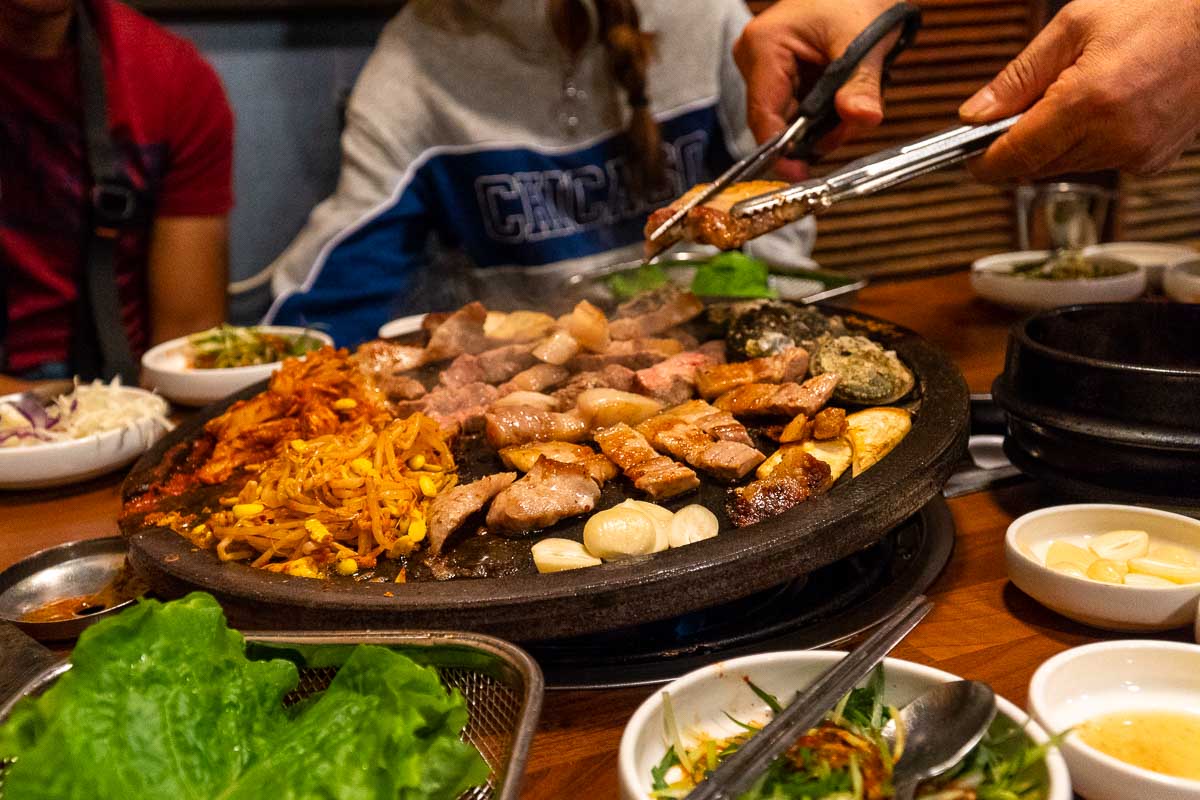
You may have had KBBQ, but have you had KBBQ with Jeju’s black pork? At the Black Pork Street , rows of restaurants serve the delectable delicacy. Cooked over charcoal, the fine black pork is grilled with garlic to tender perfection. To eat, just wrap the meat in a perilla leaf with kimchi and beansprouts, then shovel it all in your mouth!
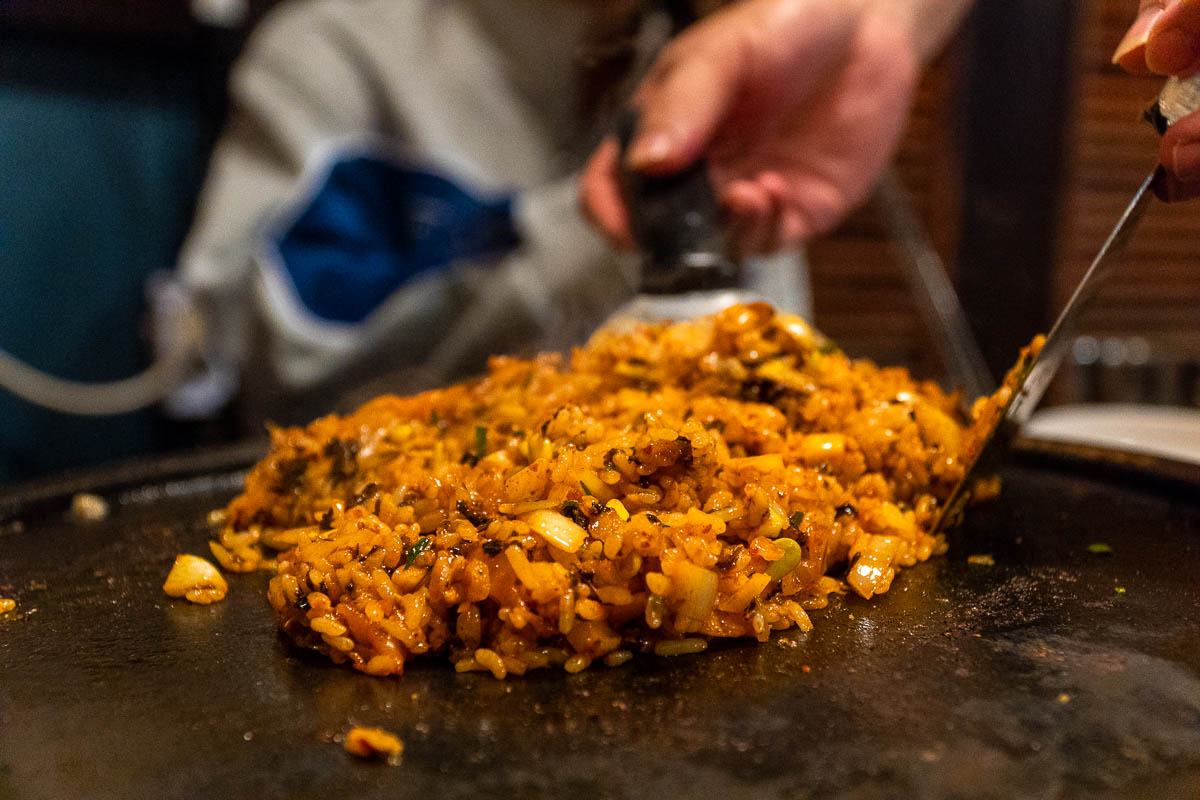
If you’ve still got stomach space at the end of the meal, order some rice to mix with the leftover veggies and meat on the grill. Now, you have your very own bokkeumbap ( kimchi fried rice).
Cost: ₩24,000/pax (~S$28.10) Opening hours: Varies; most restaurants open from 11AM – 12AM Address: Gwandeong-ro 15(sibo)-gil, Jeju -si, Jeju -do
Cross the Yongyeon Suspension Bridge (용연계곡)
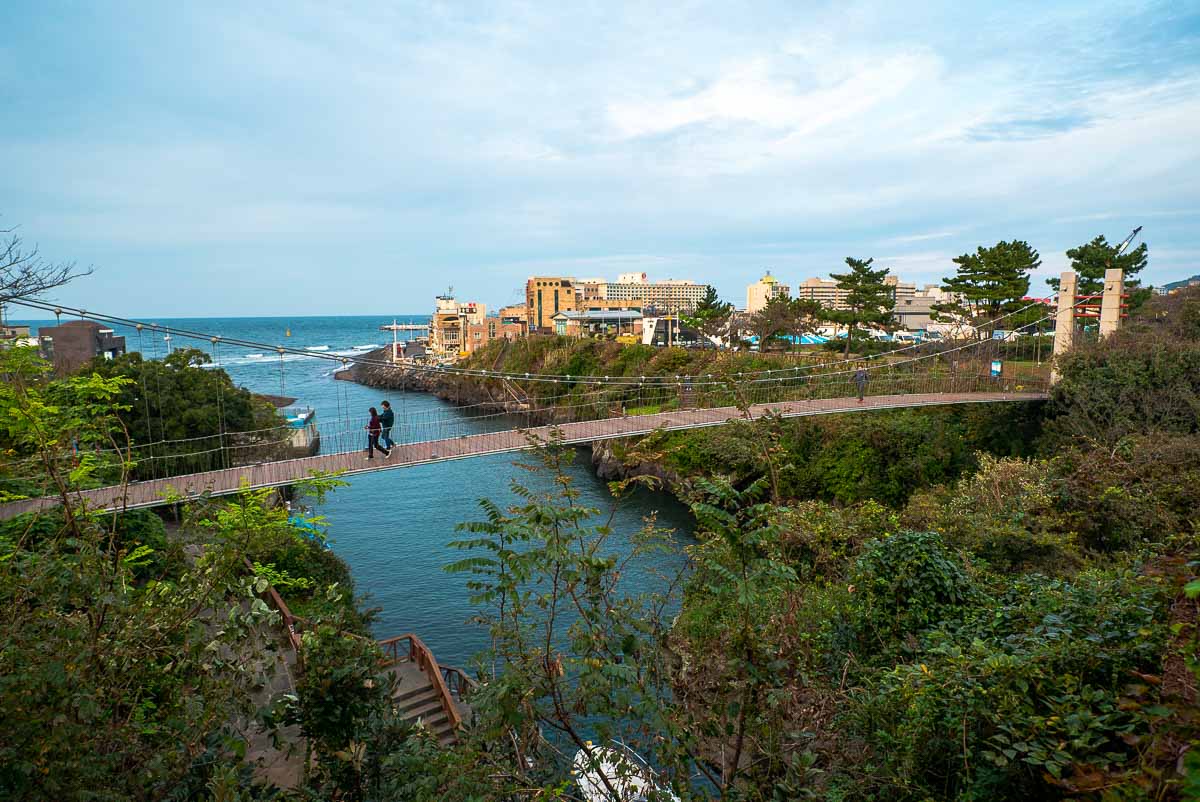
Located near the airport, the Yongyeon Suspension Bridge is a very scenic area. On one side, there’s a picturesque gorge with lush greenery and deep blue waters. On the other, you get clear views of the ocean and planes landing in the distance. The bridge lights up at night, so you’d still get excellent scenery at any time of the day.
Address: 2581-4, Yongdam 1-dong, Jeju-si, Jeju Tel: 728-2755 Parking: Paid parking lot nearby for ₩2,000 (~S$2.30)
*Photo Pro-tip: Walk up the short hill by the side of the entrance to get wider photos of the suspension bridge.
Explore Manjanggul Cave (만장굴)
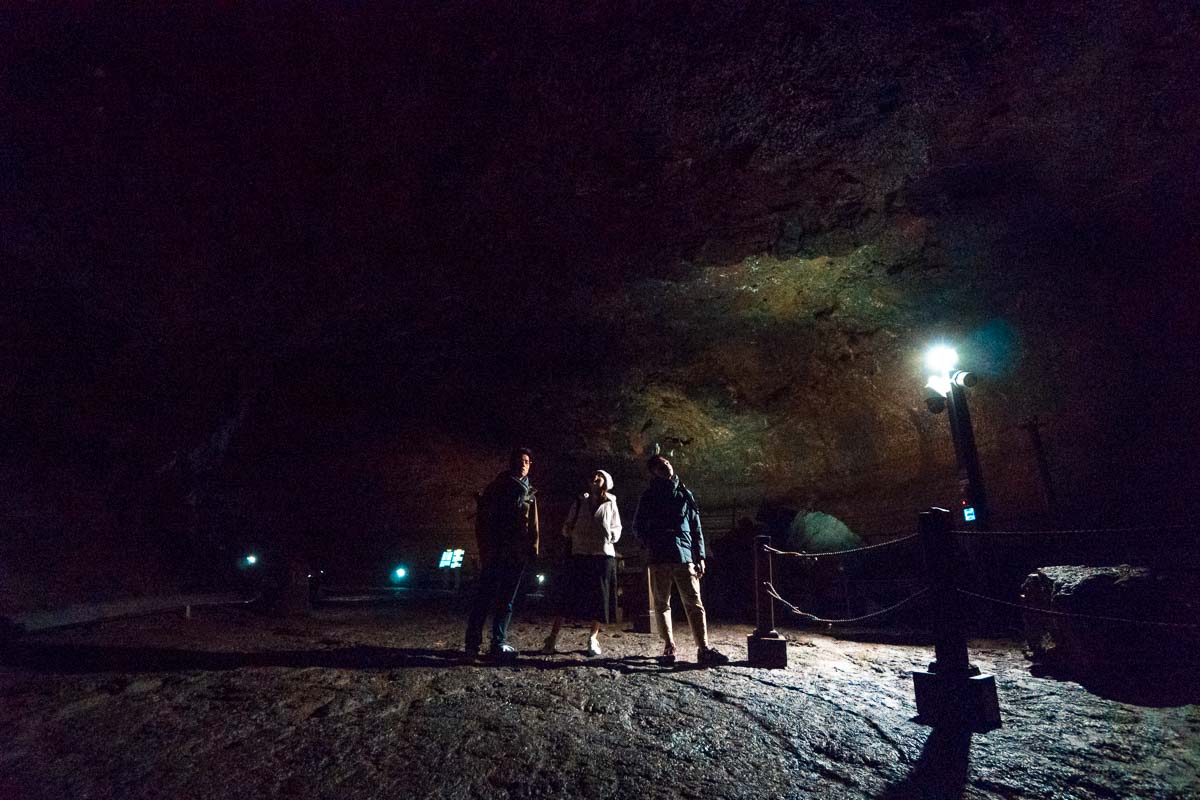
Massive enough to fit entire streetlamps inside, the Manjanggul Cave is one of the largest lava tubes in the world. Within the cave, you’ll come across well-preserved lava formations like stalactites, flowlines, and benches. There’s also the world’s largest lava column, standing at 7.6m.
As the cave is wet and has uneven surfaces, it’s advisable to wear a jacket and proper footwear.
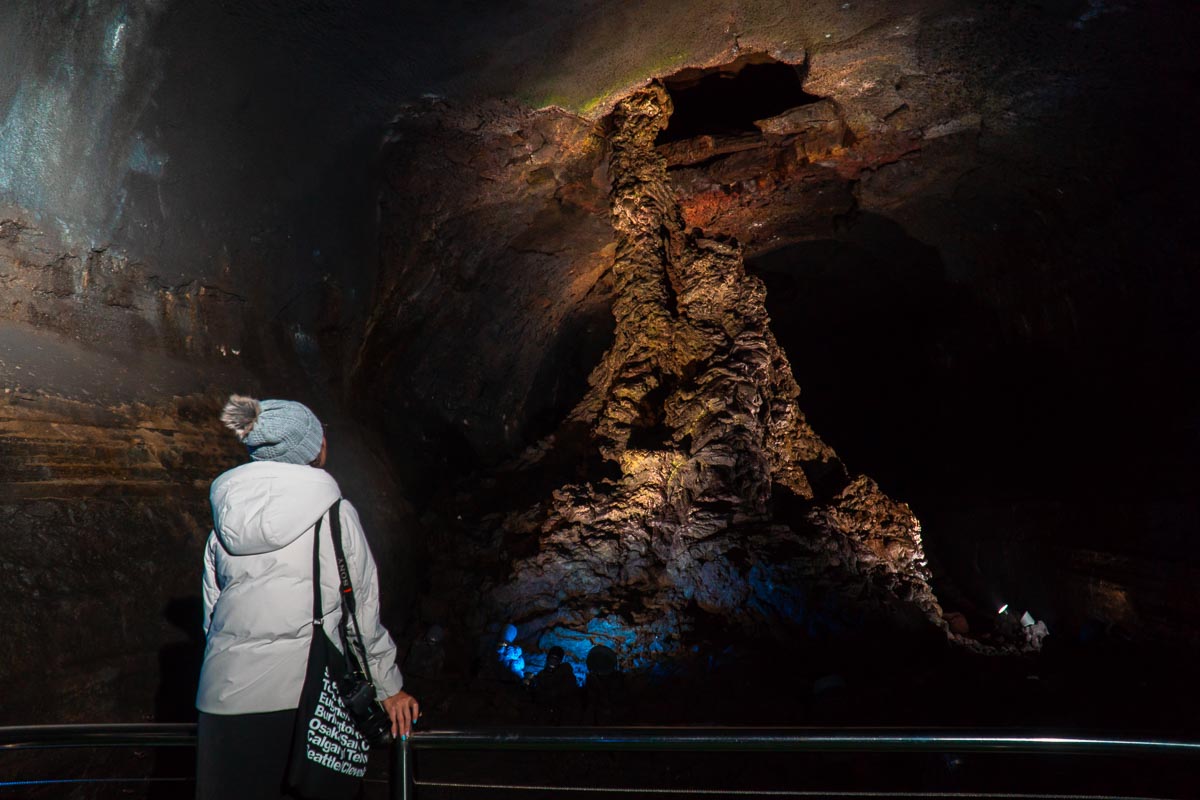
Entrance Fee: ₩4,000 (~S$4.70) Opening Hours: 9AM – 6PM (last entry at 5:10PM), closed on first Wednesday of the month Tel: 783-4818 Parking: Free on premises

Dine on Succulent Abalone at Myeongjin Jeonbok (명진전복)
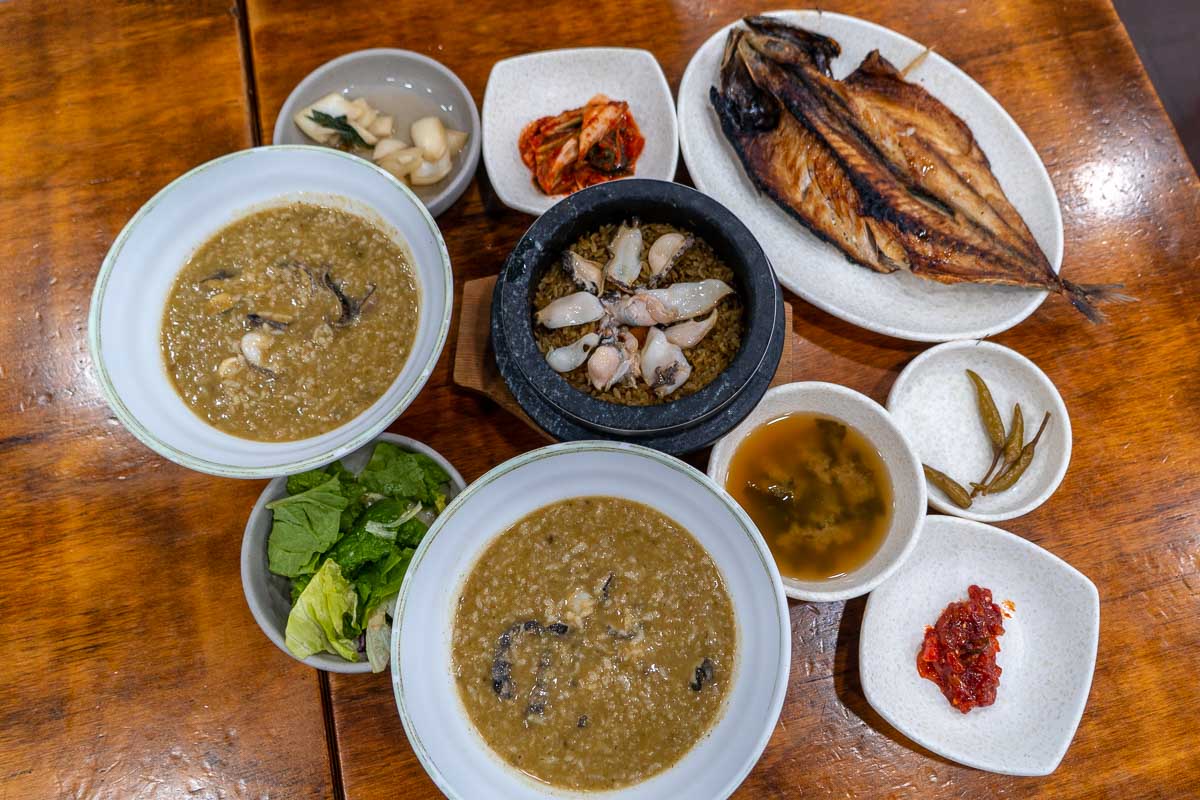
Popular with locals and foreigners alike, Myeongjin Jeonbok Abalone Restaurant sells fresh, highly sought-after abalone. There’re only four items on their menu: Abalone porridge, abalone sizzling stone rice, grilled and sliced raw abalones. TL;DR: They’re all good .
Although the porridge was the apparent “must-try”, we preferred the charred flavours of the fragrant abalone stone rice. Served in a large pot, it’s big enough to share. The meal also comes with an appetising fried mackerel, completely free of charge!
Cost: ₩12,000 – ₩30,000 (~S$14 – ~S$35.10) Opening Hours: 9:30AM – 9:30PM, closed on Tuesdays Tel: 782-9944 Parking: Free on premises
Accommodation: Klook — we stayed in a hotel near Seongsan Ilchulbong for ~S$53.30/night for a standard twin room. The best part? It’s a walking distance to Sunrise Peak!
Day 2: Eastern Jeju — Southern Jeju (Seogwipo)
Climb up seongsan ilchulbong (성산일출봉).
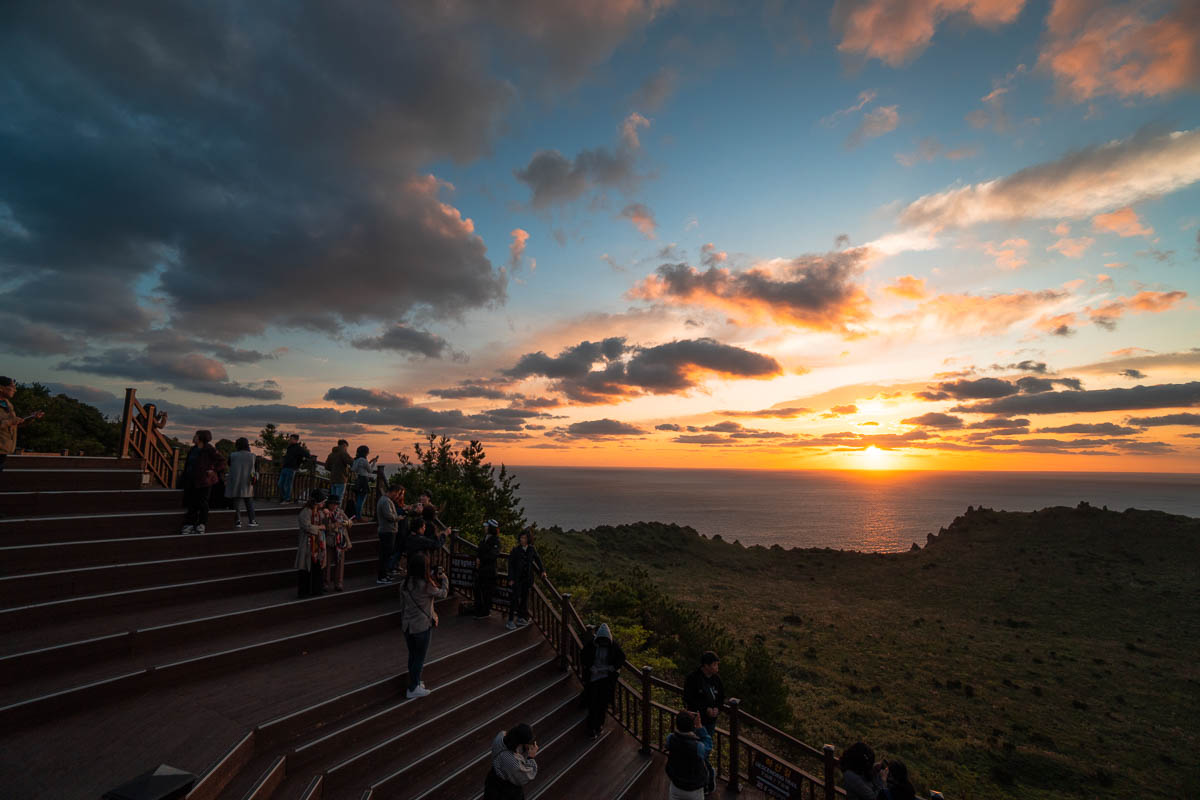
Seongsan Ilchulbong is an enormous tuff cone crater that doubles as a UNESCO World Heritage site and one of Jeju’s most well-known attractions.
It’s also called “sunrise peak”, and sees dozens of early-morning hikers racing up a stairway to catch daybreak. This Jeju itinerary joins in on the action and was rewarded with a magnificent view of the sunrise. So magnificent that (no kidding) people started clapping when the sun rose. Yay, sun!
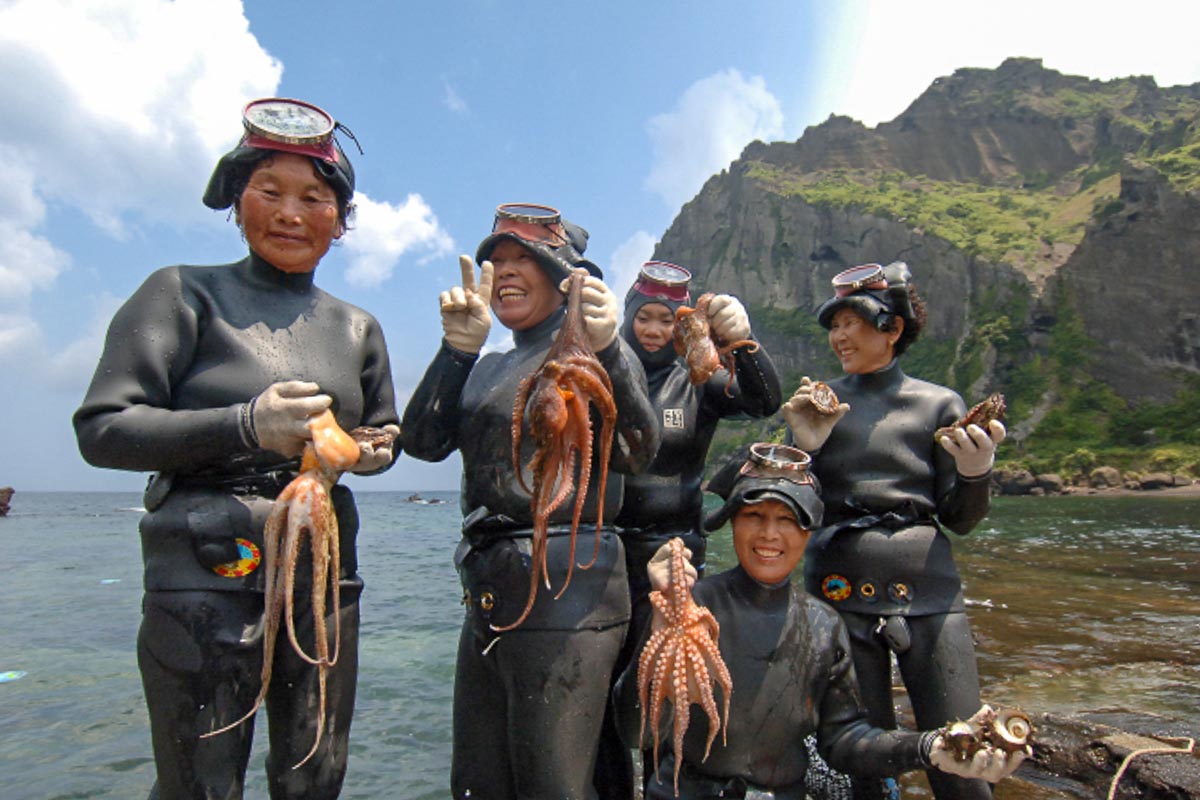
Photo credit: Thisiskoreatours.com
No worries if you’re not an early riser. At other times of the day, you can still head up the peak to enjoy a spectacular vantage view. Catch the Jeju haenyeo (women divers) perform at 1:30PM and 3:30PM at the bottom of the crater. These tough, elderly ladies will free-dive for fresh shellfish in blistering cold waters — pretty sick considering they’re old enough to be your grandma!
Entrance Fee: ₩5,000 (~S$2.30) Trail Closing Times: Every first Monday of the month Tel: 783-0959 Parking: Free on premises
Savour Fresh Seafood at the Baekgi Haenyeo House (백기해녀의 집)
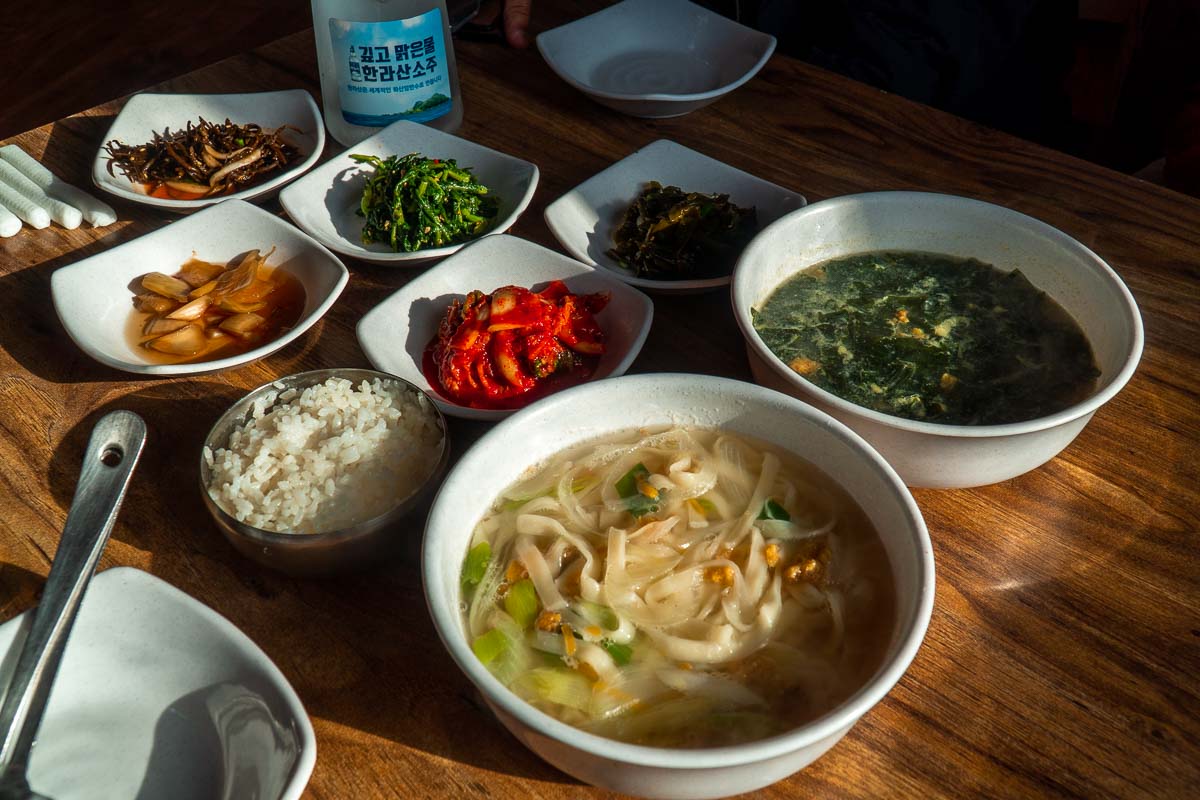
Besides watching the haenyeo dive for shellfish, why not taste the fruits (or seafood) of their labour too? Like the ama of Japan, the Baekgi Haenyeo House is a haenyeo hut-cum-eatery that dishes out seafood harvested and cooked by the female divers.
We ordered the chopped noodles with sea urchin (₩10,000, ~S$11.70) and sea urchin seaweed soup (₩12,000, ~S$14). Served piping hot, we liked how springy the handmade noodles were. The generous amount of sea urchins in the light broth was also delicious and nourishing.
Unfortunately, the divers knew limited English so we couldn’t ask them about their diving stories. However, it’s something you can do if you’re travelling with a translator or someone who’s proficient in Korean. It’ll make the authentic dining experience more fascinating.
Cost: ₩10,000 – ₩40,000 (~S$11.70 – ~S$46.60) Opening Hours: 8AM – 6PM Tel: 782-0673 Parking: Free on premises
Roam around Aqua Planet Jeju (한화아쿠아플라넷 제주)
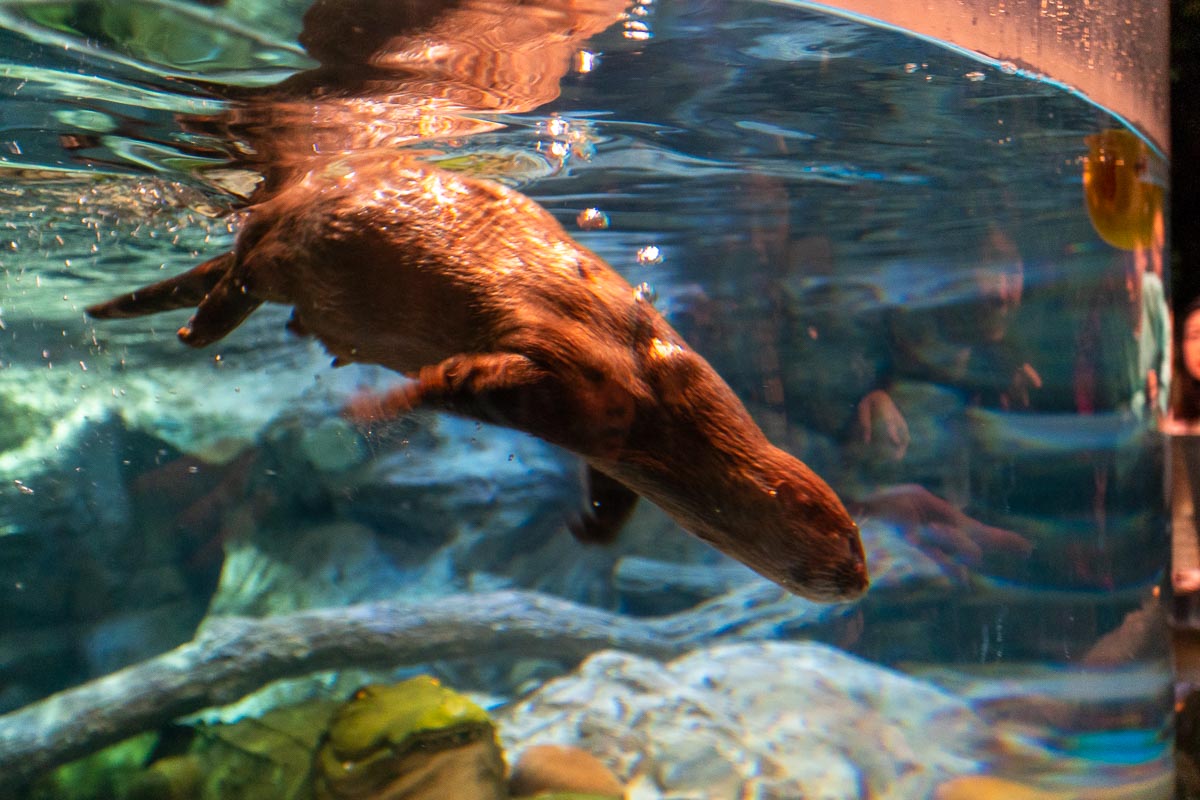
Otterly adorable!
There’s a whimsical beauty about aquariums that can make anyone go “ oooh ” or “ aaahhh “. Aqua Planet Jeju is no different. The sizeable aquarium is home to a variety of animals like otters, rays, seals, walruses, bottlenose dolphins, and sharks.
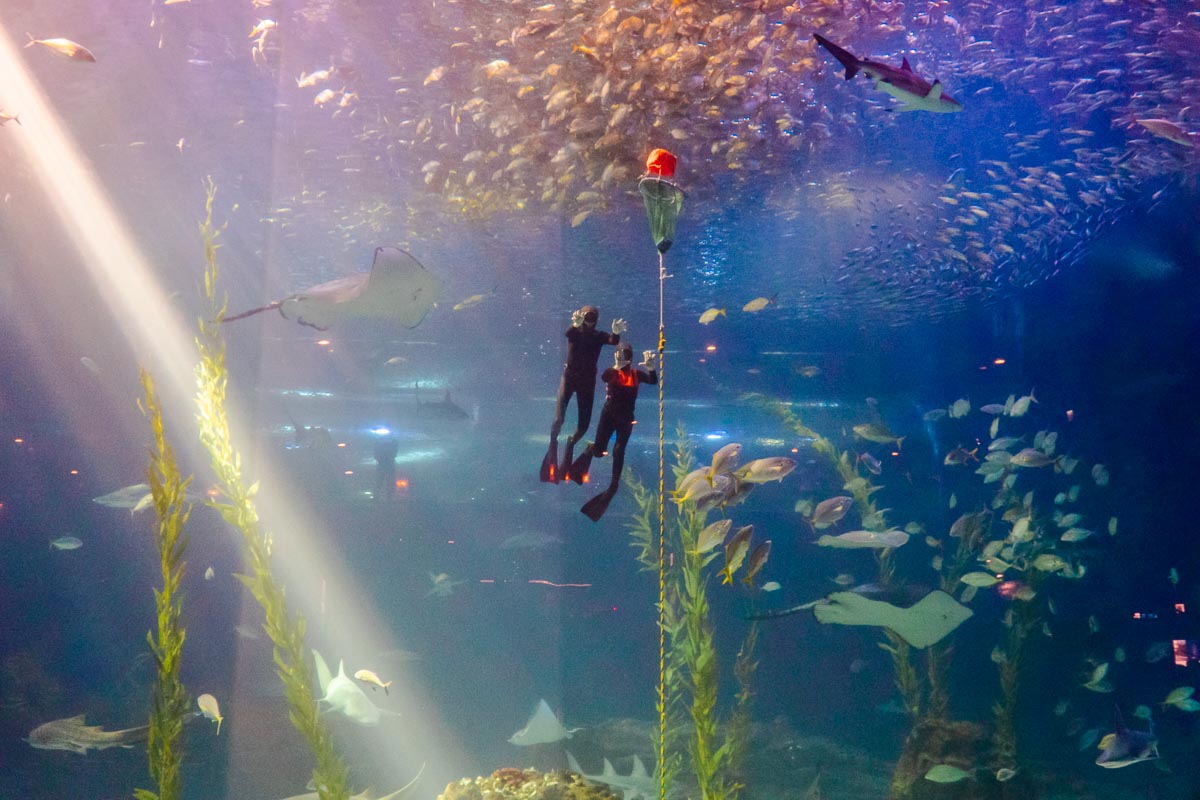
Aqua Planet also has numerous programmes throughout the day. A drawback is that they’re only in Korean, but are still interesting to watch. We highly recommend catching the haenyeo diving demonstration at the main tank. Before your very eyes, two women dive deep to 8m to harvest shellfish — all while holding their breaths for a minute!
Cost: From ~S$29 Opening Hours: 10AM – 6PM (last entry at 5PM) Tel: 780-0900 Parking: Free on premises
Ride like the Wind at Jeju Seri World
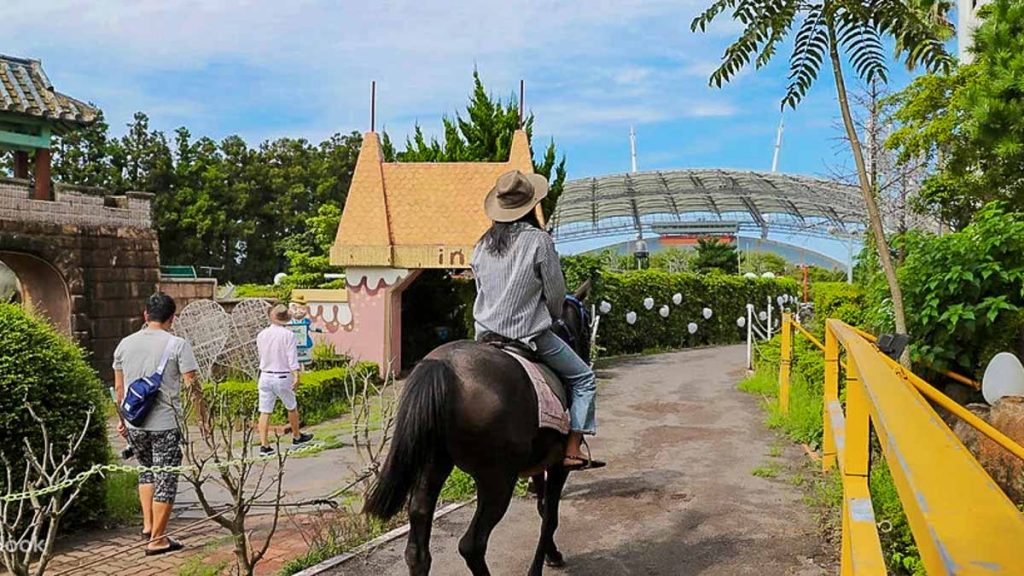
Photo credit: Klook
After an hour’s drive towards the South of Jeju, take a break to experience actual horsepower instead! At Jeju Seri World, you get to ride adorably furry horses through the lush landscape of the place.
While you’re on the horse, be sure to look out for the Seogwipo World Cup Stadium which served as one of the playing venues for the 2002 World Cup . There’s a lot of bouncing involved, so hang on tight!
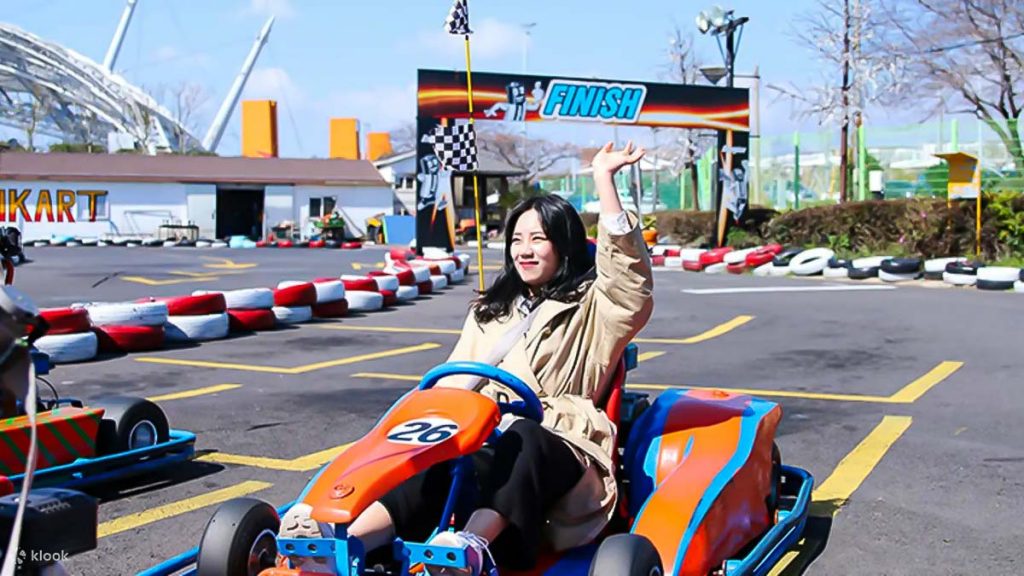
Jeju Seri World is also home to a cart riding experience that allows you to drive down a thrilling race track — perfect for adrenaline junkies. You can also make your way through the scenic camellia and cedar trees of the maze park while you’re there!
Cost: ~S$6.60 (Short Course Horse Riding), ~S$13.40 (Cart Riding Experience) , ~S$4.40 (Maze Park Experience) Opening Hours: 9AM – 7PM Tel: +82 64-739-8254
Accommodation: Klook — we stayed in a hotel in Seogwipo for ~S$60.77/night for a deluxe double room.
Day 3: Southern Jeju
Feast on local korean eats.
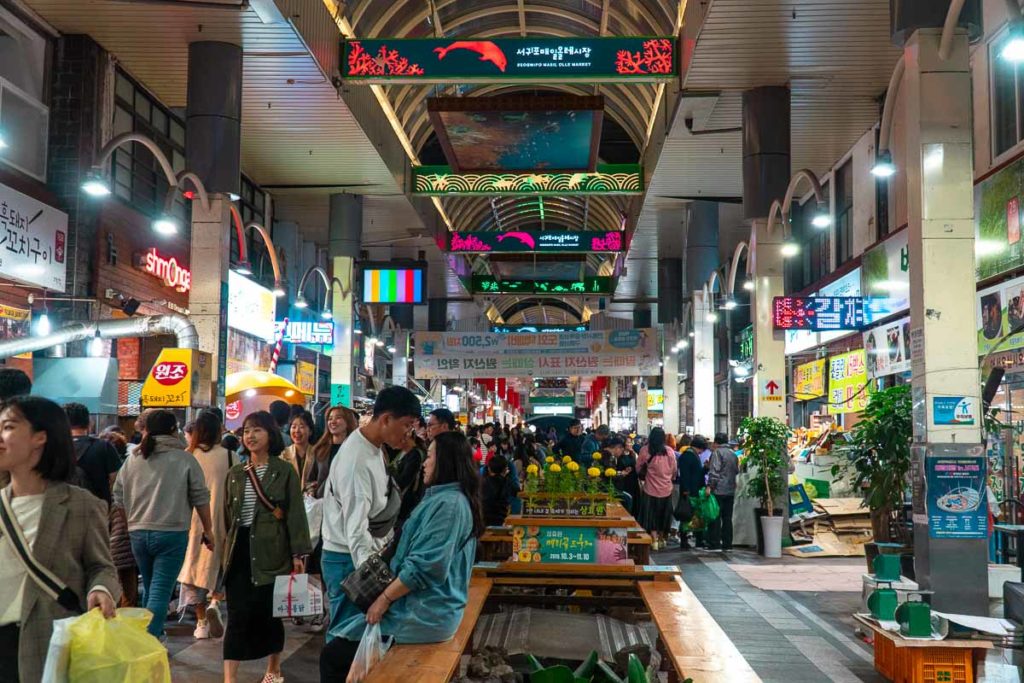
What’s a Jeju itinerary without some good grub? In Seogwipo, you can get an extensive variety of local foods at the Seogwipo Maeil Olle Market (서귀포 매일올레시장). These include snacks like spicy tteokbokki (rice cakes) and cheesy squid pancakes. For more lavish meals, head to the restaurants on Arang Joeul Food Street .
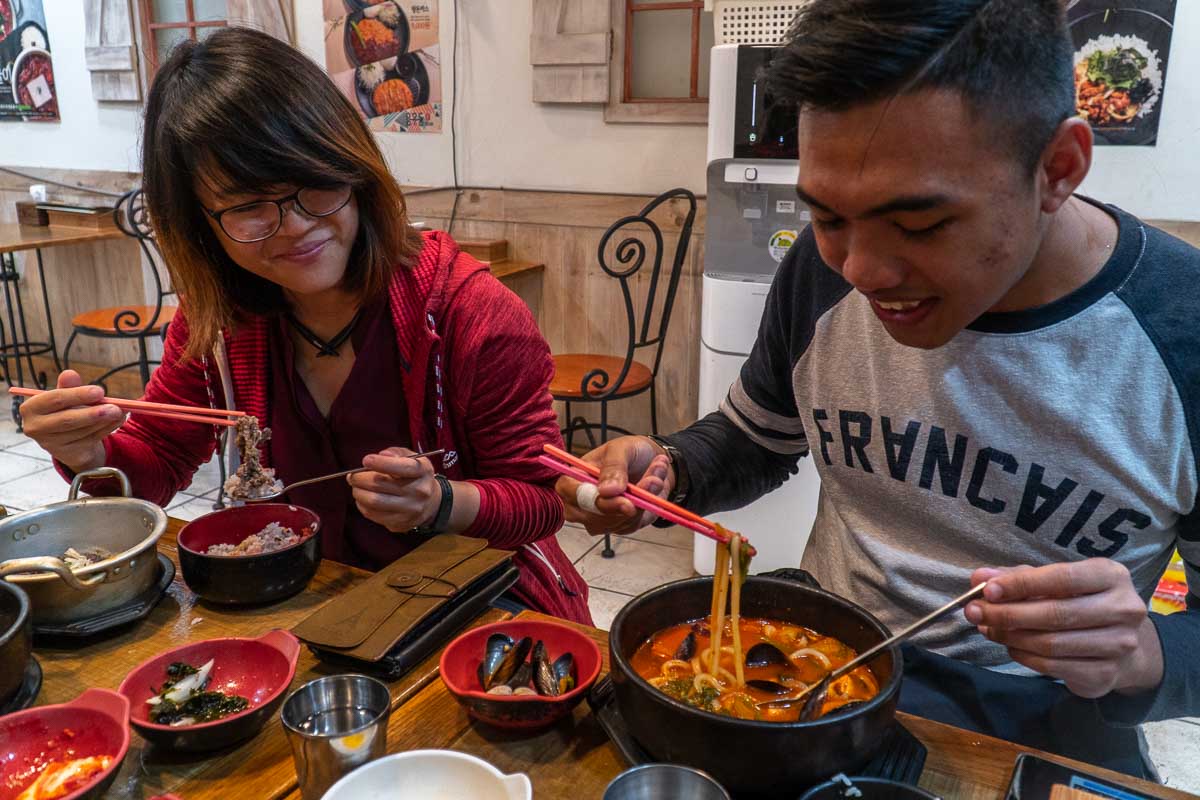
Warning: Korean food is much spicier in Korea!
We had our Korean chicken cravings satisfied at Don Chicken (돈치킨). The eatery serves absurdly juicy grilled chicken, instead of typical fried ones. We also ate at Yongwoo-dong (용우동), a simple diner that serves comforting Korean dishes under ₩10,000 (~S$11.70).
Go on an Underwater Submarine Adventure
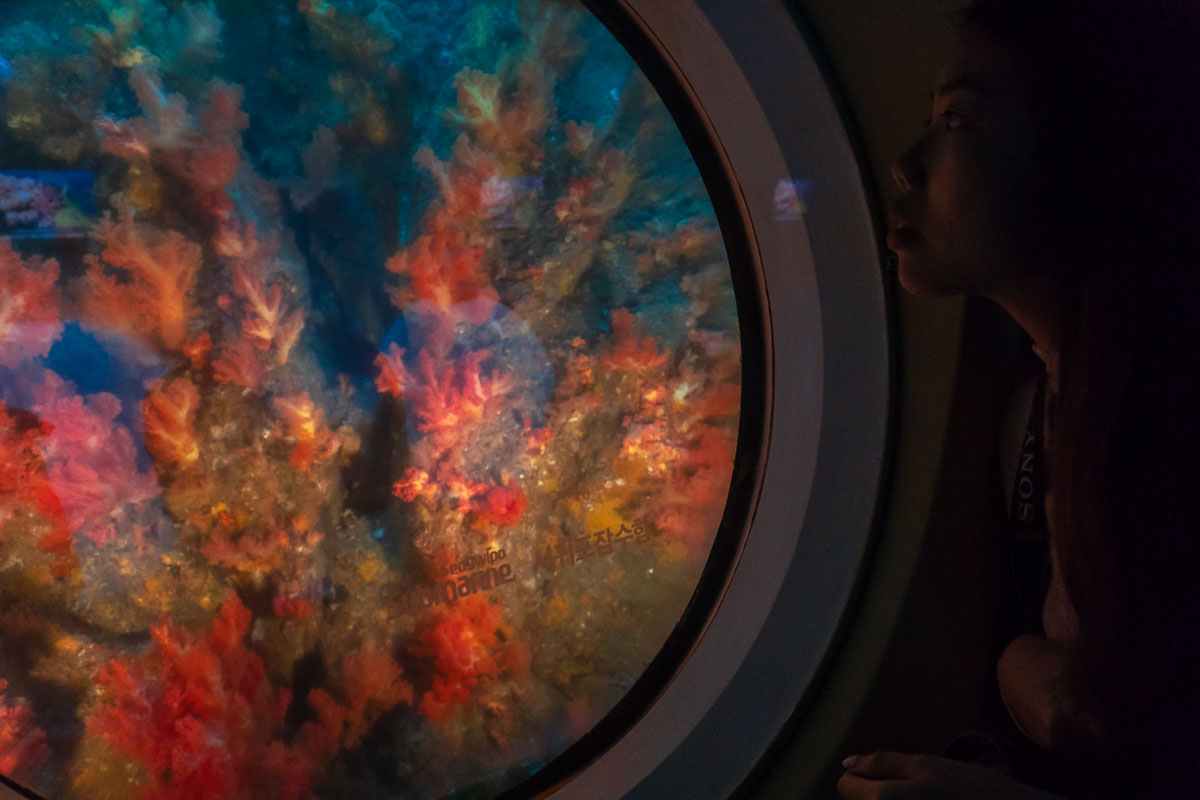
Like on land, did you know the ocean undergoes changing seasons as well? On a Seogwipo Submarine Adventure , you’ll learn intriguing facts about underwater life in a commercial submarine. The Seogwipo submarine will also dive to depths of up to 40–45m. There, you get to view colourful fishes, soft corals, and even an old shipwreck up-close.
Cost: ₩65,000 ( ~S$78 ) Tour Timings: Every 40 minutes from 10AM – 3:20PM Tel: 732-6060 Parking: ₩1,000 per adult (aged 25 and above)
Visit Jeju’s Natural Wonders
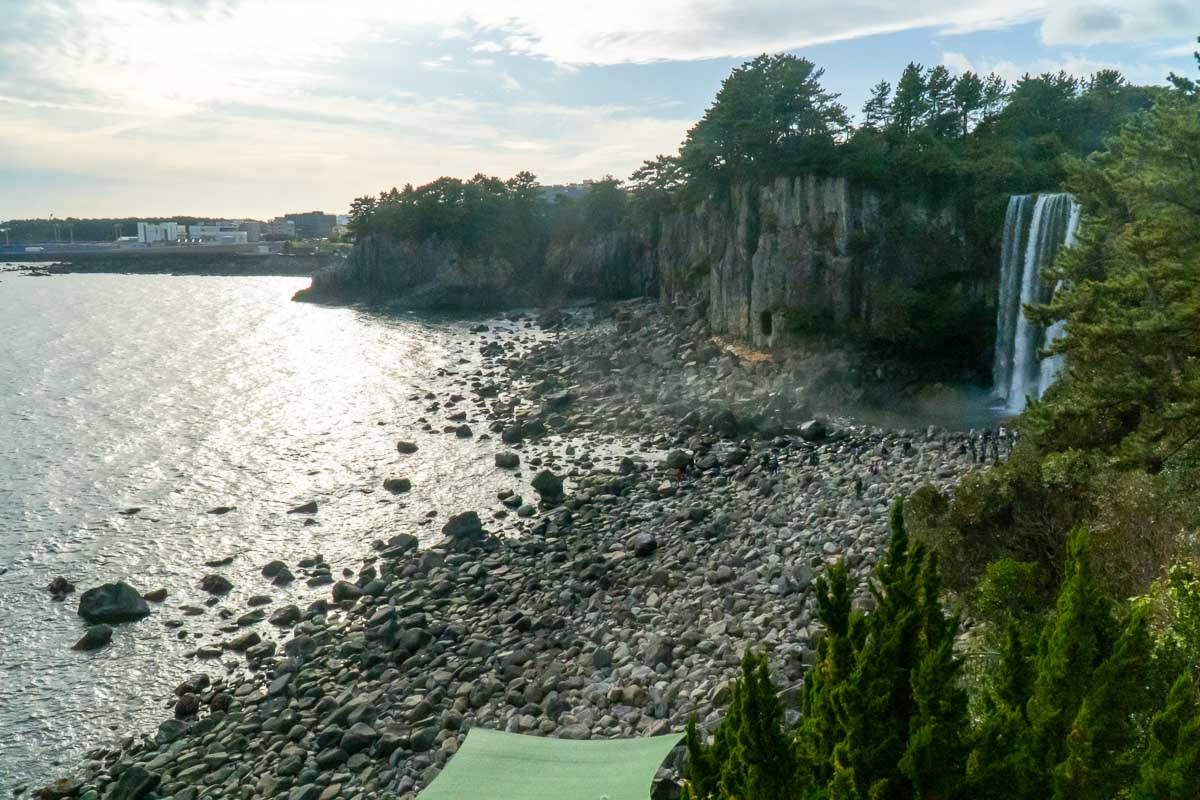
Jeju Island holds many natural gems ranging from waterfalls to rock formations. Our Jeju itinerary mainly explores the ones within Seogwipo city, which are close by each other.
One of the most popular icons is Jeongbang Falls (정방폭포). The 23m waterfall is the only one that falls directly into the ocean and is a pretty place to take photos. Nearby, there’s also a makeshift tent where you can purchase fresh shellfish harvested and prepared by the haenyeo . Entry to the waterfall costs ₩2,000 (~S$2.30).
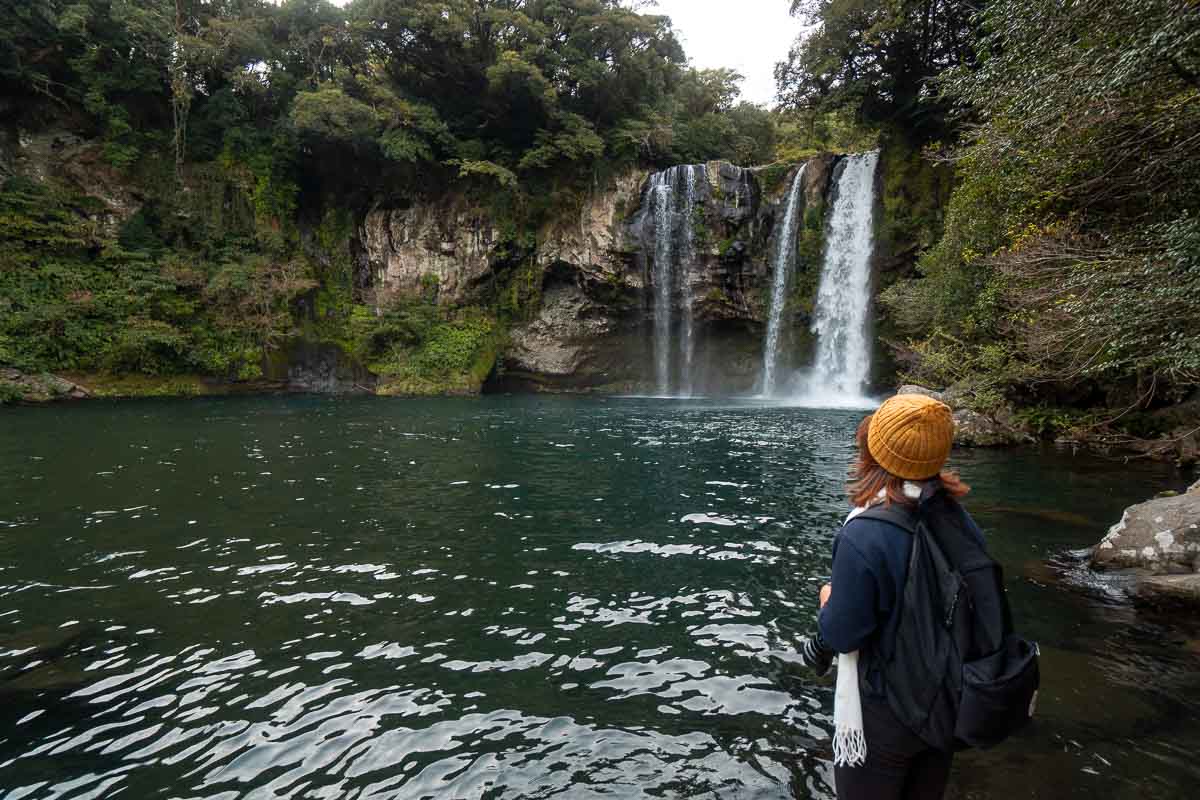
Cheonjiyeon Waterfall (천지연폭포) is easily one of the most beautiful places on Jeju Island. The falls are surrounded by a well-kept park, perfect for a leisurely stroll even at night. Entry to the waterfall similarly costs ₩2,000 (~S$2.30).
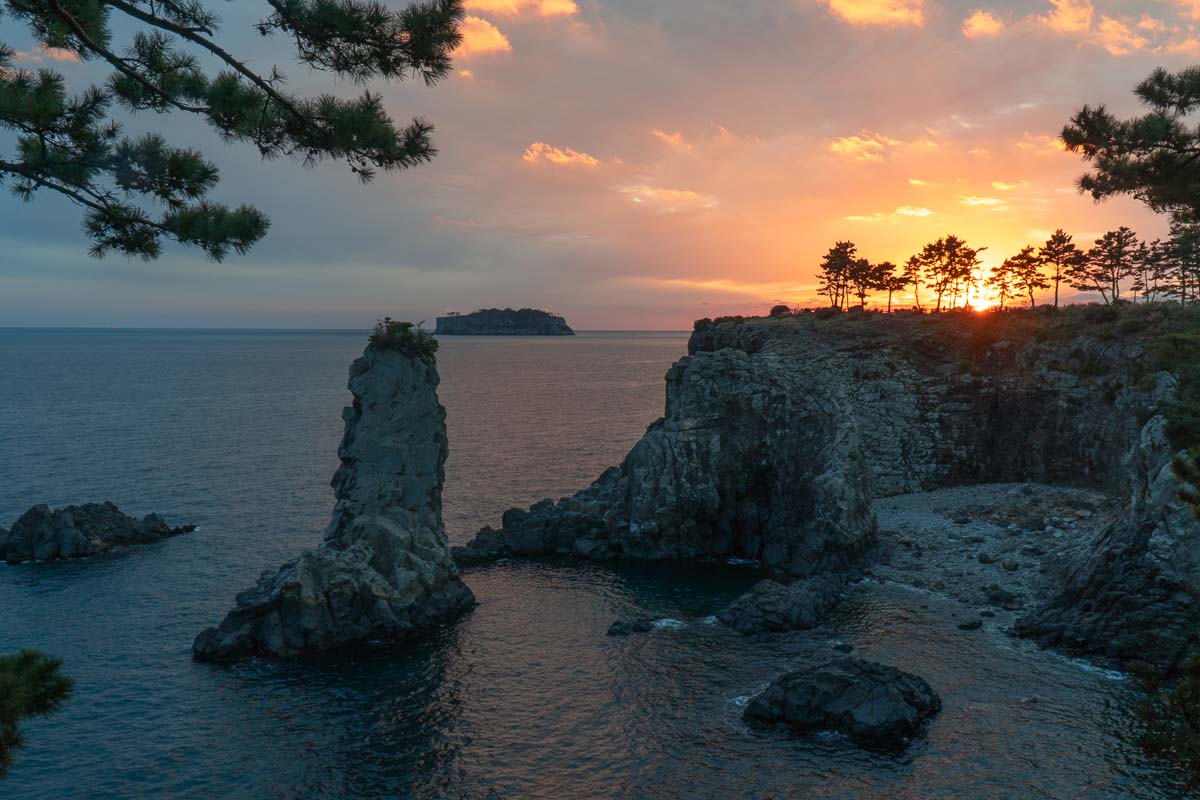
Oedolgae Rock (외돌개) is another famous attraction. Legend has it that the solitary rock came to be after a grandmother waited a long time for her husband to return from fishing, that she turned into rock. Besides viewing the rock, you can also wander around the forested area and catch the sunset. Parking costs ₩2,000 (~S$2.30).
Day 4: Southern Jeju — Jeju City
Marvel at jusangjeollidae cliffs.
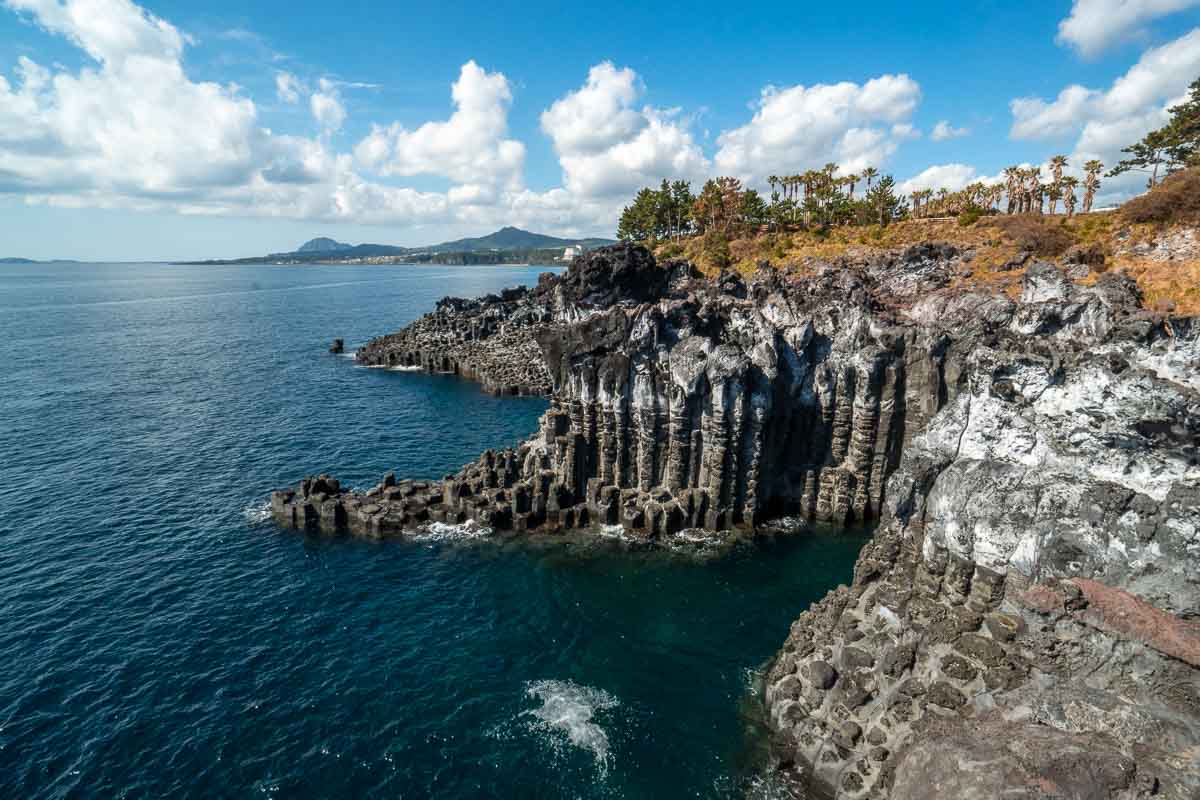
A geologic wonder, the Jusangjeollidae Cliffs (주상절리대) were born from molten lava cooling down to form intricate hexagonal rock columns. One of Jeju’s national icons, the cliff face makes a great photo-taking stop.
Entrance Fee: ₩2,000 (~S$2.30) Opening Hours: 9AM – 6PM Tel: 738-1521 Parking: Paid parking for ₩1,000 – ₩3,000
*Pro-tip: To avoid the crowds on the viewing platform, follow the signs to the Promenade instead. The open-spaced park is far less busy and offers equally clear views of the cliffs.
Meet Fuzzy Friends at the Teddy Bear Museum (테디베어박물관)

For the young and young at heart, the Jeju Teddy Bear Museum displays a diverse collection of the beloved cuddly toy. From a towering 9m-tall teddy bear, to bear renditions of masterpieces like the Creation of Adam, the cutesy museum has plenty of things to see.
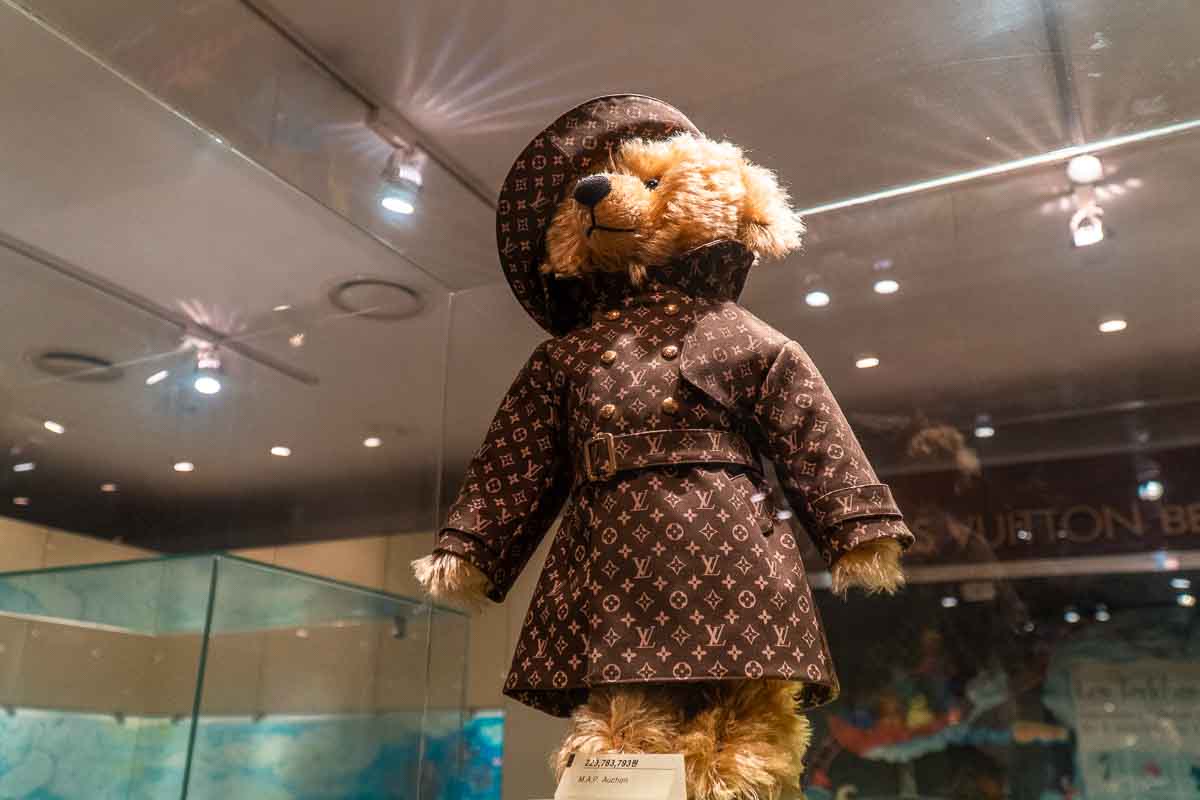
The museum also houses the world’s most expensive bear: A luxurious Louis Vuitton teddy bear (with matching luggage). In 2000, the bear fetched a mindblowing price of nearly €2 million in a charity auction. Beary luxurious indeed!
Entrance Fee: ₩10,000 ( ~S$12 ) Opening Hours: 9AM – 7PM (last entry at 6PM) Tel: 738-7600 Parking: Free on premises
Taste Tea and More at Osulloc Tea Museum (오설록 티하우스)
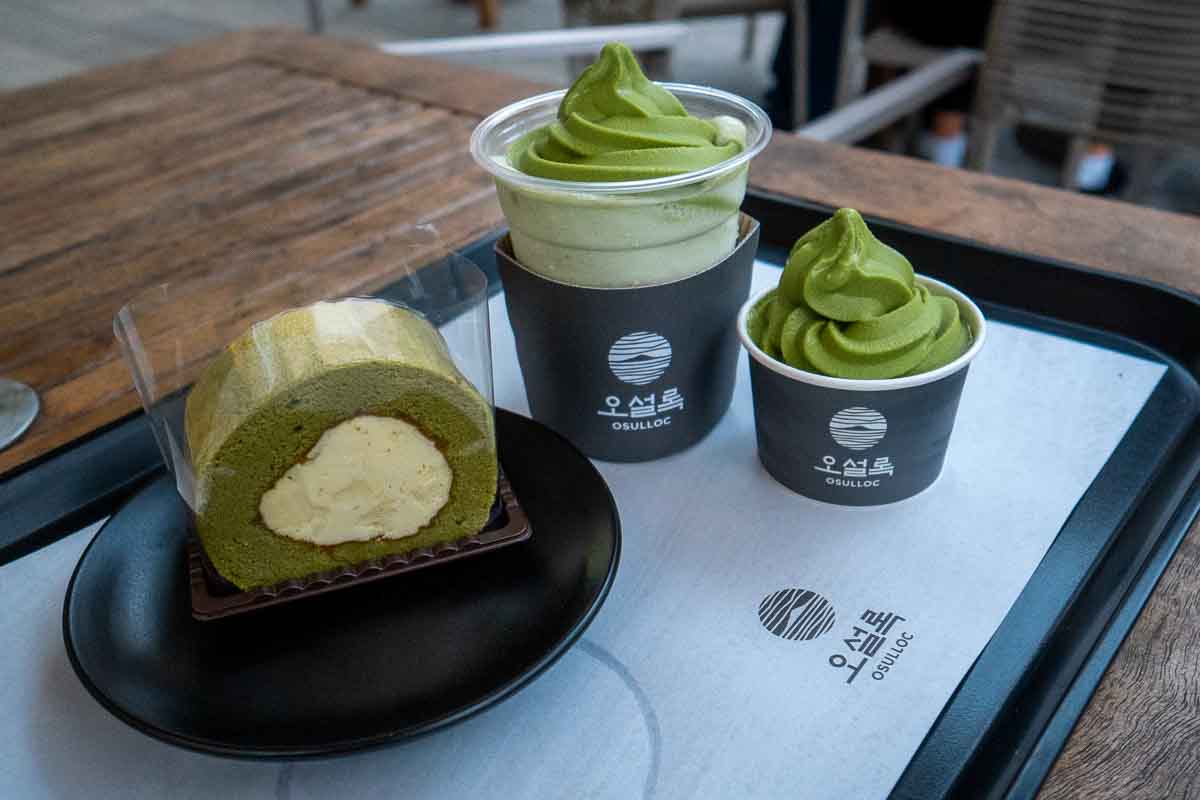
A popular tourist destination, the Osulloc Tea Museum is admittedly more of a tea house than a museum. There’s a small exhibit describing the history of Jeju’s tea plantations, but the main highlight is the cafe that sells desserts and a wide selection of green tea and special blends.
We ordered a set consisting of Green Tea O Fredo, a slice of Green Tea Swiss Roll Cake and Green Tea Ice Cream (₩17,300, ~S$20.15). Though pricey, we liked how the desserts had a rich green tea flavour, and were not too bitter or overbearingly sweet.
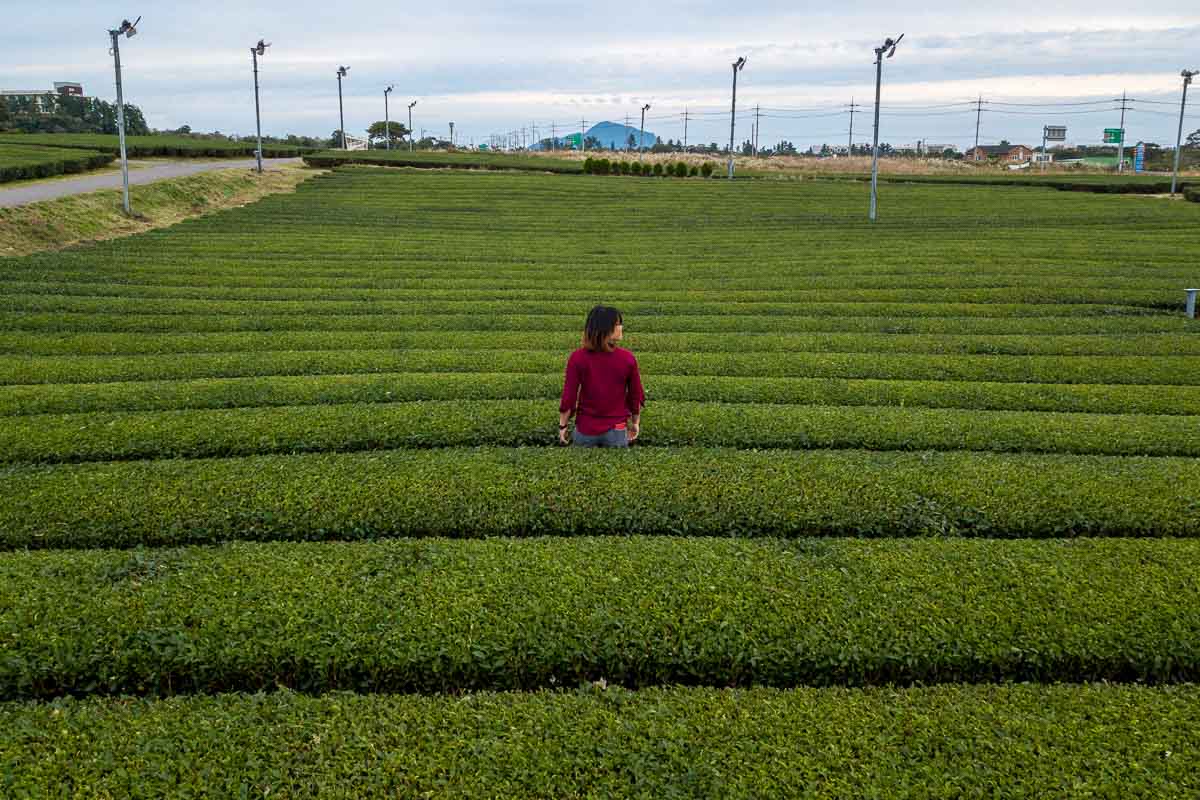
Before the food coma sets in, head outside to wander around the surrounding green tea fields. Reminiscent of Cameron Highlands , the fields are a lovely place to chill out, breathe in the crisp cool air, and snap loads of photos.
Entrance Fee: Free Opening Hours: 9AM – 6PM Tel: 794-5312 Parking: Free on premises
Be Amazed by the Floral Paradise at Camellia Hill
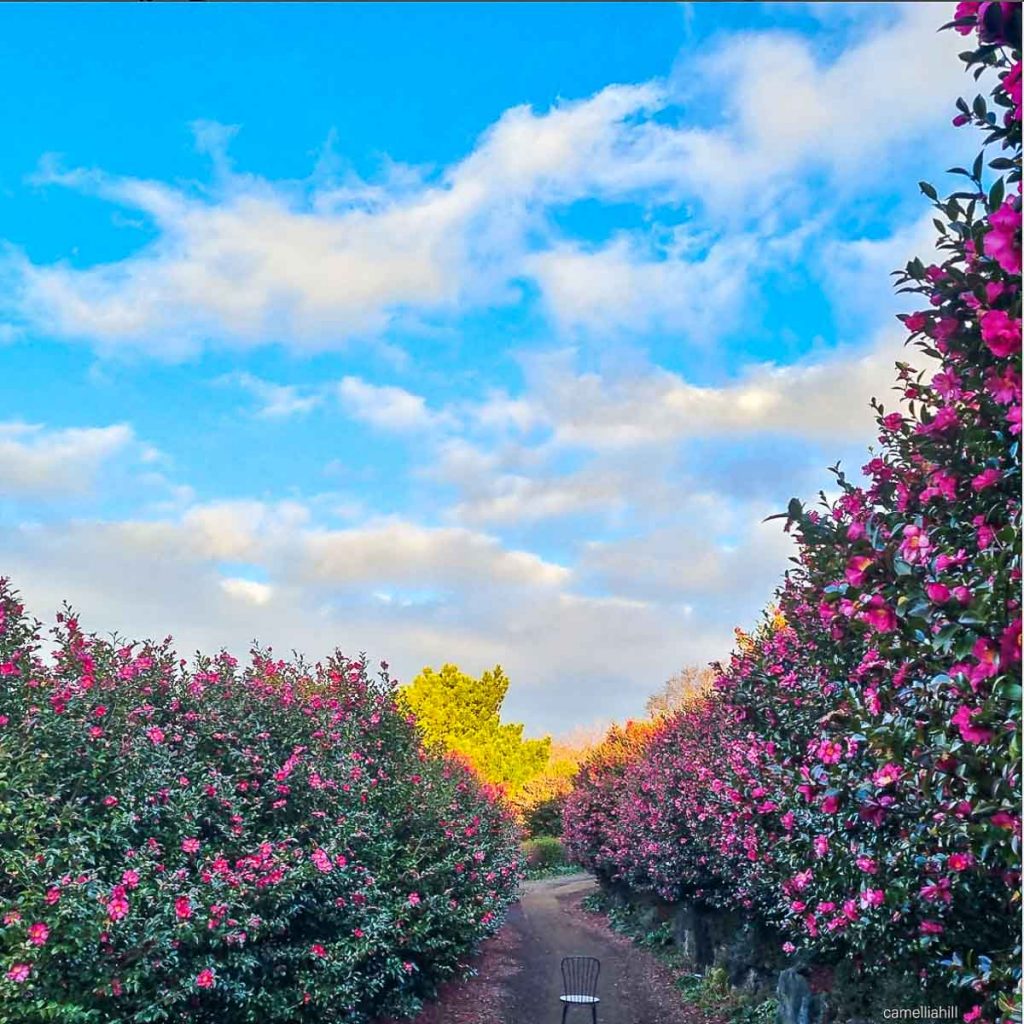
Photo credit: @camelliahilljeju via Instagram
Just a 15 min drive away from the museum lies Camellia Hill , the biggest Camellia arboretum in East Asia. Located in Sanchang Village, the 20-hectare park is a floral oasis and is home to 6,000 camellia trees and over 500 different types of flowers and plants.
Once you’ve snapped those insta-worthy pics with the epic floral backdrop, you can also check out the gallery exhibiting camellia-themed crafts.
Entrance Fee: ~S$5.65 Opening Hours: 8:30AM – 6PM Tel: +82 64-792-0088 Address: 166 Byeongang-ro, Andeok-myeon, Seogwipo-si, Jeju-do, South Korea
If You Have More Days
Hike mt halla (한라산).
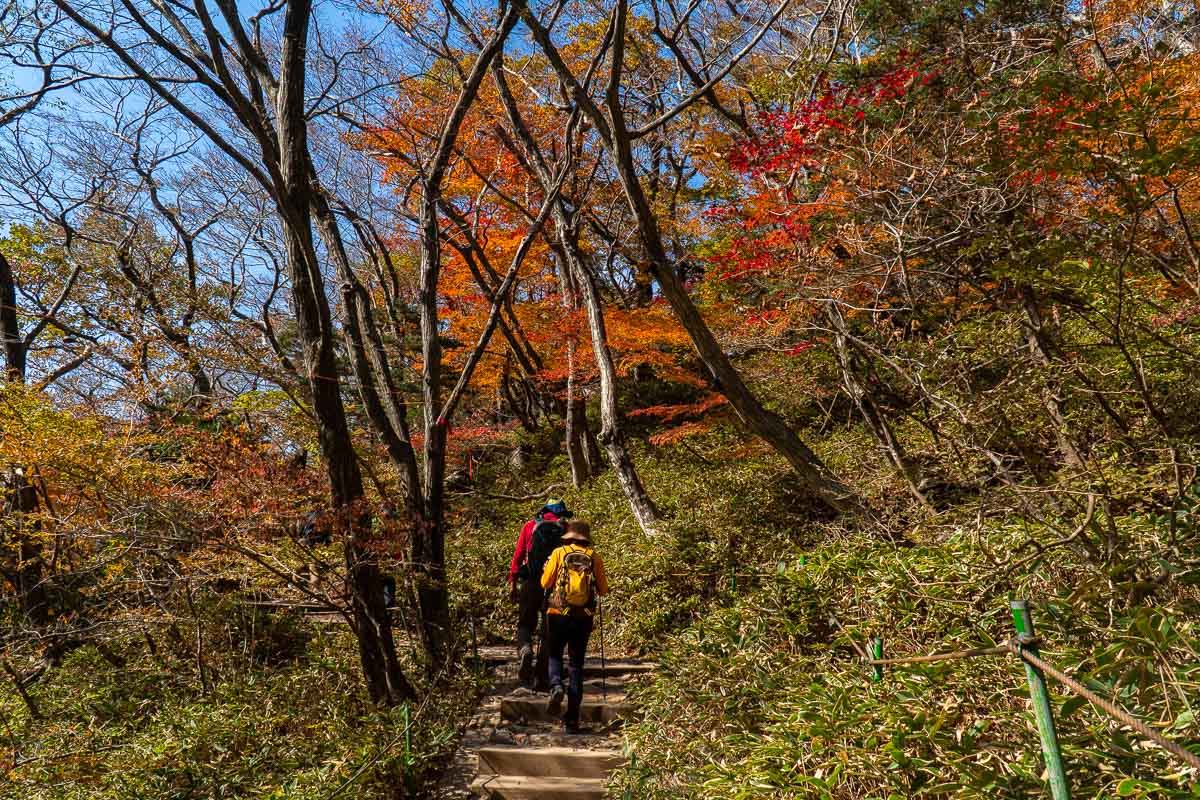
Standing at an impressive 1,950m, Mt Halla is South Korea’s largest mountain. It’s an immensely beautiful place that deserves to be on every Jeju itinerary if you have more time. There’re several trails around the mountain, but only two lead to the summit. If you plan on ascending, start early as there’s a cut-off time to ensure hikers have enough daylight to trek down.
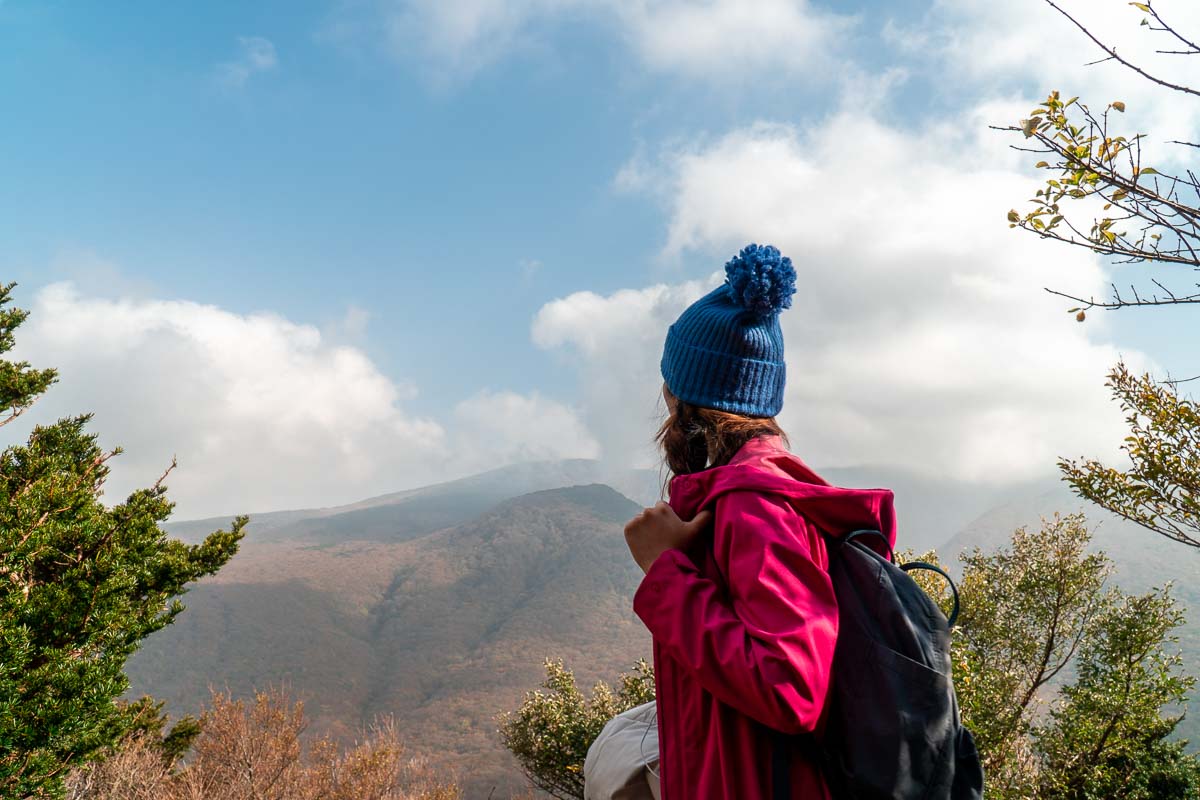
For shorter walks, we recommend the Yeongsil Trail which is the best for viewing autumn foliage. The Eoseungsaengak Trail also has a high pay-off. After a 30-minute hike up, you get panoramic views of Mt Halla and its surrounding peaks.
Explore Jeju City
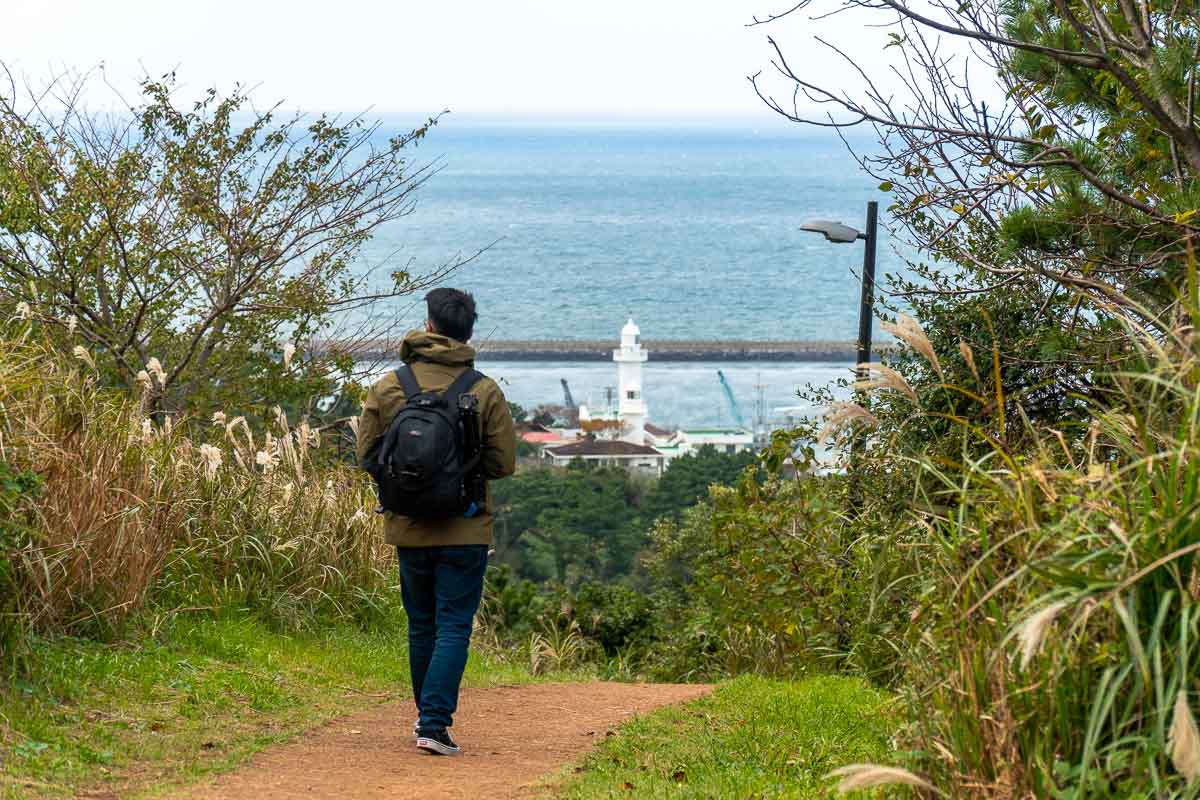
Jeju city itself has loads to keep you entertained! Besides driving, one of the more convenient ways to get around is the Jeju City Bus . The hop-on-hop-off bus tours the city in a scenic two-hour drive, stopping at attractions like Dongmun Traditional Market (동문재래시장) and Sanjideungdae Lighthouse (산지등대). We recommend getting the one-day pass (₩12,000) to maximise your journey.
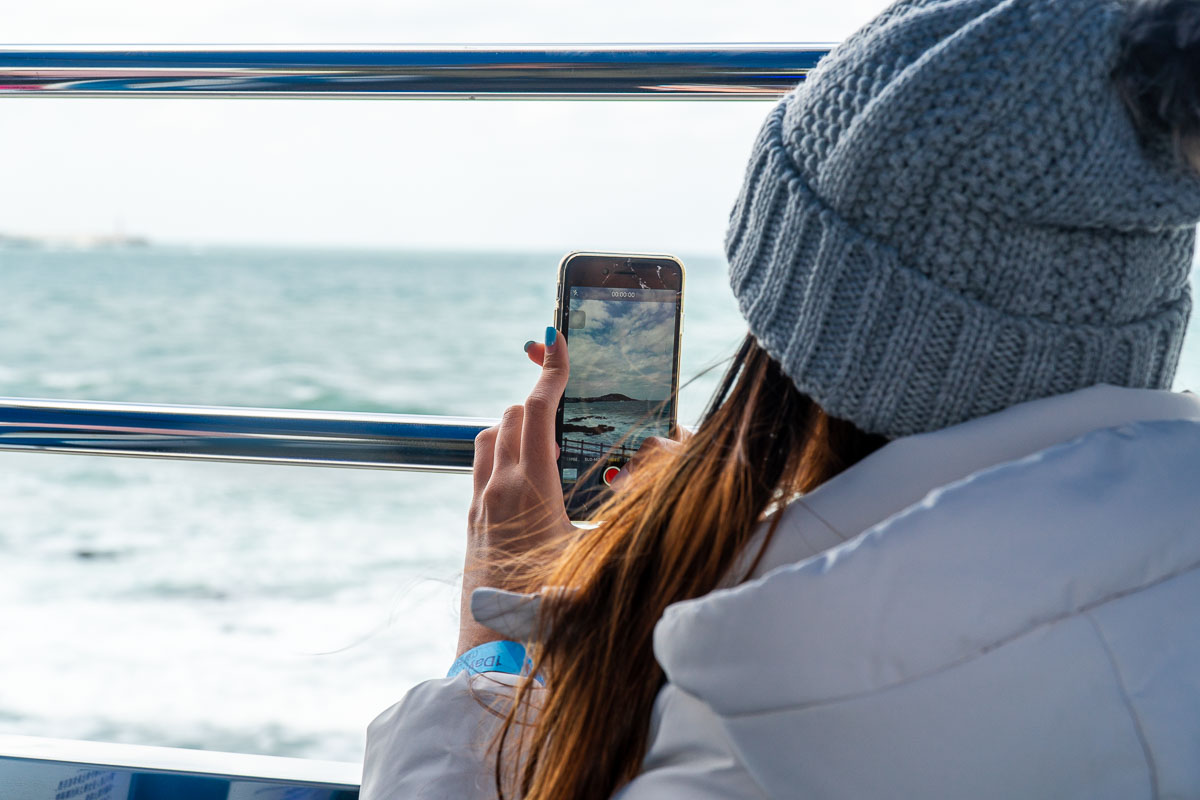
Be warned: It can get super chilly at the top, especially in autumn and winter, so bundle up to stay warm!
Visit Jeju’s Unique Museums
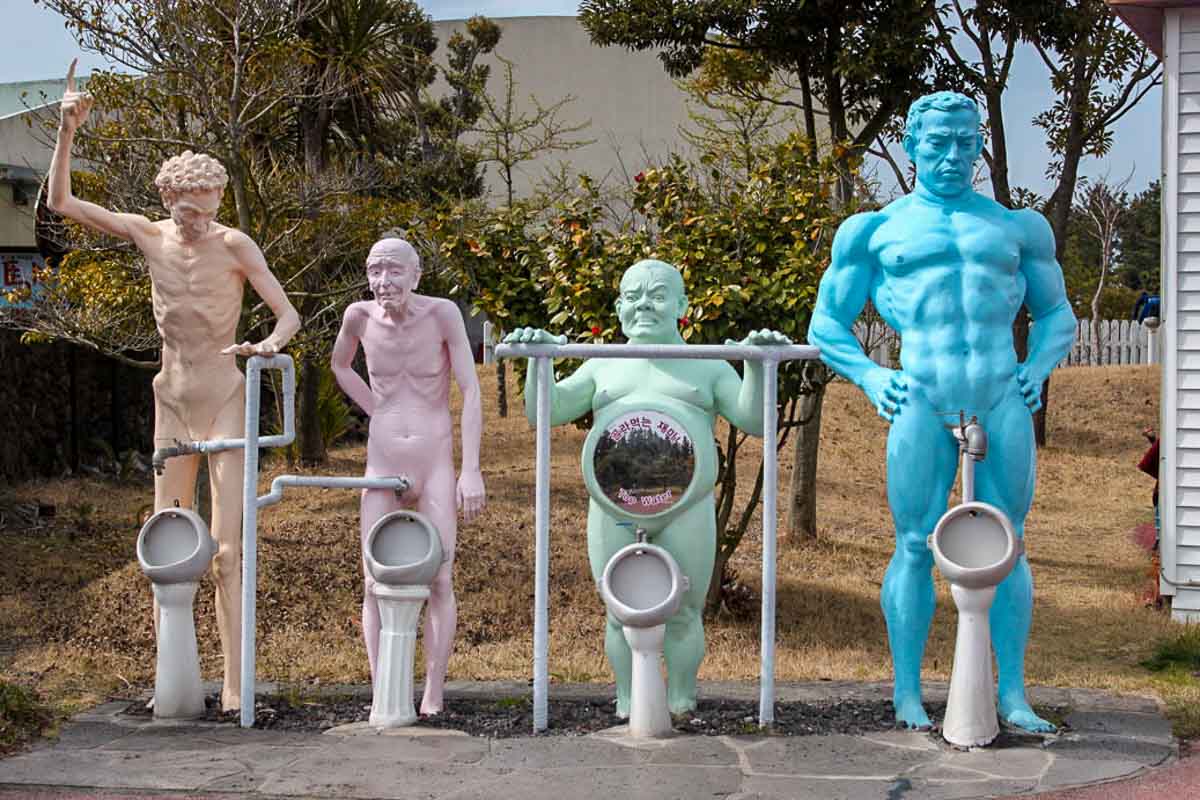
Photo credit: Digitiser2000.com
Jeju Island is as peculiar as it is beautiful, and this manifests in quirky museums scattered around the island. The most sexciting one is Jeju Loveland (제주러브랜드), a NSFW museum dedicated to sensuality and eroticism. Age isn’t just a number, though — you need to be aged 20 and above to enter.
Not all museums in Jeju are this embarrassing, fortunately. The more family-friendly ones include Hello Kitty Island (헬로키티아일랜드) and the World Automobile Museum (세계자동차제주박물관). There’s also a Glass Castle (제주 유리의성) where you can run through an all-glass labyrinth. Just be careful not to break anything.
Shop around Jeju’s Five-Day Market (제주시민속오일장)
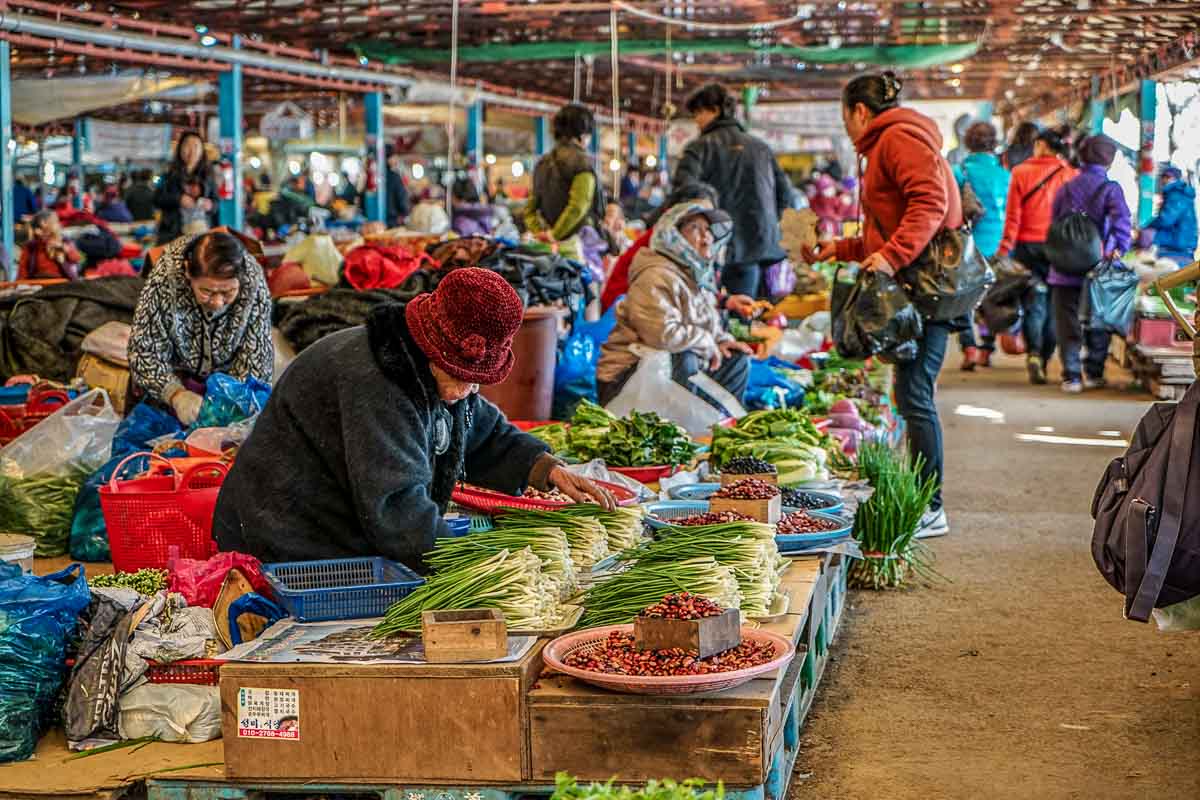
Photo credit: Visitjeju.net
2, 7, 12, 17, 22, 27 — if you happen to be in Jeju during these dates, add the Jeju Five-Day Market to your Jeju itinerary! It’s one of the oldest traditional markets in South Korea, selling a wide array of fresh produce, clothing, and street food.
Other regions in Jeju Island also have their own five-day traditional markets. Check the list of dates and locations here .
Bum around Jeju’s Beaches
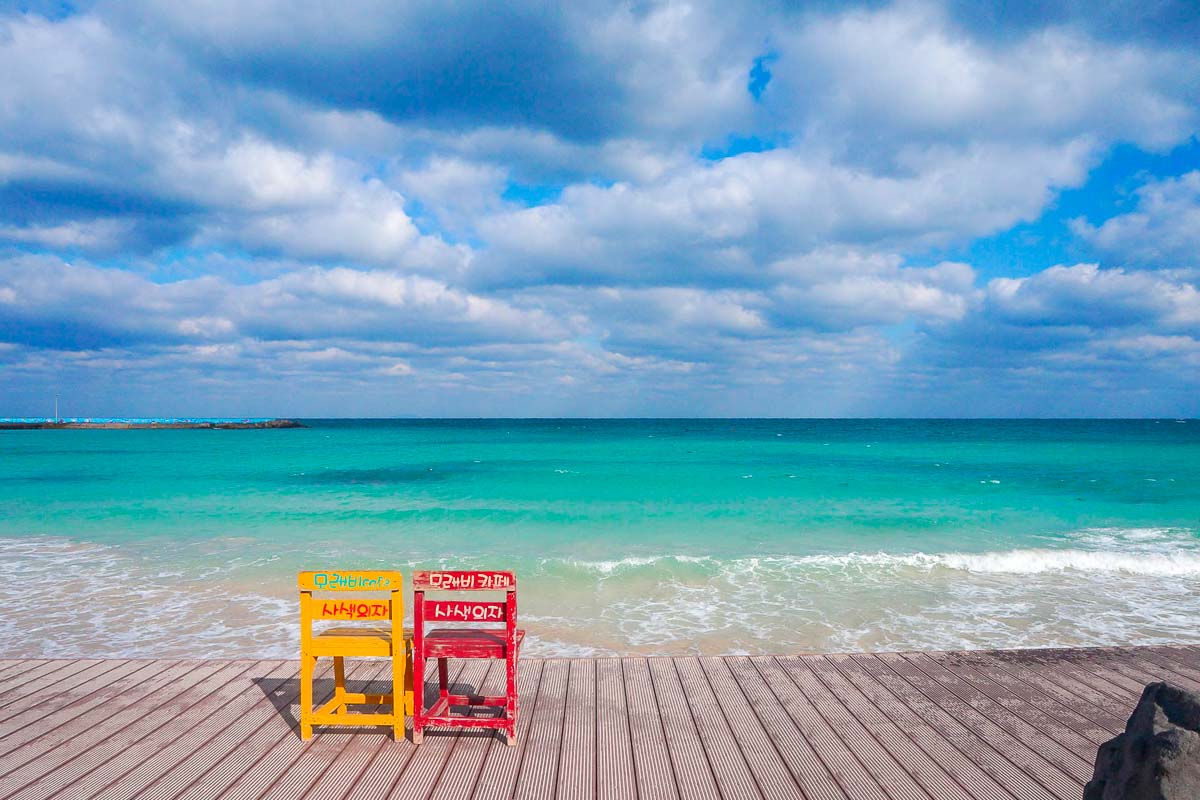
Woljeongri Beach. Photo credit: Visitjeju.net
As a volcanic island, you can expect Jeju’s beaches to be some of the very best! Located at all corners of the island, they’re perfect for watersports, picnics, or some good ol’ chilling out. The most notable ones include Woljeongri Beach (월정리 해수욕장), Hyeopjae Beach (협재해수욕장), and Yongmeori Beach (용머리해안).
Getting around Jeju Island
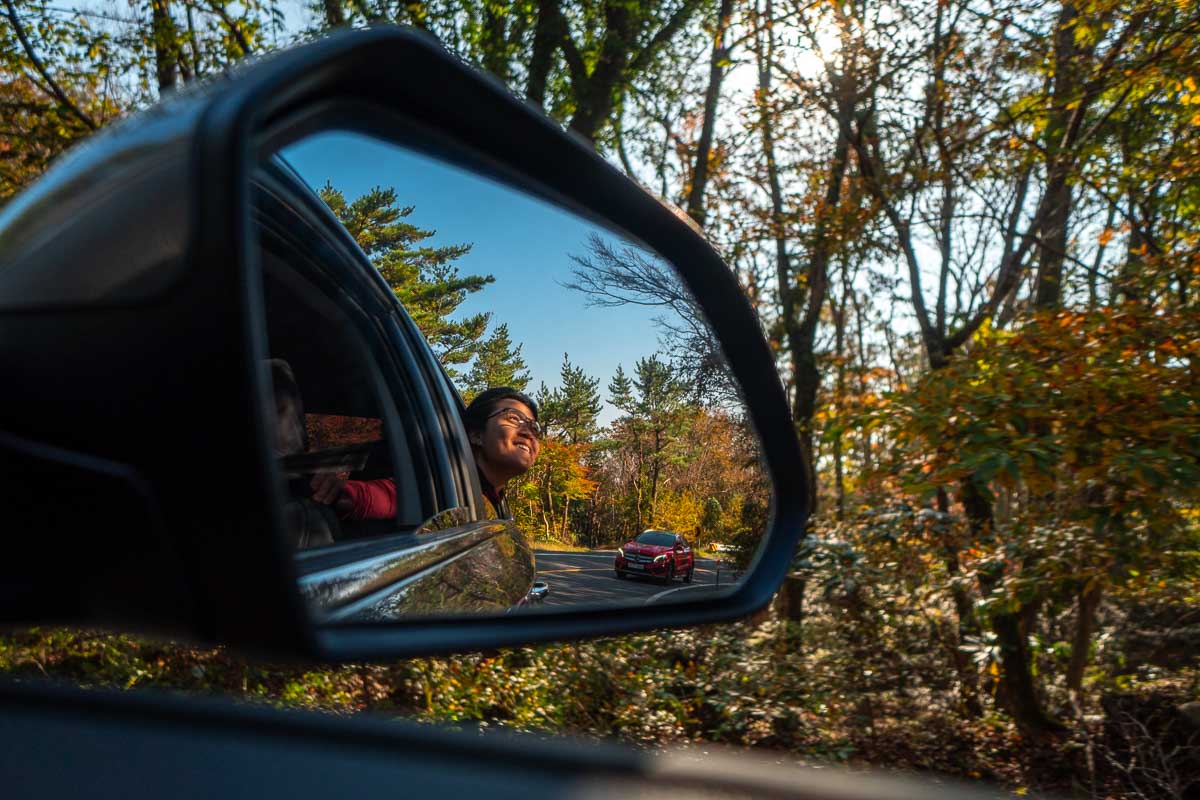
Car Rental: We rented ours from Klook . A standard sedan car costs ~S$198 for four days but when you share it with three other friends, it comes down to only ~S$49.50/pax! Driving tips in Jeju below !
For non-drivers
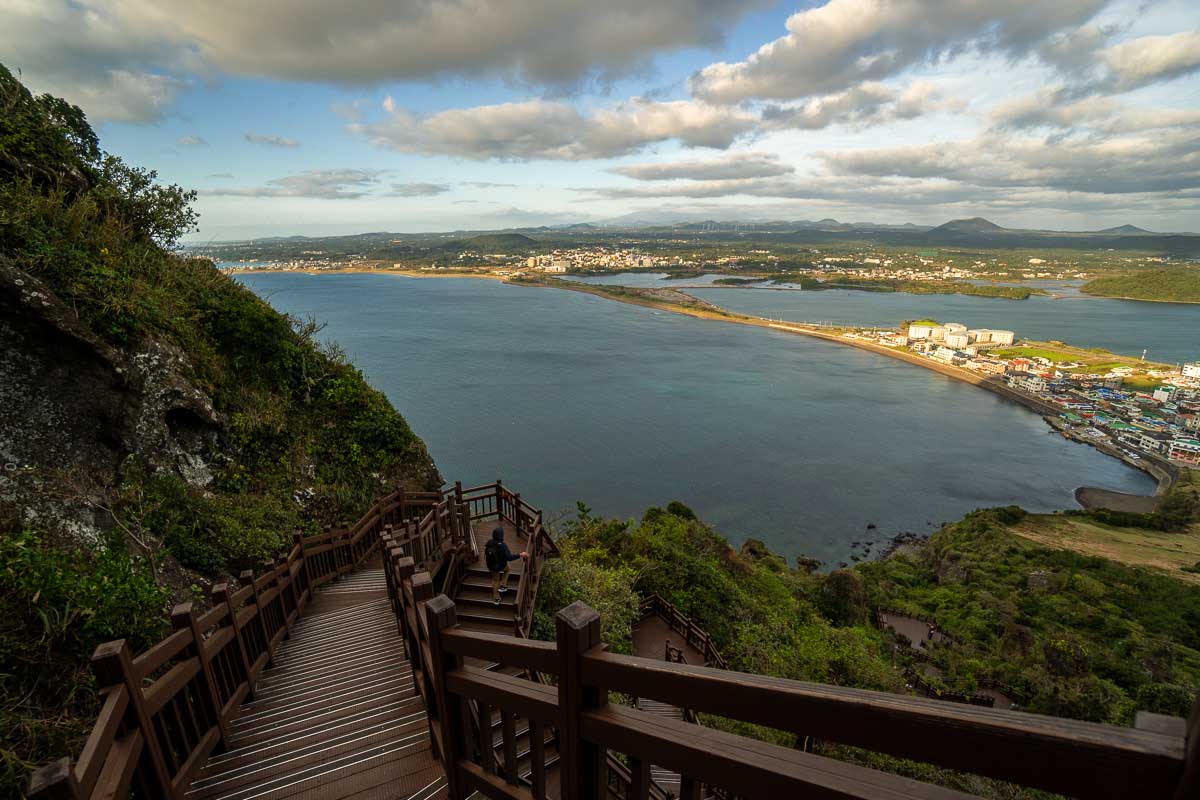
(1) Jeju Island day tours: If you only have a short amount of time, hopping on a Jeju Island UNESCO Day Tour is a great way to cover some of Jeju’s best attractions.
Selecting the Jeju East Route Day Tour (Tue, Thu, Sat) will lead you to Jeju’s natural wonders like Manjanggul Cave and Seongsan Ilchulbong Peak. You also get to explore Woljengri Beach, one of Jeju’s most stunning beaches with its emerald waters and relaxing atmosphere.

The South Route Day Tour (Mon, Wed, Fri) provides a delightful mix of Jeju’s nature and cultural side. Participants can explore the famous Yakcheonsa Temple, marvel at the interesting Jusangjeolli Cliffs, and even hike the Eoseungsaengak Trail at Mt Halla!
(2) Private car charter: Hiring a Jeju private car charter is ideal for those who don’t like to be bogged down by the strict schedule that comes with day tours. You can also enjoy greater freedom and flexibility in your itinerary. The car charter can be booked for a total duration of 8 hours, between 8AM and 10PM — enough to visit four or five attractions.
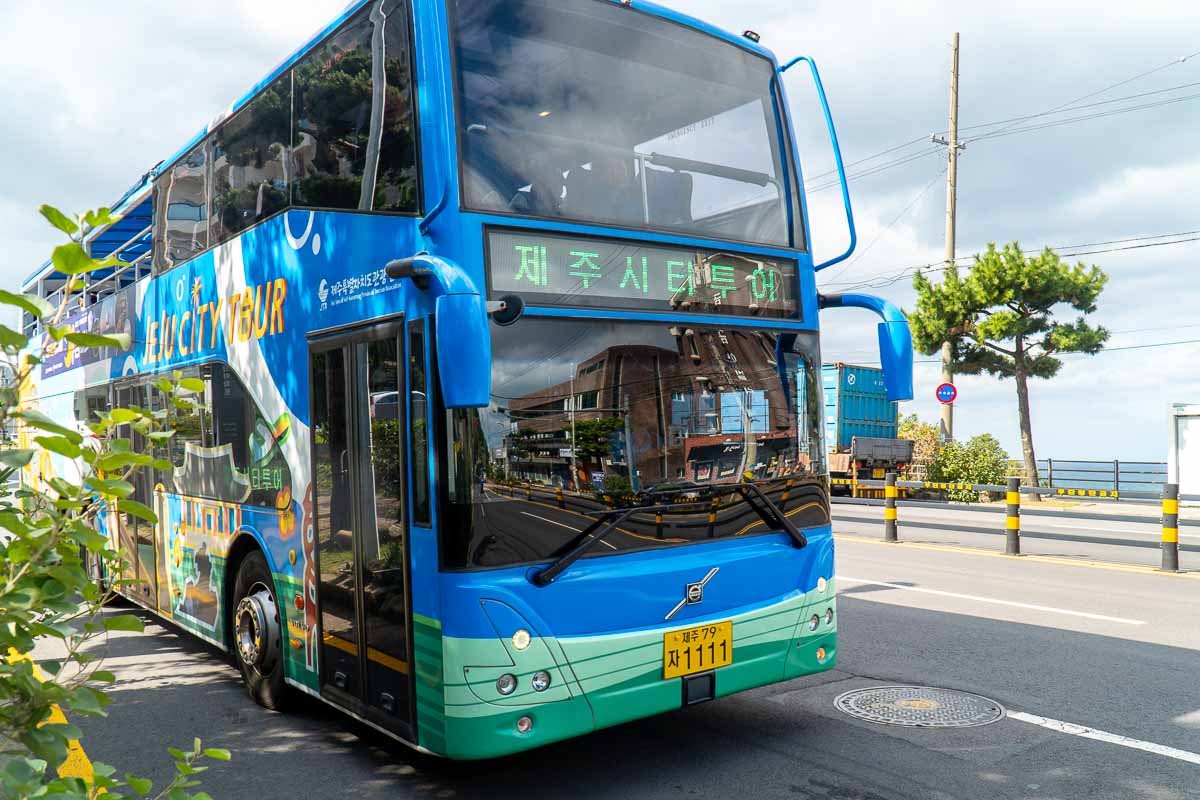
(3) Jeju City Bus: To explore Jeju, the Jeju City Bus provides a hassle-free way of sightseeing. A one-day pass allows you to hop-on-hop-off whenever and wherever you like. It’s a pretty efficient way of touring the city — you just need to plan which attractions you’d like to see!
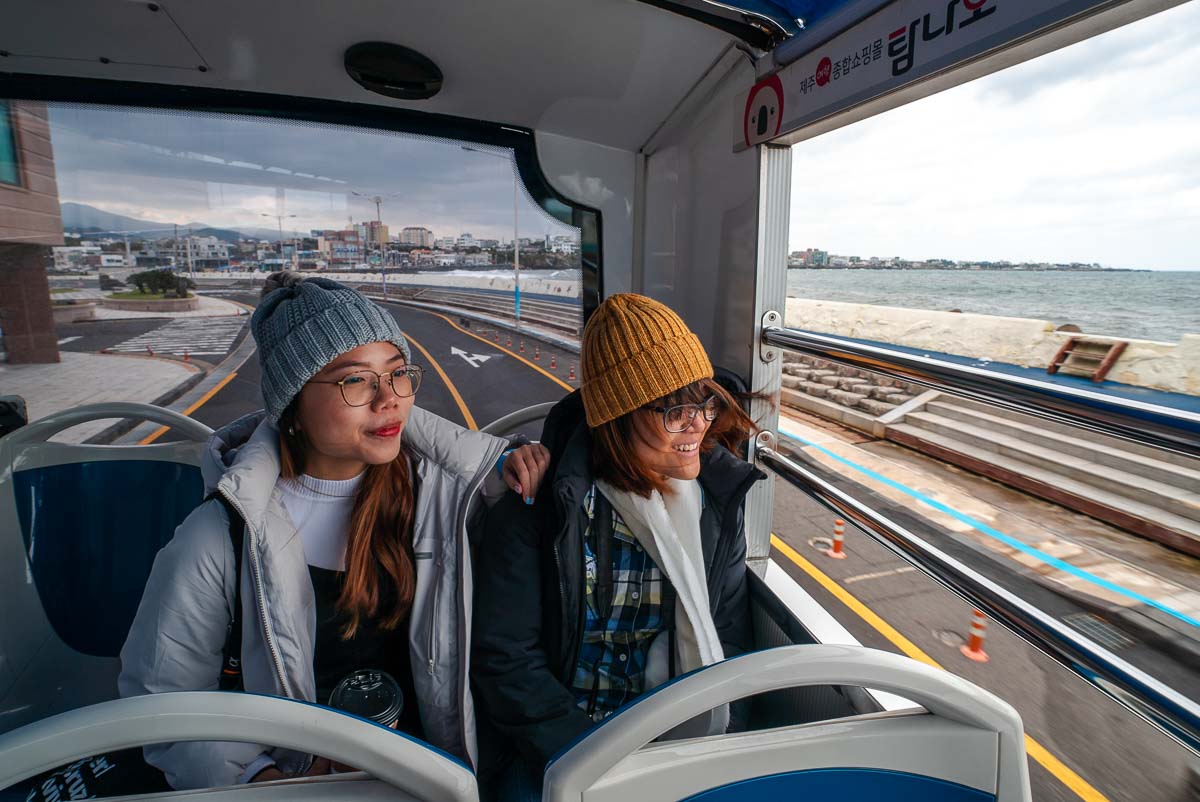
(4) Public transport: Jeju has an islandwide public bus service . These include intercity buses, airport shuttles, and tourist shuttle buses. A one-way fare typically costs ₩1,200. While cheap, the downsides are that the journeys and intervals are long.
Alternatively, you can hire a taxi to reach your destination faster. The basic fare starts from ₩2,200 – ₩3,800 (~S$2.60 – ~S$4.50).
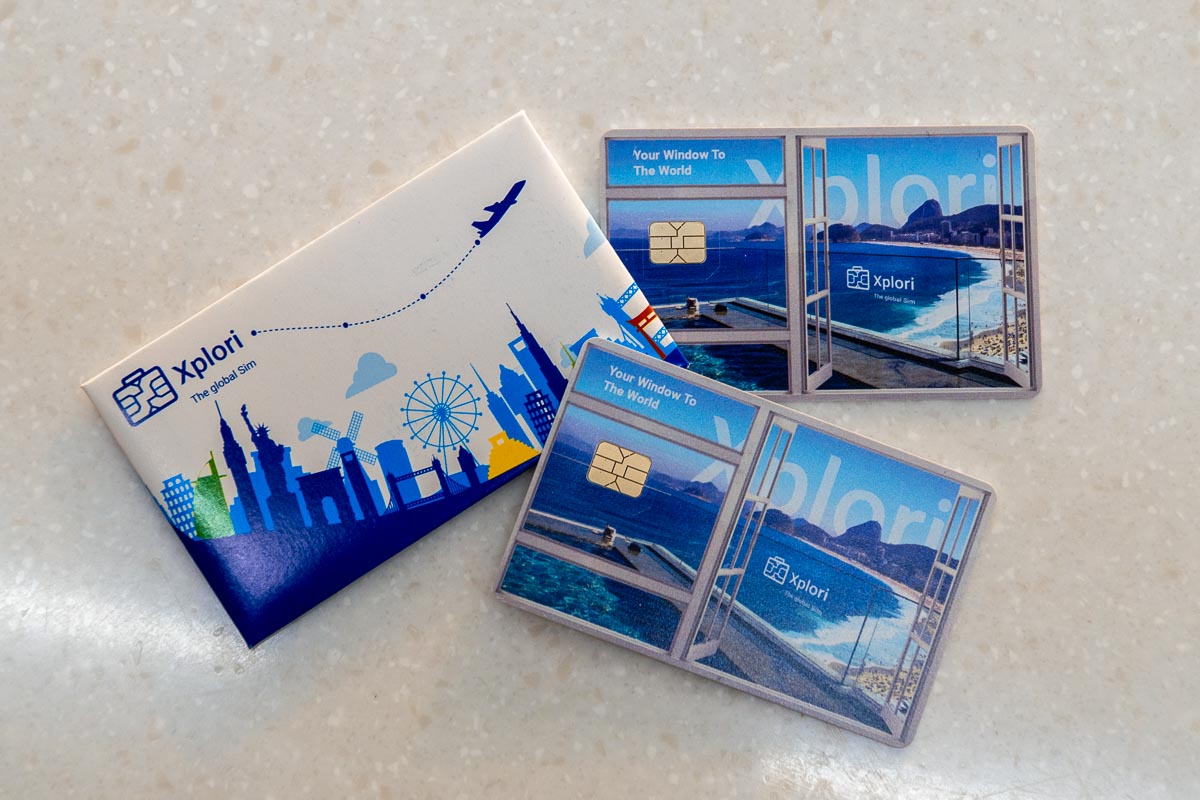
4G SIM Card: Whether you’re a driver or not, it’s important to stay connected with trustable connection. We ordered this SIM card at ~S$24.90, and it was delivered to our office in Singapore before we left for South Korea. The card comes with 5GB of data (for 20 days), and provided good coverage throughout our road trip.
Activities in Jeju Island
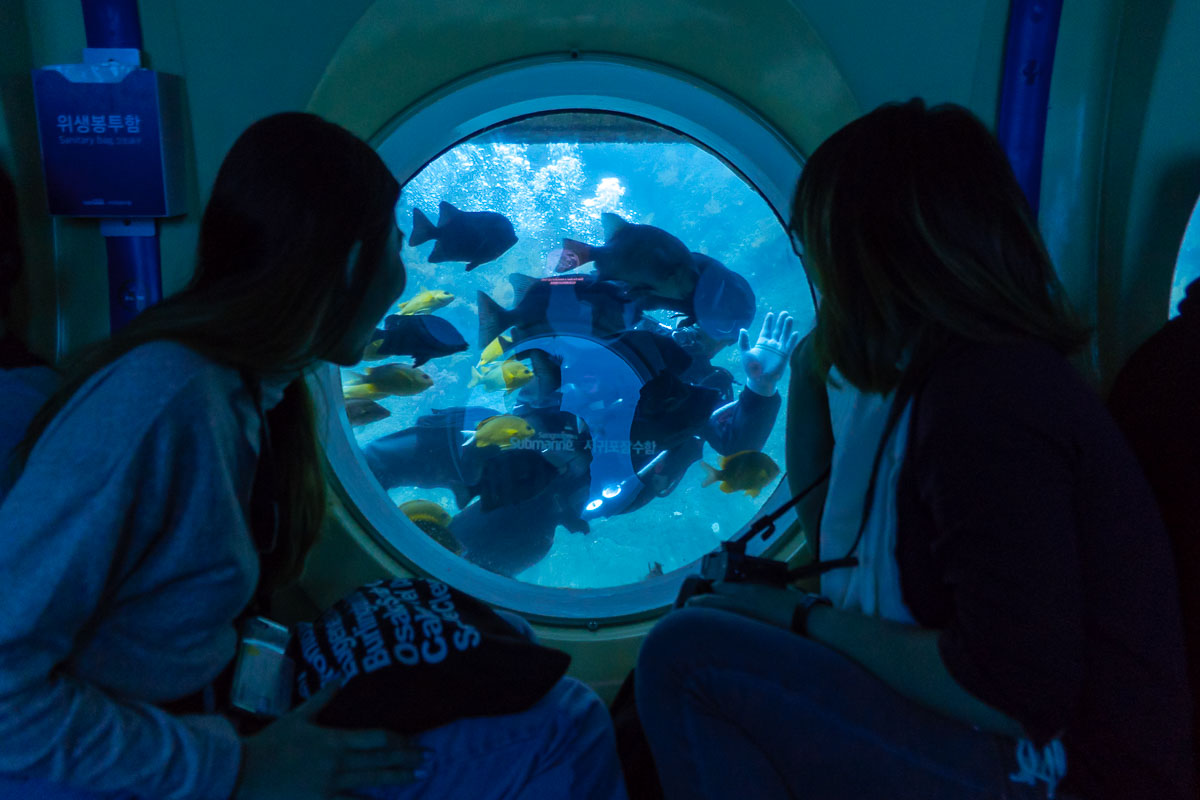
We booked our activities via Klook and got to enjoy savings as compared to purchasing on the spot. Booking with Klook was also a smooth, fuss-free process without any language barriers. This minimised any chances of miscommunication with the vendors, so we could fully enjoy ourselves on our island adventure!
To help ease your Jeju itinerary planning, here’s a summary of what we booked:
– 4G SIM Card (SG Delivery) for South Korea (~S$26.50) – Jeju Seri World: Short Course Horse Riding (~S$6.60), Cart Riding Experience (~S$13.40), Mazepark Experience (~S$4.40) – Aqua Planet Jeju Admission Ticket (~S$29) – Camellia Hill Entrance Ticket (~S$5.65)
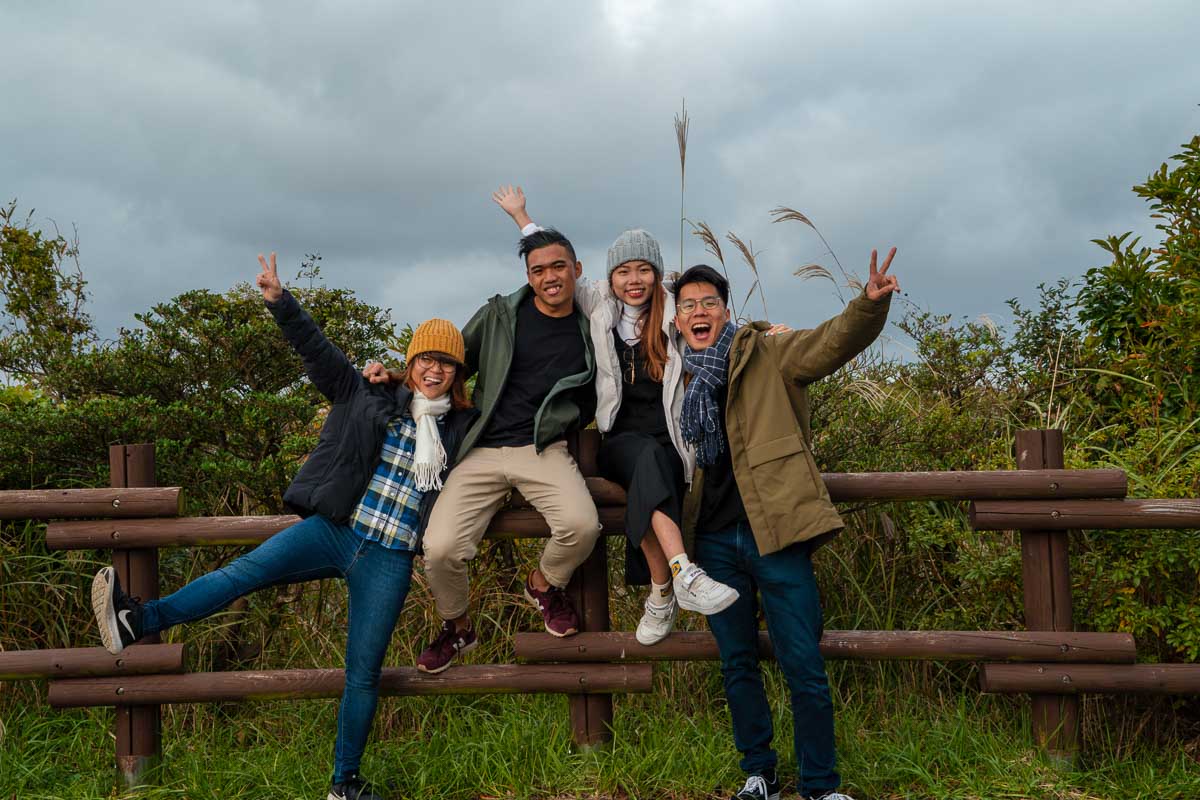
Jeju combines the best of South Korea’s goodies (e.g. KBBQ, shopping) with the amazing experiences you’d get from an island vacation. 👙🌴 Whether you’re driving or not, Jeju will definitely spoil you with its incredible nature spots and ultra-relaxed vibes. So what are you waiting for? Grab this Jeju itinerary and go!
Read also: 4D3N Busan Itinerary — Why You Need To Spend More Than A Day Trip In Korea’s Charming Coastal City
Driving Tips
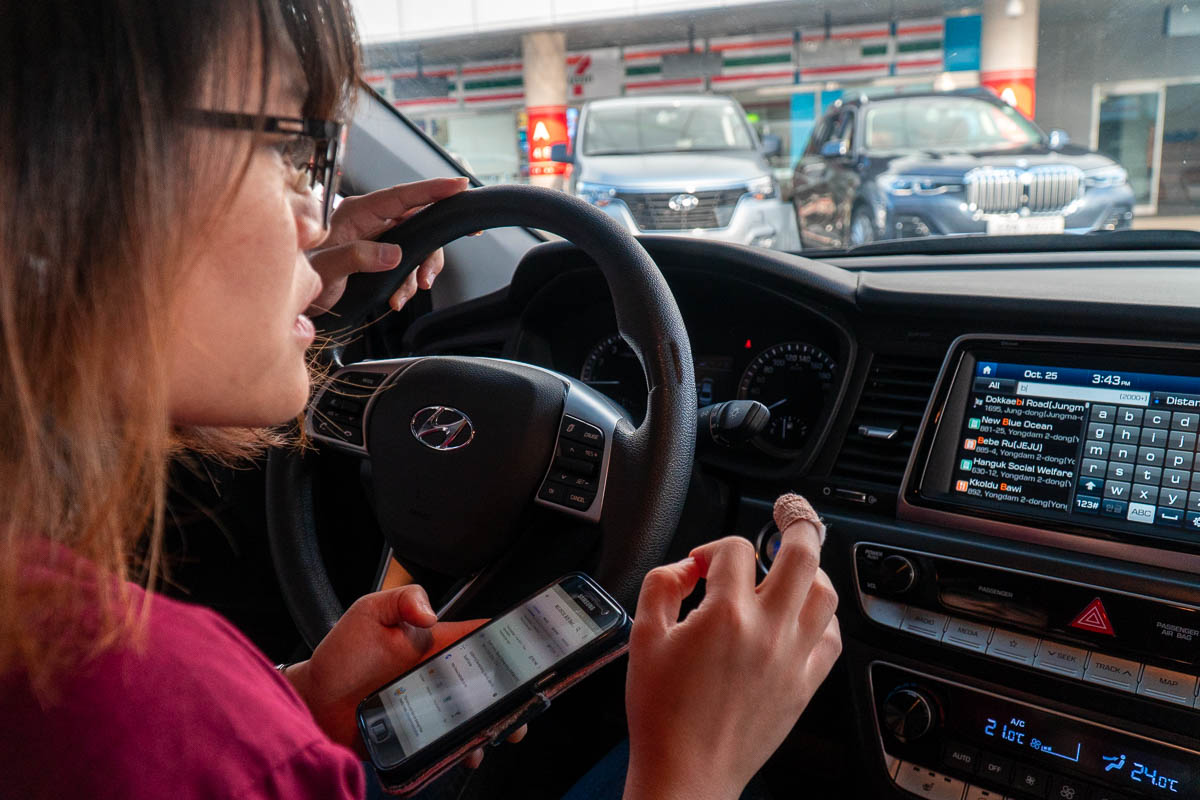
0) Avoid driving with a finger injury.
1) Get an International Driving Permit. You’ll need to provide this document and your passport for verification when collecting your rental car.
2) Read up on traffic rules. Koreans drive on the right, which means you can turn right even on a red light. Do keep a lookout for pedestrians if you’re doing so. Speed cameras are also all over Jeju, so lay off the accelerator pedal.
3) Take extra care when driving at night. There’re no streetlights along the way. Additionally, the warm and humid environment of Jeju may produce heavy fog at night.
4) Prepare the telephone numbers of your destinations. Enter them into the car’s GPS for quick and easy navigation. Use this website to find telephone numbers of places not listed in this itinerary.
5) Download navigation apps like Kakao or Naver Maps. Google Maps doesn’t work in South Korea — the most it does is only for public transportation. We used Naver Maps to plan our itinerary and search for amenities like petrol stations. Alternatively, you can also use Kakao Maps .
Ready for your Jeju adventure? Check flight prices now with this nifty widget:
If you can’t see the widget above, click here instead to check flights from South Korea to Jeju !
What did you think of this Jeju itinerary? Share with us in the comments below!
This post was brought to you by Klook .
For more travel inspiration, follow us on Instagram , YouTube , Facebook and Telegram !
View this post on Instagram A post shared by thetravelintern.com 🇸🇬 (@thetravelintern)
RELATED ARTICLES MORE FROM AUTHOR
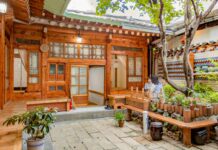
9 Hanok Stays in Seoul for the Authentic Korean Experience
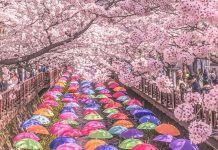
South Korea Cherry Blossom Guide 2024 — The Only Guide You’ll Need
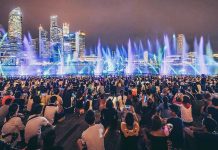
5D Singapore Itinerary Under ~S$150 — Things to Eat, See, & Do in Singapore on a Budget
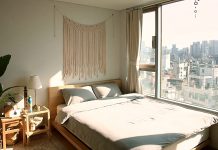
Where to Stay in Seoul — 13 Aesthetic Yet Affordable Accommodations In Rising Hipster Districts
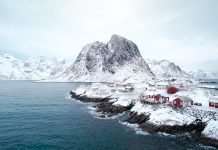
7D6N Winter Norway Itinerary — All-in Under S$1.6k Incl. Internal Flights
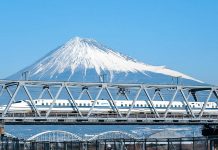
7D Japan Itinerary For S$1.3k — A Tokyo and Mount Fuji Adventure
Hi Travel Intern,
Need some help to the following.
Qcode. I’ve came across, some websites, a number of people have issue filling up address or phone number. Do you guys encounter any problem registering? Let’s say, if we can’t register before our flight. What should we need to do?
Naver Map. Is it necessary to sign up? If so, can we use our own HP no. to register? Is Naver Map an English speaking GPS? We’ve to key in destination’s phone number. If no phone number available, can we just key in address in English? If missing a turn or whatever. Will Naver Map, reroute like Google map?
Kakao T. Is it necessary to sign up? Or we can just flag a taxi anywhere?
Self-drive. I drive alot here. Any advice for first timer on left hand drive? I’m abit confused on their traffic light system though. Especially the Left turn Sign at the traffic light. The green arrow, and without green arrow, whether when can we actually make a left turn. Did I confused you? Hahaha… Where I can learn more about that “highway code”?
Thank you for your kind attention.
Regards Lav
Best Regards Lav
1. Qcode — We didn’t do this as we travelled on VTL. You can register with the hotel address and number.
2. Naver Map works well if you’re walking or taking public transport. If you’re self-driving, it works only for Samsung phones. We tried registering on iPhone but had difficulty. You may also need a local number to do so. Do look for the Korean address of the places as the map system don’t recognise all English addresses. We can’t remember about rerouting, do share if you’ve figured this out in Korea!
3. Kakao — We never tried as it seemingly needed a local number to register. Yup, cabs are easy to flag, or ask a local to help you book.
4. Self-drive — We were confused too at the start but mostly just followed what the locals do. A safe tip is to google what the traffic rules in Korea are!
Hi Edelyn, Thanks for your reply.
Hi Edelyn, It’s me again. Would like to check with you, how is the parking like or rather how should I pay for the parking lot in Jeju. For example, the road side parking, and those parking with barrier gate system.
Thank you Lav
Hi Lav! The team didn’t really have a problem parking in Jeju as most of the places were tourist attractions with free parking. For those with barrier gate systems, you can just use a credit card to pay when you exit. For roadside parking, it should be fine to park as long as there aren’t any obvious parking signs, lol. What the team did when they weren’t sure was to ask the locals staying in the area/from cafes or shops, if they could park at the area 🙂 Hope this helps! 🙂 Edelyn
Hi Edelyn Thanks for the prompt reply.
Cheers! Lav
LEAVE A REPLY Cancel reply
Save my name, email, and website in this browser for the next time I comment.

20 Things to Eat-See-Do in Sabah’s Capital Besides Climbing Mount Kinabalu

Experience Macao Singapore Roadshow: Get Exclusive Deals, Experience the Macau Grand...

Ultimate 6-Day Adelaide Itinerary — The Best of South Australia’s Underrated...

30 New Deals and Attractions in Singapore this April 2024

2D1N JB Itinerary — The Broke Friends Getaway

- Terms Of Use
- Privacy Policy
- Czech Republic
- Budapest, Hungary
- Amsterdam, Netherlands
- Switzerland
- Complete Japan Travel Guide
- Kanto Region (Tokyo, Hakone)
- Kansai Region (Osaka, Kyoto)
- Kansai Wide (Wakayama)
- Chugoku Region (Hiroshima)
- Chubu Japan
- Hokkaido Japan
- Kyushu Japan
- Jeju Island, South Korea
- KLOOK Promo Code & Voucher (2024 April)
- Agoda Promo Code
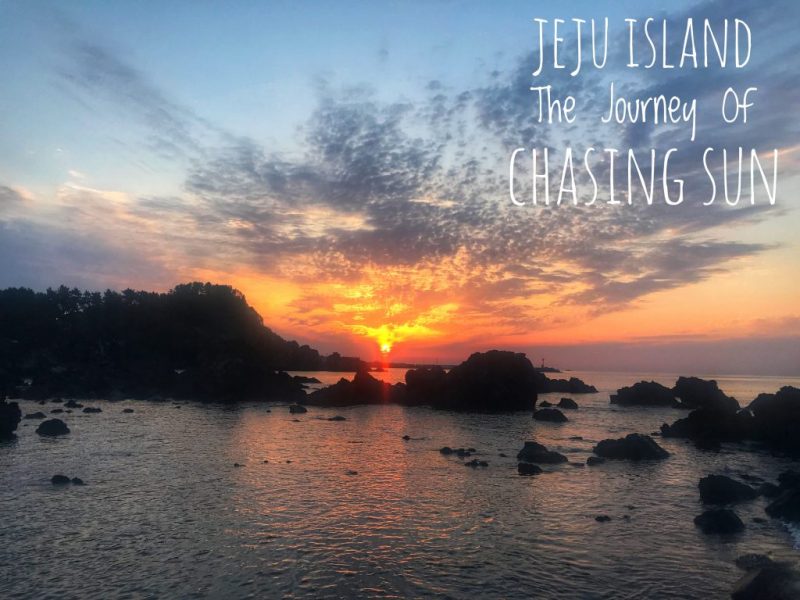
Jeju Itinerary: 6-Days Self Drive Road Trip Travel Blog
Last updated on April 6th, 2024
Whether you’re in the mood for an exciting road trip, sign-seeing, food hunt, beach gateway, or volcanic mountain hiking, 6 days Jeju self driving itinerary awaiting you.
Jeju Island (제주도, 濟州島, Jeju-do) is pretty small and the best way to explore the natural beauty of Jeju Island is self-driving. The round island trip can be done in a few days from 3 days to 7 days depending on your point of interest.
While most would recommend spending just 3 or 4 days in Jeju, we felt the 5 days road trip itinerary is the best and relaxing without skipping any of the cool stunning natural beauty. We spend another one more day conquering the summit of Mount Hallasan, the highest mountain in South Korea, which ended with a total of 6 days at Jeju Island.
Beware of this Jeju travel blog post as my Jeju self driving itinerary is not a budget trip. I enjoyed my travel time watching the gushing waterfall, and crystal clear beaches, hiking up to South Korea’s highest mountain – Mount Hallasan and watching the sunrise at the New Seven Natural Wonder of Seongsan ilchulbong crater. And I also enjoyed my foodie hunt for live octopus and abalone seafood pot, grilled black pork BBQ, fresh seafood caught by haenyeo (female free divers), and a relaxing time at a Korean café.
There are many things to do in Jeju island. We have the best pick a few attractions that we love the most to visit. Free free to click on each section to read on my Jeju travel blog below.
Table of Contents
Jeju Island Travel Tips
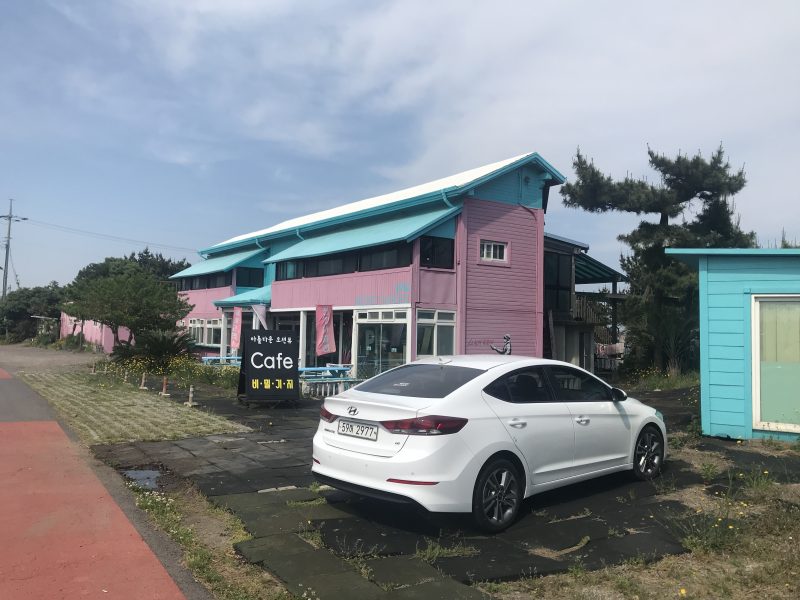
Tips#1: Rent A Car For Wonderful Road Trip
Renting a car for self-driving to discover the natural beauty at your own pace is the best way to travel at Jeju Island. We have to rent a car for my Jeju road trip through RentalCars.com , rented through AJ Rent A Car Company.
AJ Rent A Car is Avis in South Korea with English spoken staff supported, which is important for foreigners like us. We booked our car for two months in advance to ensure availability. See How To Rent And Picked Up Our Rental Car when we arrived at Jeju Airport.
Tips#2: Jeju Island Is Relatively Small
Jeju Island is a volcanic island, dominated by Hallasan at the center of the Island. The driving distance from North of Jeju City to South of Seogwipo is only required 1 hour or a little more by passing through the center of Hallasan. Alternatively, a traveler can choose for two hours of road journey by driving through the east or west coastline.
Tips#3: Planning Your Jeju Driving Route
The land area of Jeju Island is relatively small at merely 1849km2. Planning the order of places to visit wasn’t difficult. The best way is just to go one round and stay at different places to minimize the traveling time.
Getting There
Jeju Island is a Korean favorite domestic holiday destination, situated 90km away from the southern tip of the Korean Peninsula. It is served by Jeju International Airport in Jeju City with domestic flights like Eastar, Jin Air, T’way Air from Seoul, Busan, etc, or international flight from Hong Kong, China, Taiwan, and Malaysia. Alternatively, travelers can be accessed Jeju Island by ferry from Busan.
My travel tips! What I normally do is found and booked my cheapest fight deal with Skyscanner ! And the same for my Jeju trip. It is very simple and addicting to look for my next travel destination.
Where To Stay
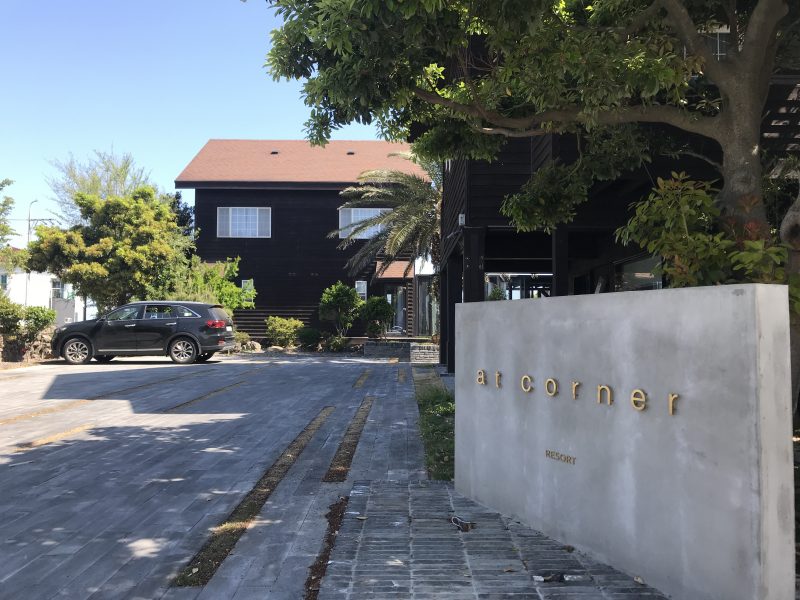
As I mentioned at the beginning of the post, my Jeju road trip is not a budget trip and most of our accommodation chosen is seaside pension or hotels with sea views designed for relaxation.
However, out of our expectations, the accommodation cost at Jeju Island is relatively cheap, ranging from ₩40,000 to ₩100,000 for a double room. Families with more members can get an even cheaper price for the entire pension. The accommodation at Jeju City is slightly higher compared with Seogwipo.
To make your vacation easy, check out our accommodation guide to find out where to stay in Jeju. Your stay decide how’s your holiday!
Ultimate Guide For Your Jeju holiday – Where To Stay In Jeju
Check out where we stayed during our Jeju road trip!
Hotel and pension in Jeju City : We stayed at two different places in Jeju city, before and after the round island trip. Hotel Whistle Lark is strategically located within walking distance of black pork street and Dongmun Market. While Yedaoom Pension (At Corner Garden Resort ) is a wooden holiday house with an overlooked garden and sea view.
Pension in Seogwipo : Jeju Aurum is a beautiful lava beach front pension with a beautiful sea view with sunrise featured.
Pension in Seongsan : B&Sun Pension is a cozy pension run by ahjumma with her family. A budget guesthouse with a unique Korean homestay experience in Jeju.
Alternatively, we also listed down the Top 10 Best Pension in Jeju if you looking for a unique Korean stay experience.
6 Days Jeju Road Trip Itinerary
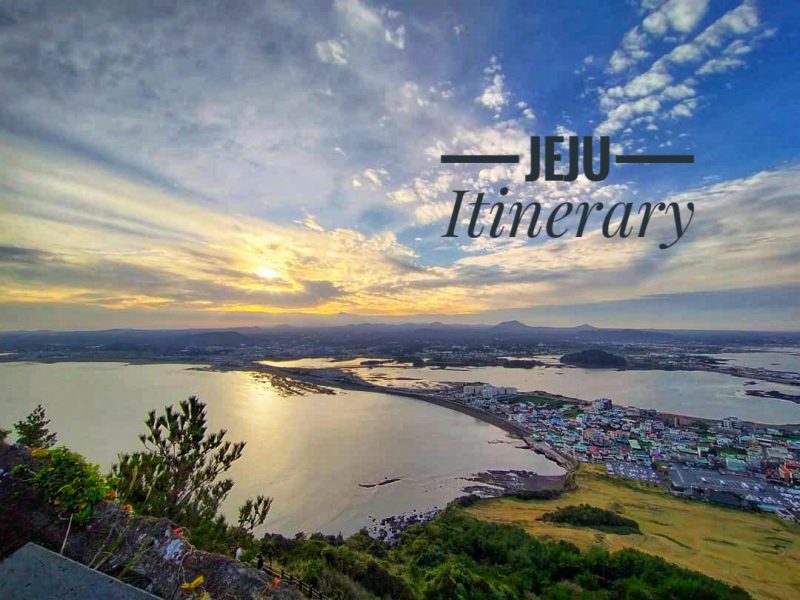
If you are planning a road trip to Jeju Island, I hope this blog can help to plan your self driving Jeju itinerary. As a nature lover, my journey is more on exploring the natural beauty of Jeju Island and does not add the museum or theme park to our itinerary.
Jeju Island is also famous for theme parks and theme museums like the Teddy bear Museum, and Hello Kitty Museum, which are very suitable for a family outing. So do make a suitable itinerary for your holiday!
Check out our 6 Day wonderful Jeju itinerary with self driving!
- Day 1: Arrived Jeju. Yongduam Rock, Dongmun traditional market. Dinner at black pork street
- Day 2: Jeju O’Sulloc Tea Museum and Innisfree Jeju House, Yongmeori Coast
- Day 3: Jeongbang waterfall, Daepo Jusangjeolli Cliff, Seogwipo Maeil Olle Market, Seopjikoji
- Day 4: Seongsan Iluchulbong and Udo Island
- Day 5: Hike Up to Mount Hallasan
- Day 6: Relaxing walk in Geumneung and Hyeopjae beach. Goodbye Jeju.
Day 1: Jeju City Exploration
Our flight landed at Jeju in the late afternoon. So we decided to stay at Jeju downtown before kicking start our Jeju road journey. Nothing much can visit at the Jeju downtown except the Yongduam rock. So the main focus of the first day is more on exploring the city area and the Jeju foodie hunt.
Yongduam Rock (Dragon Head Rock) (용두암)
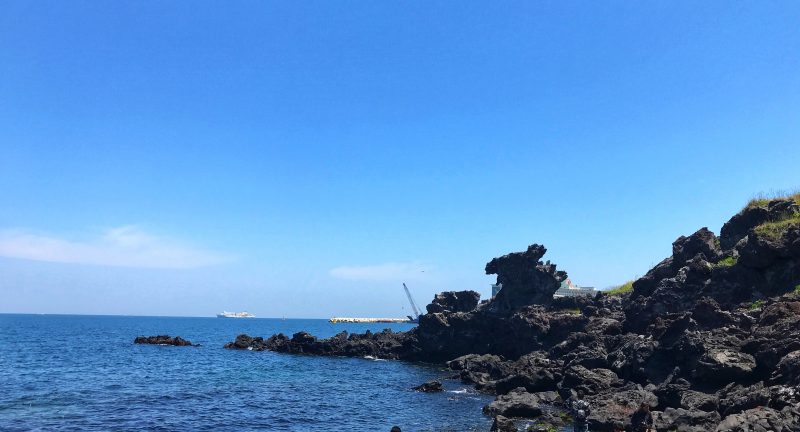
The oceanfront volcanic rock formation in the shape of dragon’s head created by strong winds and waves over thousands of years. Don’t forget to follow the downhill stair to take a close look.
- Address : 15 Yongduam-gil, Yongdam 2(i)-dong, Cheju, Jeju-do, South Korea
- Admission : Free!
- Parking Fee : ₩2,000
- Opening Hours : Anytime!
- Korea GPS Tel No : 728-3918
Dongmun Traditional Market (동문시장)
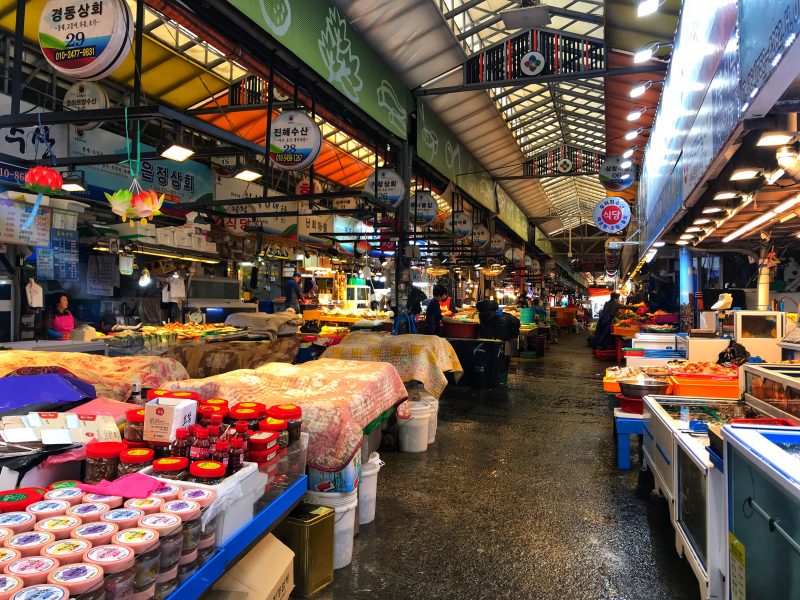
The oldest traditional indoor market on Jeju Island, selling local produces, seafood, souvenirs, and more. Take a visit to soak up some of the local flavors at the Dongmun Market.
Dongmun Market will transform into a night market, selling Korean street food like fried chicken, topokki, fish cakes, and grilled octopus. The night market is located at entrance 6.
- Address : 20 Gwandeong-ro 14(sipsa)-gil, Idoil-dong, Cheju, Jeju-do, South Korea
- Opening Hours : Daily from 8 a.m. to 9 p.m.
- Korea GPS Tel No : 752-3001
Dinner At Black Pork Street (Heuk-Dwaeji/흑돼지거)
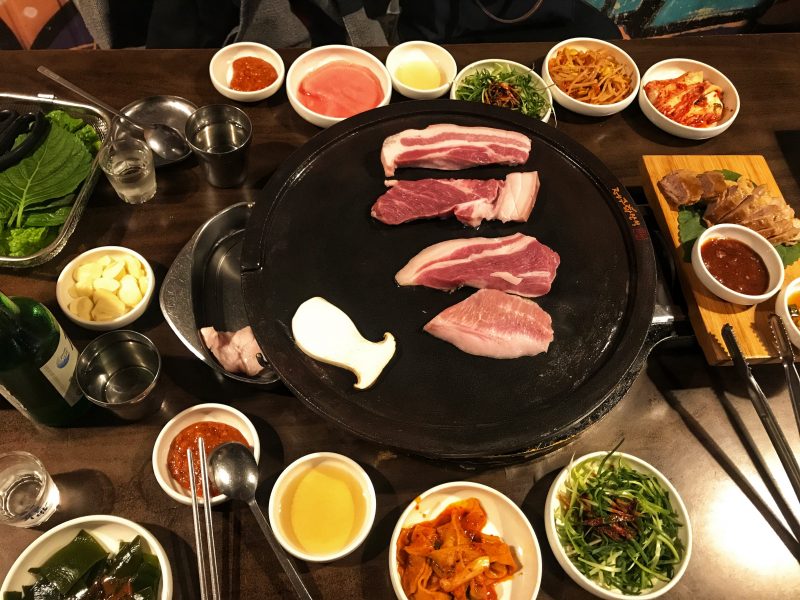
Wide range of restaurants that specialize in black pork in a row at Black pork street. The black pork BBQ is one of the Jeju delicacies and I have put it as one of the must-eat at my Jeju foodie hunt. You won’t go wrong with any of the restaurants here!
We choose the high-rated restaurant, Dombedon for our first dinner at Jeju Island.
See our Dining Experience At Dombedon .
Stay: Hotel Whistle Lark
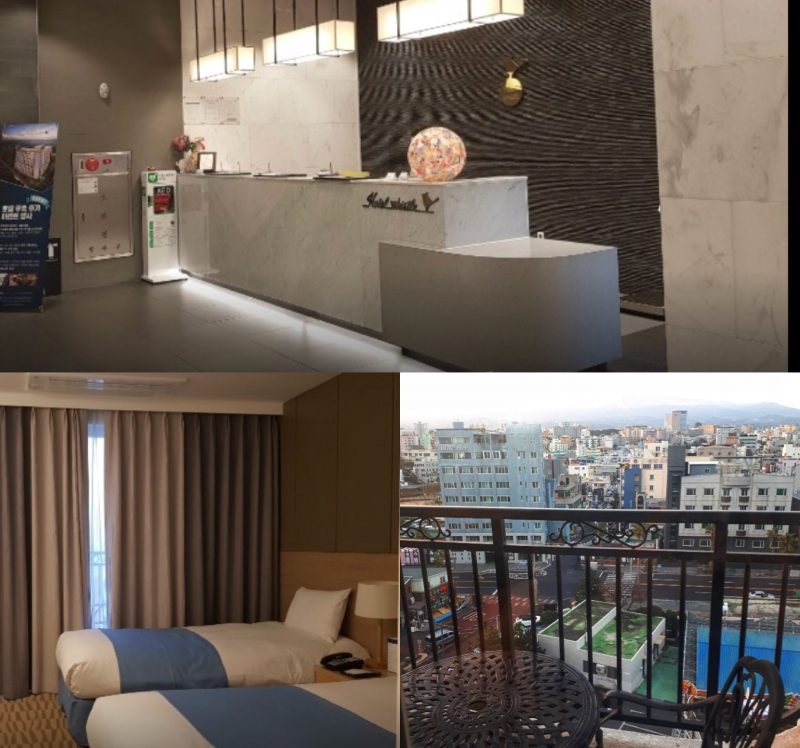
Whistle Lark Hotel is a newly open hotel, located in Jeju old town. It is strategically located within walking distance to Dungmun Market, E-mart, black pork street, sashimi street, and Jungang underground shopping street. A good location with easy access to lots of eateries, shopping, and the city’s top sight.
Nearby with other 4-star and 5-star hotels : Ocean Suites Hotel and Hotel Regent Marine The Blue
Day 2: Jeju West Coastline
The second day on the Jeju road journey started with mouth-watering pork noodles at Jamae Guksu . We continue our driving journey to Jeju Osulloc Tea Museum and Innisfree Jeju House for a brief visit. The whole journey takes an approximate 1-hour drive from Jeju city. After the break, we are heading to the highlight of the day – Yongmeori Coast.
Sister Noodles (Jamae Guksu /자매국수)
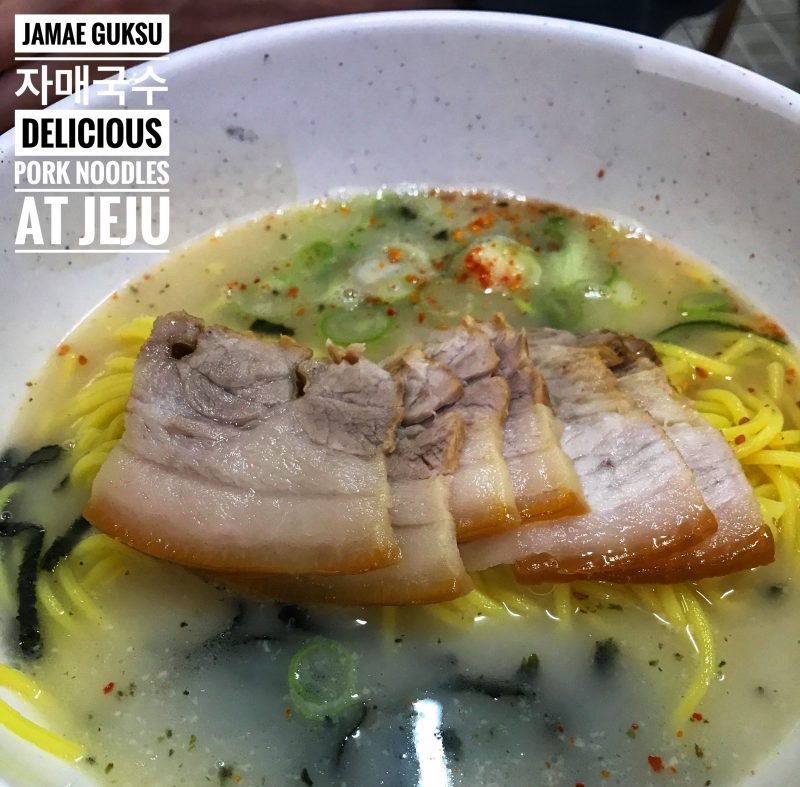
Located at Guksu Geori (Noodle Street) in Jeju city, Jamae Guksu is one of the hidden gem restaurants which very famous among the locals. It is well known for Bibim Guksu (비빔국수 / mixed spicy noodles) and Gogi Guksu (고기국수 / pork noodle soup).
You probably will need to wait in line to taste these noodles, and you won’t regret giving them a try. Price is relatively cheap, ₩7,000 to ₩8000 (less than $8) for a large bowl of noodles with several pork slices and customary side dishes.
Check out our Food Review At Sister Noodles !
- New Address : 46 Hanggollam-gil, 특별자치도, Jeju-si, Jeju-do
- Opening Hours : Daily from 9 a.m to 2:30 p.m, re-open from 4 p.m to 6 p.m.
- Korea GPS Tel No : 746-2222
Jeju O’sulloc Tea Museum (오설록티뮤지엄)
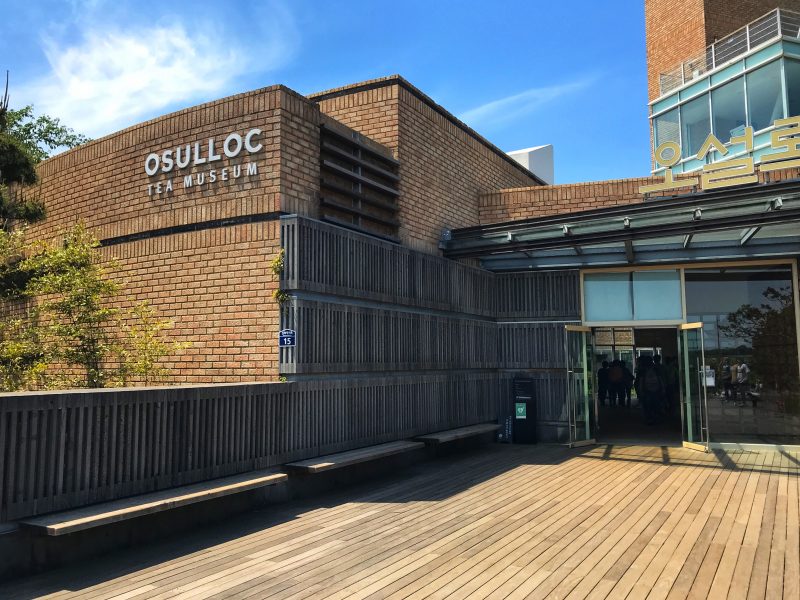
The famous O’Sulloc Tea Museum is a place you should not miss for tea lovers. Instead of the museum, the cafe located in the museum catches our intention to pay for the visit. The cafe was crowded with tourists and they formed a long line to order food and drinks.
Follow the small path beside the museum will leading to Innisfree Jeju House. Innisfree is a Korean company selling skincare products made from natural ingredients in Jeju.
There was another cafe in Innisfree too if you don’t want to wait too long at O’Sulloc café. The crowd is much less at Innisfree café. You may also try their soap-making workshop at Innisfree Jeju!
- Address : 15 Sinhwayeoksa-ro, Andeok-myeon, Seogwipo, Jeju-do, South Korea
- Opening Hours : Daily 9 a.m to 6 p.m
- Korea GPS Tel No : 794-5351
Yongmeori Coast (용머리해안)
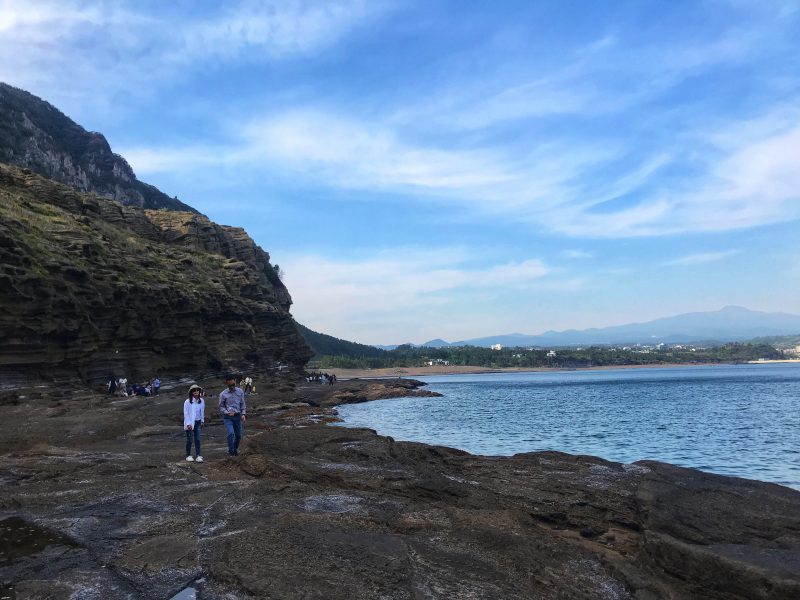
One of my favorite places to visit in Jeju. The breathtaking view of rock formations, the sea, and the sky! Yongmeori Coast is a rocky coastline where Mt Sanbangsan stretches into the ocean and features unique cliff formations that have turned the coast into a stunning walk.
Meet the Haenyeos, women sea-divers of Jeju who sell fresh raw seafood like sea cucumber, sea snail, and sea squirt.
- Address : South Korea, Jeju-do, Seogwipo, 안덕면 Andeok-myeon, 사계리
- Note: Subject to change as it will be close if high ties or bad weather
- Admission : 2,000 won
- Korea GPS Tel No : 794-2940
Stay: Jeju Aurum Pension
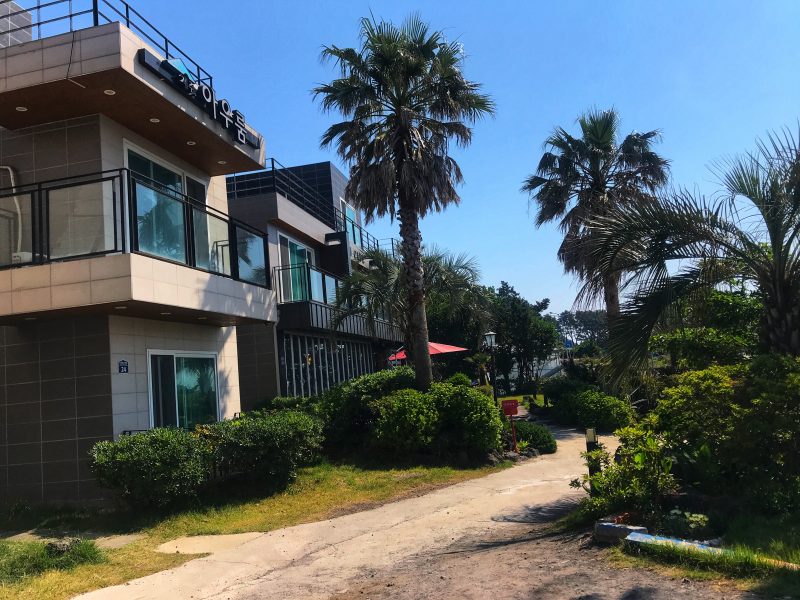
That night, we stayed at Jeju Aurum , a family-run pension at Seogwipo. It is a lava beach front pension with a beautiful sunrise view that can be seen at the front. Our host, Mr. Kim is very friendly and nice.
Limited rooms are available, so don’t forget to book your room as earlier as possible.
Day 3: Jeju South Coastline (Seongwipo)
We started our journey late as we wake up and catch the sunrise at 5 a.m. from our pension. We just need to wake up and cross the road to the seafront to wait for the sun to come up. The view is spectacular!
Jeju is gifted by heaven with 3 famous waterfalls: Jeongbang waterfall, Cheonjiyeon waterfalls, and Cheonjeyeon Waterfalls. All of them are located at Seowigpo, the Southern part of Jeju Island. We did not go to all and instead only choose one of them, the Jeongbang waterfall.
Jeongbang Waterfall (정방폭포)
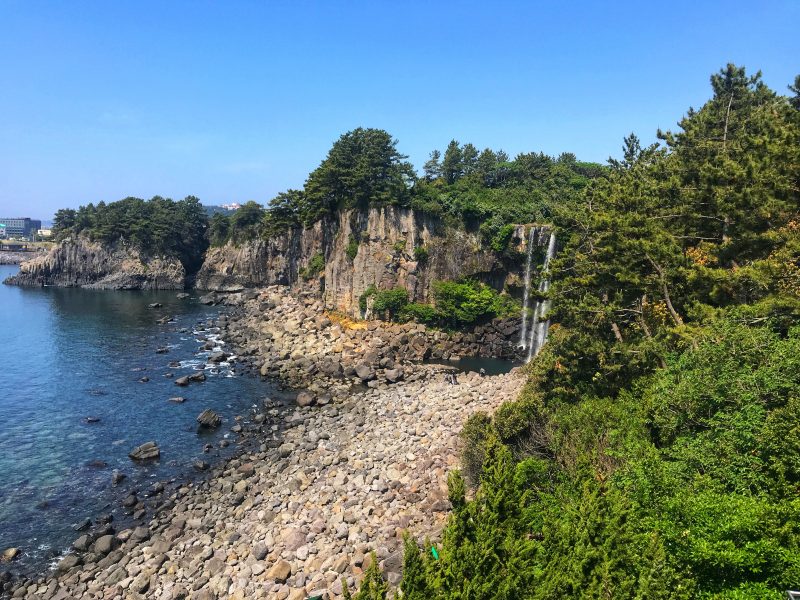
Jeongbang Waterfall is the only waterfall in Asia that falls into the ocean. This was a beautiful place to be in the morning, there was just a bit of rainbow in the mist at the bottom of the waterfall.
To reach the bottom of the waterfall, you need to fight several steps and some big slippery rocks to get the best vantage point for viewing.
- Address : 37 Chilsimni-ro214beon-gil, Donghong-dong, Seogwipo, Jeju-do, South Korea
- Opening Hours : Daily 9 a.m to 7 p.m (Last admission 6 p.m)
- Admission : ₩2,000
- Korea GPS Tel No : 733-1530
Daepo Jusangjeolli Cliff (중문 대포 주상절리대)
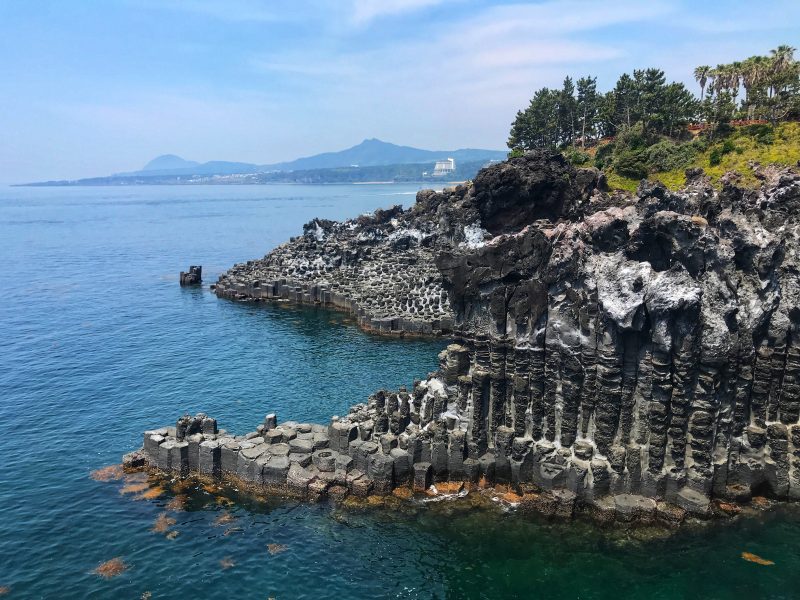
Another cliff formation when the lava from Mt. Hallasan erupted into the sea of Jungmun. The volcanic rock formed into various shapes like pillars, cubes, or hexagons along the coast at the southern of Jeju Island.
The view is magnificent!
- Address : 36-30, Ieodo-ro, Seogwipo-si, Jeju-do
- Parking fee : ₩2,000
- Korea GPS Tel No : 738-1521
Seogwipo Maeil Olle Market (서귀포매일 올레시장)
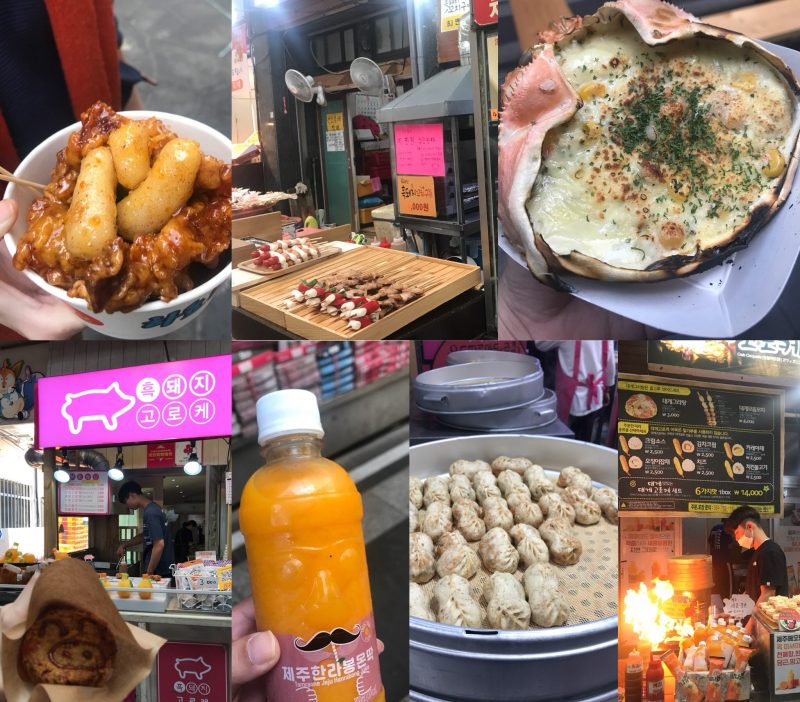
Seogwipo Maeil Olle Market is one of the traditional markets located in southern Jeju. Wide variety of goodies like souvenirs, fresh produce, meats, seafood, and other things.
Seats are lined along the middle of the market and customers are more comfortable enjoying their food in the seats. Snack food like black pork and crab croquettes, gimbap (Korean rice roll in seaweed), fried chicken, and rice cake can be found at the market.
Seopjikoji (섭지코지)
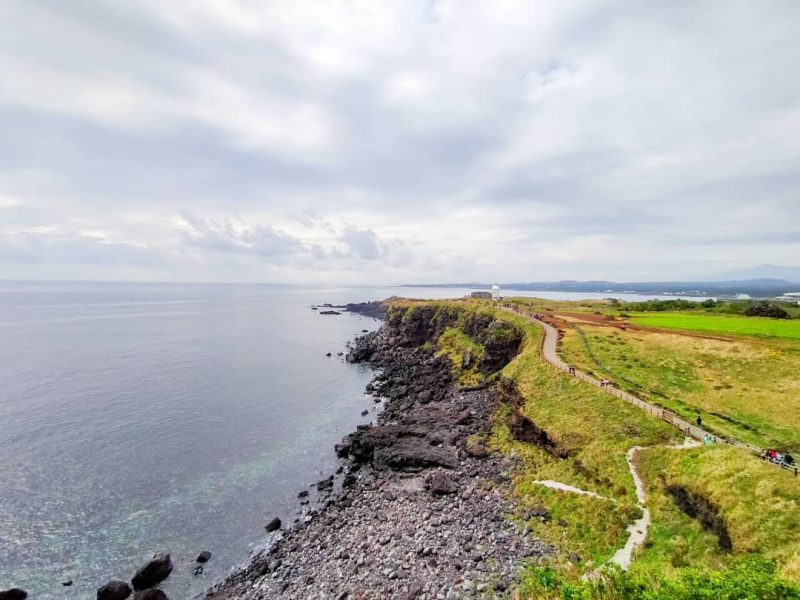
Lastly, we ended our exploration at the South coast and drove the Seopjikoji. Located at end of the eastern shore, Seopjikoji is a popular attraction in Jeju, thanks to its appearance in the Korean drama scene. But don’t get me wrong. Seopjikoji is a fantastic scenery for a coastal walk.
Walking along the coast awarded with spectacular and breathtaking. Make sure to visit Seopjikoji during spring. It is one of the best places for blooming canola fields on Jeju Island.
- Address : 107, Seopjikoji-ro, Seogwipo-si, Jeju-do
- Opening Hours : Always Open
- Admission : Free but with parking fee of ₩1000
- Korea GPS Tel No : 784-2810
Stay: B&Sun Pension
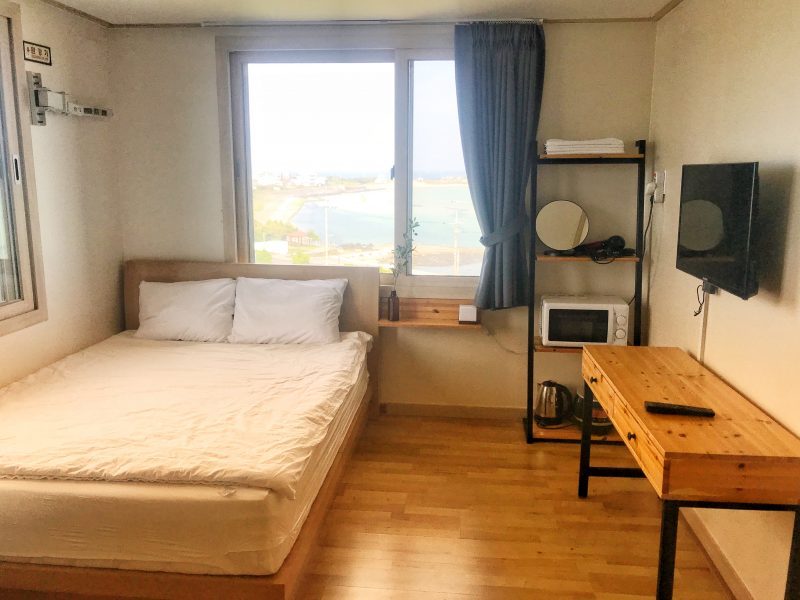
We stayed at B&Sun Pension run by ahjumma. It is a 4 stories building and the ahjumma with family are staying on the second floor. The remaining rooms are rented out as bed and breakfast to guests. It is a pretty cozy room with a microwave, kitchenware, washing machine, TV, and other electronic devices well equipped. The location is only less than 10 minutes drive to the Seongsan Ilchulbong.
Day 4: Jeju East Coastline
Jeju east coast is the best scenic destination you should not miss on your Jeju trip. It is very perfect to coupled up the Sunrise Peak Seongsan Iluchulbong and Udo Island in one day as both are located very close. Our day 4 Jeju itinerary are focusing on these two popular attractions. If you have more time, you can consider going to Manjanggul Lava Tube.
Sunrise at Seongsan Ilchulbong (성산일출봉)
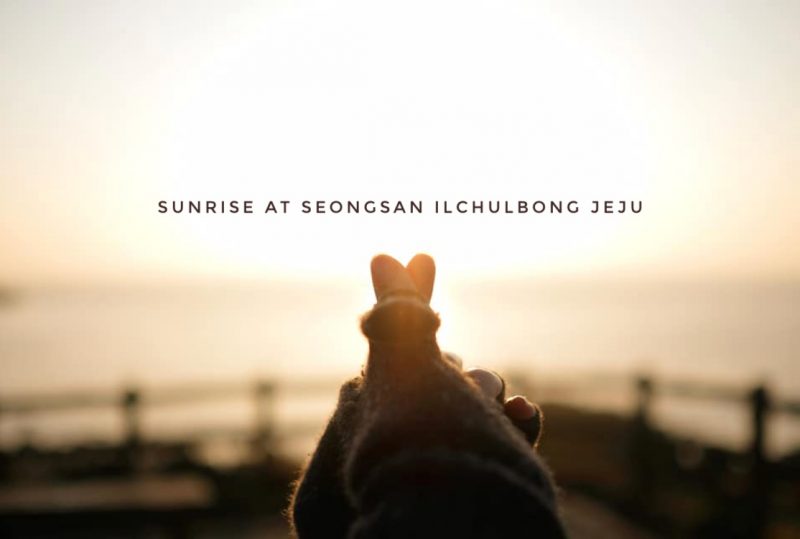
Seongsan Ilchulbong, also known as ‘Sunrise Peak’, is a UNESCO World Heritage site and one of Jeju Island’s most famous geographical features. Listed in the new seven wonders of the world, Seongsan llchulbong is a tuff cone crater that was formed when the volcano erupted under the ocean about 5000 years ago.
There are also Haenyeos showtimes at 1.30 pm and 3.00 pm daily. Be there earlier to get a first-row view of the action if you wish to see the performance.
- Address : 284-12, Ilchul-ro, Seongsan-eup, Seogwipo-si, Jeju-do , South Korea
- Opening Hours : April-October 07:00-20:00 and November-March 07:30-19:00
Udo Island (우도)
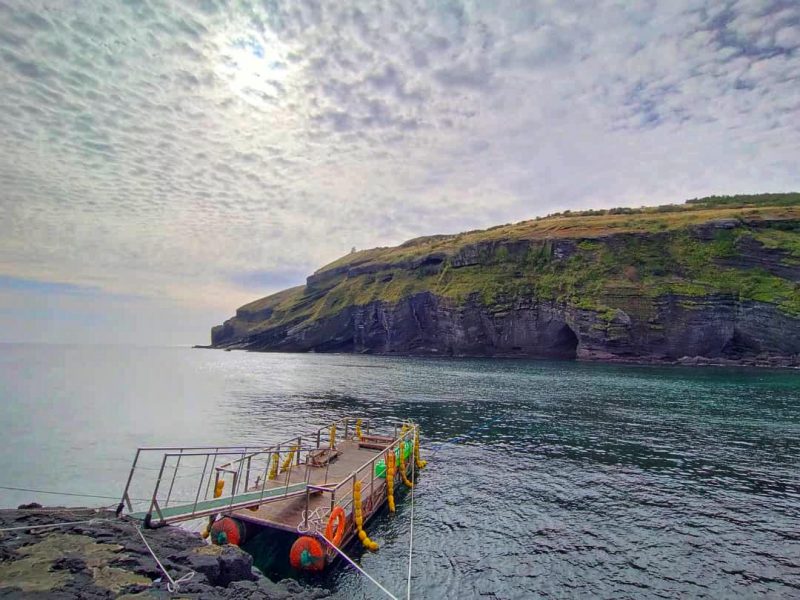
A miniature of Jeju island with beautiful beaches, lava rocks, cliffs, and scenery along the coastal road. Prepare to spend a day relaxing in a peaceful atmosphere with no crowd, no nightlife, and no major attraction but beautiful nature.
The name “Udo” was given because it resembles the shape of a lying cow. The ferry departs from the Seongsan Passenger Terminal Port every 30 minutes and it takes around 15 minutes to reach Udo Island.
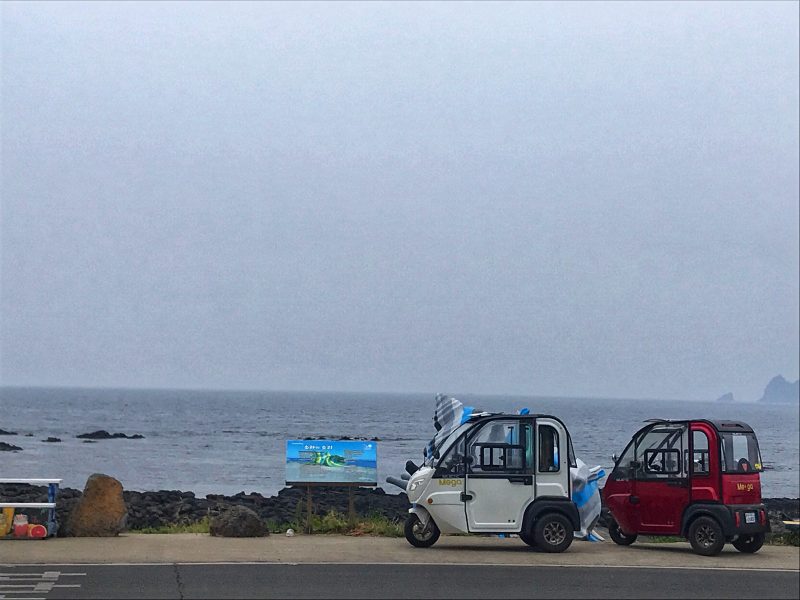
The round island journey can be finished by walking a total length of 16 km of the Udo Olle trail. Travelers can also rent a bicycle, electric bike, scooter, electrical car, ATV, or take the hop-on-hop-off tour bus to go round the Udo Island.
- Ferry Ticket : ₩8,000 for the return trip
- Parking Fee at Seongsan Port : ₩8,000
- Korea GPS Tel No : 783-0533
Stay: Yedaoom Pension
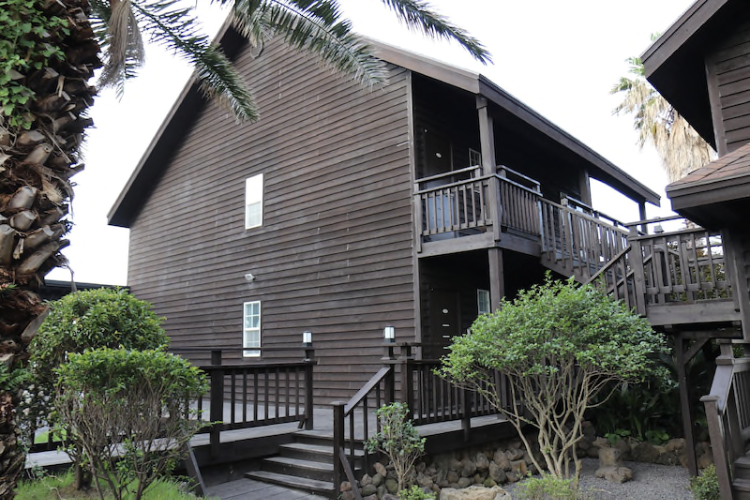
Our last two nights are stayed at Yedaoom Pension aka At Corner . It is a wooden holiday house with an overlooked garden where you can have a BBQ there and features a nice view of the sea from far. The location is also very strategic with 10 minutes drive to the airport.
Day 5: Hike Up To Mt Hallasan
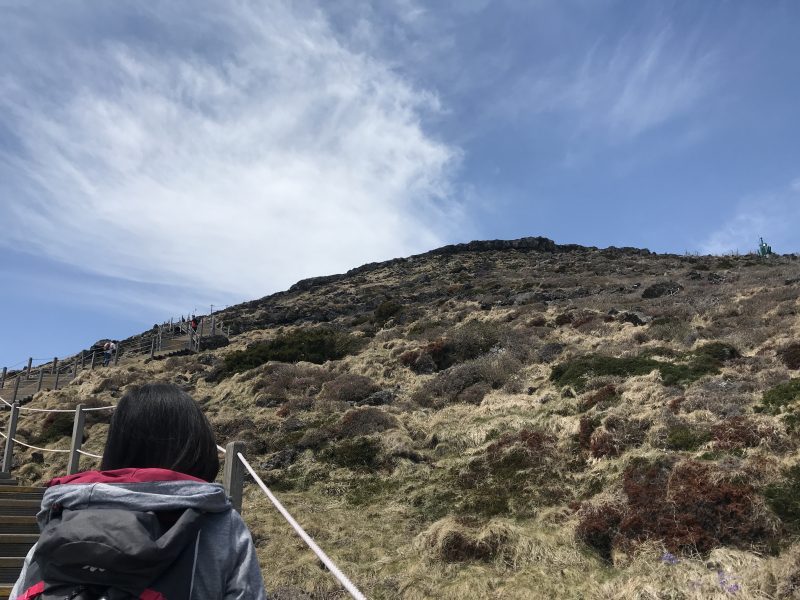
Natural hikers don’t miss out on the opportunity to hike up to the tallest mountain in South Korea! Mt Hallasan is the most memorable landmark of Jeju Island with an altitude of 1950 meters above sea level. It is an active volcano but the last eruption was 1007 years.
Hike up to the summit via Seongpanak or Gwaneumsa trails. Alternatively, Yeongsil or Eorimok is a good option for those who want to enjoy a stunning view of the mountain but it won’t take you to the top.
Day 6: Northwest Coastline (Aewol)
We did not plan for any attraction on our last day. Instead, we decided to spend our time on the beautiful beaches in the northwest before leaving Jeju.
Geumneung and Hyeopjae Beach
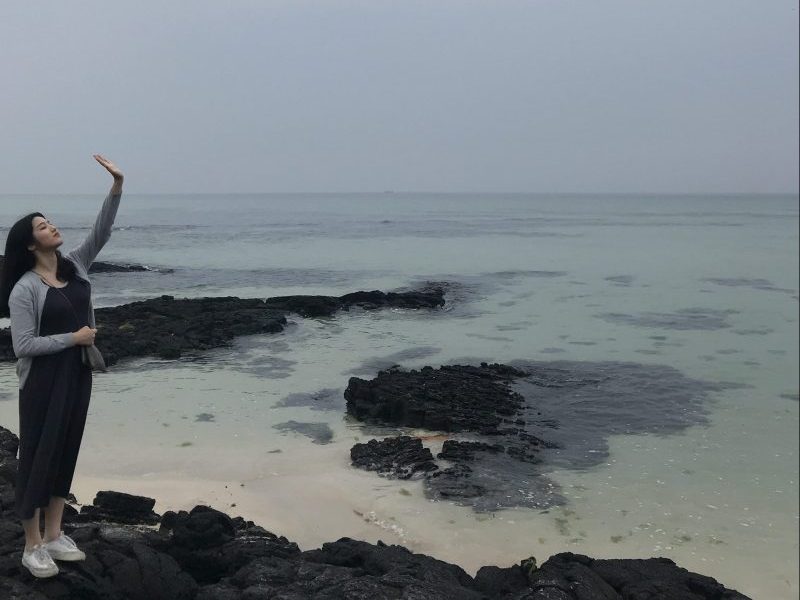
Thanks to the beautiful sandy white beaches with crystal clear azure seawater, Geumneung, and Hyeopjae beach are popular beach gateways. These two beaches are just next to each other, so it is very good to visit in one go.
The long seashore is around nine kilometers long with beautiful white sand and black lava rocks. Together with the clear pristine waters, making the scenery at Geumneung and Hyeopjae beach is very beautiful.
Be ready to dip your toes into clear water and walk along the shore. You can easily spot the seaweed in the crystal clear water.
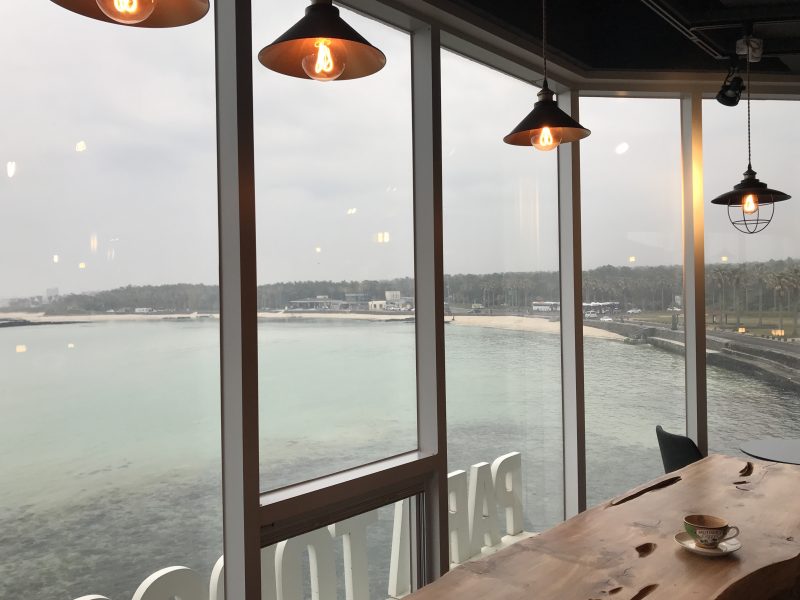
Picked a cafe nearby for a cup of coffee.
Enjoy your day listening to the classical music inside while drinking a cappuccino with the ocean view. You’d think you’re in Hawaii or something from the picture-perfect window views!
- Address : 329-10 Hallim-ro, Hallim-eub, Cheju, Jeju-do, South Korea
- Admission : Free
- Korea GPS Tel No : 796-0001 (Halim Park, opposite of Hyeopjae beach)
What To Eat In Jeju?
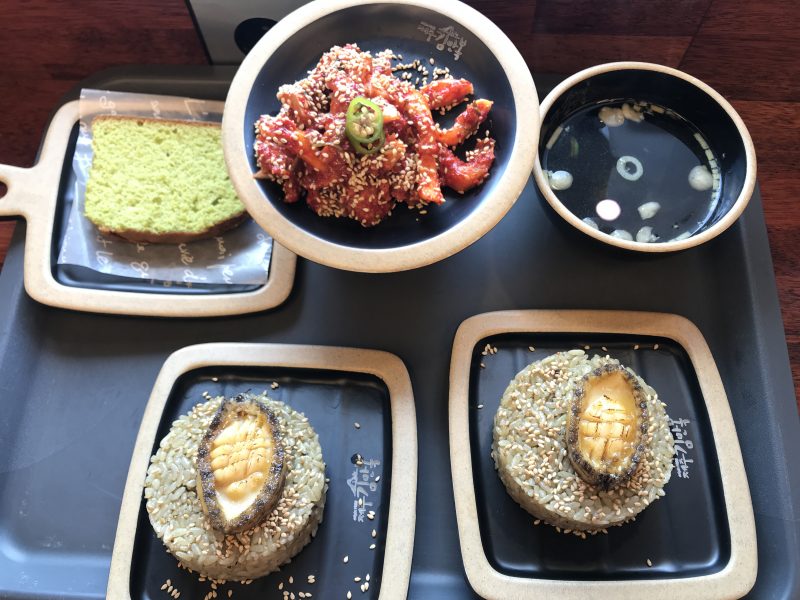
Wondering what you should eat at Jeju? If you love to explore the unique local food during travel, I am sure you want to try out all the Jeju food follow our food guide. Live seafood hot pot, fresh raw abalone, grilled black pork, Korea fried chicken, and more.
Listed below are the MUST EAT Jeju food and restaurant, highly recommended by locals and us! Try at your preference! And risk…..
Complete Jeju Food Guide : The Best Local Dishes to Eat in Jeju Island.
- Delicious Pork Noodles From Sister Noodles aka Jamae Guksu
- Michelin Star Rated Black Port BBQ Restaurant, Dombedon
- Fresh Abalone Feast At Myeongjin Jeonbok
- Charcoal Grilled Black Pork, Neulbom Heukdwaeji
- Live Seafood Hot Pot, Samseonghyeol Haemultang
Budget And Expenses For 6 Days
How much to spend in Jeju for 6 days? My 6 days Jeju road trip is not a budget trip, we enjoy eating fresh abalone, seafood pot, grilled black pork, or drinking a cup of coffee with a nice dessert at a cafe. However, we did not do a lot of shopping on Jeju island and major activities are sign-seeing and food hunting.
Below is my rough estimation for my Jeju trip for your reference. We almost spend ₩550,000 on the 6 days Jeju road trip itinerary, not including the flight ticket. You may spend lesser if you are not fancy about the seafood.
Most restaurants, cafes, and hotels are accepted credit cards. But you are advised to exchange some Korean won for personal use. Certain pension, haenyeo stalls, and food stalls at the traditional market are only in cash.
The expenses listed are for 2 people (for reference):
- Accommodation : ₩300,000 for 5-night stay at 3-star to 4-star hotel or pension
- Car rental with CDW covered: ₩160,000 for Hyundai RAY for 6 days
- Gasoline expenses for a round island trip in 6 days: ₩60,000
- Entrance and parking fee : ₩28,000
- Medium to light breakfast and lunch, ₩20,000
- Dessert or snack, ₩15,000
- Proper dinner like seafood or grilled black pork, mostly costs about ₩60,000
Don’t forget to compare your rental car to Rentalcar.com with the best price guarantee and a high customer reputation!
Complete Jeju Road Trip Itinerary
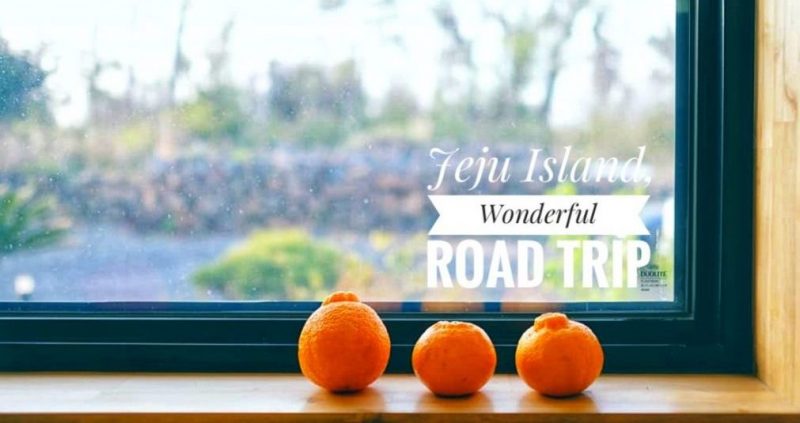
Jeju Island is the perfect destination for you . Whether you’re in the mood for an exciting road trip, sign-seeing, unique food hunting, beach holiday gateway, or extreme volcanic mountain hiking, Jeju has the best holiday awaiting you.
Here are the simple Jeju travel tips for you to quickstart your trip:
March to May and September to November are the best time to visit Jeju. You’ll have the best chance of comfortable weather to explore the attractions in Jeju.
At least 3 days! But 3 days is only enough for you to see the major attractions in Jeju at a rushing pace if you’re on a tight schedule. We recommended spending 5 days visiting Jeju Island at a relaxing pace.
The average cost of food in Jeju is ₩10,000 to ₩20,000 for a standard Korean meal. However, you will need to pay ₩30,000 to ₩40,000 if you want to try the Jeju specialties such as seafood and grilled black pork.
If you like to explore the wonder of nature, then yes, it’s definitely worth the visit. Jeju Island has an incredible amount of things to do and a lot to explore.
Jeju Island is an inexpensive and easy-to-plan travel destination. It is a known Korean travel destination with a variety of accommodations available (from budget to luxury) which helps to keep the price low. You can choose the lodging and travel plan based on your budget.
If possible, renting a car for self-driving in Jeju is the best way to visit Jeju at your own pace. Else, city buses cover almost all of Jeju Island.
For sure, there are still many more things to do in Jeju. There are many activities for outdoor, families with kids. Want to know more? Check out our ultimate guide to ease your Jeju itinerary planning if you are looking for what to do on Jeju island.
Things To Do in Jeju Island: A Complete Travel Guide For What To Do in Jeju
Overall our detailed Jeju travel blog journey for 6-Days Jeju self-driving road trip itinerary is listed below:
- Day#1: Jeju City Exploration – Yongduam Rock | Dongmun Market | Black Pork Street
- Day#2: Jeju West Coastline – O’sulloc Tea Museum | Innisfree Jeju House | Yongmeori coast
- Day#3: Jeju South Coastline – Daepo Jusangjeolli Cliff | Jeongbang Waterfall | Seogwipo Maeil Olle Market | Seopjikoji
- Day#4: Jeju East Coastline – Sunrise Peak Seongsan Ilchulbong and Udo Island
- Day#5: Hallasan Mountain – Hike up To The Summit Mount Hallasan
- Day#6 : All about the beaches and the sea (Geumneung and Hyeopjae beach)
We truly enjoy our 6 days at Jeju Island with fun and relaxation. If you need more inspiration and help on visiting Jeju, check out visitjeju official site .
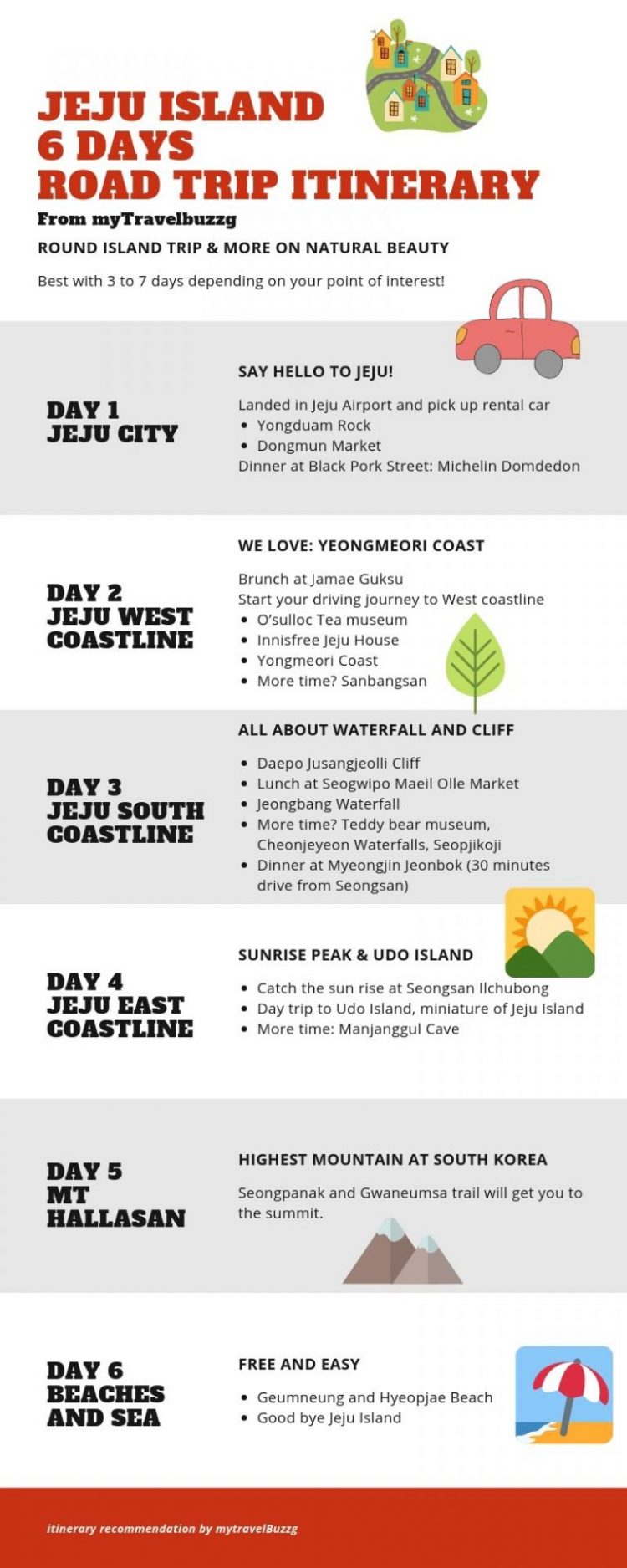
You Might Interested:
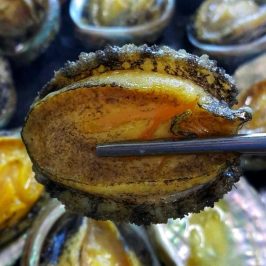
Myeongjin Jeonbok Fresh Abalone Feast: Jeju Must Eat
Enjoy the fresh abalone feast at Myeongjin Jeonbok Jeju, one of the must eat restaurant...
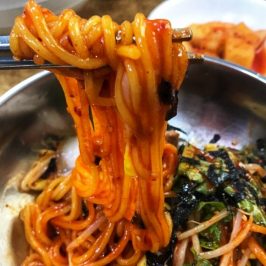
Jeju Must Eat: Sister Noodles aka Jamae Guksu
Sister Noodles (Jamae Guksu /자매국수) is hidden gem restaurant and highly recommended by locals. It...
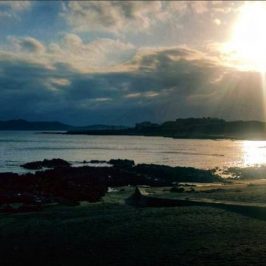
Jeju Road Trip Itinerary Day 2: Jeju West Coastline
Jeju western coastline road trip journey is full of magnificent view of attraction together with...

Driving in Jeju: A Guide For Renting A Car In Jeju Island
Jeju is a beautiful island and the only way to explore the beauty of Jeju...
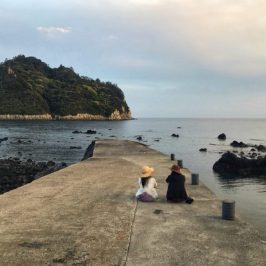
Jeju Aurum Hotel Review: Fantastic Ocean View Pension
My Jeju Aurum hotel review, lava rock ocean front pension with fantastic sea view.
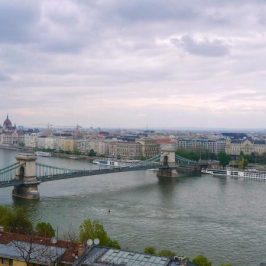
Central Europe Itinerary: Top 3 Must Visit Country
Central Europe itinerary with 13 days in top 3 must visit country. Don't miss Prague,...

How to travel solo in Jeju without a car (bus/taxi guide)
By: Author Jaclynn Seah
Posted on Published: October 15, 2022 - Last updated: March 12, 2024
Categories Korea
Jeju may be an island, but it is South Korea ‘s largest island and a lot bigger than what most people might imagine – it’s more than twice as big as Singapore! Most people recommend self-driving around Jeju for the most flexibility and so you can reach more remote places around the island, but renting a car may not be the cheapest or most practical option especially when on your own. I visited Jeju solo and took a combination of buses and taxis to explore, and thought I’d share my tips on taking public transport in Jeju and exploring Jeju without a car for anyone planning to do the same.
Looking for more posts on Jeju? Check out my guide to northwest Jeju’s Aewol and Hallim , southwest Jeju from Sanbangsan to Seogwipo City , east Jeju highlights Seongsan Ilchulbong and Seopjikoji , or explore Jeju’s offshore islands like Biyangdo or Udo .

Why I chose not to drive in Jeju
Where i travelled in jeju, public buses in jeju, how to take public bus in jeju, taxis in jeju, how to take taxi in jeju, stay connected: data options.
I have a Class 3 car driving license in Singapore and while I’m open to the idea of driving in foreign countries to get around, I usually avoid renting a car if I’m travelling solo because I get a bit nervous at the idea of driving alone in an unfamiliar place. Oddly enough I’m happy to jump on a scooter (especially on cute little islands with little traffic), but not so much on my own.
Expensive for one person: on average, renting a car was going to cost me at least 120,000 KRW (S$120) per day. This cost is definitely okay if you have at least one other person to split it with, but not something I was willing to pay on my own.
Heavy traffic: Jeju traffic can be quite heavy especially in and around the major city areas like Jeju City and Seogwipo. You will run into peak time traffic jams in these areas. Isn’t it always better to be able to relax and space out in a traffic jam than have to stress about driving through it?
Unfamiliar roads/signage: Korea drives on the right side of the road, whereas Singapore drives on the left side, so it would take some adjustment for me to get used to the direction changes. Also I would have to rely on GPS to navigate and I think I’d be stressed out trying to find my way and unable to just appreciate the scenery and drive. I’d be ok to drive with at least one other person with me to help me out, but I didn’t want to do this on my own.
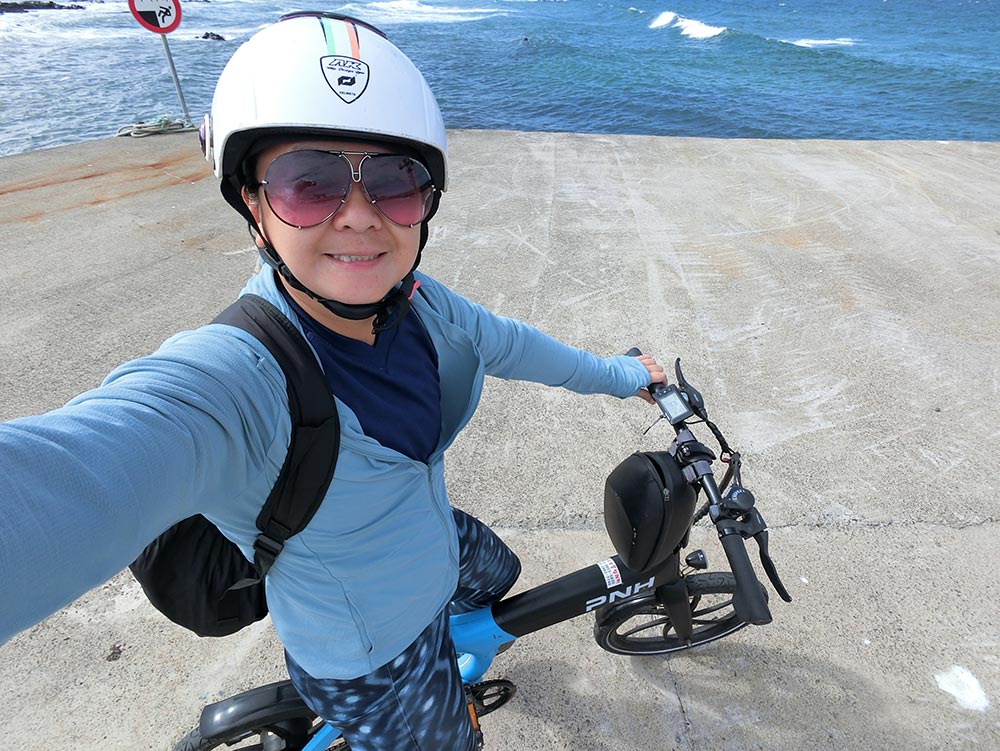
A note that you will need to apply for your International Driving Permit (IDP) if you plan to drive in Korea – pop by AA and it’s done pretty quickly for $20. I got mine done for this trip in about 15 minutes but ended up not using it.
Another thing about Korea is that for international licenses, you absolutely cannot rent a motorbike/scooter (A class on the IDP) with just a car license (B class on the IDP) unfortunately, which was a problem for me on the island of Udo where the main mode of transport are these electric scooters/bike cars.
Can you explore Jeju without a car? I did it! I spent 10 days in Jeju and split up my trip into different segments so I could reduce the amount of long transits crossing the island. For example, getting from Aewol to Seogwipo takes at least an hour even by car.
- Day 1-4: 3 nights in Aewol and exploring the northwest region (Aewol, Hallim, Biyangdo ) – see my guide to Northwest Jeju
- Day 4-7: 3 nights in Seogwipo exploring the south coast up to Seongsan Ilchulbong in the east – see my guide to Southwest Jeju
- Day 7-9: 2 nights in Udo
- Day 9-11: 2 nights in Seoul
- Day 11-12: 1 final night in Jeju City to catch my morning flight back to Singapore
The cheapest and easiest way to get around Jeju is to hop onto one of their public buses. Jeju has a fairly extensive network of buses categorised into 4 different bus types with their own assigned colour.
Red: Express intercity buses – if you’re based in Seogwipo, this is the fastest way for you to get from Jeju airport.
Blue: Intercity buses – these go between cities but stop at many small stops along the way. The buses that I took the most were probably 201 and 202 that circle the island along the coast from Jeju City to Seogwipo – 201 covers the east side while 202 covers the west side. They are not a bad way to enjoy seeing the island for cheap, but they can be quite slow as they stop at every stop along the way.
Green: City buses – these cover shorter routes within a certain area/city.
Yellow: Tourist buses – these stop at major tourist stops around the island. There is a west loop and an east loop. I took one of these buses and it even had a multilingual guide lady on board who helped passengers sort out which stop they needed to stop at.
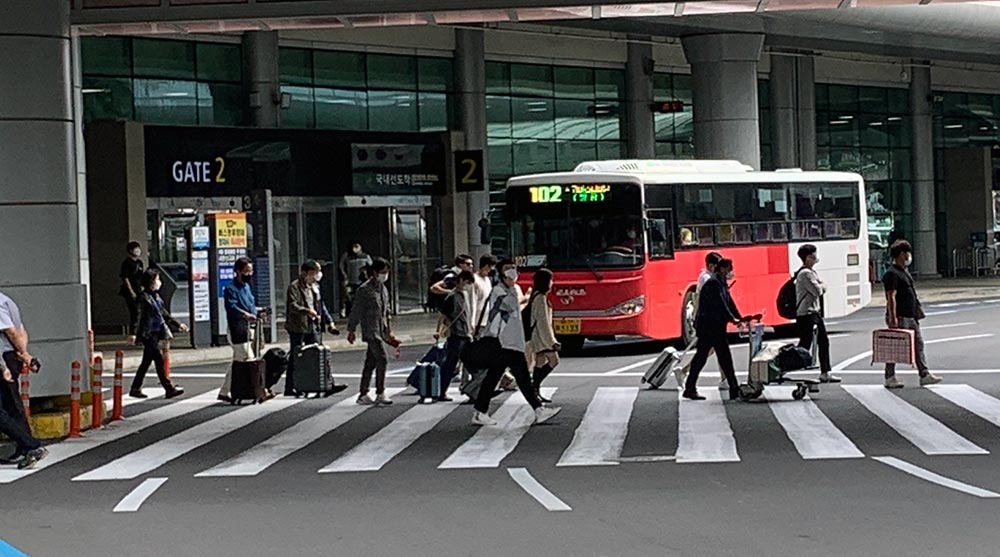
Learn more about Jeju’s bus system or search for Jeju’s bus routes to plan your journey.
Signage at jeju bus stops
Bus stops in Jeju can range from basic signposts with some paper schedules, or fancier covered shelters with an interactive touch screen that shows you the arrival of the many buses at the bus stop, and you can use it to look at other bus routes. Ideally you’d want to have Naver Maps (more on that below) on hand so you aren’t stuck without a clue even if you are at a basic bus stop with no digital signage.
Remember to hail your bus: Buses may not always stop at all stops, so make sure to flag down your bus if you see it coming.
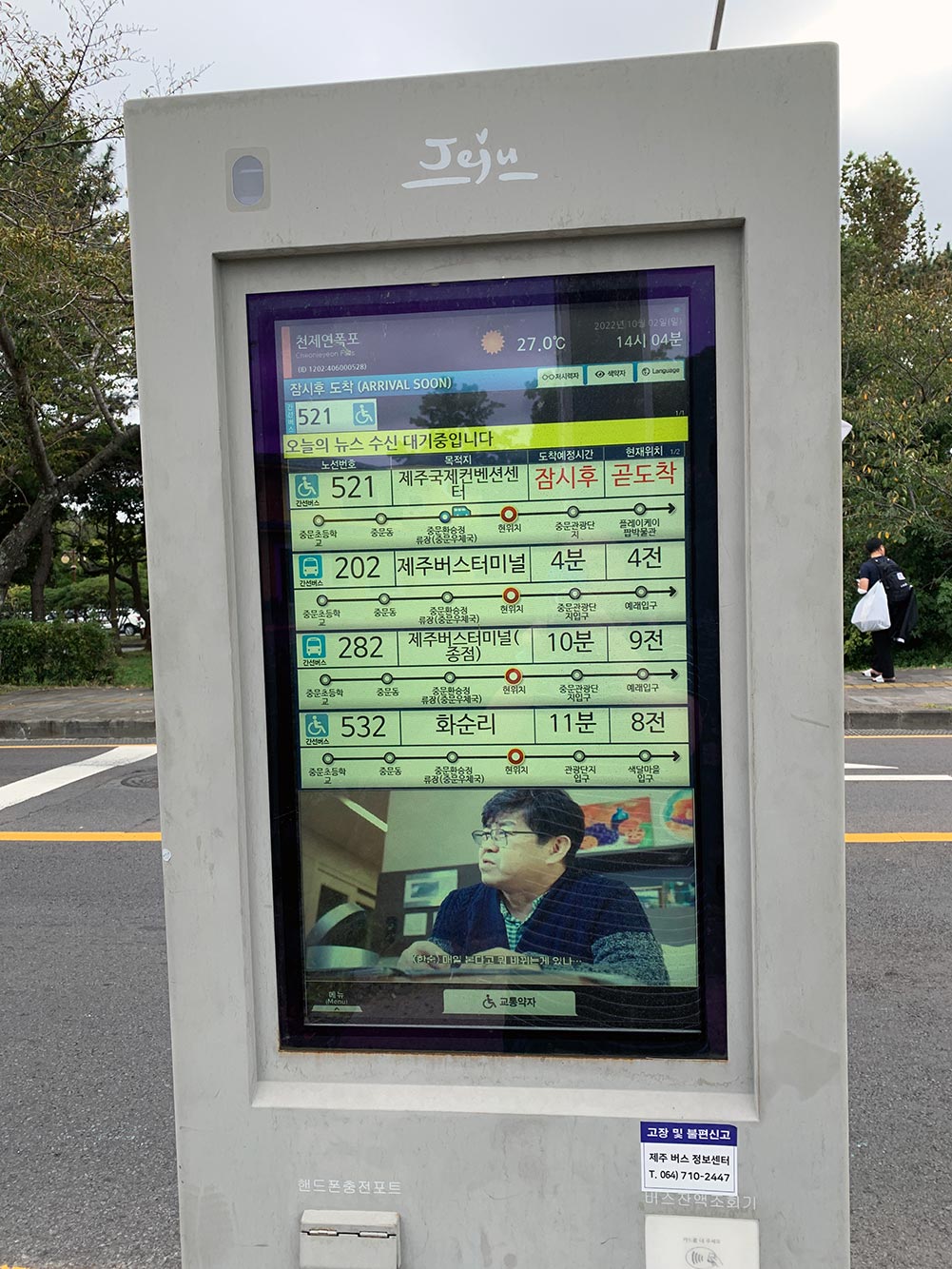
Signage on Jeju Buses
Jeju’s buses are pretty excellent for tourists even if they don’t understand Korean. Most buses have a TV screen in front that automatically announces the next stop’s name and shows the route and following stops. For certain stops there are even English announcements, so it’s pretty easy to keep track of where you are especially if you have Naver Maps to help you see if you are approaching your destination.
How to signal your stop: when you hear your stop being announced, hit the stop button and start preparing to disembark.
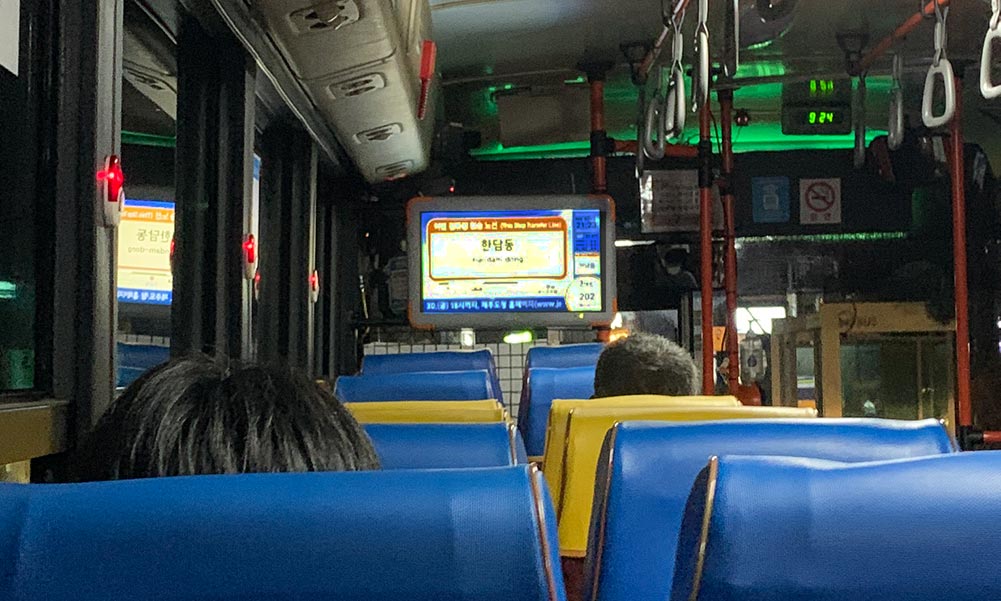
Ring Routes: 201 and 202
The buses that I took the most often were probably 201 and 202. These are blue intercity buses that circle the island along the coast from Jeju City to Seogwipo – 201 covers the east side while 202 covers the west side. They are not a bad way to enjoy seeing the island for cheap, but they can be quite slow as they stop at every stop along the way.
Tip: if you are planning to travel a long distance along the coast, it might be much cheaper to take a bus rather than a cab that takes about the same amount of time. For example, I took the bus back from Seopjikoji Beach (east) to Seogwipo (south) – the journey by taxi would have taken about 1 hour and cost about 39,000 KRW, while the bus ride took just 10 minutes longer and cost just 1,200 KRW.
Both taxi and bus in this case had to travel the same main highway which is why the timing was about the same, and also there was a jam so I would have been quite high-strung watching my taxi meter jump whereas in the bus I just chilled out.
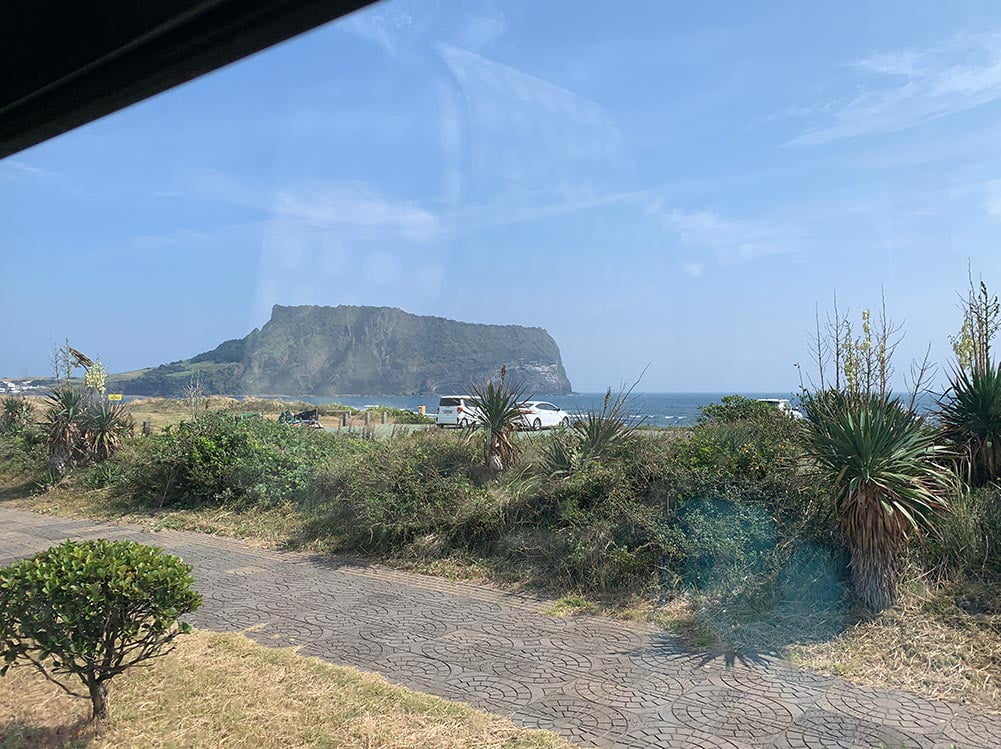
Use Naver Maps to check bus routes and arrival times
In Jeju, Naver Maps is essential for taking public transport as it works out the distance by driving, as well as the bus timings, arrival and connections. It’s useful to gauge how long or difficult it might be to get to a certain place.
There is an English map interface that you can use to search, but sometimes the spelling/spaces of the English names aren’t always accurate, so having the Hangul name or address on hand to search is also useful, or you can pinpoint the place on the map visually if you can kinda read Korean. I usually bookmark the location once I have found it.

How to access Naver maps: Download Naver Maps app from the Apple App Store or Google Play store . You’ll need to sign up for a Naver account to use it but it’s free and easy to do. WIth an account, you can also save locations to lists and rename them to a more familiar/English name if you need to.
Get a T-Money Card to pay for bus rides
Having a T-Money card is essential for taking the bus anywhere in Korea. You preload the card with some cash and tap on the reader as you enter and exit the bus. You can pay with cash on the bus if you do have to, but fumbling with money at the door is no fun at all.
Besides being more convenient, the T-Money rate is usually slightly cheaper than the cash rate (about 100 KRW cheaper for adults) and you can get transfer discounts within half an hour if you have to do a few bus hops – just make sure to tap out at the exit.
A T-Money card is cheap – the standard rate is 2,500 KRW (fancier designs may cost more) and it doesn’t expire either so you can always reuse it on future trips. Foreigners can also get the Korea Tour Card for 4,000 KRW which you can use as a T-Money card and gives you additional attraction perks. (If you have an Android phone, there is a Korea Tour Card app which lets you use the card on your phone, but the reviews look… not great)
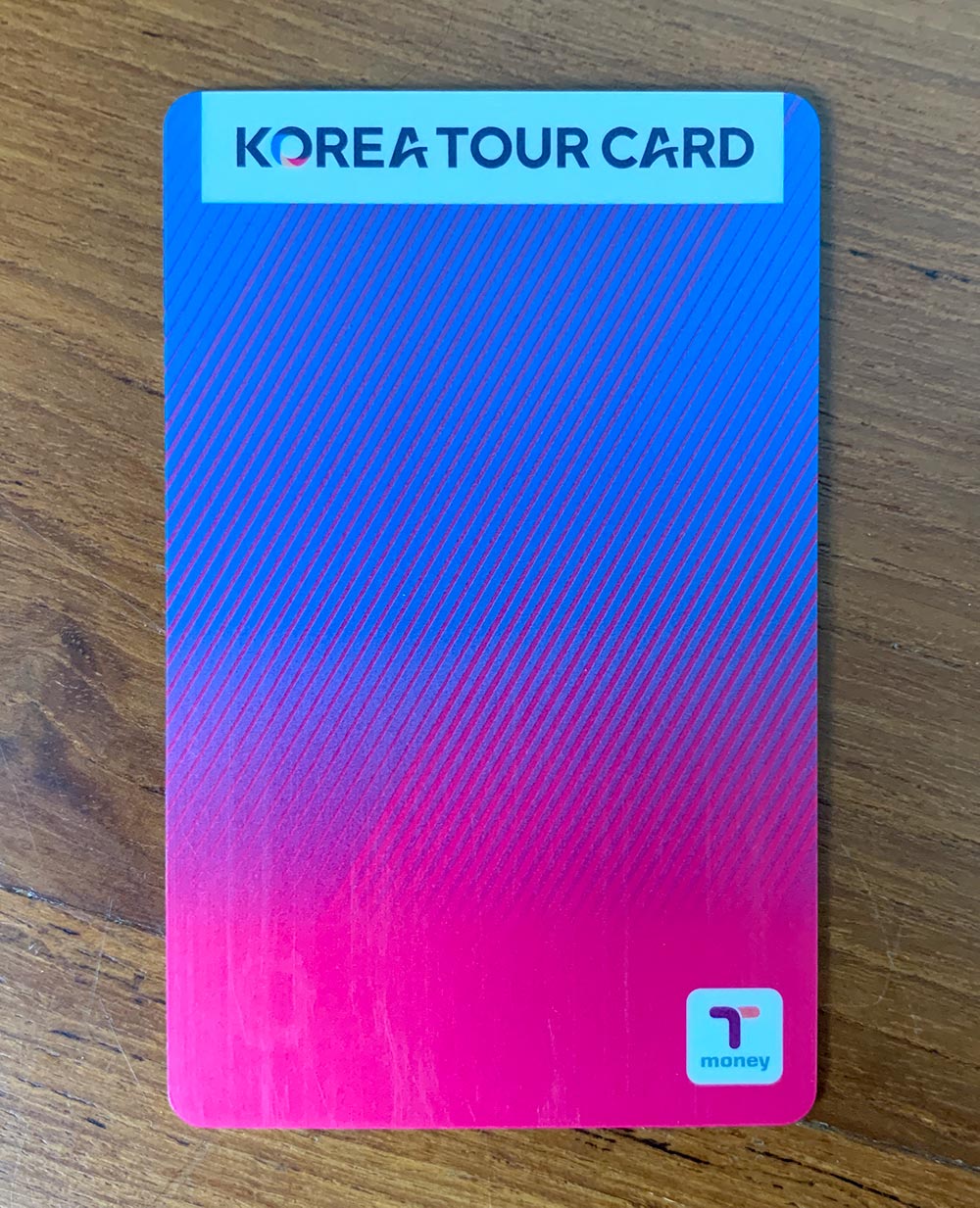
How to charge T-Money card in Jeju: Because there are no subways here, you will need to find a convenience store (CU, 7-eleven etc) to charge your T-Money card, which for some odd reason can only be done in CASH at the counter (it is one of the few things you’ll need physical money for in all of South Korea, more info here ) and you charge in increments of 1,000 KRW. Check out the KTO site for a detailed rundown on the use of transportation cards in Korea .
Where to buy and charge T-Money card at Jeju Airport: If you intend to take the bus as soon as you touchdown at Jeju Airport, there are CU and 7-eleven stores within the building on the upper levels where you can buy a T-money card and charge it. Make sure you have cash for that.
Sometimes buses aren’t the most efficient way to get around, especially in more remote areas where there’s a long wait for the next bus or the bus takes a very winding route. I was carrying a larger suitcase on this trip which I tried hauling up the bus (don’t try this at peak, the public buses are super narrow) and a taxi definitely was a more comfortable way to travel.
I had no problems getting a taxi throughout my time in Jeju, nor was it too expensive. My most expensive rides were roughly hour long journeys from Gwakji Beach to Seogwipo (about 43,000 KRW) and Seogwipo to Seongsan Harbour (about 46,000 KRW). My other shorter trips ranged from 5,000-15,000 KRW.
Use Kakao T App to book taxis
Kakao T is a really useful app where you can easily book a taxi. You can key in the information or set location via map so you won’t even have to worry about communication issues with the driver and you can track the route on your phone. It has a whole host of functions but I’ve really only used it for getting a taxi.
How to use Kakao T: If you’ve used Grab or Uber before you’ll find it similar – enter your destination to get a price quote and estimated time, request your taxi and wait till you get an assigned driver. You will also be able to see how far/near the driver is and track your route as well.
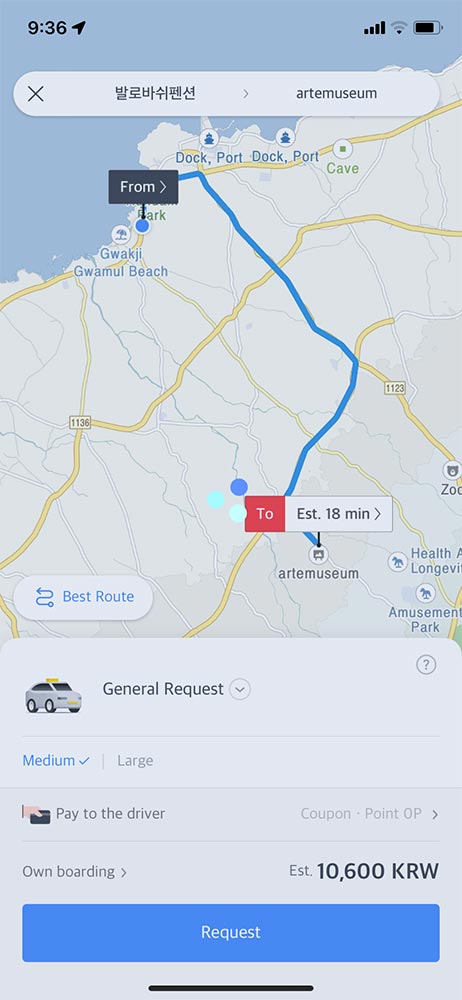
Download Kakao T from Apple App Store or Google Play store . You’ll need to download Kakao Talk and sign up for a free Kakao account to use, and you can use your own phone number (no need Korean number) as well to verify the account.
Pay taxi fare with credit card
In terms of making payment on Kakao T, select Pay Direct to Driver when you make your booking because you won’t be able to link your credit card directly without a Korean ID. All the taxis I took were able to take credit card, so you don’t have to worry about handling cash either – my Wise card [ referral link ] worked in most places all across Korea including the taxis and I liked how easy it was to convert SGD to KRW and the rates were much better than the money changer.
Even if you randomly hail a cab, they should also be able to accept credit card.
I cannot stress how important it is to have data when trying to navigate in South Korea – I got an unlimited data plan so I never had to worry about using maps and translations or trying to hail a rideshare.
Data isn’t that expensive and there are plenty of websites offering different plans and ways to connect. See what works best for you, but here’s a quick run-down of what’s available:
- eSIM cards : My current go-to option for data overseas because you can easily install a data plan without removing your existing SIM card, have access the moment you touch down and no need to worry about where to pick up the card. Cons are that you don’t usually have a Korean phone number which may be an issue if your taxi driver is trying to call you, but it’s not a big issue in my opinion. Here’s the unlimited data Frewie eSIM I used from Klook [ affiliate link ] that cost about S$38 or you can check out eSIM sites like Airalo [ affiliate link ] though I found those plans a tad pricier.
- Prepaid SIM card: SIM cards are usually the cheapest option with a variety of plans/time-periods available and you can often pick up in both Korea (mobile stores and at the airport), or Changi Recommends has several Korean SIM card options that you can pick up at the Singapore airport – for some reason most of their SIMs only have an Incheon pickup. I’d get this if I was on a budget or needed a local Korean number, but check as not all SIM cards offer domestic calls/texts. Klook has a KT-Olleh 4G LTE unlimited data-only SIM card [ affiliate link ] that allows you to top up 11,000 KRW (about S$11) for some voice calls.
- Portable Wifi Device: Good if you are more security conscious and have multiple devices like tablets and laptops to connect, or you’re travelling in a group and looking to save money but can be cumbersome because it’s an additional device to carry around that needs to be charged, and you have to pickup/return usually at the airport if you use Changi Recommends .
Have you taken public transport around Jeju? Share your experiences here.
Check out more articles on Jeju , or browse some of the other places that I’ve visited in South Korea .
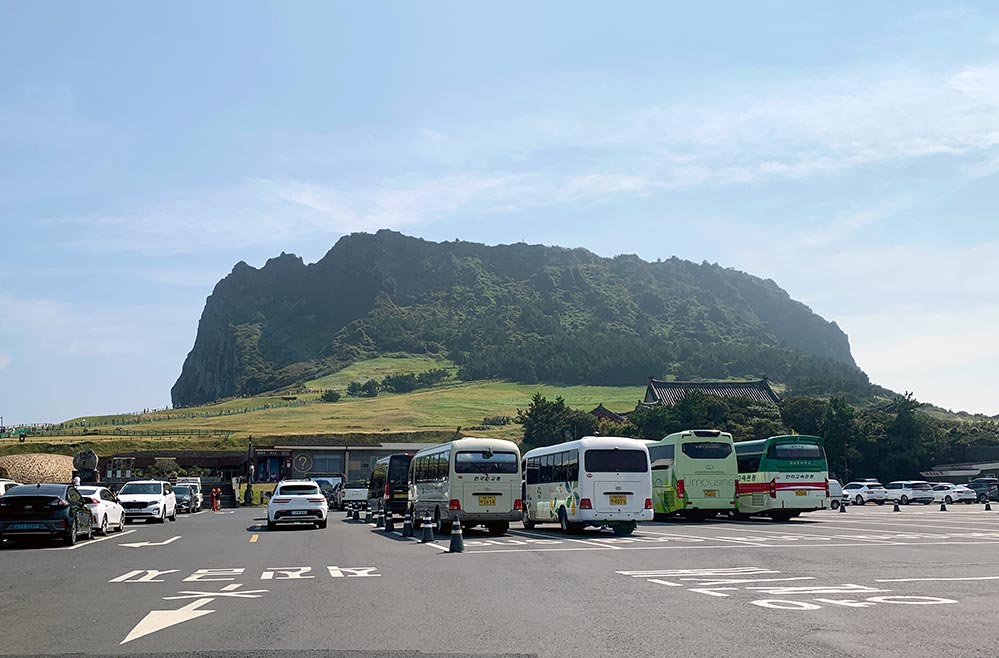
Seopjikoji 섭지코지 & Seongsan Ilchulbong 성산 일출봉: East Jeju highlights

Southwest Jeju itinerary: from Seogwipo to Sanbangsan

A guide to Udo island in Jeju: exploring solo & staying overnight 우도 가이드
Sunday 25th of February 2024
Hi Jaclynn! Is it really easy to get a taxi anywhere in Jeju? We are a group of 6-7pax, so will probably need to take 2 sedan taxi, correct? We will travel to the common tourist areas (Yeongmori beach, Seopjikoji, Hallim Park, the waterfalls, etc) with elderly and children.
Jaclynn Seah
I'd recommend using an app to call a cab rather than try and hail one by the road, especially if you have a larger group. There may be cars that can take more than the usual 4 pax, but you'll need to check the app, and there might not be as many cars available. If you have elderly and a big group, you may want to consider hiring a car with driver, or renting a car instead?
Wednesday 3rd of January 2024
Hello, Jaclynn! We will be going to Jeju this coming April. Have you noticed anyone with big luggages on Bus 201 or express bus? Cuz we will change hotel on the second day from Seongsan area to Seogwipo. Thank you and Happy New Year!
Friday 5th of January 2024
The red express intercity buses go from the airport so those big luggages are ok, I did have a big luggage when I took the blue 202 from Aewol to Gwakji (see my Aewol post for more) but luckily the bus wasn't crowded because my luggage took up the whole aisle area, would not recommend if you have big luggage. Just take a taxi! It's not that expensive, and you said 'we' so I'm assuming you're in a group which is even better - I went from Seogwipo to Seongsan in a taxi when I went to Udo and it cost me 46,000 KRW then, which for such a long trip isn't that pricey, and even more worthwhile if you're splitting the cost. hope that helps!
Monday 13th of November 2023
Hi Jaclyn! I will be heading to Jeju for a round island cycle. Had been looking for luggage transport from hotel to hotel so we can cycle without any hassle. Do you have any recommendation? I had found one company but they yet to get back up to date.
@Jaclynn Seah, thank you so much! =D
hello! I asked my Korean friend if she had any recommendations and she sent me this link: http://www.gabangplease.net/ but she's not sure if they speak English, but you could check them out to see, hope that helps a little!
Tuesday 22nd of August 2023
Hi Jaclyn! I'm Headed to Jeju in September (Very soon!). My main worry is wanting to go to a few bars while in Jeju I hear transportation shuts down after 10 pm. Do you know if I would still be able to get a cab through Kakao T at like 1 am or 2 am?
Wednesday 23rd of August 2023
Hi Christina, I've not experienced this myself but checked with a Korean friend - it should be ok to get a cab on Kakao T late at night, but a suggestion is that instead of Kakao T, it might be better to ask the bar host to call a taxi for you because they'll definitely know which companies are available. Alternatively, try and stay close to the bars you want to go to so you can just walk home after instead! Hope that helps :)
Wednesday 5th of April 2023
Hi Jaclyn, I’m thinking of going on a last min 6days trip to Jeju in mid April ….any advice on how to start planning ? Can’t drive too. Need hotel accommodation guide. Is mid April a good scenary nice ? Should I go ahead or postpone!!
It should be nice weather in April! Not too hot but not too cold. Perhaps figure out what you want to see in Jeju and then work out your itinerary from there? Your best options for accom will probably be Jeju City or Seogwipo for sheer convenience - perhaps look at hotels near the bus stations? Good luck and have fun!
Members save 10% or more on over 100,000 hotels worldwide when you're signed in
Downtown jeju city.

Visit Downtown Jeju City
Legend states that Jeju City (Jeju-si) is the place where three ancestral demigods rose from the ground to create the ancient Korean kingdom of Tamna. Today Jeju City is the capital of Jeju Province and the first stop on many traveler’s exploration of this island province in the East China Sea. Visit historical sights and discover a superb culinary scene. Relax on glorious beaches and hike to the summit of sacred mountains.
Start your visit at Samseonghyeol, a shrine dedicated to the mythological origins of the island. Learn about Jeju cultures at the Jeju National Museum and then walk up Sarabong Peak for great coastal views. A youthful ambiance abounds at the amusement arcades, bars, fashion outlets and restaurants on University Street. Sample mouthwatering sushi at Dongmun Market and barbecued black pork on Black Pork Street.
Bike, drive or walk along sections of the coastal road to Dodubong Peak and Iho Beach, notable for its horse-shaped lighthouses. Cross the Yongyeon Bridge to Yongduam Rock, a volcanic rock that resembles a dragon’s head. From here you can see haenyeo women divers catching seafood. Nearby Tapdong Street has a children’s theme park, fast food bars and sports courts.
Inland, 6,398-feet (1,950-meter) tall Hallasan Mountain dominates Hallasan National Park. Hike the park’s marked trails to lookouts, temples and waterfalls. See sex-themed sculptures at Jeju Love Land and experience the optical illusion of objects appearing to travel up the downward-sloping Mysterious Road. Hundreds of native trees and subtropical plant species are on display at the Halla Arboretum.
Reach Jeju City by flying to Jeju International Airport or catch a ferry from mainland Korea. Expect four distinct seasons, marked by hot and humid summers and cool winters with snowfall in the mountainous areas. Other island attractions are accessible via public buses and rented car. Be sure to visit the Jeju Folk Museum, Hallim Park botanical gardens, Sanbangsan Mountain and the Yongmeori Coast.
Popular places to visit
- Hyeopjae Beach
Calm, shallow water, fine white sand and dramatic sunsets make this beach one of the most popular summer destinations on the west coast of Jeju.
Hamdeok Beach
Nothing says holiday like spending a lazy day at Hamdeok Beach, a popular beach in Hamdeok. While you're in the area, stroll along the seaside.
Woljeong Beach
Why not spend a lazy afternoon at Woljeong Beach during your trip to Jeju City? Wander the parks and beaches while you're in the area.
- Geumneung Beach
If a restful holiday is part of your travel plans, Geumneung Beach might be the perfect place to visit during your trip to Jeju City. Wander the parks or discover the area's mountain views.
Escape the bustle of Jeju City to bask in the tranquility of a beach loved by local fishermen and overlooked by curiously shaped lighthouses.
- Manjanggul Cave
See the largest lava column in the world and the biggest bat colony in Korea at this breathtaking natural wonder.
- Things to do
Jeju island Private Package Taxi Tour - west of jeju
South korea: jeju hamo dolphin tour, discover jeju in 3days: a wellness holiday, jeju island jumbo taxi private tour with mr.hong west of jeju, cherry blossom east day tour in jeju, eastern jeju highlights day trip, top hotels in downtown jeju city.
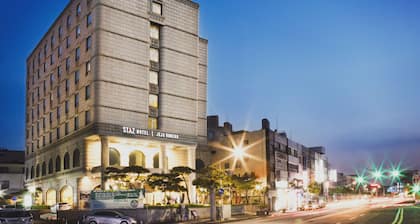
Reviewed on 26 Mar,2024

Reviewed on 1 Apr,2024

Reviewed on 5 Apr,2024

Reviewed on 23 Feb,2024

Reviewed on 30 Mar,2024
Check Downtown Jeju City hotel availability
Other neighbourhoods around downtown jeju city.
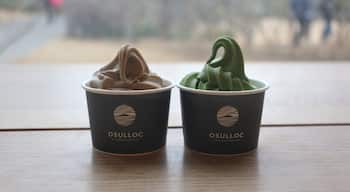
Yeon-dong is noteworthy for its shopping, and you can make a stop at top attractions like Halla Arboretum and Paradise Casino.
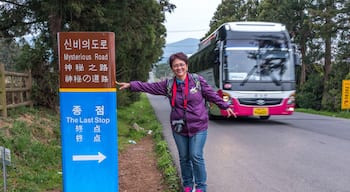
Nohyeong-dong
While visiting Nohyeong-dong, you might make a stop by sights like Jeju Loveland and Hallasan National Park.
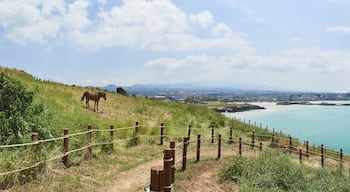
Jocheon is noteworthy for its beaches, and you can make a stop at top attractions like Hamdeok Beach and Jeju Stone Park.

You'll enjoy the mountain views and parks in Aewol. You might want to make time for a stop at Elysian Jeju Country Club or Saebyeol Oreum.

You'll enjoy the beaches and cafes in Gujwa. You might want to make time for a stop at Bijarim Forest or Manjanggul Cave.
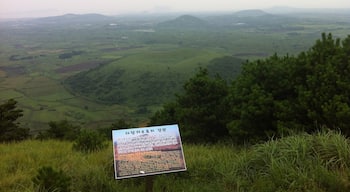
If you're spending some time in Sehwa-ri, Darangshi Oreum and Sehwa Beach are top sights worth seeing.
- Places of interest
More Hotel Options in Downtown Jeju City
- More trip options
- Jeju Stadium
- Arario Museum Tapdong Cinema
- Jeju Shinhwa World
- Seogwipo Maeil Olle Market
- Hallasan National Park
- Hallasan Mountain
- Dolharbang Park
- Jeju Teddy Bear Museum
- Dragon Head Rock
- Samyang Black Sand Beach
- Family friendly Hotels (55)
- Hotels with connecting rooms (13)
I only need accommodation for part of my trip
Additional information about Expedia Group
Awesome, you're subscribed!
Thanks for subscribing! Look out for your first newsletter in your inbox soon!
The best things in life are free.
Sign up for our email to enjoy your city without spending a thing (as well as some options when you’re feeling flush).
Déjà vu! We already have this email. Try another?
By entering your email address you agree to our Terms of Use and Privacy Policy and consent to receive emails from Time Out about news, events, offers and partner promotions.
- Things to Do
- Food & Drink
- Arts & Culture
- Time Out Market
- Coca-Cola Foodmarks
- Los Angeles
Get us in your inbox
🙌 Awesome, you're subscribed!

These are the best new hotels in the world in 2024
Showcasing the best in comfort, design and sustainability, this list is full of impressive places to stay

Some of us like a homely boutique hotel, others prefer a towering mega-complex that feels like its own destination – whatever your style, c hoosing where to stay can make or break a holiday.
To help you out, AFAR Magazine has just published a brand-new guide to the world’s best new hotels . Drawing on their network of travel advisors, editors and writers, the mag has evaluated the location, design and service at all these hotels, as well as which ones are striving to reduce their carbon footprints and connect guests with the landscape.
Julia Cosgrove, editor-in-chief of AFAR, said: ‘The 2024 winners exemplify excellence in design, authentic connection to their local communities, and deep commitment to sustainability. These properties set a new standard for hospitality worldwide and I'm delighted to recognize them.’
And the list does have some rather impressive inclusions. From bustling city stays like The Peninsula in London and The Fifth Avenue Hotel in New York to the more secluded locations such as Highland Base Kerlingarfjöll in Iceland or &Beyond Punakha River Lodge in Bhutan, the collection boasts some stunning getaways with distinctive designs.
These are the best new hotels in the world, according to AFAR Magazine
- The Inn at Mattei’s Tavern – Los Olivos, California , USA
- Kona Village, a Rosewood Resort – Hawaii , USA
- The Fifth Avenue Hotel – New York, USA
- Ambiente Sedona – Sedona, Arizona , USA
- Four Seasons Resort Tamarindo – Jalisco, Mexico
- ULUM Moab – Moab, Utah , USA
- Sofitel Legend Casco Viejo – Panama City, Panama
- Maroma, a Belmond Hotel – Riviera Maya, Mexico
- Highland Base Kerlingarfjöll – Kerlingarfjöll, Iceland
- The Hotel Maria – Helsinki , Finland
- Raffles London at the OWO – London, UK
- Carlton Cannes, a Regent Hotel – Cannes, France
- The Peninsula Istanbul – Istanbul , Türkiye
- Le Grand Mazarin – Paris , France
- Bulgari Hotel Roma – Rome , Italy
- Grand Hotel Son Net – Mallorca , Spain
- Violino d’Oro – Venice , Italy
- One&Only Aesthesis – Athens Riviera, Greece
- The Peninsula London – London, UK
- Angama Amboseli – Amboseli, Kenya
- Tswalu Kalahari Reserve, Loapi Tented Camp – Tswalu Kalahari Reserve, South Africa
- Riad Rosemary – Marrakech , Morocco
- Fairmont Doha – Doha , Qatar
- Atlantis THE Royal – Dubai , UAE
- Shinta Mani Mustang, a Bensley Collection – Jomson, Nepal
- &Beyond Punakha River Lodge – Bhutan
- Mondrian Singapore Duxton – Singapore
- JW Marriott Jeju Resort & Spa – Jeju Island, South Korea
- Six Senses Vana –Dehradun, India
- Southern Ocean Lodge – Kangaroo Island, Australia
- Capella Sydney – Sydney , Australia
You can have a look at the list in more detail on AFAR Magazine’s website right here.
Did you see that it’s now much, much easier to travel to these underrated European countries ?
Plus: These are officially the world’s most fashionable cities .
Stay in the loop: sign up to our free Time Out Travel newsletter for all the latest travel news.
- Liv Kelly Contributing Writer
Share the story
An email you’ll actually love
Discover Time Out original video
- Press office
- Investor relations
- Work for Time Out
- Editorial guidelines
- Privacy notice
- Do not sell my information
- Cookie policy
- Accessibility statement
- Terms of use
- Modern slavery statement
- Manage cookies
- Advertising
Time Out Worldwide
- All Time Out Locations
- North America
- South America
- South Pacific

Passing Thru Travel
15 Eco-Islands 2024 – Sustainable Island Retreats
Posted: February 24, 2024 | Last updated: February 24, 2024

In an age where sustainable travel is not just a preference but a necessity, islands around the world are leading the way in eco-friendly tourism. These destinations offer more than just stunning beaches and clear waters; they are committed to preserving their natural beauty and cultural heritage. From the remote corners of the Pacific to the vibrant ecosystems of the Caribbean, this guide explores 15 of the world’s most sustainable island getaways. Each of these islands offers a unique blend of responsible tourism practices and unforgettable natural experiences, ensuring that your visit leaves a positive impact.
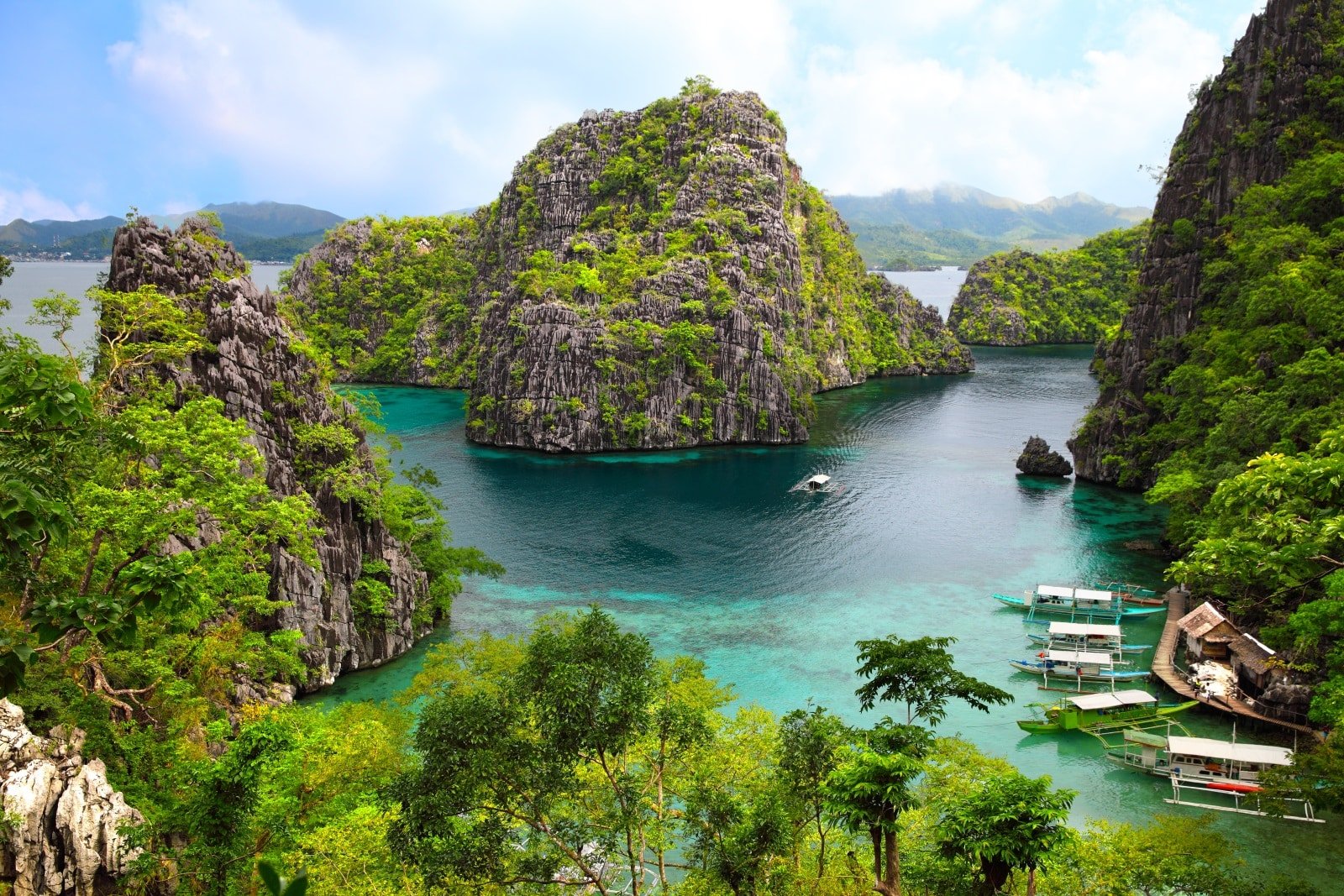
1. Palawan, Philippines
Palawan, the Philippines’ ecological marvel, is a testament to sustainable island living. This lush paradise, with its crystal-clear waters and rich marine life, is a haven for eco-conscious travelers. The island’s efforts in conservation are evident in attractions like the UNESCO-listed Puerto Princesa Subterranean River National Park and the sustainable luxury resorts in El Nido. Community-based tourism initiatives here not only protect the environment but also support local livelihoods. Visitors can engage in snorkeling, island-hopping, and exploring hidden lagoons, all conducted with respect to the natural surroundings.
Insider’s Tip: Engage in community-led tours for an authentic and responsible exploration of the island.
When To Travel: The dry season from November to May offers the best weather.
How To Get There: Fly to Puerto Princesa or El Nido from major cities in the Philippines.

2. Galapagos Islands, Ecuador
The Galapagos Islands, a unique showcase of biodiversity, are a global model for sustainable tourism. The Ecuadorian government and local operators maintain strict controls to preserve the islands’ delicate ecosystems. Visitors can marvel at the unique wildlife and volcanic landscapes while contributing to conservation efforts. The islands offer a range of eco-friendly accommodations and tours that prioritize environmental responsibility. Activities include guided nature walks, snorkeling with sea lions, and observing the famous Galapagos tortoises in their natural habitat.
Insider’s Tip: Opt for smaller, eco-certified cruises to minimize your environmental impact.
When To Travel: Visit from June to December for cooler temperatures and active wildlife.
How To Get There: Fly to Baltra or San Cristobal from mainland Ecuador.
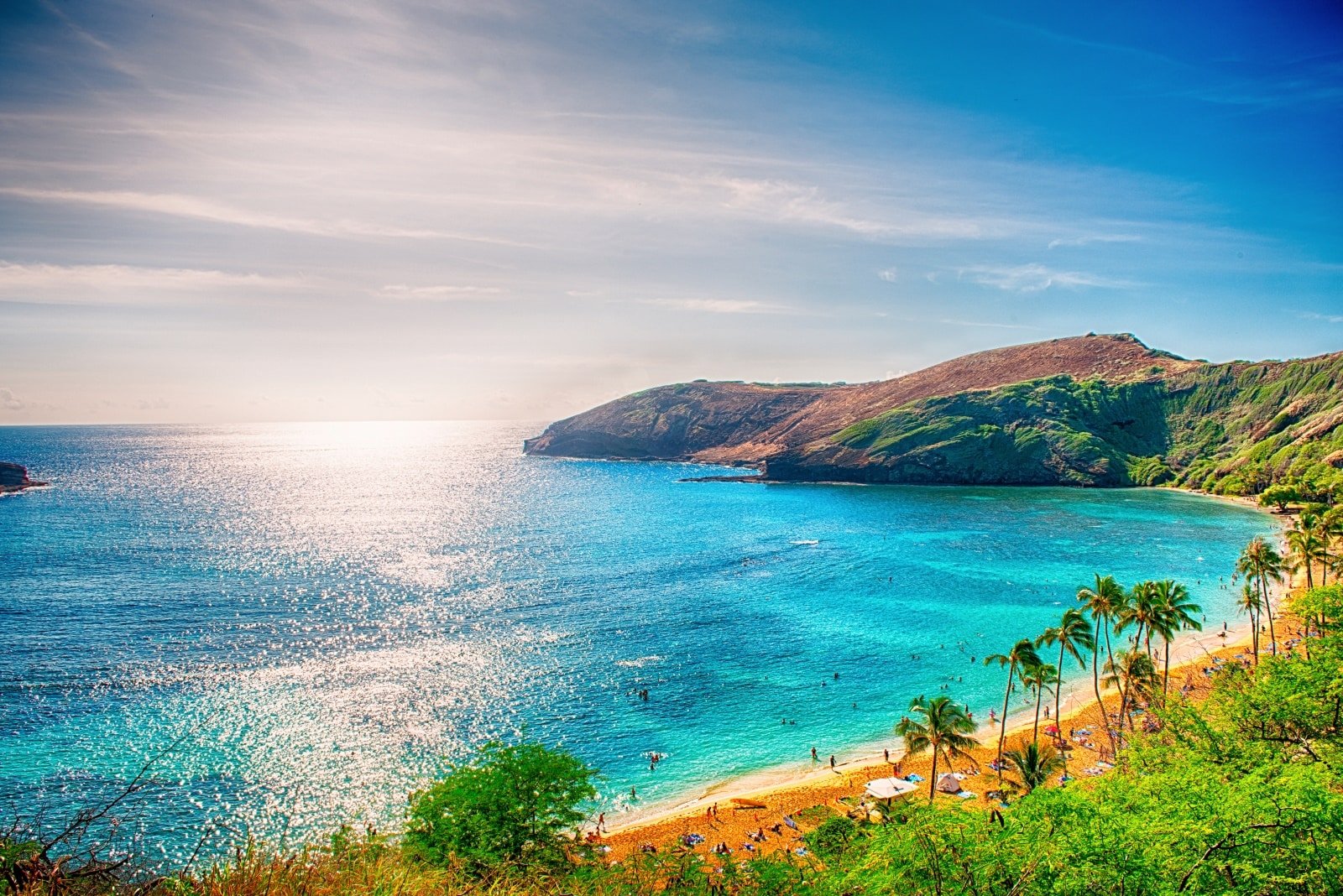
3. Maui, Hawaii, USA
Maui, the second-largest Hawaiian island, is a leader in sustainable tourism practices. The island’s lush landscapes, from the volcanic Haleakal? National Park to the Road to Hana, are maintained through eco-friendly initiatives. Visitors can enjoy organic farm-to-table dining, solar-powered water adventures, and cultural tours that respect the local heritage. Maui’s commitment to preserving its natural and cultural resources makes it a prime destination for eco-conscious travelers. The island’s diverse ecosystems, including rainforests and coral reefs, offer nature enthusiasts a wide range of activities.
Insider’s Tip: Participate in a beach clean-up to give back to the community.
When To Travel: The shoulder seasons of April to May and September to November offer great weather with fewer crowds.
How To Get There: Fly directly to Kahului Airport on Maui.
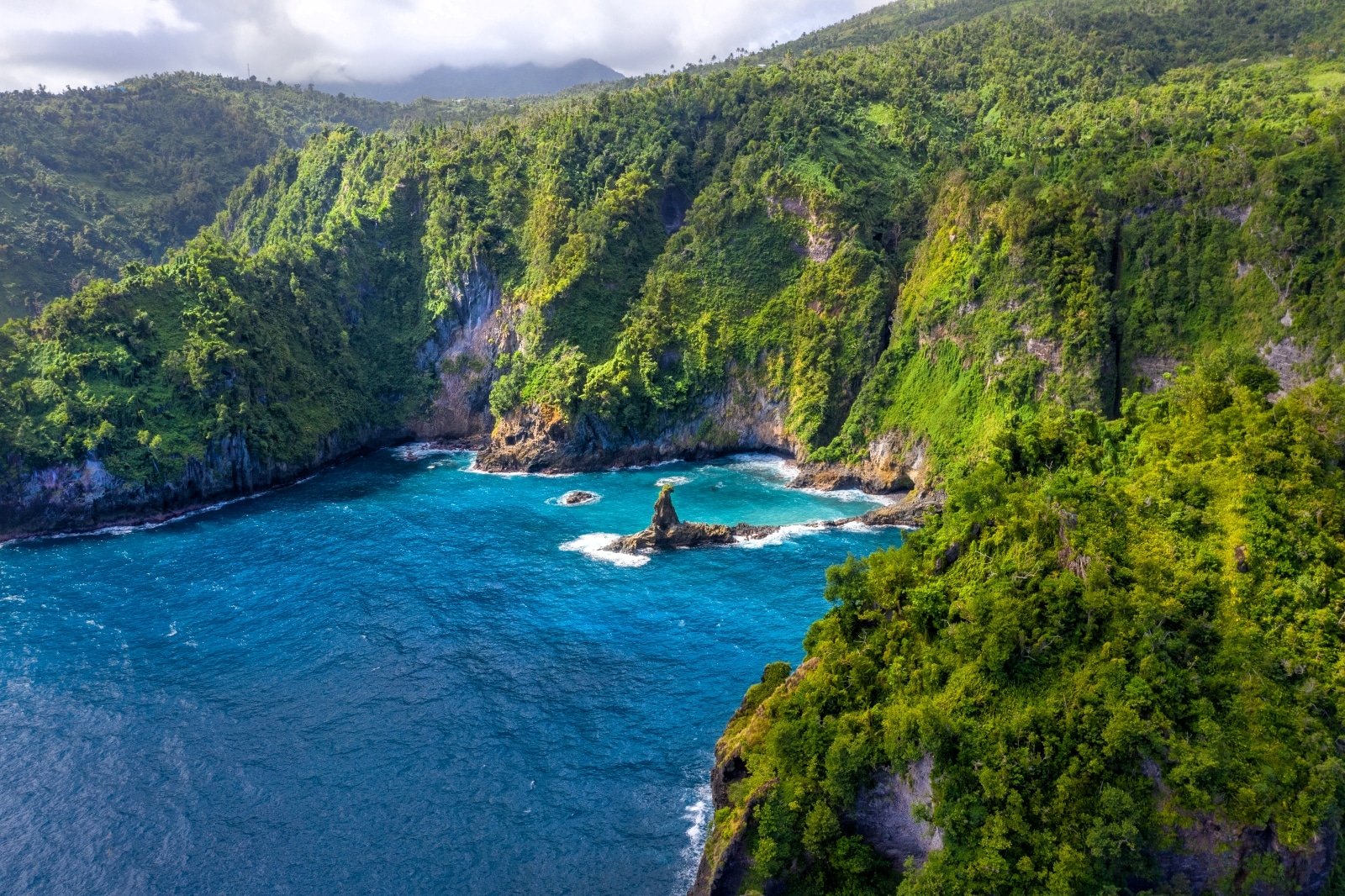
4. Dominica, Caribbean
Dominica stands out in the Caribbean for its commitment to eco-tourism. Known as the “Nature Island,” it boasts lush rainforests, hot springs, and a rich array of wildlife. The island’s eco-lodges and nature tours focus on conservation and community involvement, offering immersive experiences like whale watching and hiking to the Boiling Lake. Dominica’s rugged terrain and natural hot springs provide a unique backdrop for sustainable adventures, from birdwatching to exploring hidden waterfalls.
Insider’s Tip: Explore the island’s unique waterfalls and natural hot springs for a relaxing experience.
When To Travel: The dry season from December to April is ideal for exploring.
How To Get There: Fly to Douglas-Charles Airport, with connections from major Caribbean hubs.
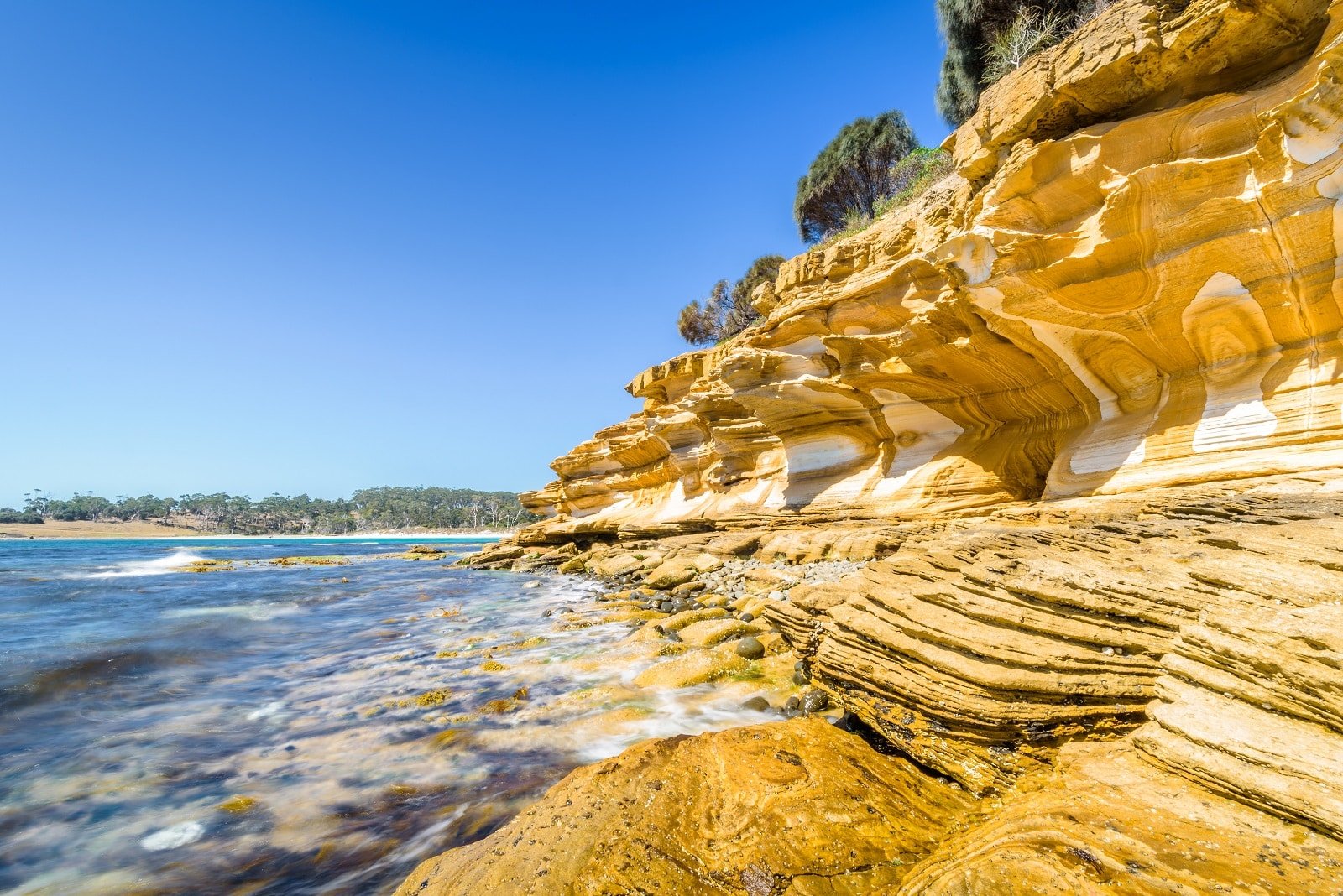
5. Tasmania, Australia
Tasmania, an island state of Australia, is a treasure trove for eco-conscious travelers. Over 40% of its land is protected as national parks and reserves, offering a diverse range of pristine environments. From the rugged wilderness of the Tasmanian Wilderness World Heritage Area to the serene beauty of Wineglass Bay, Tasmania is a haven for nature lovers. The island is committed to sustainable practices, evident in its eco-lodges and conservation projects. Visitors can engage in eco-friendly activities, such as hiking in ancient rainforests, watching wildlife, and exploring the island’s unique geology.
Insider’s Tip: Visit the Tasmanian Devil sanctuaries to learn about conservation efforts for this iconic species.
When To Travel: The summer months of December to February are ideal for outdoor activities.
How To Get There: Fly to Hobart or Launceston from major Australian cities.
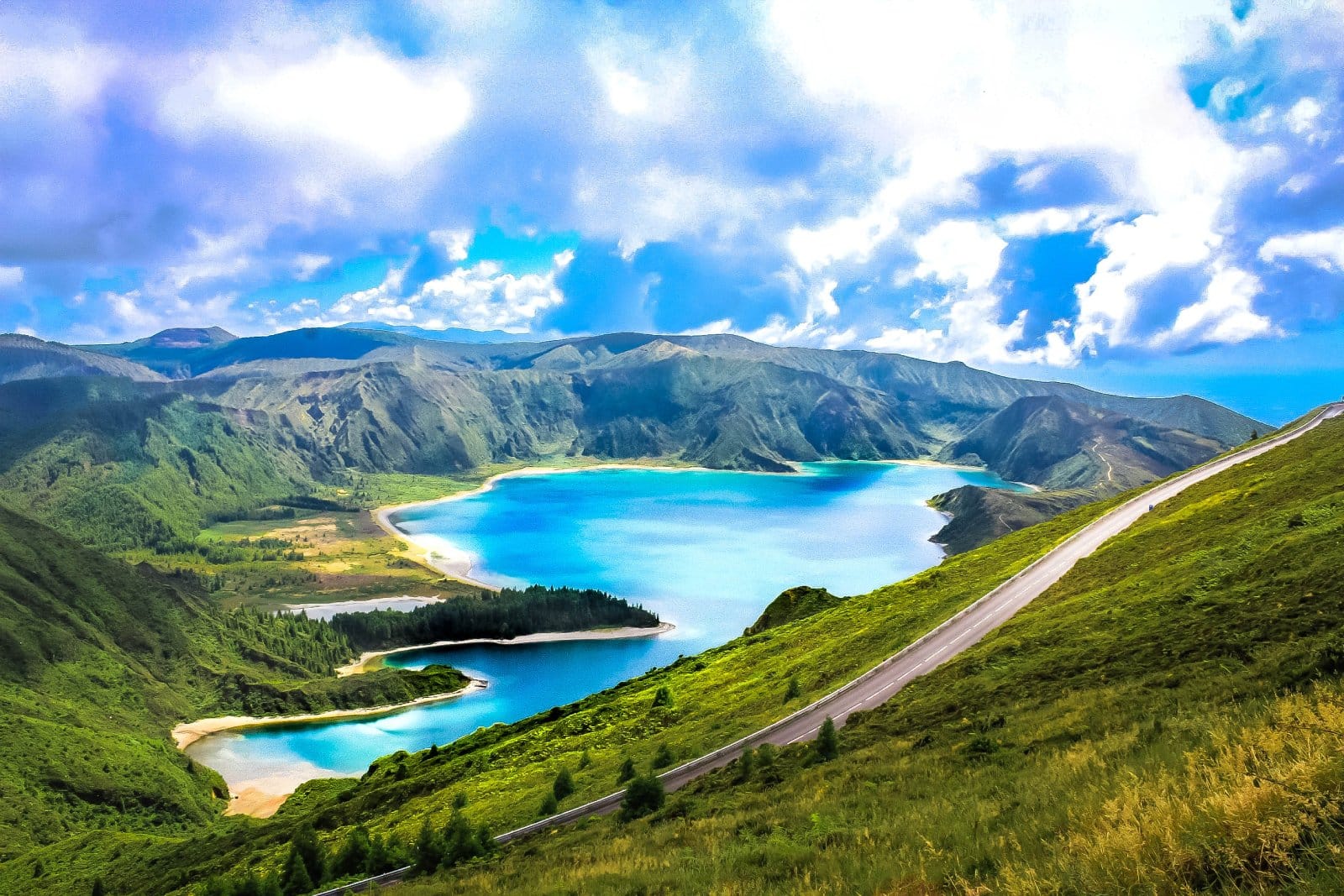
6. Azores, Portugal
The Azores, a group of nine volcanic islands in the North Atlantic, are a model for sustainable tourism. The islands’ stunning landscapes, from green pastures to thermal springs, are complemented by eco-friendly accommodations and activities. Whale watching, hiking, and diving in the Azores not only offer incredible experiences but also support conservation efforts. The islands’ commitment to sustainability includes renewable energy initiatives and the protection of marine life.
Insider’s Tip: Try geothermal cooking, a unique culinary experience on the islands.
When To Travel: Visit from April to October for the best weather and whale-watching opportunities.
How To Get There: Fly to Ponta Delgada on São Miguel Island from Lisbon or other European cities.
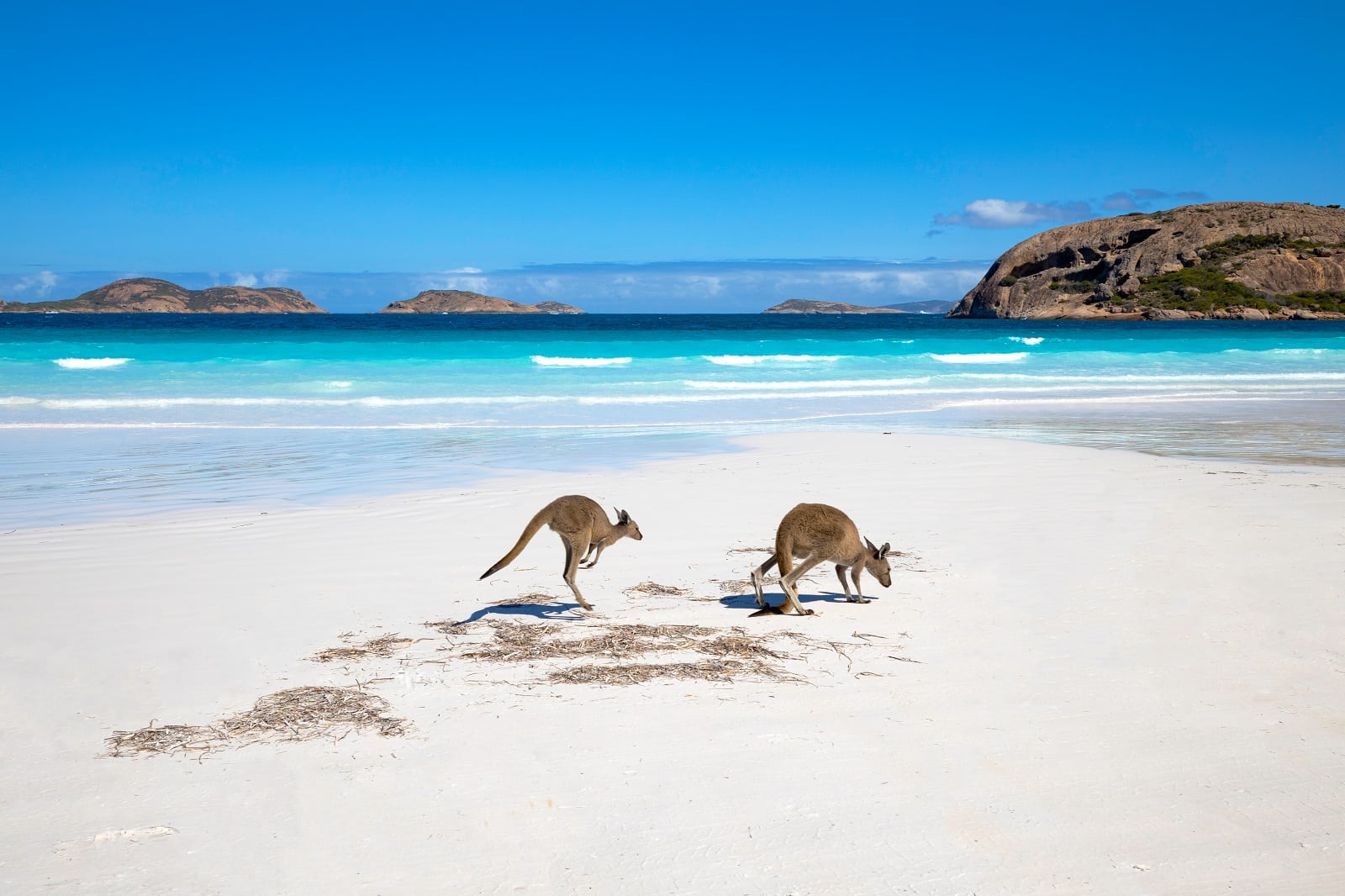
7. Kangaroo Island, Australia
Kangaroo Island, off the coast of South Australia, is a wildlife sanctuary and a leader in sustainable tourism. The island’s diverse habitats are home to many native Australian species, protected through eco-friendly practices. Visitors can enjoy guided wildlife tours, conservation experiences, and stays in eco-lodges. The island offers a unique opportunity to see Australian wildlife in their natural habitat, such as kangaroos, koalas, and echidnas.
Insider’s Tip: Join a nocturnal tour to see the island’s wildlife in their natural habitat, including kangaroos and echidnas.
When To Travel: Visit from September to March for the best wildlife viewing.
How To Get There: Fly to Kingscote Airport on Kangaroo Island or take a ferry from Cape Jervis.
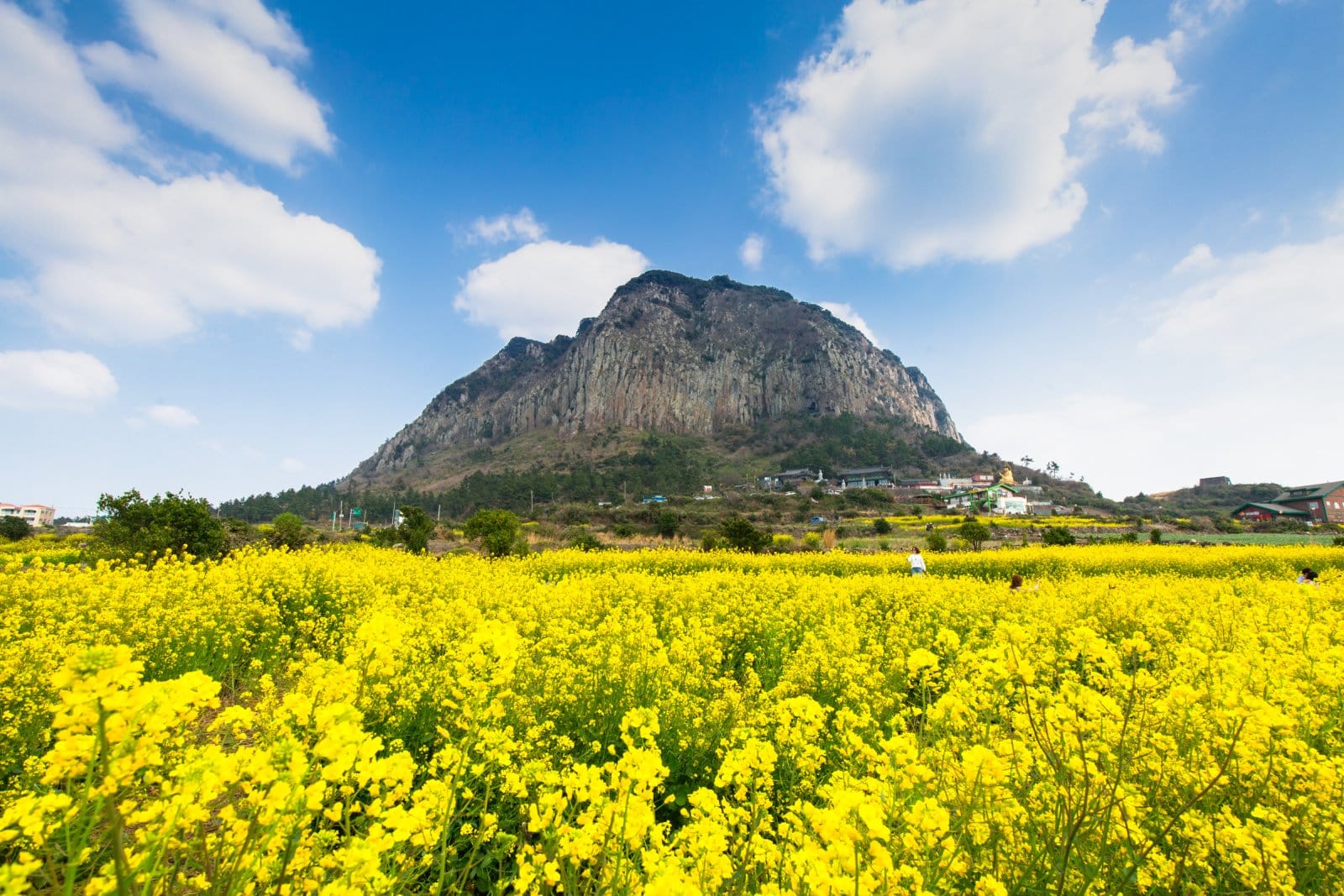
8. Jeju Island, South Korea
Jeju Island, off the southern coast of South Korea, is known for its natural beauty and commitment to sustainability. The island’s UNESCO-listed Geopark showcases unique volcanic landscapes, waterfalls, and beaches. Eco-friendly initiatives across the island promote sustainable agriculture and tourism, making it a great destination for environmentally-conscious travelers. Activities include exploring lava tubes, hiking up Hallasan Mountain, and visiting traditional Korean villages.
Insider’s Tip: Explore the island’s lava tubes and craters for a unique geological experience.
When To Travel: Spring (April to June) is ideal for mild weather and beautiful cherry blossoms.
How To Get There: Fly to Jeju International Airport from various cities in South Korea and Asia.
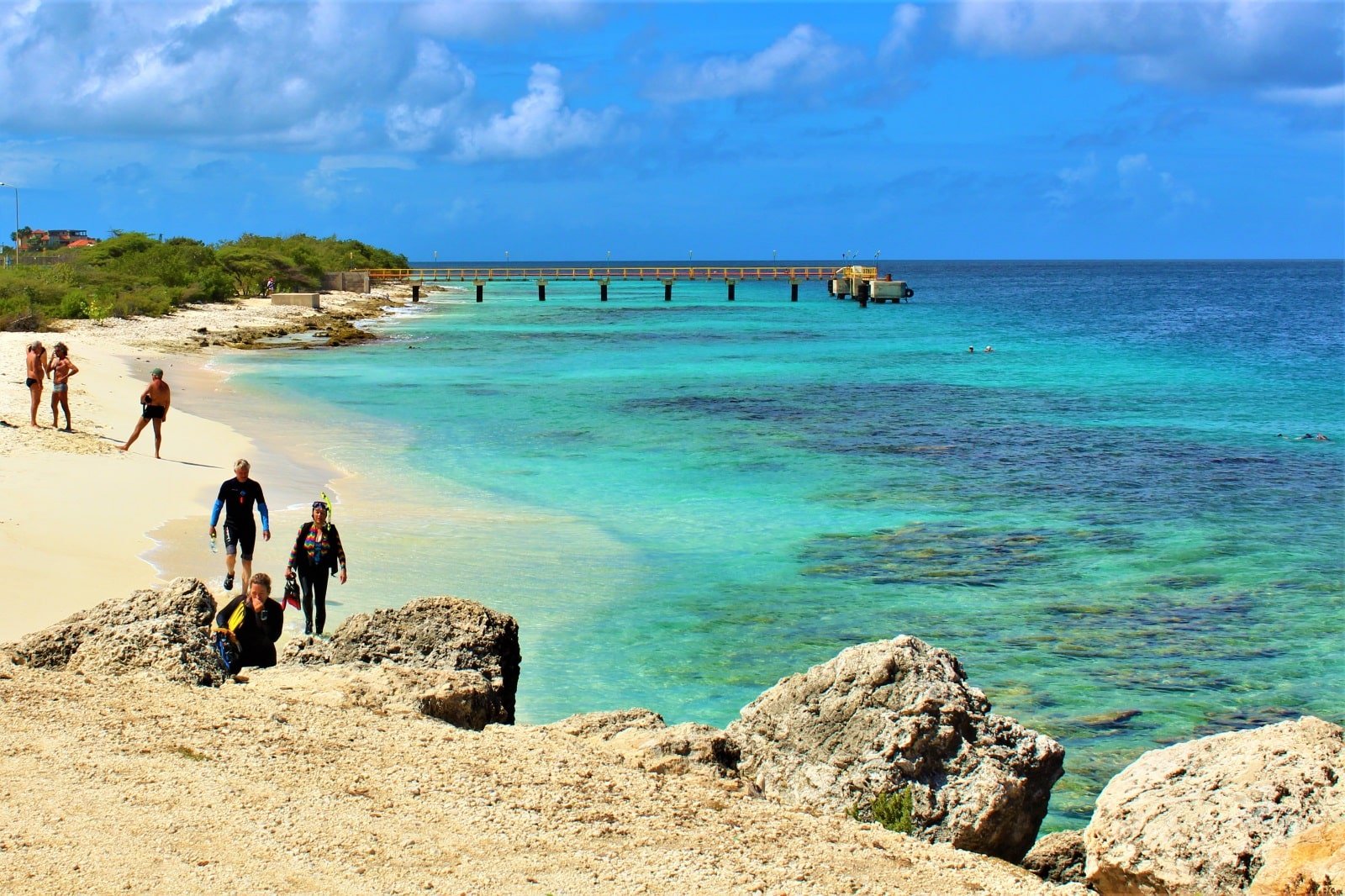
9. Bonaire, Caribbean
Bonaire, part of the Dutch Caribbean, is a pioneer in marine conservation. The island’s surrounding waters are a protected marine park, offering some of the best diving and snorkeling experiences in the Caribbean. Sustainable practices on land and sea make Bonaire a top choice for eco-friendly island travel. Visitors can enjoy activities like windsurfing, kitesurfing, and exploring the island’s unique flora and fauna.
Insider’s Tip: Try windsurfing or kitesurfing in Lac Bay, known for its ideal conditions.
When To Travel: Visit year-round, with the best diving conditions from April to October.
How To Get There: Fly to Flamingo International Airport on Bonaire from the United States, Europe, or other Caribbean islands.
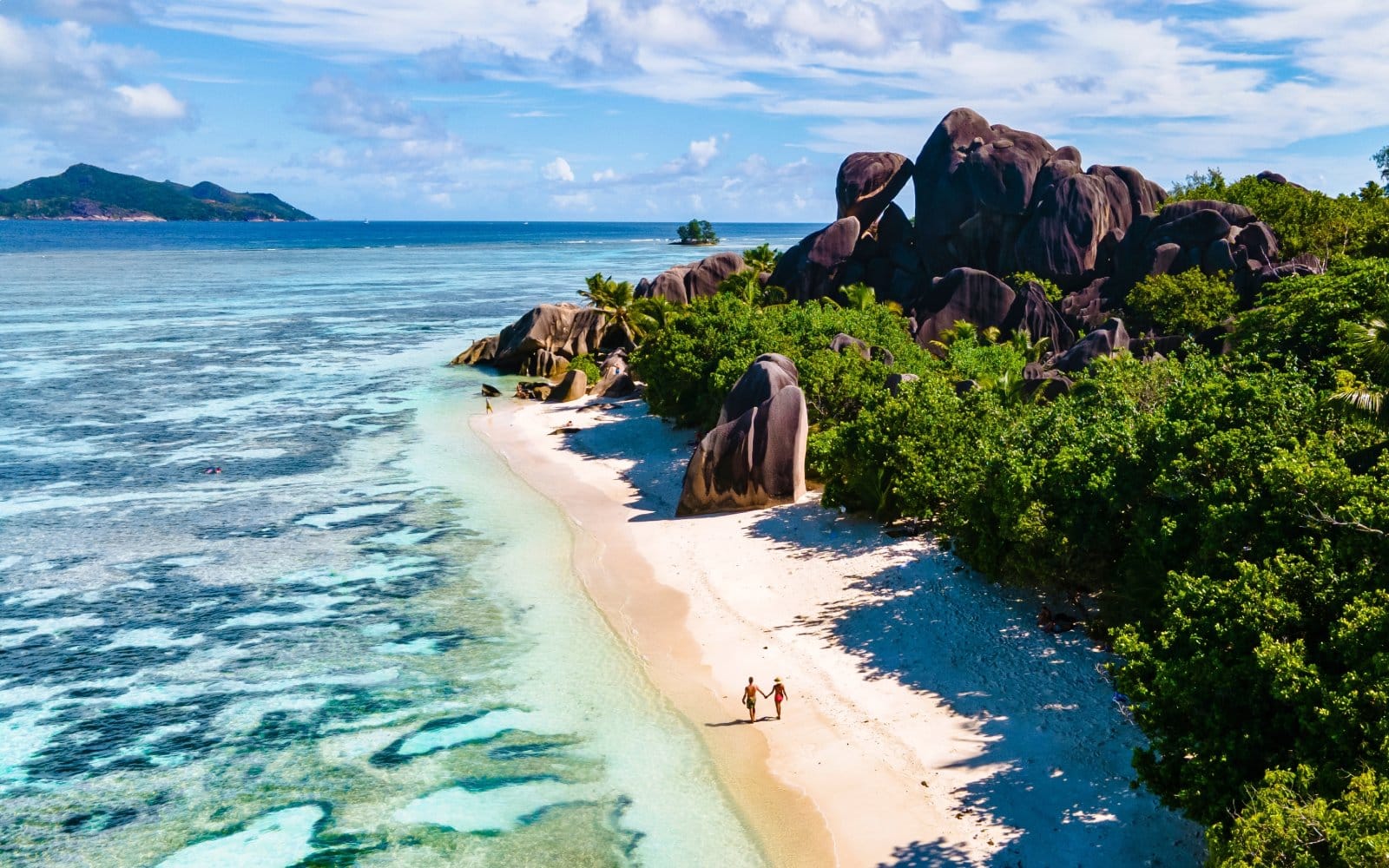
10. Seychelles
The Seychelles, an archipelago in the Indian Ocean, is a leader in environmental conservation. The islands offer stunning beaches, coral reefs, and nature reserves. Sustainable tourism practices here include eco-lodges, marine conservation projects, and guided nature tours. The Seychelles’ commitment to preserving its natural and cultural heritage makes it an ideal destination for responsible travelers.
Insider’s Tip: Visit Vallee de Mai on Praslin Island, a UNESCO World Heritage Site, to see the rare Coco de Mer palm.
When To Travel: April to May and October to November offer calm seas and pleasant weather.
How To Get There: Fly to Seychelles International Airport on Mahé Island from major international hubs.
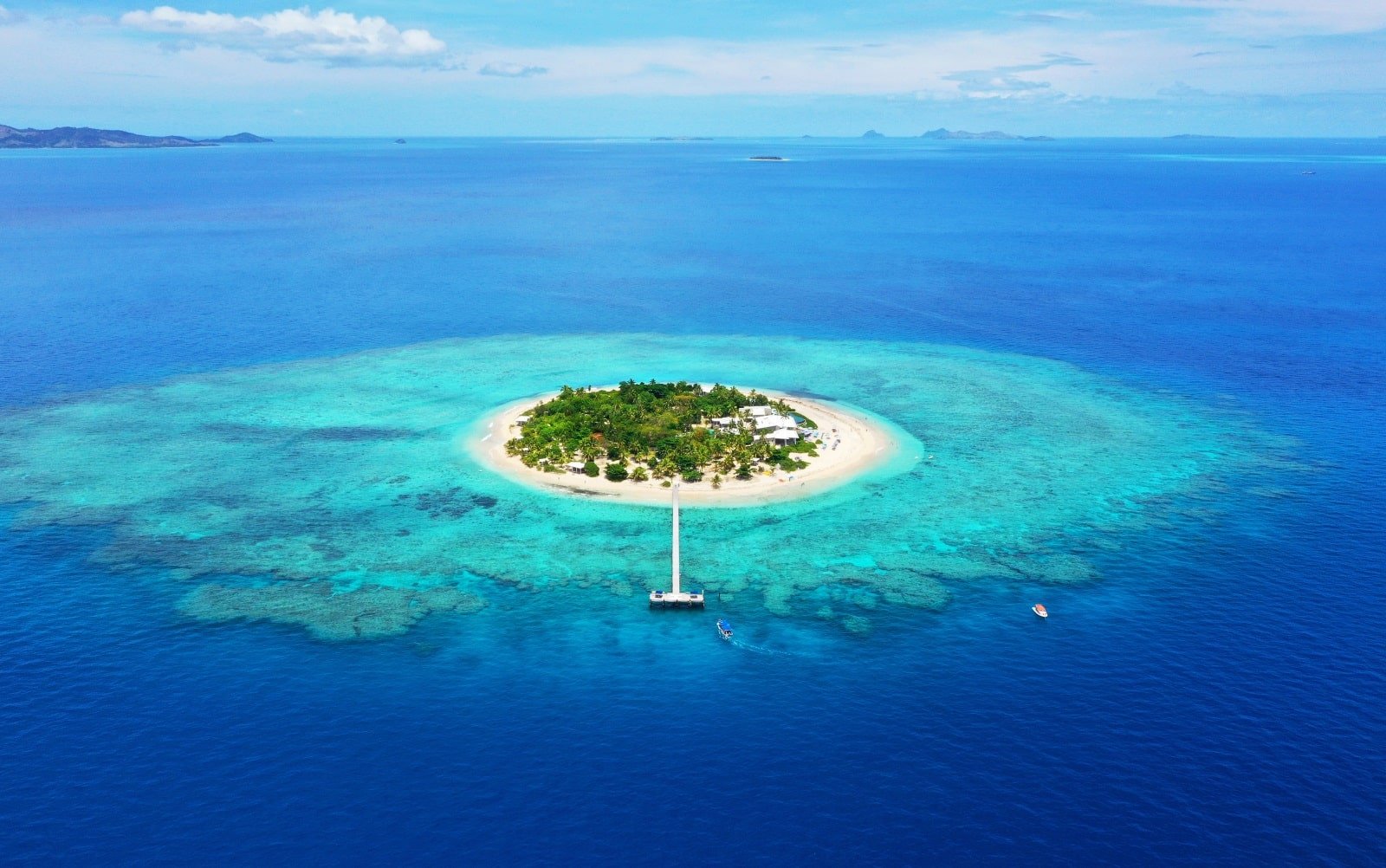
Fiji, an archipelago in the South Pacific, is renowned not just for its breathtaking coral reefs and warm hospitality but also for its dedication to sustainable tourism. The islands are a paradise for eco-conscious travelers, offering a variety of eco-friendly resorts and activities that range from diving in vibrant coral reefs to engaging in cultural tours and participating in conservation initiatives.
Fiji’s commitment to sustainable practices ensures that your visit contributes positively to the local communities and the preservation of the environment. The islands’ lush landscapes and clear waters provide the perfect setting for various activities, including kayaking, snorkeling, and exploring traditional Fijian villages. Engaging with the local community and participating in environmental conservation projects offer a deeper understanding and appreciation of Fiji’s natural beauty and cultural richness.
Insider’s Tip: Participate in a reef conservation project for a hands-on experience in marine preservation.
When To Travel: The best time to visit is during the dry season, from May to October.
How To Get There: Fly to Nadi International Airport on Fiji’s main island, Viti Levu.
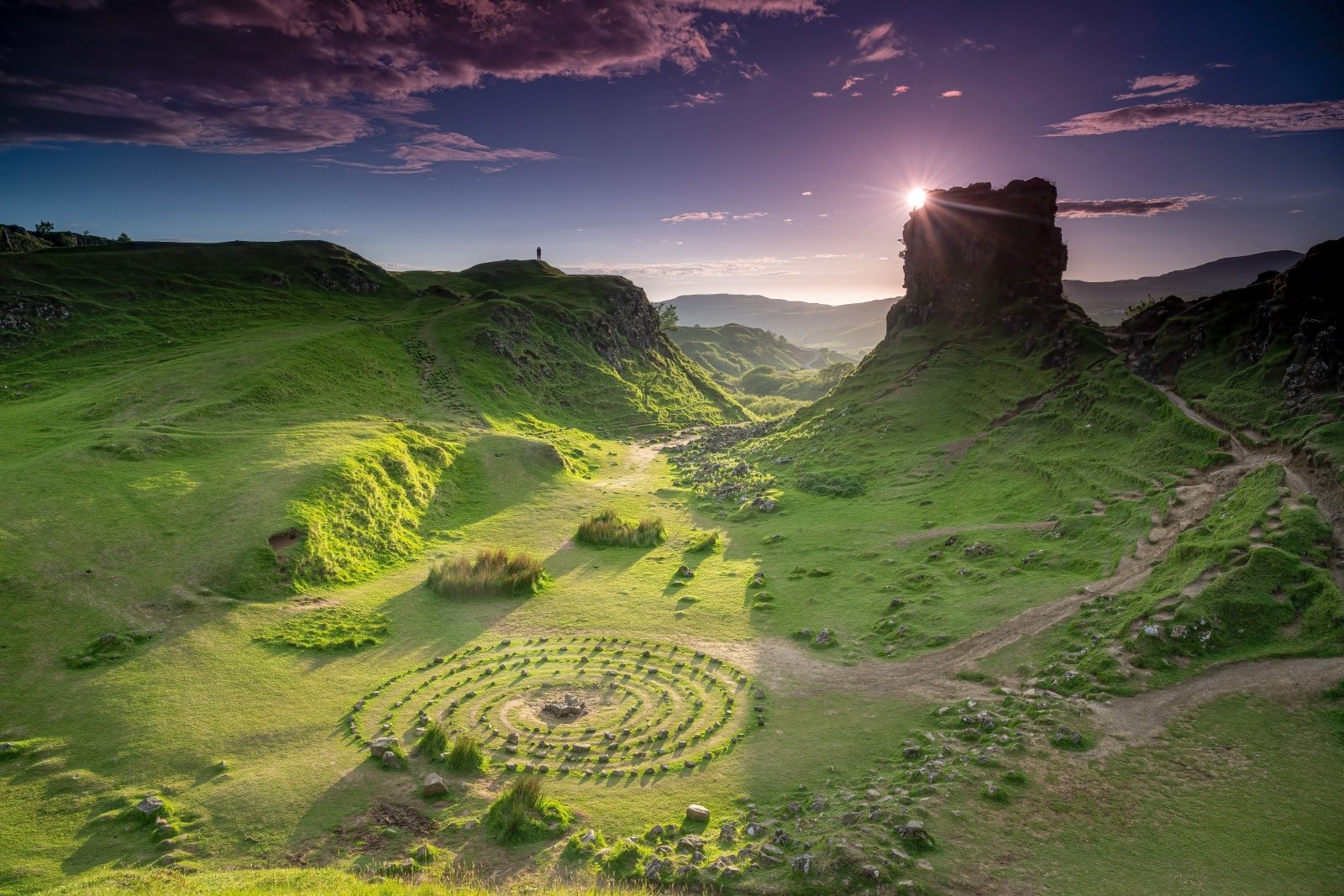
12. Isle of Skye, Scotland
The Isle of Skye, located off the west coast of Scotland, is a destination that captivates with its dramatic landscapes and rich cultural heritage. Known for its rugged coastlines, mystical mountain ranges like the Cuillins, and historical sites such as medieval castles, Skye is a haven for outdoor enthusiasts and history buffs alike. The island’s commitment to eco-friendly tourism is evident in its sustainable accommodations and practices that aim to preserve the natural environment.
Visitors can immerse themselves in the island’s beauty through activities like hiking, wildlife watching, and exploring the local folklore and traditions. The Isle of Skye’s enchanting scenery, from the famous Fairy Pools to the Old Man of Storr, offers endless opportunities for sustainable exploration and adventure.
Insider’s Tip: Visit the Fairy Pools, a series of clear, cold pools and waterfalls in the Cuillins.
When To Travel: May to September offers the best weather for outdoor activities.
How To Get There: Drive or take a bus from mainland Scotland to the Isle of Skye.
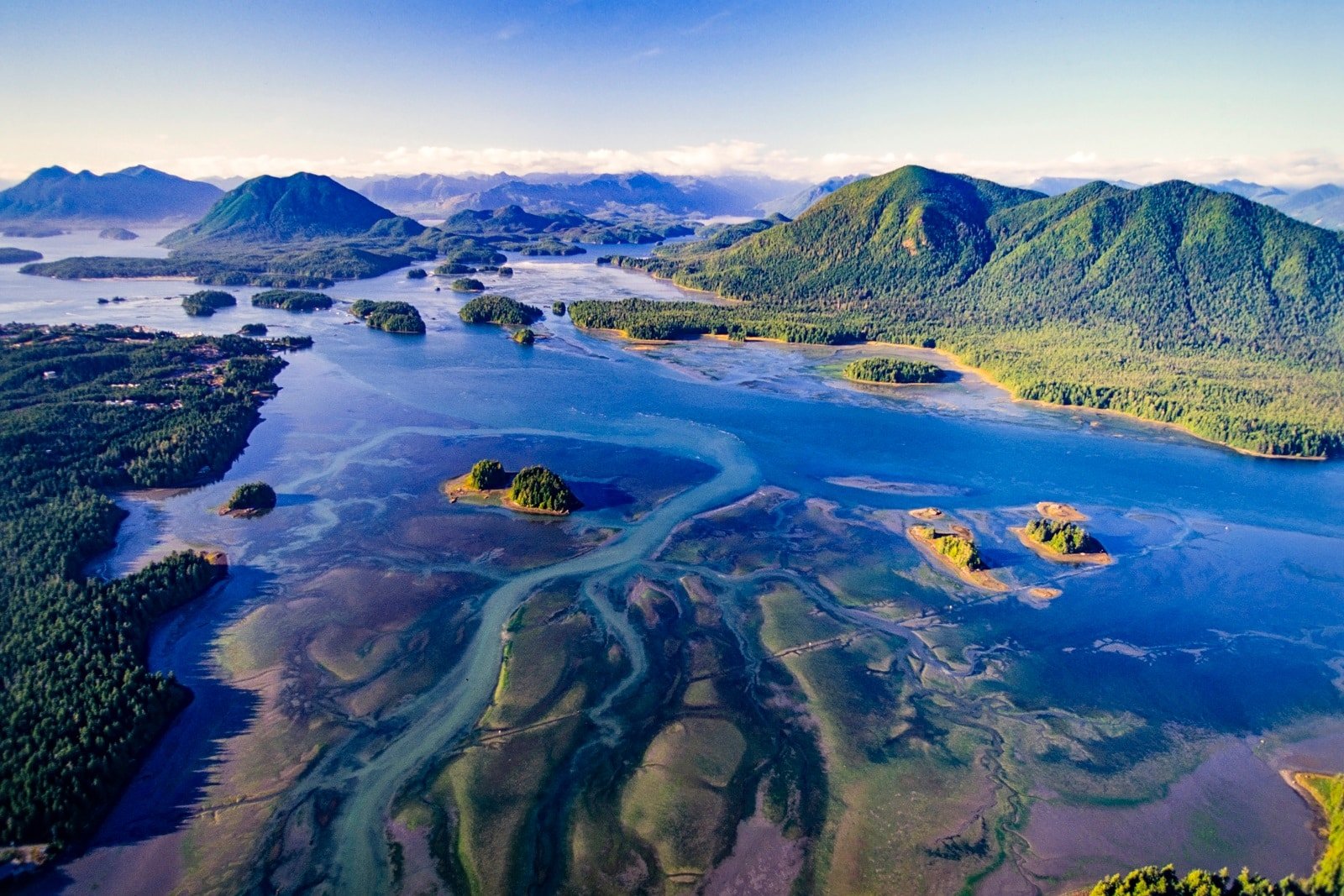
13. Vancouver Island, Canada
Vancouver Island, off Canada’s Pacific Coast, is a diverse ecosystem ranging from temperate rainforests to rugged beaches and mountainous terrain. The island is a model for sustainable tourism, offering a range of eco-friendly activities and experiences. Visitors can explore ancient forests, such as those in Cathedral Grove, go whale watching in the Pacific waters, or learn about the rich indigenous cultures of the island.
Vancouver Island’s commitment to environmental stewardship is evident in its conservation efforts and promotion of sustainable practices among local businesses and communities. The island provides a perfect blend of adventure and relaxation, with opportunities for hiking, kayaking, and enjoying the local culinary scene while focusing on ecological responsibility.
Insider’s Tip: Explore the island’s west coast for incredible wildlife viewing, including bears and whales.
When To Travel: Visit from June to September for the best weather and wildlife viewing.
How To Get There: Fly to Victoria International Airport or take a ferry from Vancouver.
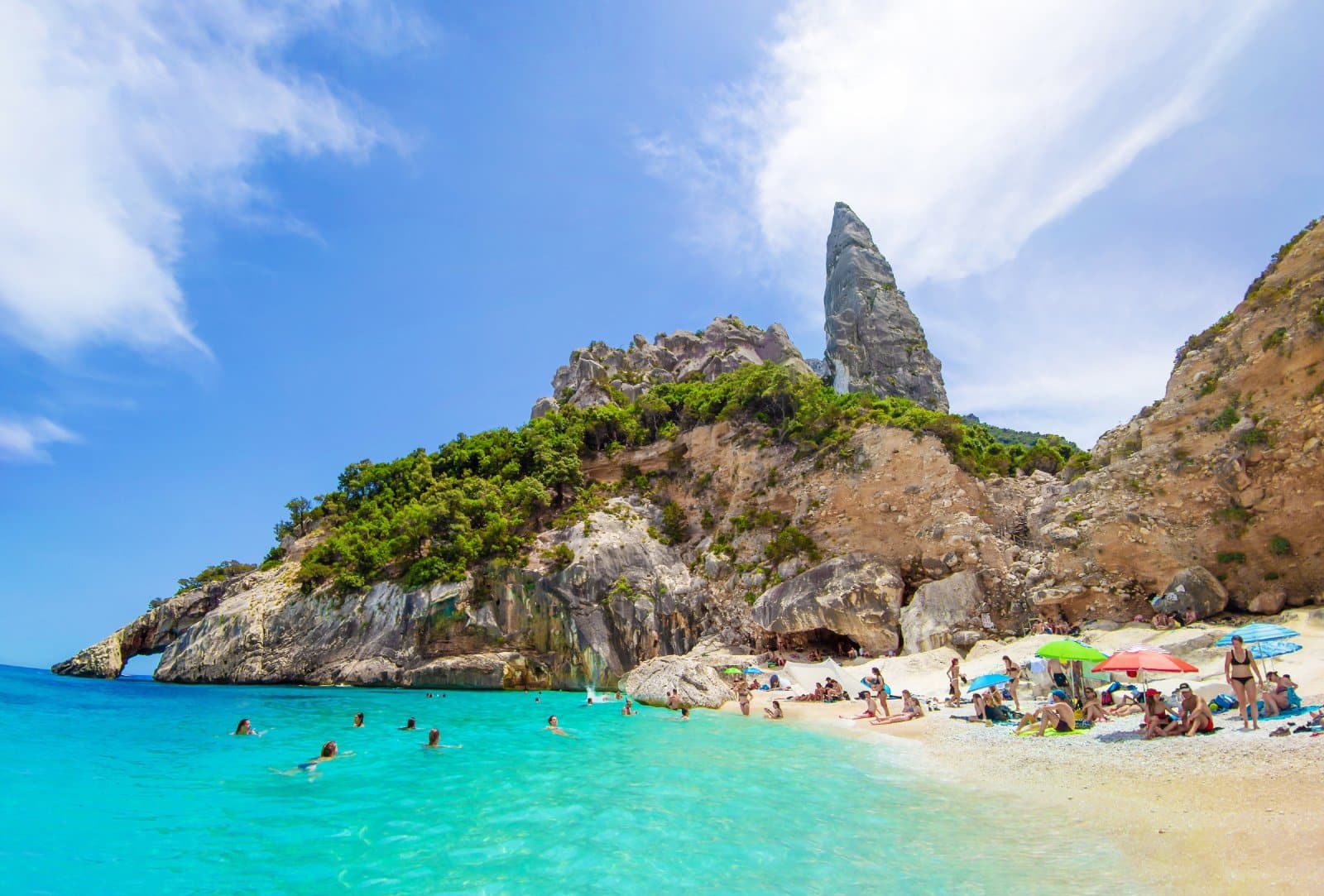
14. Sardinia, Italy
Sardinia, nestled in the Mediterranean Sea, is an island that offers more than just stunning beaches and crystal-clear waters. It is where the preservation of natural landscapes and cultural heritage is paramount. Visitors to Sardinia can enjoy sustainable agritourism, explore archaeological sites like the Nuraghe, and hike in the island’s rugged interior.
The island’s approach to tourism balances enjoyment with conservation, ensuring its beauty is maintained for future generations. Sardinia’s diverse landscape, from the Costa Smeralda to the mountainous Barbagia region, provides a range of activities for travelers, including horseback riding, wine tasting, and discovering the unique traditions and crafts of the local communities.
Insider’s Tip: Visit the Nuraghe, ancient megalithic edifices, to glimpse Sardinia’s past.
When To Travel: April to June and September to October offer pleasant weather and fewer crowds.
How To Get There: Fly to Cagliari, Olbia, or Alghero airports from major European cities.
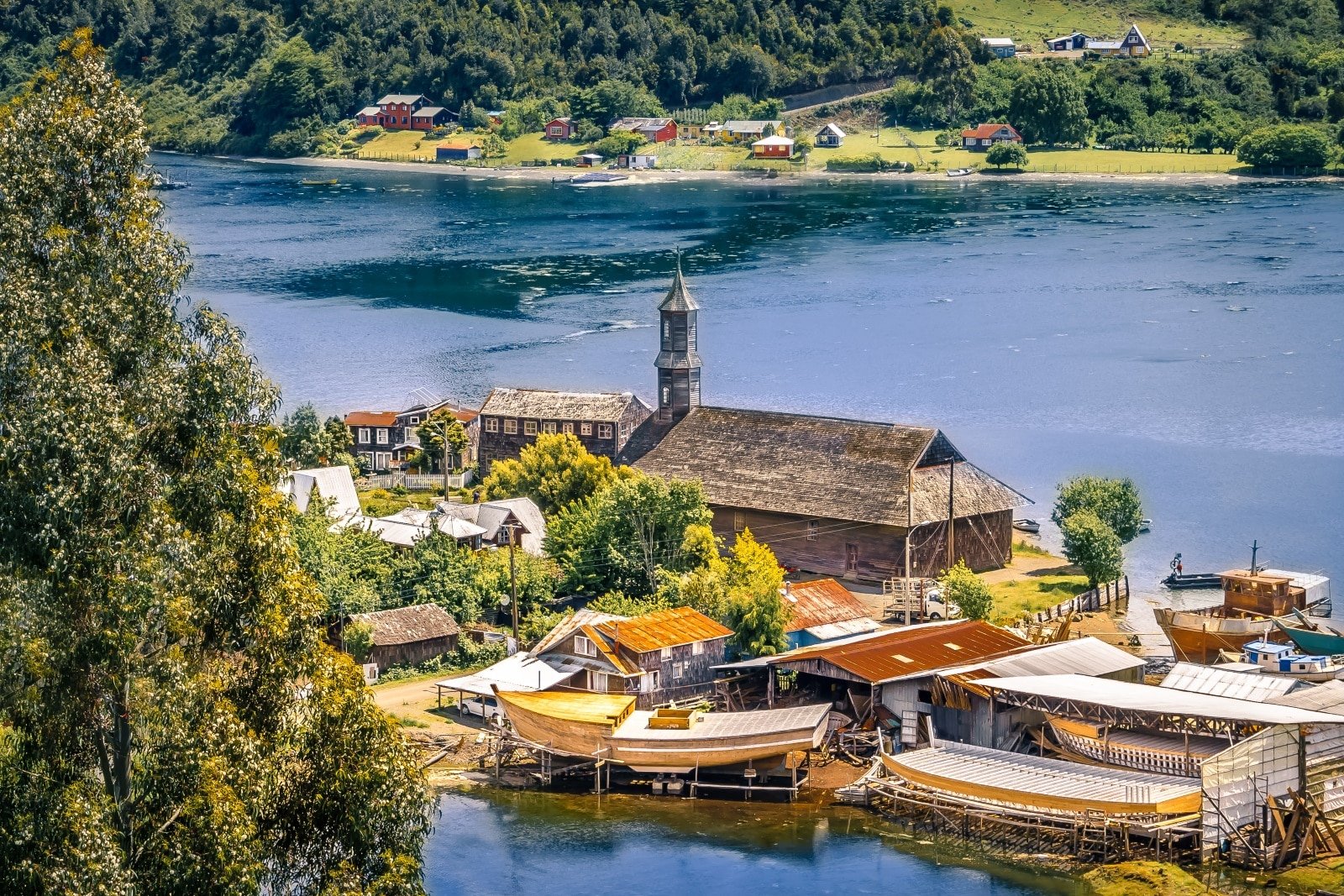
15. Chiloé Island, Chile
Chiloé Island, located in the southern region of Chile, is where myth and tradition blend seamlessly with the natural environment. Known for its distinctive wooden churches and rich folklore, Chiloé is committed to sustainable tourism practices. The island’s cultural heritage is deeply connected to its natural surroundings, offering visitors a chance to experience both.
Eco-friendly accommodations and activities such as bird watching, hiking, and exploring the island’s national parks are popular among travelers. The island’s cuisine, particularly its seafood and unique dishes like curanto, reflects its sustainable relationship with the sea and land. Chiloé’s rolling hills, dense forests, and coastal landscapes provide a tranquil setting for a sustainable and culturally enriching getaway.
Insider’s Tip: Try curanto, a traditional Chilote dish, to taste local cuisine.
When To Travel: The best time to visit is during the summer months of December to March.
How To Get There: Fly to Puerto Montt and then take a ferry to Chiloé Island.
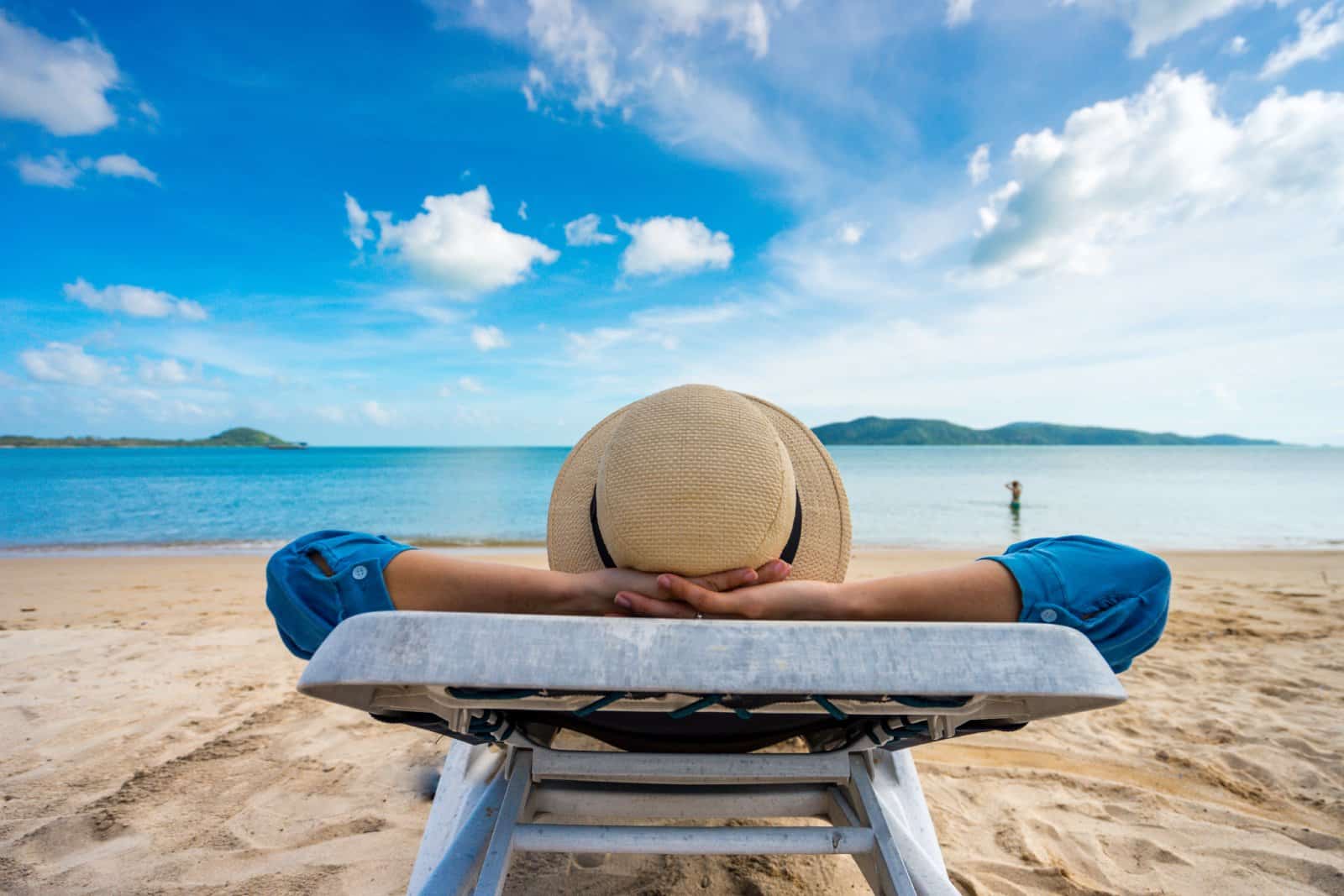
The Bottom Line
Embarking on a sustainable island getaway allows you to responsibly enjoy some of the world’s most beautiful destinations. These eco-friendly islands offer breathtaking natural beauty and a commitment to preserving their environment and culture. Whether you’re snorkeling in Fiji’s coral reefs, exploring the ancient landscapes of Sardinia, or immersing yourself in the unique culture of Chiloé, your journey will contribute to the sustainability of these incredible places. As you plan your next island adventure, remember that your choices can help preserve these paradises for future generations.
More Articles Like This…
Barcelona: Discover the Top 10 Beach Clubs
2024 Global City Travel Guide – Your Passport to the World’s Top Destination Cities
Exploring Khao Yai 2024 – A Hidden Gem of Thailand
The post 15 Eco-Islands 2024 – Sustainable Island Retreats republished on Passing Thru with permission from The Green Voyage .
Featured Image Credit: Shutterstock / Grekov’s.
For transparency, this content was partly developed with AI assistance and carefully curated by an experienced editor to be informative and ensure accuracy.
More for You
The 15 Most Unlikeable Characters in Movie History
Letitia James Response to Donald Trump Bond Rejection 'Vindictive'—Attorney
19 Easy Ways to Fall Back Asleep After Waking Up in the Middle of the Night
Common over-the-counter medicine linked to increased dementia risk
5 Issues With Their Parents That Gen Z Brings Up Most In Therapy
I’m a Mechanic: 4 Signs You’re Buying a Lemon
15 TV Show Bloopers They Left in the Scene
Former Army colonel seeking to flip North Carolina House seat says Dem opponent is 'beholden' to Biden
I was poached and then laid off 60 days later. I was embarrassed to talk about it, but doing so helped me get my next job.
Christian Bale Transforms Into Frankenstein's Monster in First Look at The Bride
They Wrote it Off as School Stress. I Hid the Truth Out of Terror
Virtual colonoscopy lets you skip the scope. Here’s what to know about the colorectal cancer screening Mark Cuban says saves time and money
24 Old Vinyl Records That Can Be Worth a Lot Today
There are major changes coming for your washers and dryers
A millennial who made $170,000 secretly working two remote jobs says it helped him pay off about $50,000 in student loans
‘What’s Up, Doc?’: 15 Trivia Tidbits About Bugs Bunny
32 Child Stars Who Became Successful Adult Actors
‘Romeo & Juliet’ play starring Tom Holland and Francesca Amewudah-Rivers faces ‘barrage of racial abuse’
People Who Had Unhappy Childhoods Usually Develop These 18 Traits
12 Used Trucks You Should Steer Clear Of At All Costs
- International
7.4 magnitude quake hits Taiwan, strongest in 25 years
By Nectar Gan , Wayne Chang , Jerome Taylor, Antoinette Radford, Deva Lee and Maureen Chowdhury , CNN
Our live coverage of the Taiwan earthquake has moved here.
Search and rescue efforts continue after 7.4 magnitude earthquake rocks Taiwan. Here's the latest
From CNN staff

Rescuers are working to free dozens trapped after a 7.4 magnitude earthquake struck the east coast of Taiwan — causing landslides and collapsed structures.
At least nine people have died , more than 900 others are injured and over 100 buildings have been damaged.
The quake is the strongest to hit Taiwan in 25 years .
Here's what else we know:
- The quake: The earthquake hit at 7:58 a.m. local time, 18 kilometers (11 miles) south of the city of Hualien at a depth of 34.8 kilometers, according to the US Geological Survey.
- Aftershocks : The quake was followed by 29 aftershocks greater than a magnitude of 4.0 near the epicenter of the earthquake in east Taiwan so far, according to the United States Geological Survey (USGS). Tremors have been felt across the island, including in Taipei. Tremors as high as magnitude 7 are expected in the following days.
- Hualien County: The region where the quake struck, Hualien County, has a population of about 300,000, around 100,000 of whom live in the main city of Hualien. But many in the region live in remote coastal or mountain communities that can be hard to reach , so it might take time to understand the extent of Wednesday's quake.
- Trapped miners: Taiwan's national fire agency said that 71 people are trapped in two mines in Hualien.
- Power cuts : More than 91,000 households were without electricity, according to Taiwan's Central Emergency Command Center.
- Medical facilities: Hospitals across Taiwan’s capital , Taipei City, are operating normally despite being damaged by Wednesday’s earthquake, according to the Municipal Government.
- US monitoring: The Biden administration is monitoring the earthquake in Taiwan overnight and is prepared to offer assistance, a National Security Council spokesperson said Wednesday.
71 miners trapped in 2 mines in Taiwan after earthquake, national fire agency says
From CNN's Shawn Deng
Taiwan's national fire agency said that 71 people are trapped in two mines in Hualien after a powerful earthquake struck the island.
In the Heping mine, there are 64 people trapped, and seven more are trapped in the Zhonghe mine, the fire agency said in a news conference on Wednesday.
Video shows man swimming in a rooftop pool when massive earthquake hit
When a magnitude of 7.4 earthquake rocked Taiwan on Wednesday, it struck during the morning commute.
Video shows highway roads shaking and even a man being heavily swayed and rocked on a rooftop pool.
Watch the moment here:
Taiwanese semiconductor facilities will resume production overnight following earthquake
Taiwan Semiconductor Manufacturing Company Limited (TSMC), the chipmaking giant, said on Wednesday that its facilities which were impacted by the 7.4 magnitude earthquake are expected to resume production overnight.
TSMC reported that their overall tool recovery is at more than 70% within 10 hours of the earthquake striking the island. Safety systems are also operating normally, TSMC added.
The company noted that a small number of tools were damaged but that there was no damage to its extreme ultraviolet lithography (EUV) tools. Work at construction sites will resume after further inspections are complete, TSMC said.
Earlier, a TSMC spokesperson told CNN they had evacuated some manufacturing plants. All personnel are now safe, TSMC said in an update.
Biden administration monitoring Taiwan earthquake, White House says
From CNN's Sam Fossum
The Biden administration is monitoring the earthquake in Taiwan overnight and is prepared to offer assistance, a National Security Council spokesperson said Wednesday.
"We are monitoring reports of the earthquake impacting Taiwan and continue to monitor its potential impact on Japan. The United States stands ready to provide any necessary assistance. All those affected are in our prayers," a statement from National Security Council spokesperson Adrienne Watson said.
7 major earthquakes have hit Taiwan over the last 50 years
The 7.4 magnitude earthquake that killed at least nine people and injured hundreds Wednesday, is the strongest to hit Taiwan in 25 years .
Over the last 50 years, the island has experienced a total of seven major earthquakes, the last being a 7.1 magnitude quake in 2006 in Pingtung County in southern Taiwan.
The island sits on the Pacific Ring of Fire , which makes it prone to earthquakes.
See a full list of the earthquakes that have hit Taiwan:
29 aftershocks above 4.0 magnitude have occurred near epicenter since earthquake, US Geological Survey says
From CNN's Sara Tonks
There have been 29 aftershocks greater than a magnitude of 4.0 near the epicenter of the earthquake in east Taiwan so far, according to the United States Geological Survey (USGS).
Of these aftershocks:
- One was above 6.0
- 13 have been at or above 5.0
- 14 have been above 4.0.
Forecast during recovery efforts: Tonight's forecast in Hualien City, near the epicenter, calls for increasing cloud coverage. Thursday is looking at mostly cloudy skies with afternoon showers and rain Thursday night and Friday during the day.
Rainfall totals should be relatively light for Taiwan, with models calling for under 25 mm (less than 1 inch) by Friday evening local time.
Watch landslide engulf road after 7.4 magnitude earthquake hits Taiwan
A dashcam camera has caught the moment a large landslide came down a mountain in Taiwan, triggered by a 7.4 magnitude earthquake on Wednesday morning.
The quake is the strongest to have rattled the island in 25 years, killing at least nine people and leaving more than 150 trapped.
Please enable JavaScript for a better experience.
Hotel details Modal
Are you a LOTTE HOTEL REWARDS member? Log in and the information on My Page will be automatically entered. Go to the restaurant reservation page after login?
This service requires login. You must log in to use this service. Become a member to use a variety of services with ease. Log in?
Social media login
Find Rewards Membership Number and ID
Search Password
Link account
Are you a lotte hotel rewards member, age of children.
- LOTTE HOTELS & RESORTS Child
- LOTTE HOTELS & RESORTS KOREA (SIGNIEL/LOTTE HOTEL/L7/LOTTE City Hotel) Child 4-12 years old
- LOTTE HOTELS & RESORTS LOTTE HOTEL WORLD Child 0-12 years old
- LOTTE HOTELS & RESORTS LOTTE HOTEL GUAM Child 5-11 years old
- LOTTE HOTELS & RESORTS LOTTE HOTEL MOSCOW Child 6-12 years old
- LOTTE HOTELS & RESORTS LOTTE HOTEL ST.PETERSBURG Child 7-12 years old
- LOTTE HOTELS & RESORTS LOTTE HOTEL VLADIVOSTOK Child 0-6 years old
- LOTTE HOTELS & RESORTS LOTTE ARAI RESORT Child 4-12 years old
- LOTTE HOTELS & RESORTS LOTTE HOTEL SAIGON Child 5-11 years old
- LOTTE HOTELS & RESORTS LOTTE HOTEL HANOI Child 6-11 years old
- LOTTE HOTELS & RESORTS LOTTE HOTEL YANGON Child 6-11 years old
- LOTTE HOTELS & RESORTS L7 WEST LAKE HANOI Child 6-11 years old
You must agree to the use of the authority to use the service.
Manage Cookies
Required Cookies
Required for website functionality and online services.
Membership card

Room 1 Adults 1 Children 0
- L7 HAEUNDAE
- Room 1 Adults *13 years old and over Children *2 to 12 years old
- Room 2 Delete room Adults *13 years old and over Children *2 to 12 years old
- Room 3 Delete room Adults *13 years old and over Children *2 to 12 years old
Log in to add to Favorites. Would you like to log in?
Please enter promotional code.
영문, 숫자만 입력 가능합니다. (특수기호, 공백 사용 불가)
프로모션 코드가 일치하지 않습니다. 코드를 확인해주세요.
프로모션 코드가 등록되었습니다.
Select currency
The exchange rate is the official exchange rate and may differ from the actual hotel rate.

About LOTTE City Hotel Mapo
LOTTE City Hotel Mapo is a room-specific premium business hotel for both business travelers and tourists staying in Seoul. It has an advantage of using very convenient public transportations including an airport railroad and subway, and has an easy access to downtown Seoul and tourist attractions within the city.
Local weather

Location : 109, Mapo-daero, Mapo-gu, Seoul, Korea
Check-in 15:00
Check-out 12:00
Rooms : 284
Contact No. : +82-2-6009-1000 Make a Call
Room Reservations : +82-2-771-1004 Make a Call
Fax : +82-2-6009-1004
Facilities : Meeting Room, Restaurants, Pool, Fitness, Business Center

Bed type Double
Occupancy 2 persons
Size 24.8~26.5 ㎡

Bed type Double / Twin
Size 31.4 ㎡

Occupancy Double(2 persons) / Twin(4 persons)
Size 56.2 ㎡
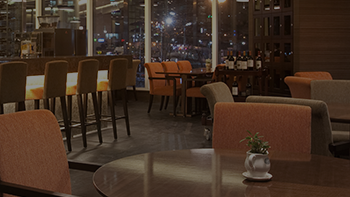
Area Attractions
LOTTE HOTEL REWARDS Benefits

LOTTE City Hotel Mapo is a room-specific premium business hotel for both business travelers and tourists staying in Seoul. It has the advantage of using convenient public transportations including an airport railroad and subway and has easy access to downtown Seoul and tourist attractions such as Bukchon Hanok Village, Insa-dong, Dongdaemun Market, and Changdeokgung Palace. In particular, LOTTE City Hotel Mapo is a 10-minute drive from the financial and business district Yeouido, and Seoul Station. It is also close to Sinchon, the street of youth, surrounded by Seoul`s major universities such as Yonsei, Sogang, Ewha, and Hongik University. LOTTE City Hotel Mapo helps you rest at leisure and drive successful business, with our differentiated services and newest facilities including business conference/meeting rooms, fitness center, and indoor swimming pool. Find more about exclusive hotel packages, room promotion and hotel events at LOTTE City Hotel Mapo.
- Share full article
Advertisement
Supported by
The Winners of Our ‘How To’ Contest
Over 2,200 teenagers submitted essays on how to do everything from fix a toilet to fight a kangaroo. We’ll be publishing the work of the winners all week.

By The Learning Network
Almost from the time our new “ How To” Informational Writing Contest for Teenagers went live in January, we knew it would be a success.
First there was the creative range of topics. As submissions rolled in — 2,223 by the deadline — we were happy to see students take on a variety of key emotional, intellectual and physical skills, including how to win an argument, fix a toilet, cope with anxiety, remember names and trip gracefully.
But we were even more delighted to be introduced to a few offbeat skills we hadn’t previously realized were crucial, like how to do the worm, snowball-attack your sister, fight a kangaroo and “talk to your crush without sounding like a talking potato.”
Our participants had fun. We know that because in their accompanying process statements they told us so. They liked coming up with topic ideas, and writing something for school in a format they’d never seen before. They even enjoyed finding and interviewing experts — a contest requirement that had seemed daunting at first to many, but turned out to be one of the most rewarding steps.
We hope you’ll enjoy the results as much as we have. We’ll be publishing the work of the top 11 winners all week, and we’ll add links here when we do.
In alphabetical order by the writer’s first name
“ How to Befriend an Introvert ” : Ashley Zhang, 14, Collingwood School, West Vancouver, British Columbia
“ How to Do the Worm ” : Camille Gonzales, 18, Kinder High School for the Performing and Visual Arts, Houston
“ How to Find Your Balance ” : Chelsea Hu, 18, Phillips Academy, Andover, Mass.
“How to Make Bubble Tea” : Hanyi Zhou, 14, Chinese International School, Hong Kong
“How to Make the Perfect Sandwich” : Jackson DeNichilo, 15, Fallston High School, Fallston, Md.
“How to Wrap a Dumpling” : Jacob Wang, 16, Charterhouse School, Godalming, England
“How to Conduct a Podcast Interview” : Matthew Jeong, 17, Kinder High School for the Performing and Visual Arts, Houston
“How to Be a Kid Forever” : Raniya Chowdhury, 17, John Fraser Secondary School, Mississauga, Ontario
“How to Become Friends With a Wild Bird” : Shannon Hong, 16, Herricks High School, New Hyde Park, N.Y.
“How to Host Unexpected Guests” : Sofia Fontenot, 18, Kinder High School for the Performing and Visual Arts, Houston
“How to Make Fear Your Friend” : Zoe Brown, 14, Summit High School, Bend, Ore.
“How to Recover After Yet Another Disappointing Season by Your Favorite N.F.L. Team” : Alden Comes, 13, Briarcliff Middle School, Mountain Lakes, N.J.
“How to Tell the Ugly Truth” : Alex (Hayoung) Jung, 16, Seoul Foreign School, Seoul
“How to Remember Names” : Anahita Driver, 13, Gregory Middle School, Naperville, Ill.
“How to Find Gratitude in Everyday Life” : Andrew Coraggio, 16, Arrowhead Union High School, Hartland, Wis.
“How to Antique Shop” : Callisto Lim, 17, Kinder High School for the Performing and Visual Arts, Houston
“How to Build an Optimal Environment for Your Fish” : Chasity Rolon, 16, Deer Park High School, New York, N.Y.
“How to Snowball Attack Your Sister” : Harper Mooney, 14, Marblehead High School, Marblehead, Mass.
“How to Achieve Inner Peace by Washing Your Dishes” : Jackson Cooke, 18, Briarwood Christian High School, Birmingham, Ala.
“How to Spot Counterfeit Currency” : Kaylie Milton, 17, West High School, Iowa City, Iowa
“How to Pee On a Hike” : Lauren Acker, 17, Lakeside High School, DeKalb County, Ga.
“How to Mimic an Accent” : Michael Noh, 14, Korea International School Pangyo Campus, Seongnam, South Korea
“How to Speak Like a British Person” : Owen Wilde, 16, Maynard High School, Maynard, Mass.
“How to Ask a Teacher for Help” : Sarah Harris, 15, Boothbay Region High School, Boothbay Harbor, Maine
“How to Spin Pens” : Siddharth S., 16, Peepal Prodigy School Coimbatore, Tamil Nadu, India
“How to Make Kids Excited About History” : Vivian Wenan Chang, 17, BASIS Chandler, Chandler, Ariz.
“How to Ride a Roller Coaster Without Fear” : Wang Ziyun, 16, Raffles Girls’ School, Singapore
“How to Make a Three-Point Shot” : Will Peña, 17, Academy at the Lakes, Land O’ Lakes, Fla.
“How to Play Darts” : Xizhe Yang, 15, Shanghai High School International Division, Shanghai
Honorable Mentions
“How to Survive Middle School Hallways” : Alice Liang, 13, Islander Middle School, Mercer Island, Wash.
“How to Learn a New Language” : Andrew Chen, 14, International School of Beijing, Beijing
“How to Let Go of Someone” : Ariel Ting, 16, Taipei American School, Taipei, Taiwan
“How to Cope With Your Anxiety” : Ava Cho, 18, Daegu International School, Daegu, South Korea
“How to Live Openly As a Lesbian” : Ayco Phlypo, 17, Atheneum Gentbrugge, Ghent, Belgium
“How to Make Homemade Pasta” : Bella DiBernardo, 16, Alta Vista Middle College, Santa Barbara, Calif.
“How to Prepare for Running a Marathon” : Brett Barker, 17, Arrowhead Union High School, Hartland, Wis.
“Keep the Sandman at Bay” : Bryant, 18, Bandung Independent School, Bandung, Indonesia
“How to Fix a Toilet!” : Carla Lopez, 16, Jose Marti STEM Academy, Union City, N.J.
“How to Order at a Specialty Coffee Shop” : Cassandra Garcia, 16, home school, Portland, Texas
“How to Trip Gracefully” : Eileen Kim, 15, Urbana High School, Ijamsville, Md.
“How to Drive Your Siblings Mad” : Elaine Kim, 15, West Ranch High School, Stevenson Ranch, Calif.
“Being Objective” : James Yi, 17, Orange County School of the Arts, Santa Ana, Calif.
“How to Accept Failure” : Jamie Park, 16, Yongsan International School of Seoul, Seoul
“How to Cope With a Panic Attack” : Jason Kim, 15, Georgetown Preparatory School, North Bethesda, Md.
“How to Escape a Night Market” : Joyce Chang, 16, Stella Matutina Girls’ High School, Taichung City, Taiwan
“How to Overcome Assault: A Survivor’s Guide on Trauma-Related Shame” : Juliana Segal, 17, The Montessori School of Raleigh Upper School, Raleigh, N.C.
“How to Play Out of Tune On the Flute” : Kavya Muralidhar, 13, Islander Middle School, Mercer Island, Wash.
“How to Write a Poem” : Lareina Yuan, 14, YK Pao School, Shanghai
“How to Make Tanghulu” : Lehan Gu, 15, Northwood High School, Irvine, Calif.
“How to Be When Meeting New People” : MaryEden Rall, 13, Montgomery Catholic Preparatory School, Montgomery, Ala.
“How to Make the Perfect Playlist” : Rachel Wieland, 17, Arrowhead Union High School, Hartland, Wis.
“How to Talk to Your Crush Without Sounding Like a Talking Potato” : Roxanne Wu, 16, International School of Beijing, Beijing
“How to Help a Child With Autism” : Sarah Zeng, 15, Victoria Park Collegiate Institute, Toronto
“How to Deal With Nerves” : Sasha Luhur, 14, Northwood School, Lake Placid, N.Y.
“How to Watch Clouds” : Shio Kim, 14, North London Collegiate School Jeju, Seogwipo, South Korea
“How to Discuss Controversial Issues With Parents” : Siyao Feng, 18, Linden Hall School for Girls, Lititz, Pa.
“How to Write a Song” : Sophia Kim, 15, Chadwick International School, Incheon, South Korea
“How to Write a Song” : Stephanie Ma, 16, The Webb Schools, Claremont, Calif.
“How to Be a Good Dukjil-er” : Suevean (Evelyn) Chin, Asia Pacific International School, Seoul
“How to Win an Argument” : Suri Boryang Kim, PTGMS, South Korea
“How to Tie a Shoe” : Vivian Olivera, 17, Academy at the Lakes, Land O’ Lakes, Fla.
“Grilling Pork Belly For the Best Flavor” : Yoonseo Cho, 17, Portola High School, Irvine, Calif.
Thank you to our contest judges.
Ana Paola Wong, Annissa Hambouz, Caroline Gilpin, Dana Davis, Elisa Zonana, Isaac Aronow, Jeremy Engle, Jeremy Hyler, John Otis, Juliette Seive, Katherine Schulten, Kathryn Curto, Ken Paul, Kimberly Wiedmeyer, Kirsten Akens, Michael Gonchar, Natalie Proulx, Phoebe Lett, Shannon Doyne, Sharon Murchie, Shira Katz, Sue Mermelstein, Susan Josephs, Sydney Stein

IMAGES
VIDEO
COMMENTS
About Jeju City. Jeju City has 2 main areas, Shin (new) Jeju and Gu (old) Jeju. There are also several smaller areas within these two main areas, plus a few satellite towns a short drive away. The city is by far the most popular part of the island, with 492,397 of the island's 676,489 population living on the northern part of the island, many ...
Jeju Travel Sharing. Meet Jeju with video @VisitjejuGlobal. Your personalized travel sharing platform @Visitjeju.en. Jeju Tourist Information Center 064)740-6000. ... Jeju Welcome Center, 23 Seondeok-ro, Jeju City, Jeju Special Self-Governing Province 63122, Republic of Korea Tourist inquiries: Jeju Tourism Organization Tel : 064-740-6000~1 FAX ...
Halla Arboretum is located to the south of Jeju City, and is a great option to walk through a forest and explore its many garden areas. Halla Arboretum has over 100,000 plants on display, including over 1,000 rare species. Major displays include a glasshouse and orchid exhibition. Plan 1-2 hours to explore.
The scene along the coast is particularly gorgeous from April to June. For your initial arrival, Jeju airport limousine bus 800 and 800-1 will take you from the airport to Seogwipo the most directly, with buses every 15 minutes between 6am-10pm daily. Most of the bus routes stop running just before 10pm.
Inter-city buses and the Airport Limousine (inter-city bus #600) travel frequently between Seogwipo on the south side of Jeju for ₩3000 or as low as ₩1000 from nearby rural townships. Intercity buses will terminate at the Bus Terminal, but all arriving via the west side of the island will pass by the stop outside Halla Medical Center.
Jeju City is where the airport is located and hotels are about a 10-minute drive away. If you plan to take any day tours, most of them depart from the airport or are pick-up only at Jeju City hotels; another reason to stay in this area. ... Heather is a full-time travel coach who is passionate about helping professionals seeking more freedom ...
Jeju Tourism Jeju Hotels Jeju Bed and Breakfast Jeju Vacation Rentals Flights to Jeju Jeju Restaurants Things to Do in Jeju Jeju Travel Forum Jeju Photos Jeju Map. ... Ramada Jeju City Hall. 604. from $52/night. Best Western Jeju Hotel. 614. from $62/night. 2023. Grand Hyatt Jeju. 1,779. Hotel Leo. 255. from $58/night. 2023. Lotte City Hotels ...
Jeju Itinerary Day Three: The Natural Highlights of Jeju. Tiki figures are scattered across the island. Day three of this Jeju itinerary focuses on the incredible natural phenomena that the island offers. From majestic waterfalls to magnificent rock formations, prepare to have your breath taken away at every turn.
Top 5 Reasons to Visit Jeju City. 1. The Beaches. Nicknamed the "Hawaii of Korea", Jeju is popular thanks to its tranquil lush vegetation, crystal clear waters, and stunning white sand beaches. Iho Tewoo Beach is just a short hop from downtown, but the most beautiful beaches can be found near Hallim Park on the north coast of the island.
Jeju Travel Tips: There are variety of unique shows available in Jeju city. Take a look below if you are interested. Jeju Nanta Show: The Korea's longest running kitchen-based show performance - BEST Seller! The Painters Show: The World's First and Only! The Best-selling Show for Audiences for the three consecutive years.
Jeju International Airport is located in the island's largest city, Jeju City, and there are cheap flights to the island from the major metropolitan areas in South Korea.. ⇒ Flights Seoul to Jeju. If you're travelling from Seoul or Busan, it's possible to take a ferry to Jeju island. Although, flights are a better option because a two-way ferry ticket can cost you around $100 USD and ...
Take a taxi - if you're staying in Jeju City, it's only a 10-minute ride away. You can take one for around $7 to $8 dollars. A taxi ride to the south will be $30 to $40 USD and take around 45 minutes. Take a bus - The cheaper option would be to take the airport limousine bus #600 from the airport.
JEJU ITINERARY DAY 1: Jeju City Tour. Take it easy for the first day around Jeju city. To get around the city, we bought the one-day pass for the Jeju city cyclic route, also known as the Jeju city hop on hop off bus. The one-day pass costs KRW 12,000 per person, and the bus plies popular spots in Jeju city.
Afterwards, leave the mainland and fly to Jeju Island. Enjoy the crystal blue waters and island culture. view trip ⤍. 11 days / from2400 USD. Highlights of Korea. From the skyscrapers of Seoul to traditional villages - this itinerary packs culture, history and cuisine in one compact itinerary.
Read also: Seoul Food Guide — 15 Korean Food and the Best Places to Try It 5) Visit Jeju's Most Unique Waterfall — Jeongbang Waterfall . Photo credit: @viajesng via Instagram. One of Jeju's most iconic waterfalls, Jeongbang stands at 23m high and is the only waterfall in Korea where its water flows directly into the sea. The path down is a short 5-10 mins walk from the carpark — not ...
Insider travel tips: - Arrive early to beat the crowds and have the waterfall all to yourself for a bit. 12. Jeju Stone Park. Jeju Stone Park. pic by mariej55quebec. cc0 1.0. Jeju Stone Park is an outdoor museum in Jeju City that showcases the unique volcanic stone formations found on Jeju Island.
Note that the jjimjilbang (sleeping area) is open 24 hours, and costs an extra ₩10000 to stay in. Jeju Trick Eye Museum (트릭아이미술관) /// ₩7000-9000 entrance /// 9am-6pm. One of my favorite things to bring visitors to, the Trick Eye Museum is one of the best winter activities in Jeju.
Explore Jeju City. Jeju city itself has loads to keep you entertained! Besides driving, one of the more convenient ways to get around is the Jeju City Bus. The hop-on-hop-off bus tours the city in a scenic two-hour drive, stopping at attractions like Dongmun Traditional Market (동문재래시장) and Sanjideungdae Lighthouse (산지등대).
Free free to click on each section to read on my Jeju travel blog below. Getting There. Where To Stay. 6 Days Jeju Road Trip Itinerary. Day 1: Jeju City Exploration. Day 2: Jeju West Coastline. Day 3: Jeju South Coastline (Seongwipo) Day 4: Jeju East Coastline. Day 5: Hike Up To Mt Hallasan.
For example, getting from Aewol to Seogwipo takes at least an hour even by car. Day 1-4: 3 nights in Aewol and exploring the northwest region (Aewol, Hallim, Biyangdo) - see my guide to Northwest Jeju. Day 4-7: 3 nights in Seogwipo exploring the south coast up to Seongsan Ilchulbong in the east - see my guide to Southwest Jeju.
1 country, 3 cities. SeoulBusanJeju City. 12 days. Private tour template. Explore. $ USD. En. Plan your fully custom Jeju City travel itinerary of any complexity and duration with Triptile™, a free online trip planner.
Here's a 4-day Jeju itinerary to help you make the most of a 4-day trip: Day 1: Exploring Jeju City. Things to do: The first thing to know before starting your trip is how to get around the island. Thankfully, Jeju Island features a well-developed public bus system complete with tourist-friendly options.
26, Gwandeok-Ro, Jeju City, Jeju. S$57. per night. 1 May - 2 May. Stay at this 3-star hotel in Jeju City. Enjoy free WiFi, free parking, and a 24-hour front desk. Popular attractions Dongmun Market and Tapdong Beach Plaza are ... 8/10 Very Good! (1,001 reviews) "Loved the location of the property.
Kona Village, a Rosewood Resort - Hawaii, USA. The Fifth Avenue Hotel - New York, USA. Ambiente Sedona - Sedona, Arizona, USA. Four Seasons Resort Tamarindo - Jalisco, Mexico. ULUM Moab ...
Jeju Island, off the southern coast of South Korea, is known for its natural beauty and commitment to sustainability. ... 2024 Global City Travel Guide - Your Passport to the World's Top ...
Dignitaries, such as Prime Minister Han Duck-soo and Jeju Gov. Oh Young-hun, spoke during the 76th anniversary ceremony held at the Jeju 4.3 Peace Park near Jeju City to memorialize the 30,000 ...
The 7.4 magnitude earthquake that killed at least nine people and injured hundreds Wednesday, is the strongest to hit Taiwan in 25 years. Over the last 50 years, the island has experienced a total ...
From 128,000 KRW. Make Reservation. With Breakfast Coupon available. Package includes. All room types. + Breakfast for 2 people at Naru. + 1,000 LOTTE HOTEL REWARDS Points (USD 10 value) ※ Additional LOTTE HOTEL REWARDS Points accumulate per night. ※ Free access to fitness center for 2 people per room.
Winners. In alphabetical order by the writer's first name. " How to Befriend an Introvert ": Ashley Zhang, 14, Collingwood School, West Vancouver, British Columbia. " How to Do the Worm ...